- Sample sizes
- Well-being
- Anxiety
- Depression
- Stress
- Loneliness
- Child Externalizing
- Child Internalizing
- Work benefits
- Income
- Sick Leave
- Employment
- Unemployed
- Lost employment
- Among unemployed
- Have access to free food
- Lost free lunch for child(ren)
- Childcare
- Plans for next month
- Same as right now
- Different arrangement
- Same as during pandemic
- Don’t know
- Lost type of childcare
- Type of care for the next month
- Center-based
- Care by relatives
- Professional (non-centerbased)
Racial inequality begins in early childhood
Responses ARE NOT WEIGHTED by race.
Rural communities are defined as zipcodes with density smaller than 500 people per square mile. Urban areas are zipcodes with density greater than 1000 people per square mile. Zipcodes between these two extremes are omitted.
Sample sizes
| Comparison | Group 1 | Group 2 |
|---|---|---|
| 1 | Black | White |
| 771 | 6541 | |
| 2 | Black + LatinX | White |
| 2186 | 5797 | |
| 3 | POC (minus Asian) | White |
| 2554 | 5797 | |
| 4 | POC | White |
| 2875 | 5797 |
Well-being
Anxiety
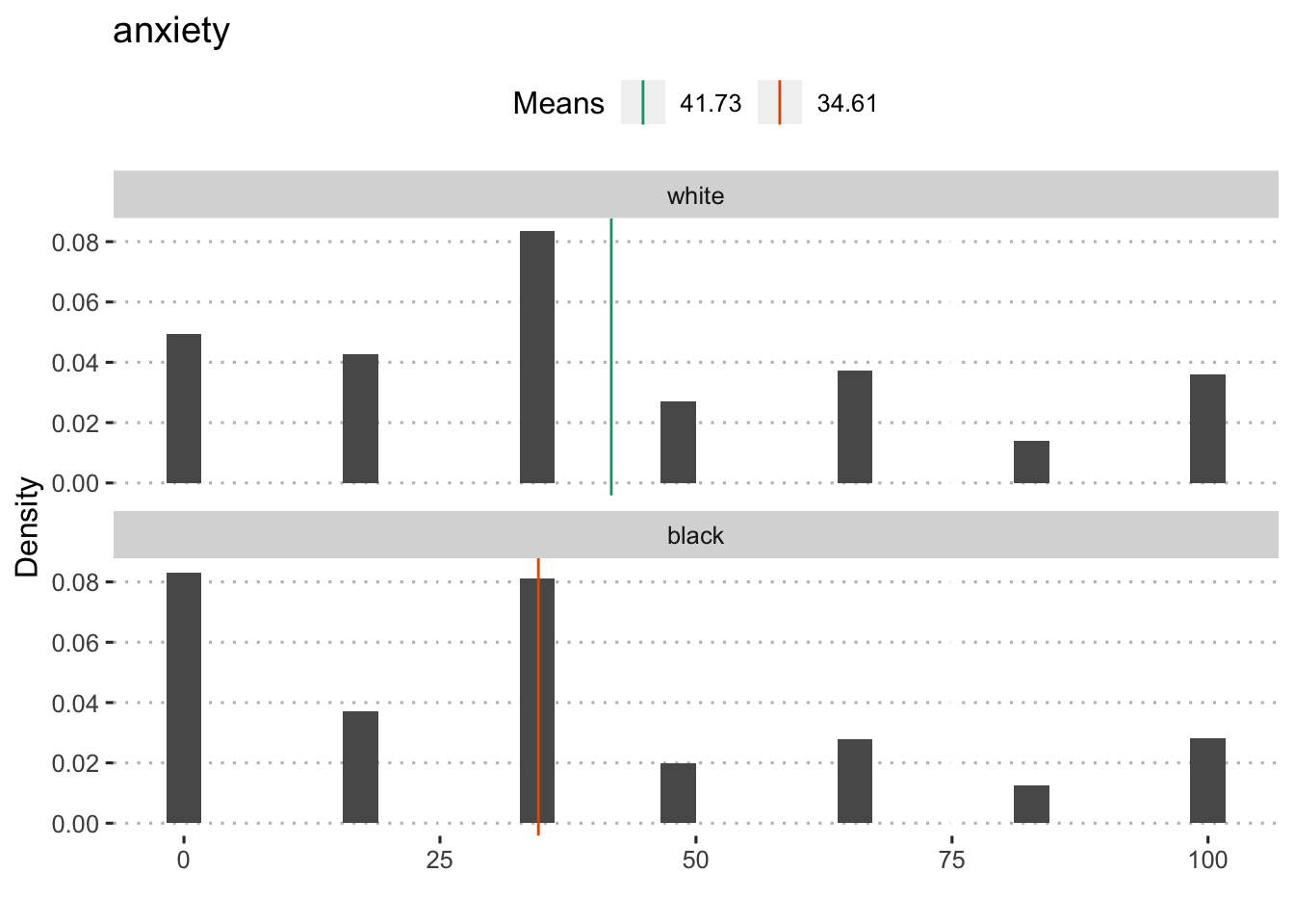
##
## Welch Two Sample t-test
##
## data: anxiety by compare1
## t = 5.8653, df = 957.37, p-value = 6.168e-09
## alternative hypothesis: true difference in means is not equal to 0
## 95 percent confidence interval:
## 4.739698 9.506118
## sample estimates:
## mean in group 0 mean in group 1
## 41.73164 34.60873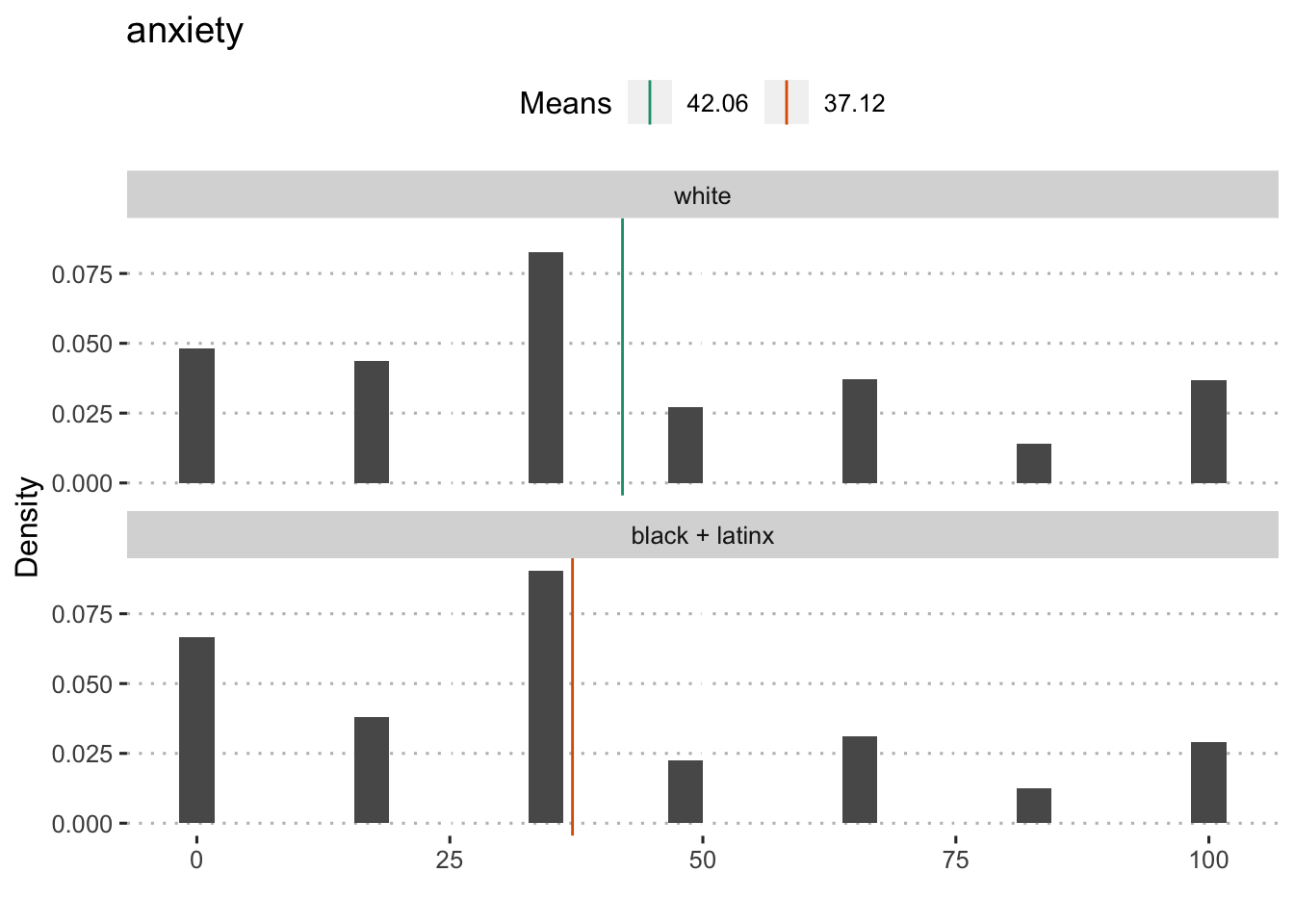
##
## Welch Two Sample t-test
##
## data: anxiety by compare2
## t = 6.2848, df = 4003, p-value = 3.634e-10
## alternative hypothesis: true difference in means is not equal to 0
## 95 percent confidence interval:
## 3.396554 6.476471
## sample estimates:
## mean in group 0 mean in group 1
## 42.05911 37.12260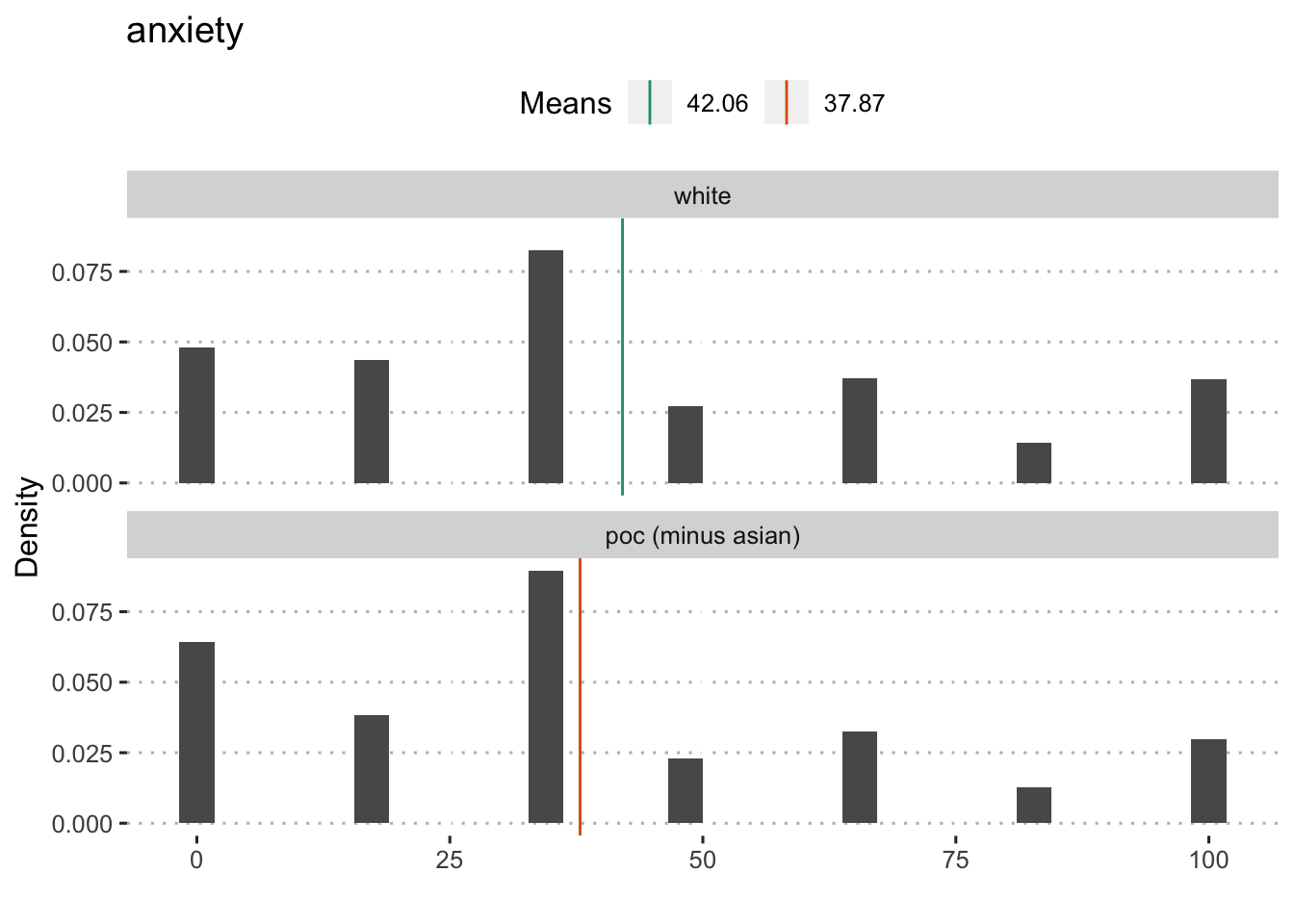
##
## Welch Two Sample t-test
##
## data: anxiety by compare3
## t = 5.6188, df = 4950.8, p-value = 2.028e-08
## alternative hypothesis: true difference in means is not equal to 0
## 95 percent confidence interval:
## 2.728334 5.652483
## sample estimates:
## mean in group 0 mean in group 1
## 42.05911 37.86870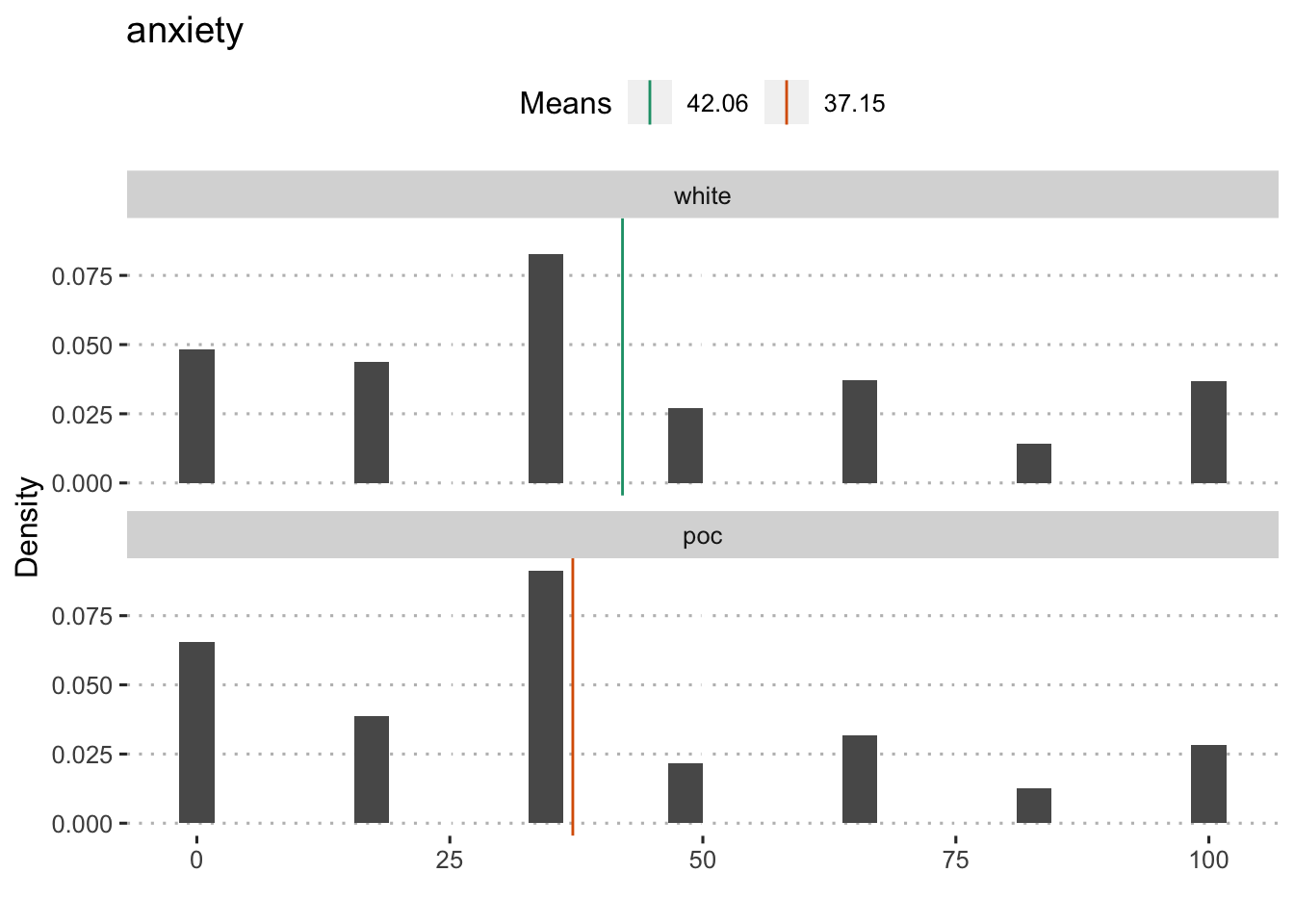
##
## Welch Two Sample t-test
##
## data: anxiety by compare4
## t = 6.8855, df = 5858.9, p-value = 6.362e-12
## alternative hypothesis: true difference in means is not equal to 0
## 95 percent confidence interval:
## 3.508842 6.302134
## sample estimates:
## mean in group 0 mean in group 1
## 42.05911 37.15362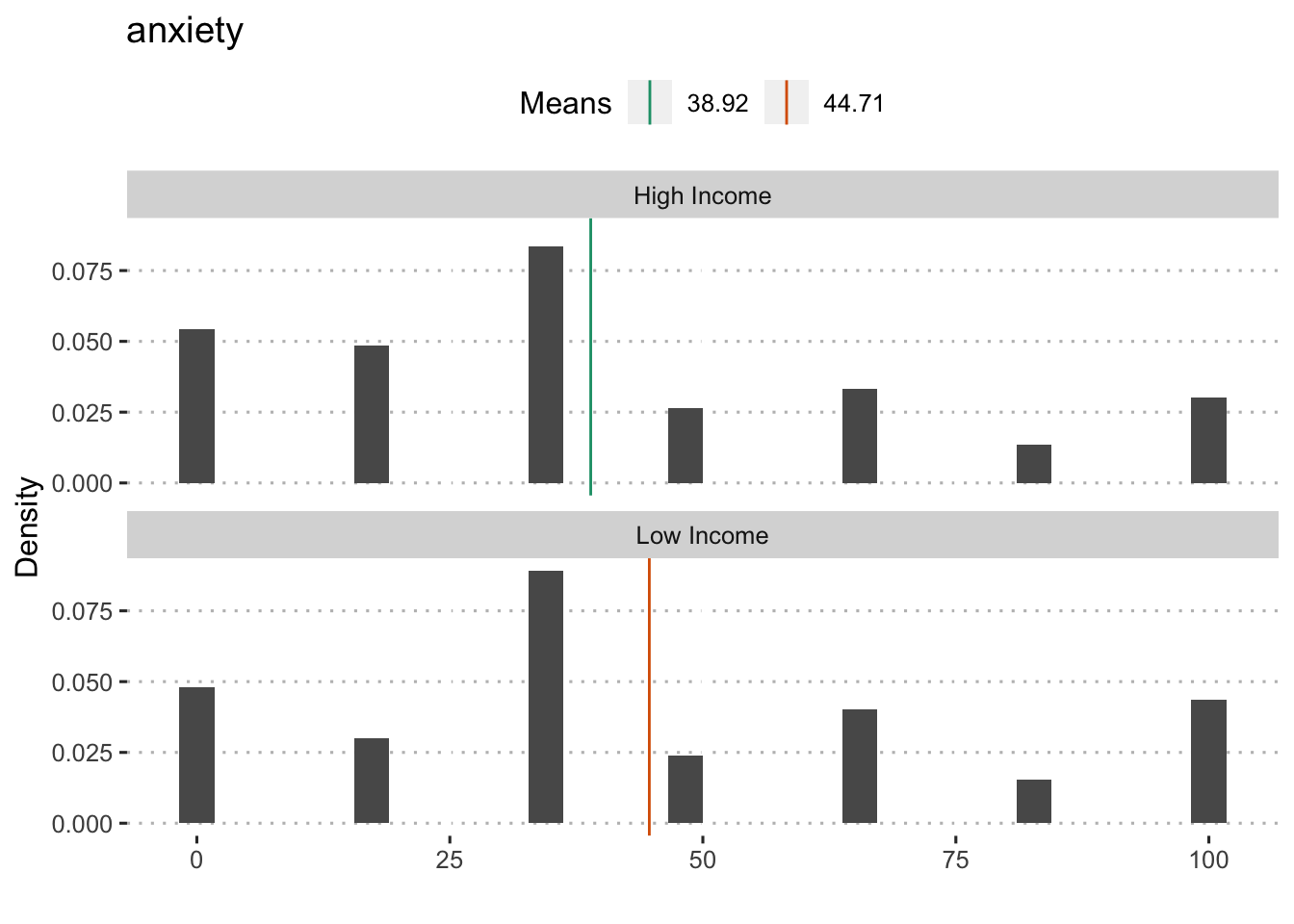
## Analysis of Variance Table
##
## Response: anxiety
## Df Sum Sq Mean Sq F value Pr(>F)
## poverty150 1 58223 58223 58.794 1.962e-14 ***
## Residuals 7811 7735119 990
## ---
## Signif. codes: 0 '***' 0.001 '**' 0.01 '*' 0.05 '.' 0.1 ' ' 1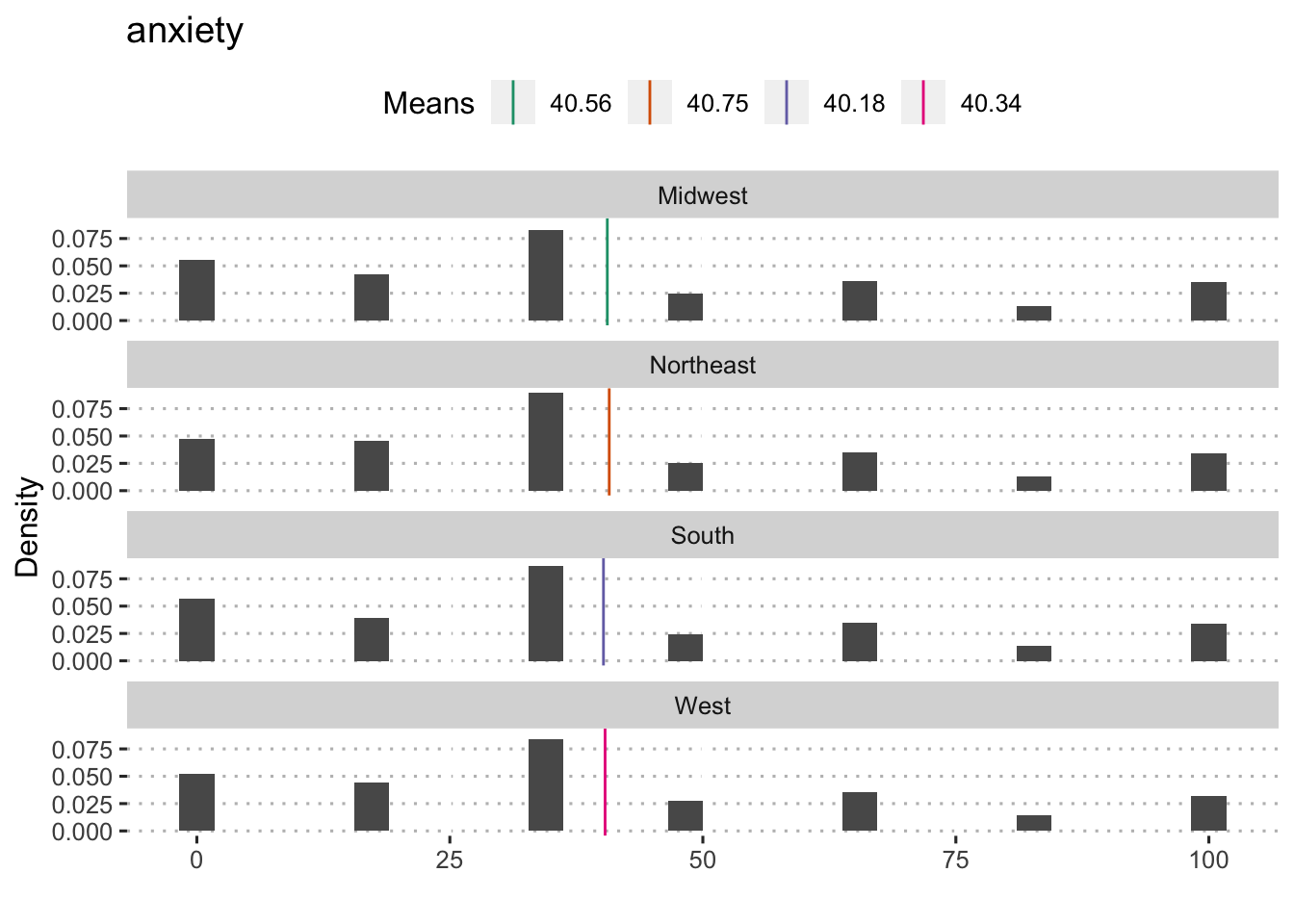
## Analysis of Variance Table
##
## Response: anxiety
## Df Sum Sq Mean Sq F value Pr(>F)
## region 3 377 125.63 0.1261 0.9447
## Residuals 8761 8730421 996.51
##
## Welch Two Sample t-test
##
## data: anxiety by rural
## t = -0.12772, df = 3755.3, p-value = 0.8984
## alternative hypothesis: true difference in means is not equal to 0
## 95 percent confidence interval:
## -1.910430 1.676755
## sample estimates:
## mean in group rural mean in group urban
## 41.21829 41.33513Depression
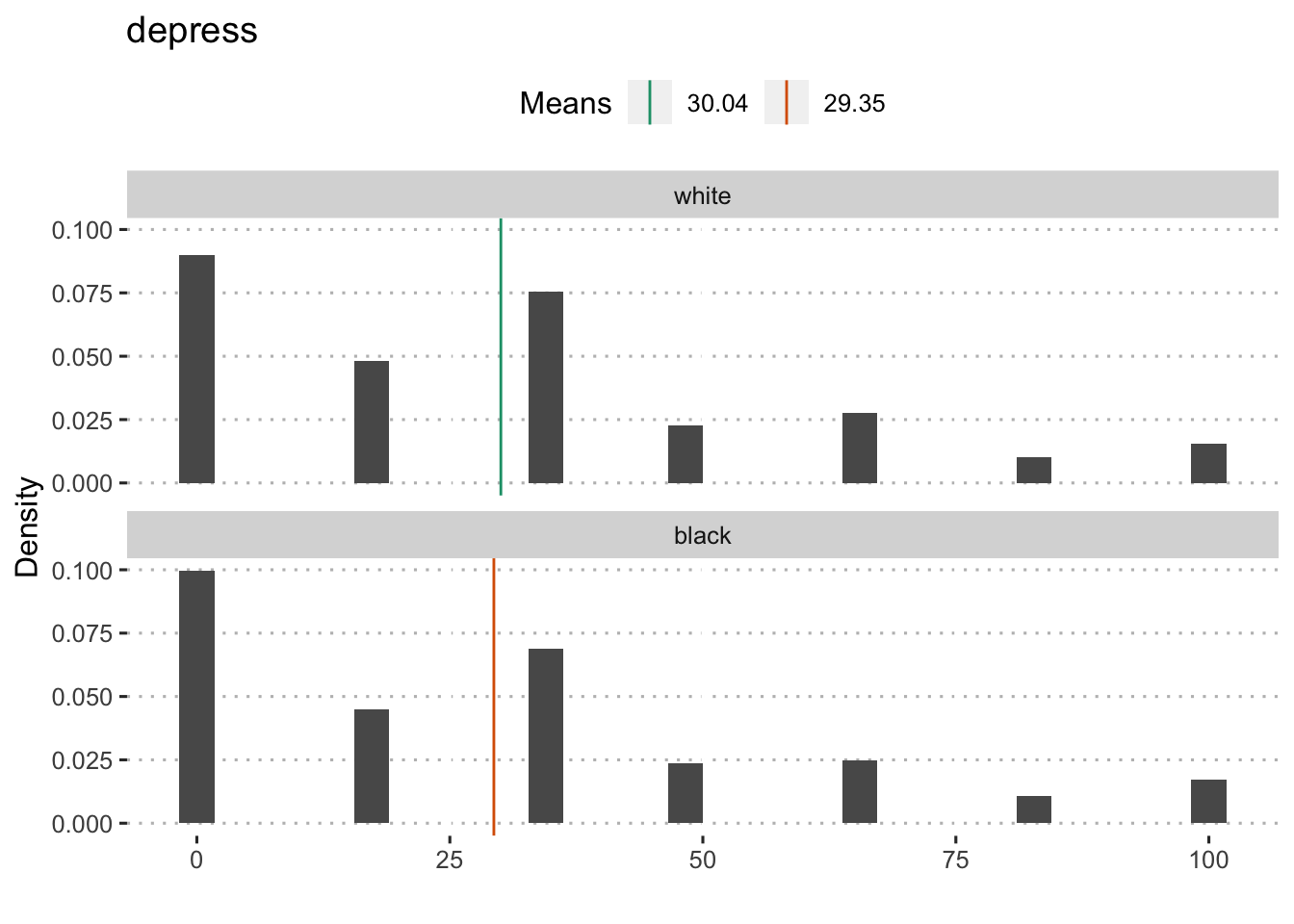
##
## Welch Two Sample t-test
##
## data: depress by compare1
## t = 0.61504, df = 946.45, p-value = 0.5387
## alternative hypothesis: true difference in means is not equal to 0
## 95 percent confidence interval:
## -1.523277 2.913885
## sample estimates:
## mean in group 0 mean in group 1
## 30.04077 29.34547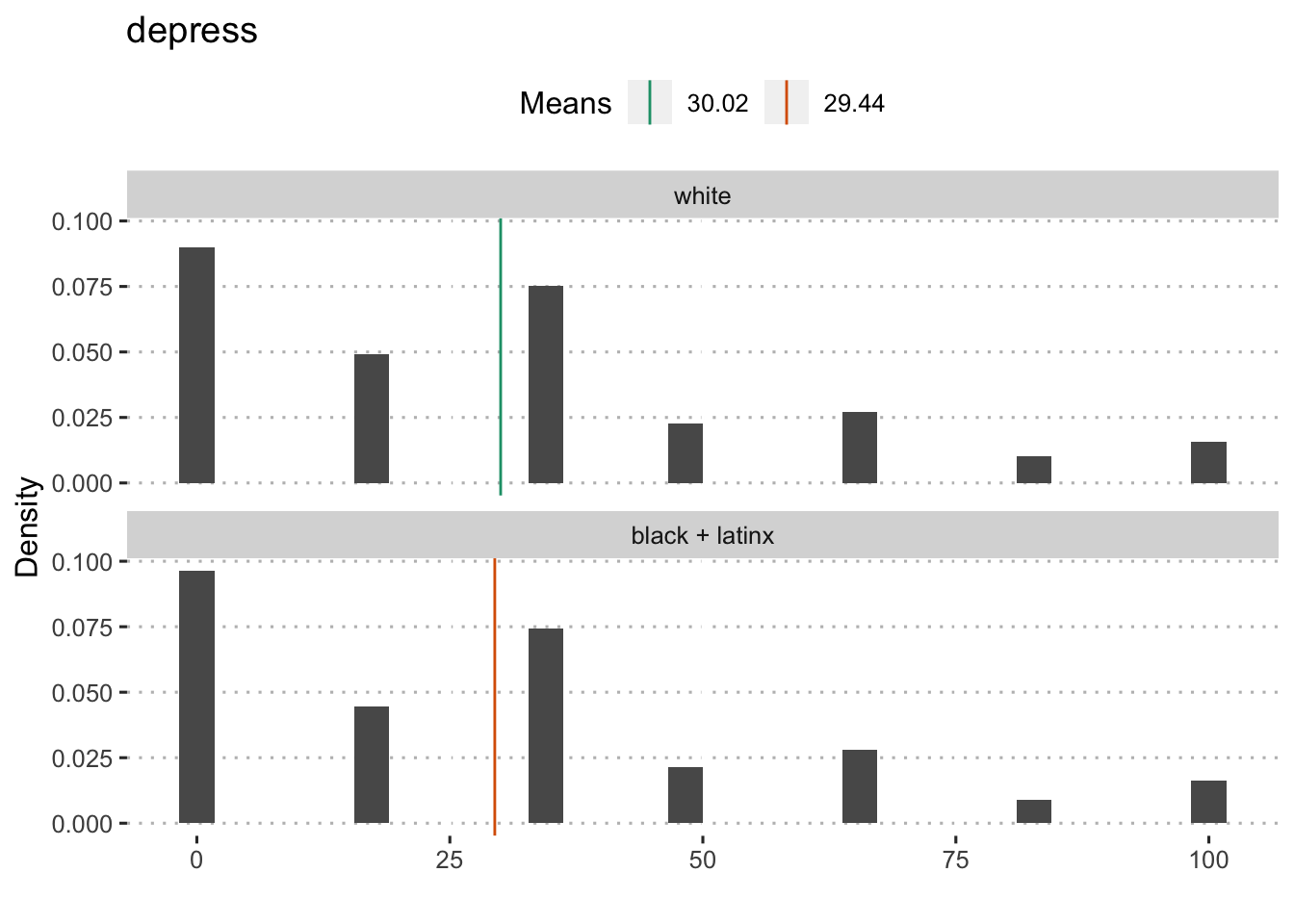
##
## Welch Two Sample t-test
##
## data: depress by compare2
## t = 0.79911, df = 3898, p-value = 0.4243
## alternative hypothesis: true difference in means is not equal to 0
## 95 percent confidence interval:
## -0.8487723 2.0167131
## sample estimates:
## mean in group 0 mean in group 1
## 30.02358 29.43961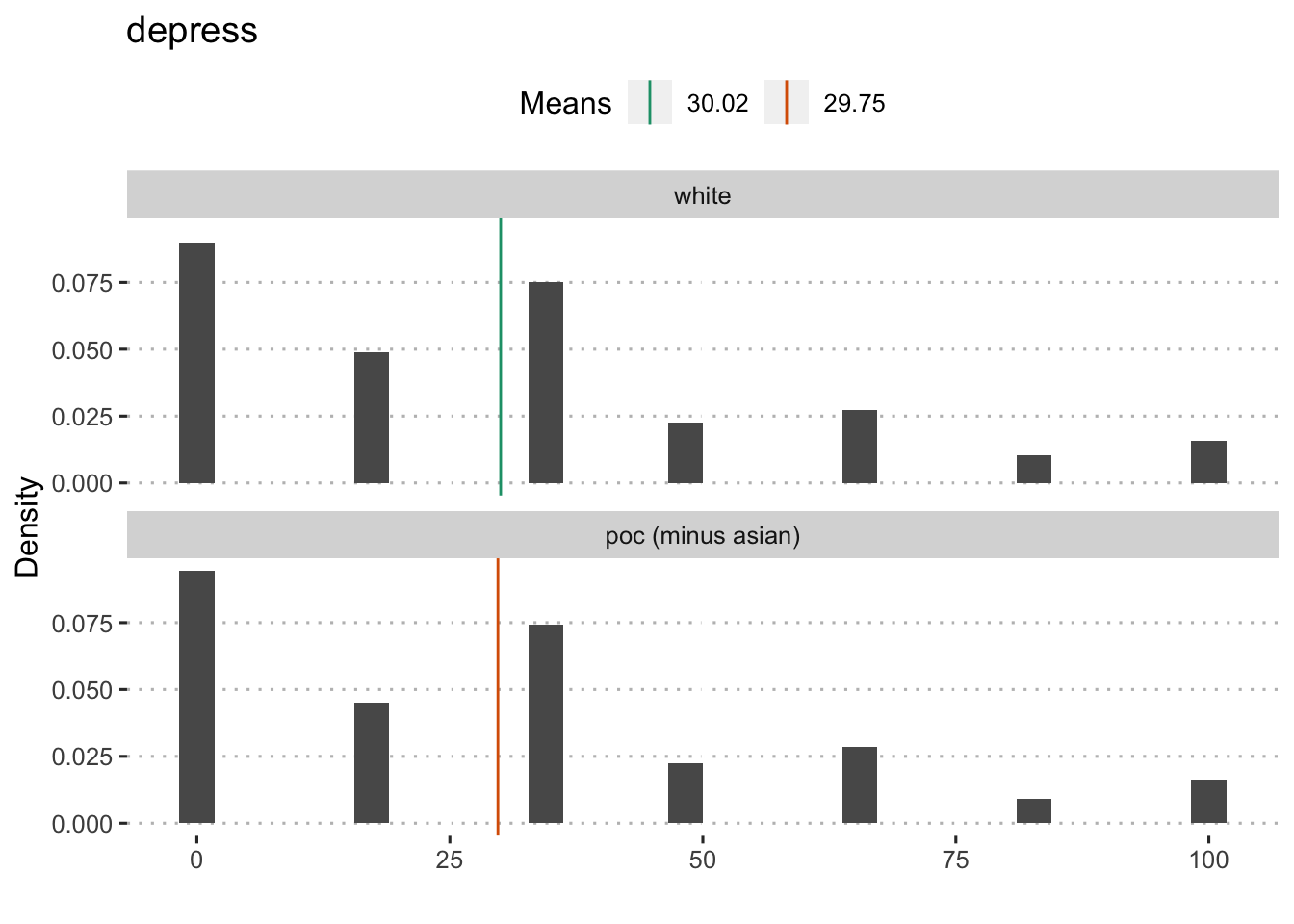
##
## Welch Two Sample t-test
##
## data: depress by compare3
## t = 0.39147, df = 4839.9, p-value = 0.6955
## alternative hypothesis: true difference in means is not equal to 0
## 95 percent confidence interval:
## -1.084310 1.625393
## sample estimates:
## mean in group 0 mean in group 1
## 30.02358 29.75304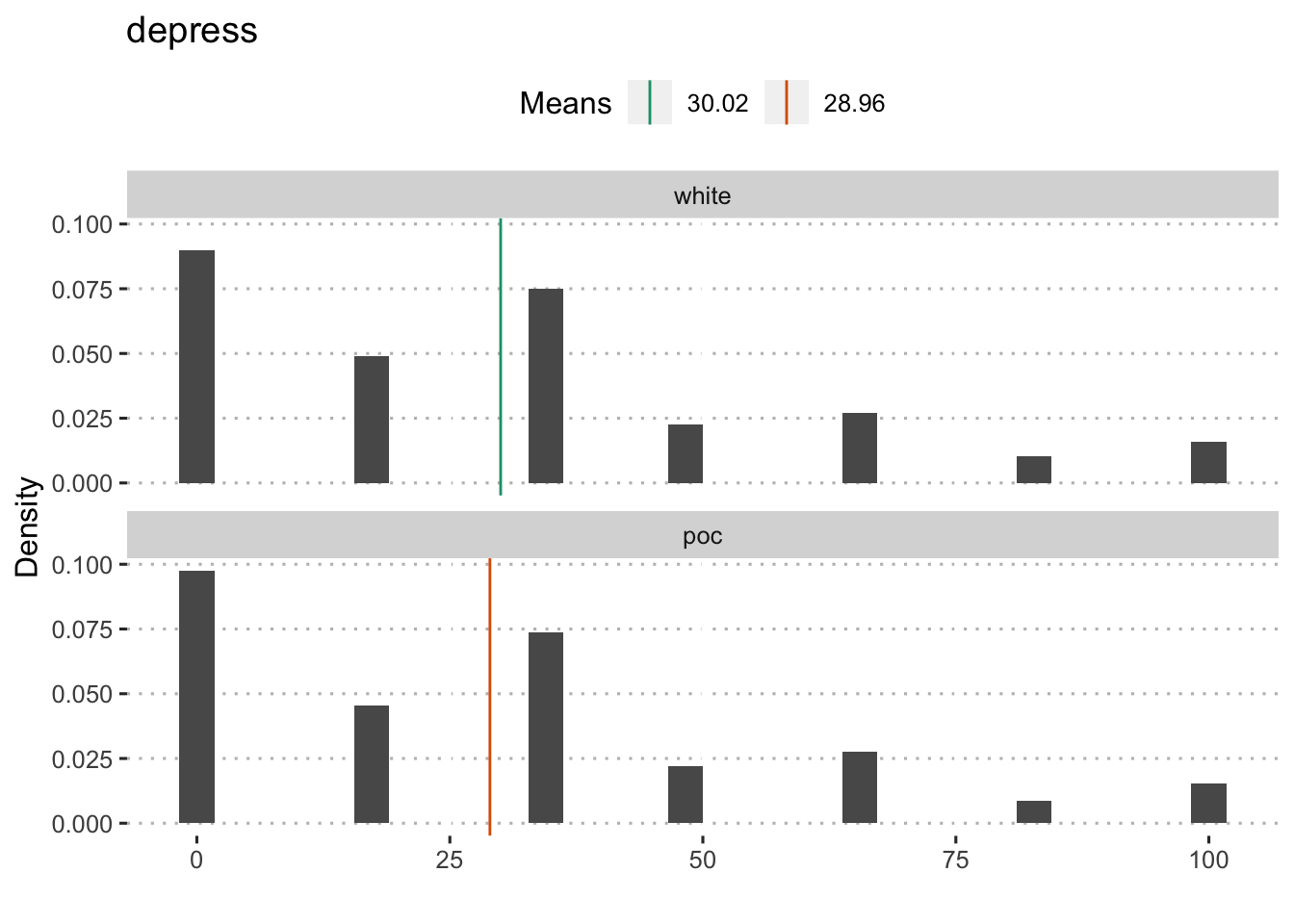
##
## Welch Two Sample t-test
##
## data: depress by compare4
## t = 1.6078, df = 5735.7, p-value = 0.1079
## alternative hypothesis: true difference in means is not equal to 0
## 95 percent confidence interval:
## -0.232457 2.352504
## sample estimates:
## mean in group 0 mean in group 1
## 30.02358 28.96356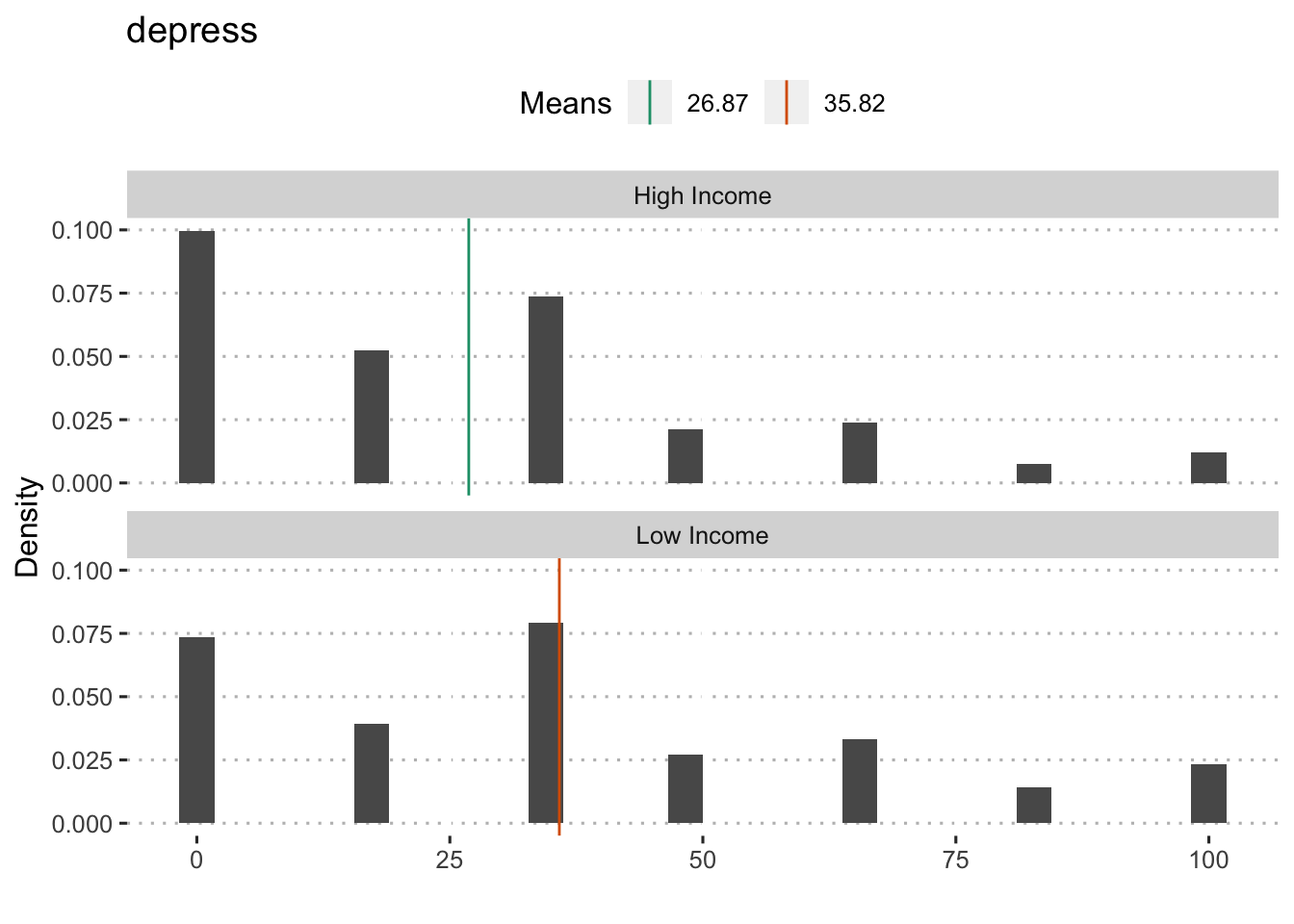
## Analysis of Variance Table
##
## Response: depress
## Df Sum Sq Mean Sq F value Pr(>F)
## poverty150 1 138824 138824 170.14 < 2.2e-16 ***
## Residuals 7809 6371710 816
## ---
## Signif. codes: 0 '***' 0.001 '**' 0.01 '*' 0.05 '.' 0.1 ' ' 1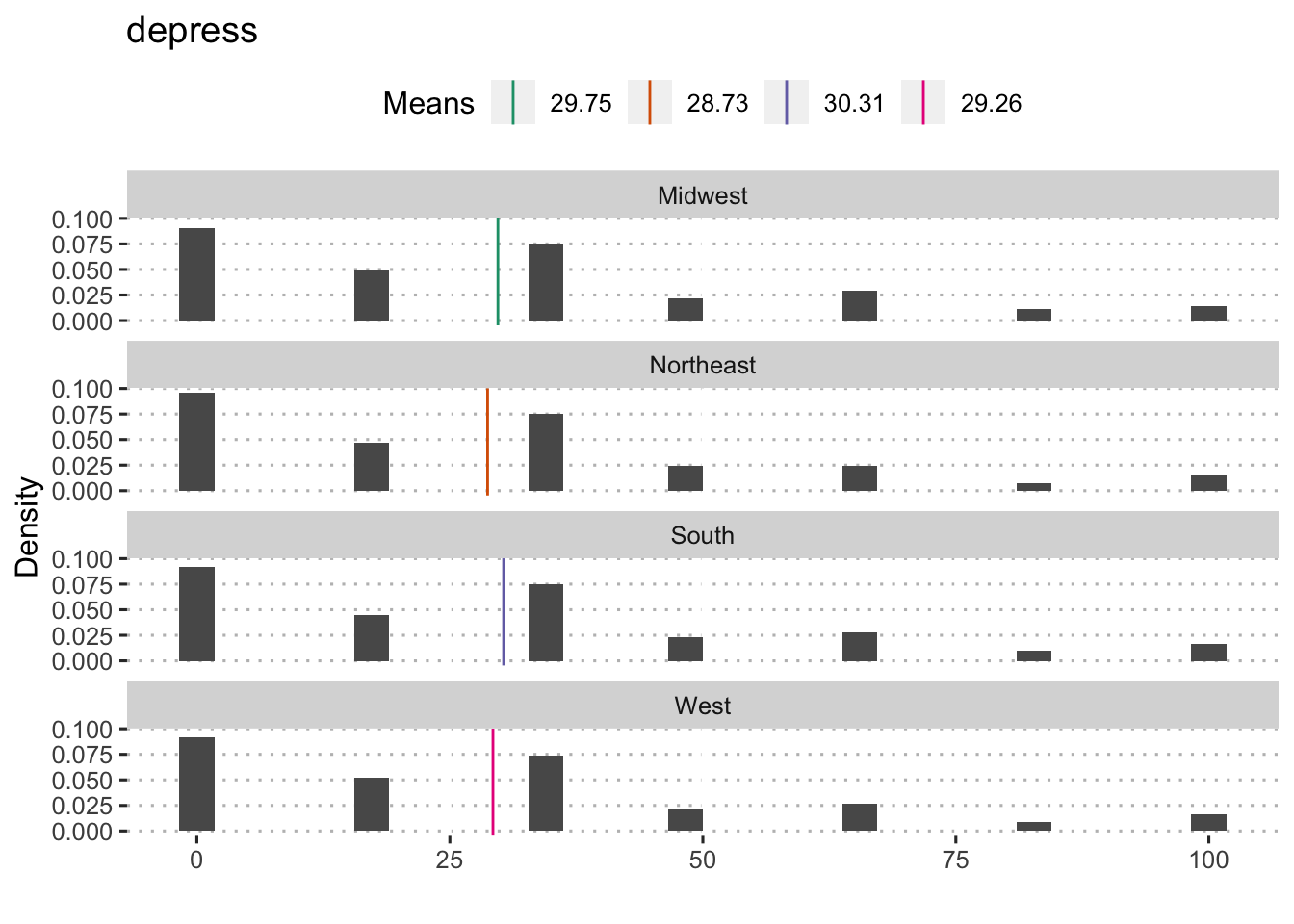
## Analysis of Variance Table
##
## Response: depress
## Df Sum Sq Mean Sq F value Pr(>F)
## region 3 2860 953.24 1.1412 0.3309
## Residuals 8757 7314594 835.29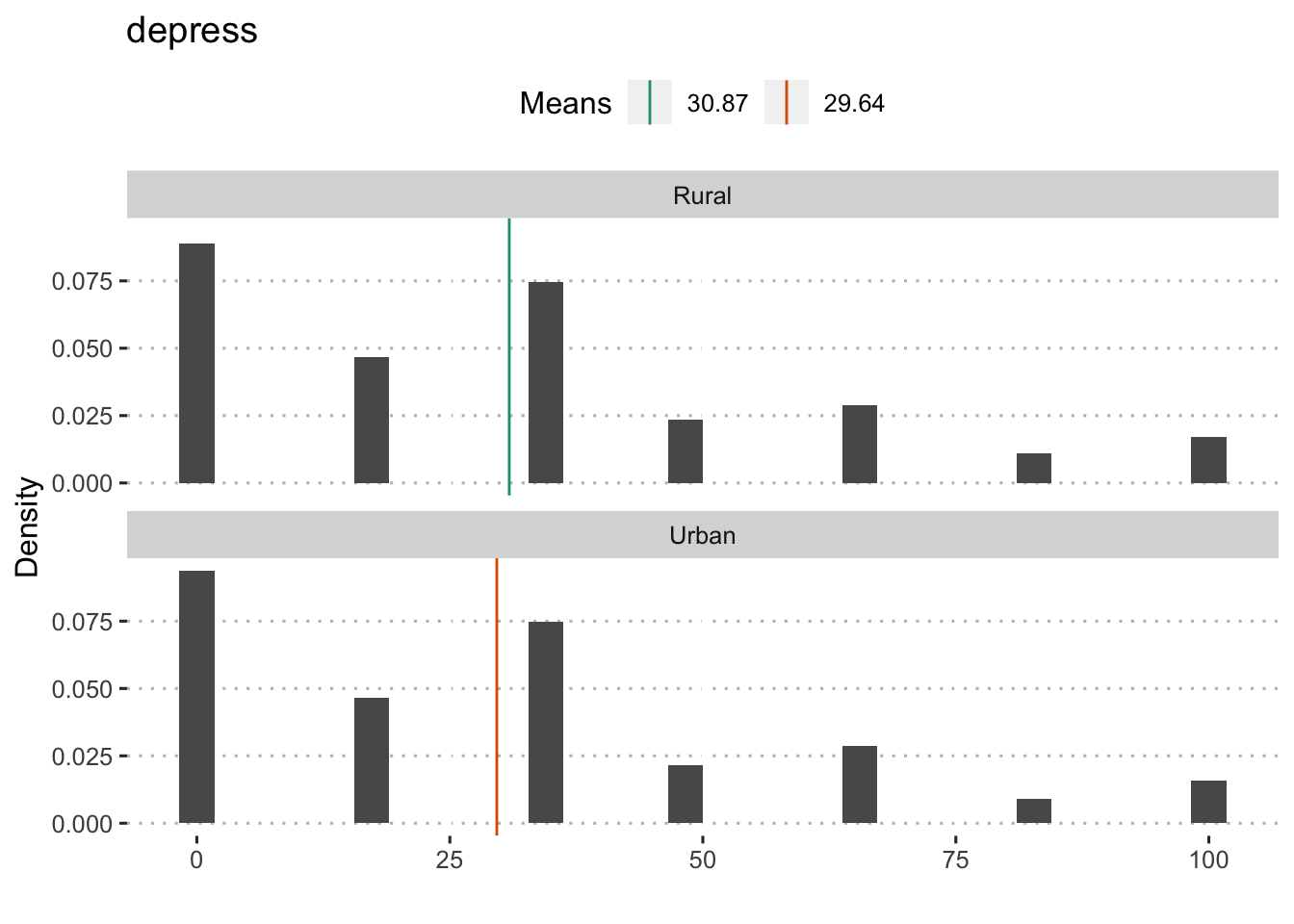
##
## Welch Two Sample t-test
##
## data: depress by rural
## t = 1.485, df = 3801.1, p-value = 0.1376
## alternative hypothesis: true difference in means is not equal to 0
## 95 percent confidence interval:
## -0.396176 2.870366
## sample estimates:
## mean in group rural mean in group urban
## 30.8747 29.6376Stress
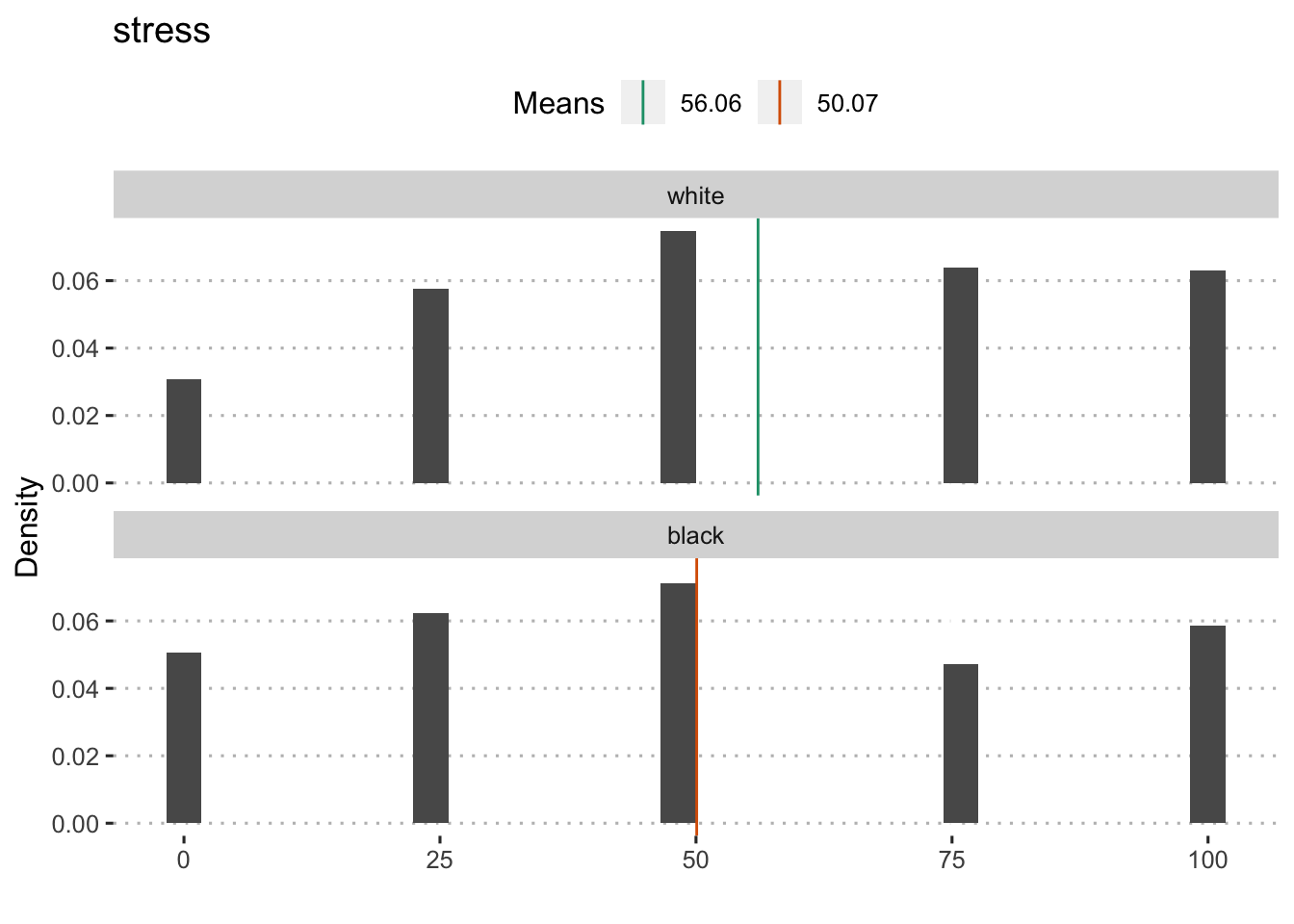
##
## Welch Two Sample t-test
##
## data: stress by compare1
## t = 4.5915, df = 924.04, p-value = 5.01e-06
## alternative hypothesis: true difference in means is not equal to 0
## 95 percent confidence interval:
## 3.434278 8.561756
## sample estimates:
## mean in group 0 mean in group 1
## 56.06363 50.06562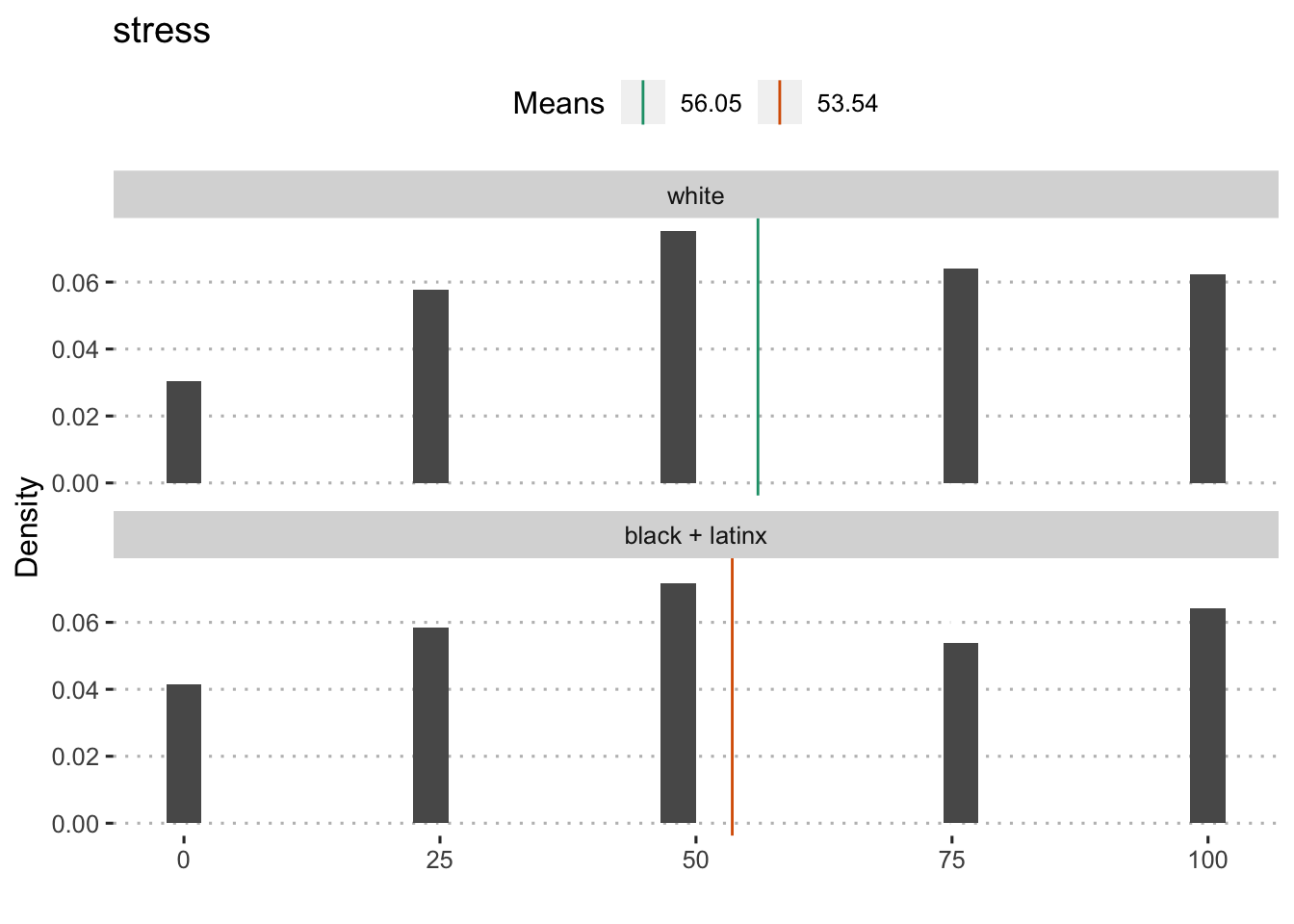
##
## Welch Two Sample t-test
##
## data: stress by compare2
## t = 2.9924, df = 3723.1, p-value = 0.002786
## alternative hypothesis: true difference in means is not equal to 0
## 95 percent confidence interval:
## 0.8661328 4.1578448
## sample estimates:
## mean in group 0 mean in group 1
## 56.05049 53.53850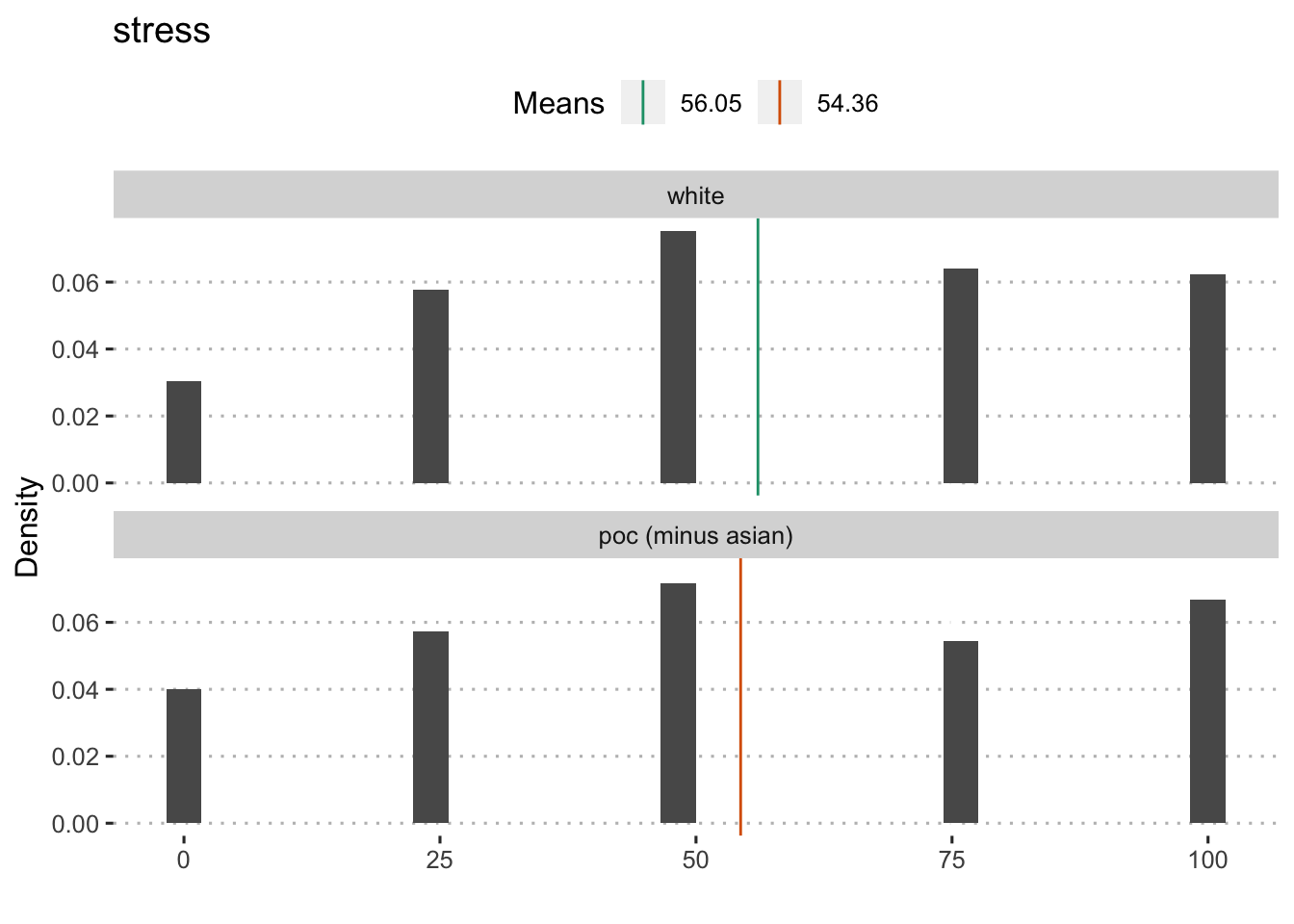
##
## Welch Two Sample t-test
##
## data: stress by compare3
## t = 2.1381, df = 4621.6, p-value = 0.03256
## alternative hypothesis: true difference in means is not equal to 0
## 95 percent confidence interval:
## 0.1408149 3.2490806
## sample estimates:
## mean in group 0 mean in group 1
## 56.05049 54.35554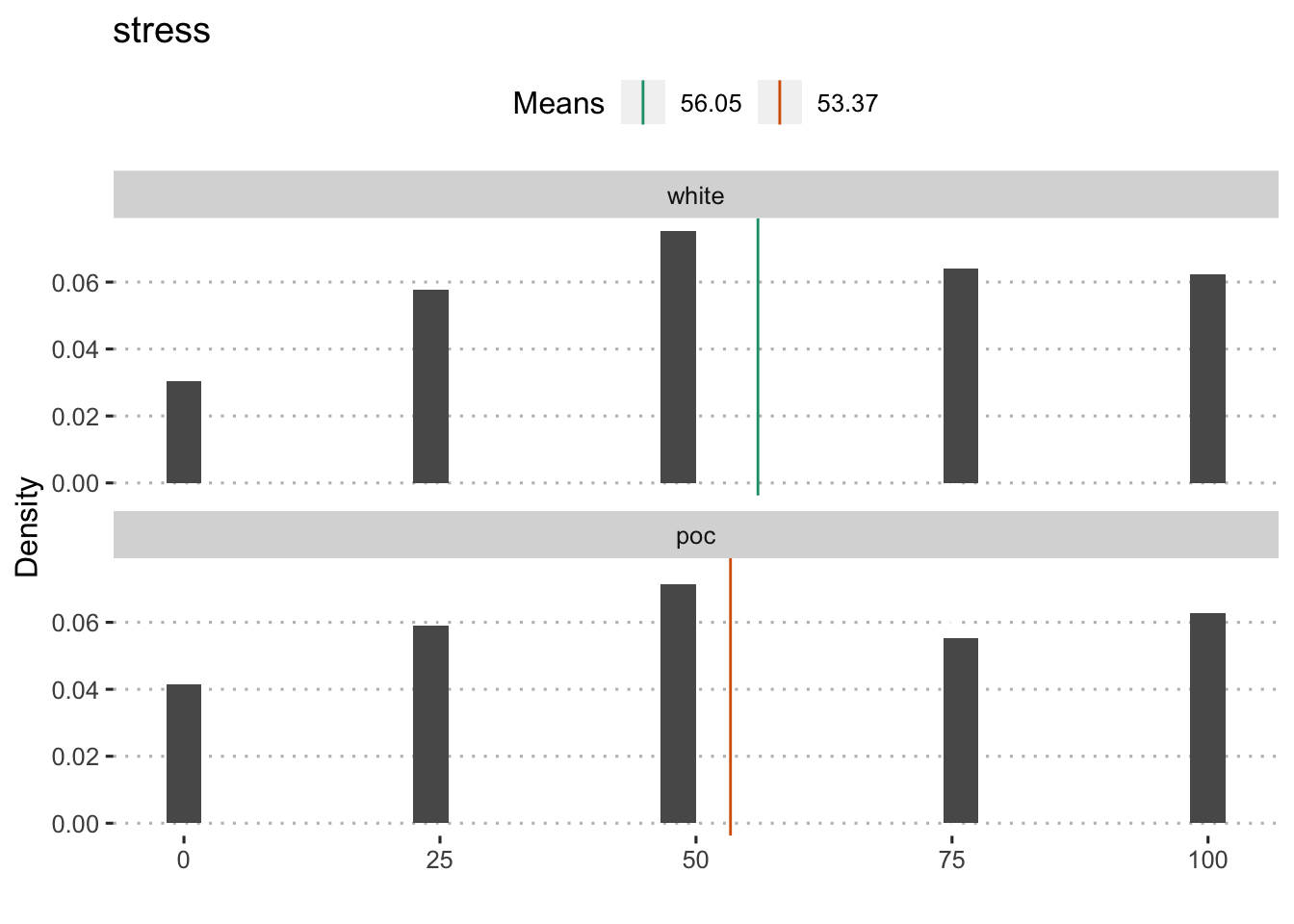
##
## Welch Two Sample t-test
##
## data: stress by compare4
## t = 3.53, df = 5443.1, p-value = 0.000419
## alternative hypothesis: true difference in means is not equal to 0
## 95 percent confidence interval:
## 1.190769 4.165283
## sample estimates:
## mean in group 0 mean in group 1
## 56.05049 53.37246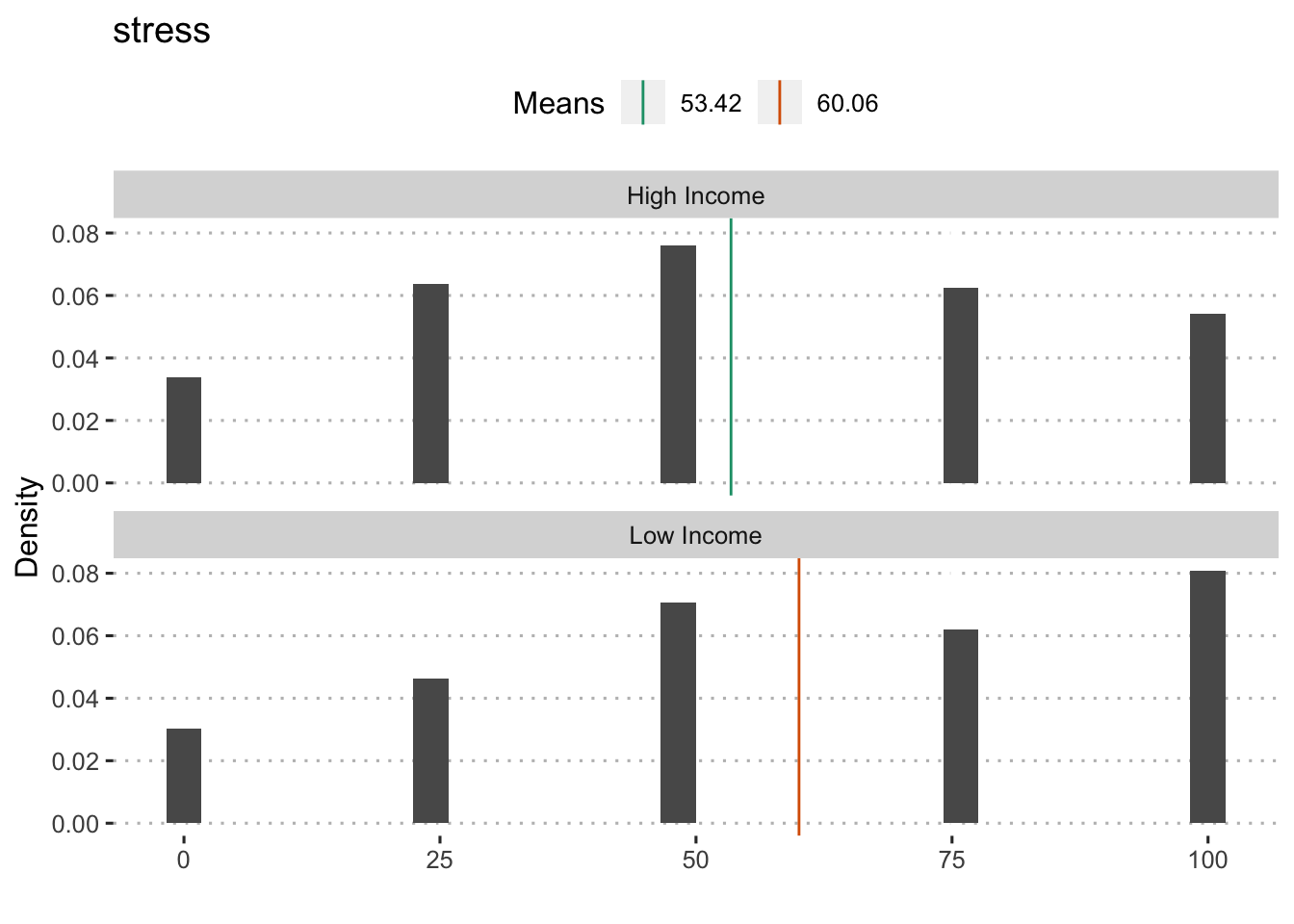
## Analysis of Variance Table
##
## Response: stress
## Df Sum Sq Mean Sq F value Pr(>F)
## poverty150 1 76001 76001 72.926 < 2.2e-16 ***
## Residuals 7758 8085062 1042
## ---
## Signif. codes: 0 '***' 0.001 '**' 0.01 '*' 0.05 '.' 0.1 ' ' 1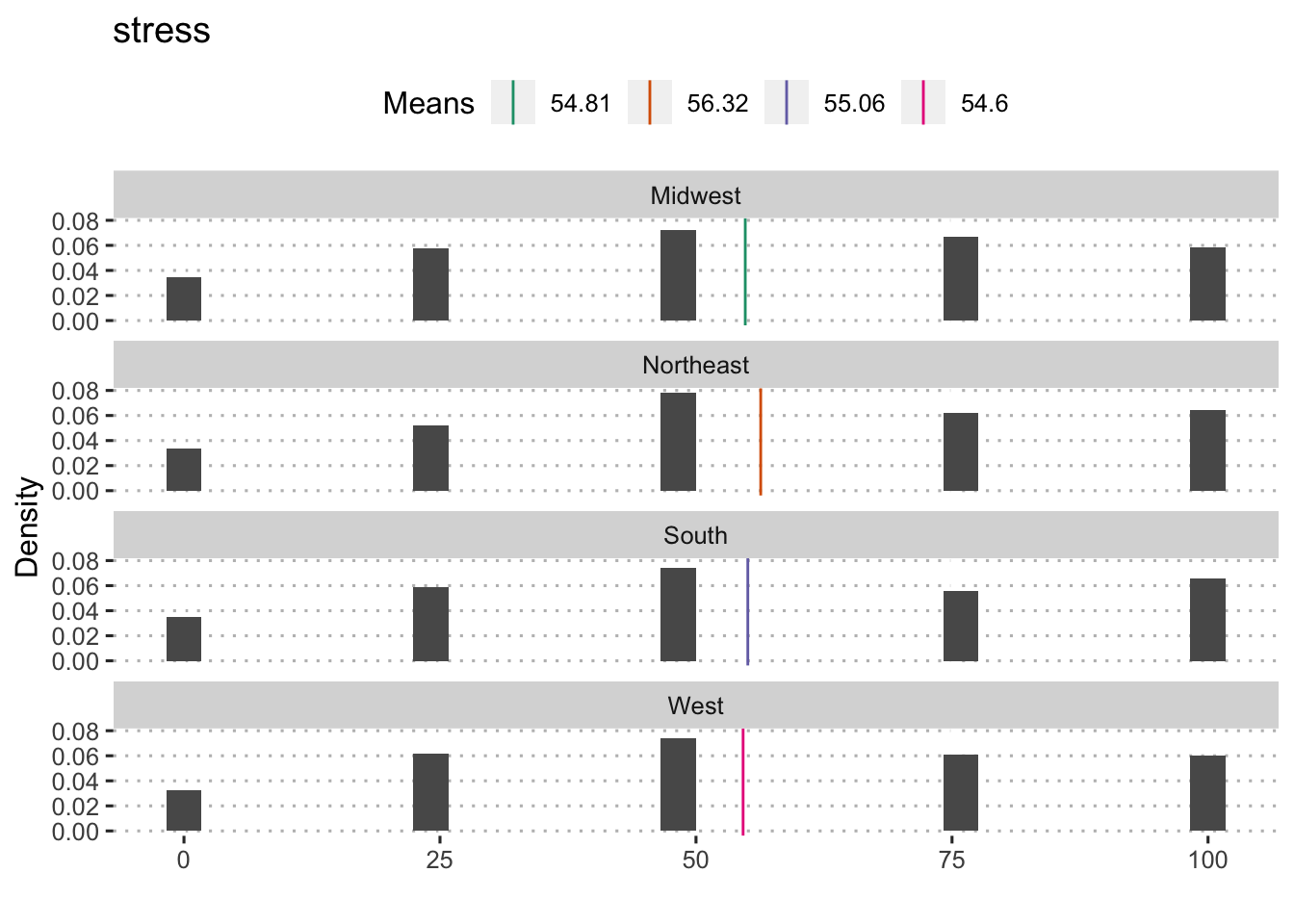
## Analysis of Variance Table
##
## Response: stress
## Df Sum Sq Mean Sq F value Pr(>F)
## region 3 2800 933.3 0.8766 0.4523
## Residuals 8707 9270291 1064.7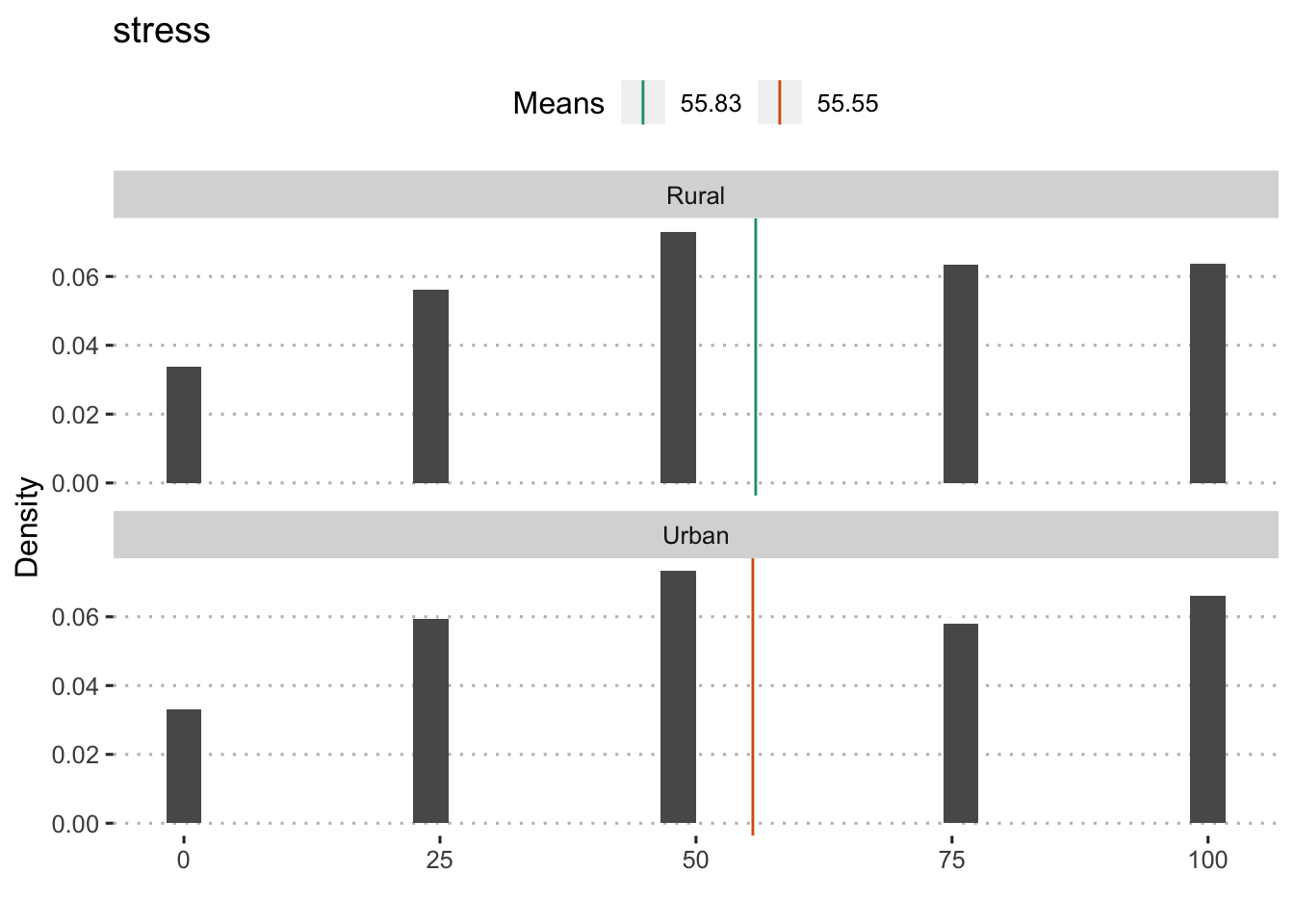
##
## Welch Two Sample t-test
##
## data: stress by rural
## t = 0.295, df = 3722, p-value = 0.768
## alternative hypothesis: true difference in means is not equal to 0
## 95 percent confidence interval:
## -1.563473 2.117292
## sample estimates:
## mean in group rural mean in group urban
## 55.82796 55.55105Loneliness

##
## Welch Two Sample t-test
##
## data: lonely by compare1
## t = 6.4494, df = 925.78, p-value = 1.806e-10
## alternative hypothesis: true difference in means is not equal to 0
## 95 percent confidence interval:
## 5.047386 9.462751
## sample estimates:
## mean in group 0 mean in group 1
## 49.56026 42.30519
##
## Welch Two Sample t-test
##
## data: lonely by compare2
## t = 6.2014, df = 3655.6, p-value = 6.218e-10
## alternative hypothesis: true difference in means is not equal to 0
## 95 percent confidence interval:
## 3.048005 5.866303
## sample estimates:
## mean in group 0 mean in group 1
## 49.85761 45.40046
##
## Welch Two Sample t-test
##
## data: lonely by compare3
## t = 5.5112, df = 4513.2, p-value = 3.762e-08
## alternative hypothesis: true difference in means is not equal to 0
## 95 percent confidence interval:
## 2.413907 5.079529
## sample estimates:
## mean in group 0 mean in group 1
## 49.85761 46.11089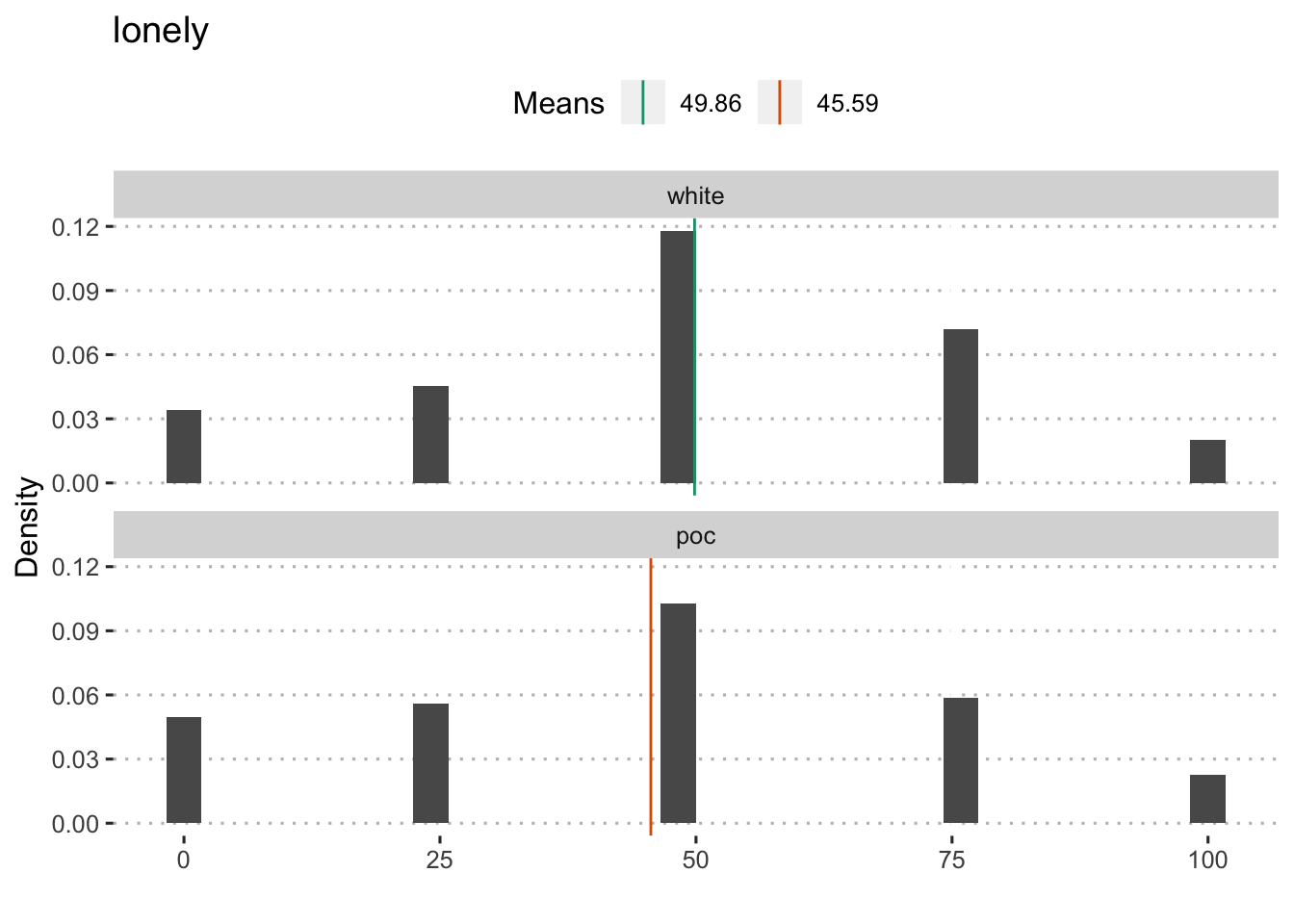
##
## Welch Two Sample t-test
##
## data: lonely by compare4
## t = 6.5765, df = 5326.7, p-value = 5.275e-11
## alternative hypothesis: true difference in means is not equal to 0
## 95 percent confidence interval:
## 2.996714 5.542039
## sample estimates:
## mean in group 0 mean in group 1
## 49.85761 45.58824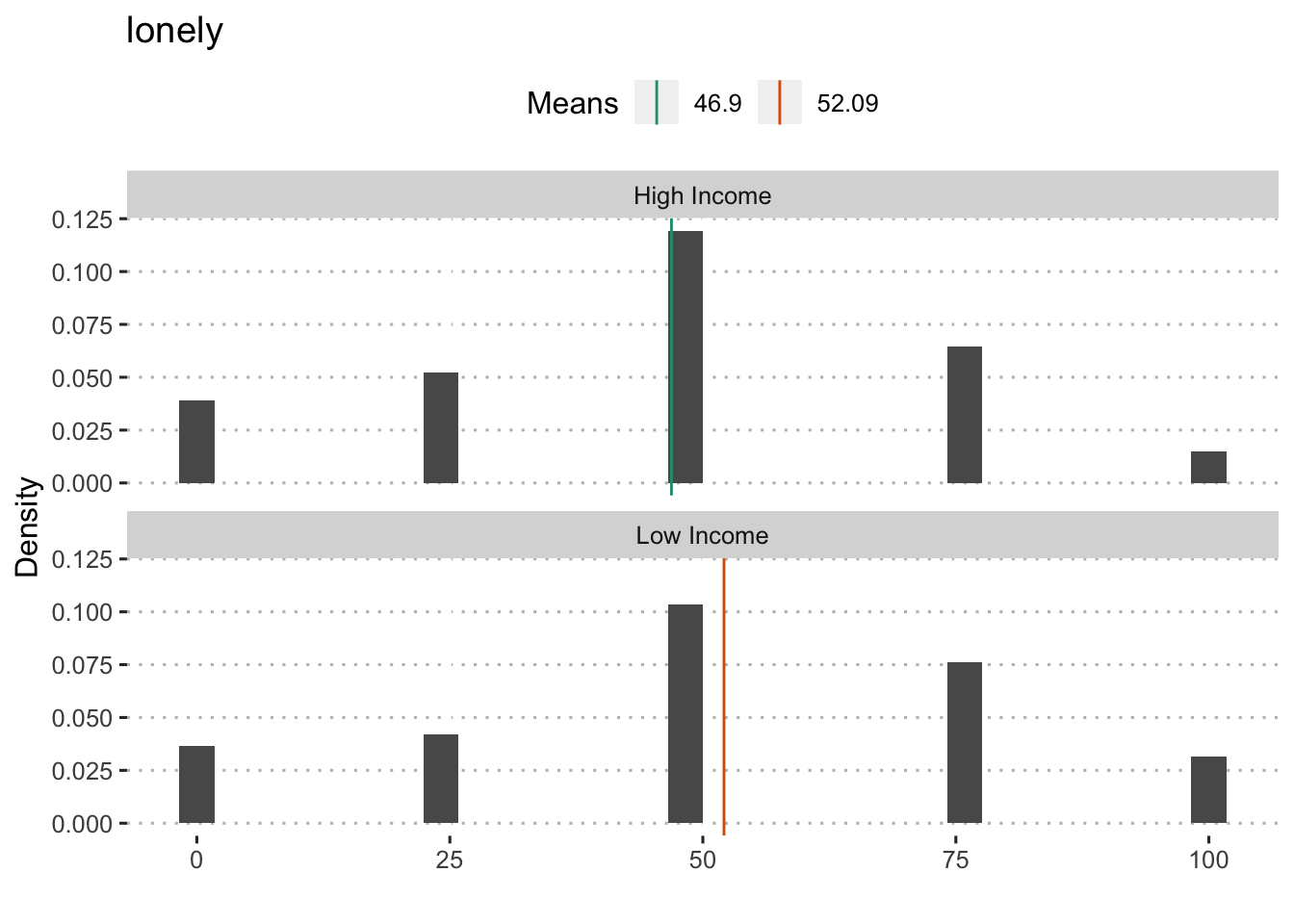
## Analysis of Variance Table
##
## Response: lonely
## Df Sum Sq Mean Sq F value Pr(>F)
## poverty150 1 46774 46774 62.336 3.291e-15 ***
## Residuals 7810 5860239 750
## ---
## Signif. codes: 0 '***' 0.001 '**' 0.01 '*' 0.05 '.' 0.1 ' ' 1
## Analysis of Variance Table
##
## Response: lonely
## Df Sum Sq Mean Sq F value Pr(>F)
## region 3 3998 1332.69 1.7376 0.1569
## Residuals 8757 6716295 766.96
##
## Welch Two Sample t-test
##
## data: lonely by rural
## t = 2.3755, df = 3714.2, p-value = 0.01757
## alternative hypothesis: true difference in means is not equal to 0
## 95 percent confidence interval:
## 0.3307875 3.4569118
## sample estimates:
## mean in group rural mean in group urban
## 49.71409 47.82024Child Externalizing
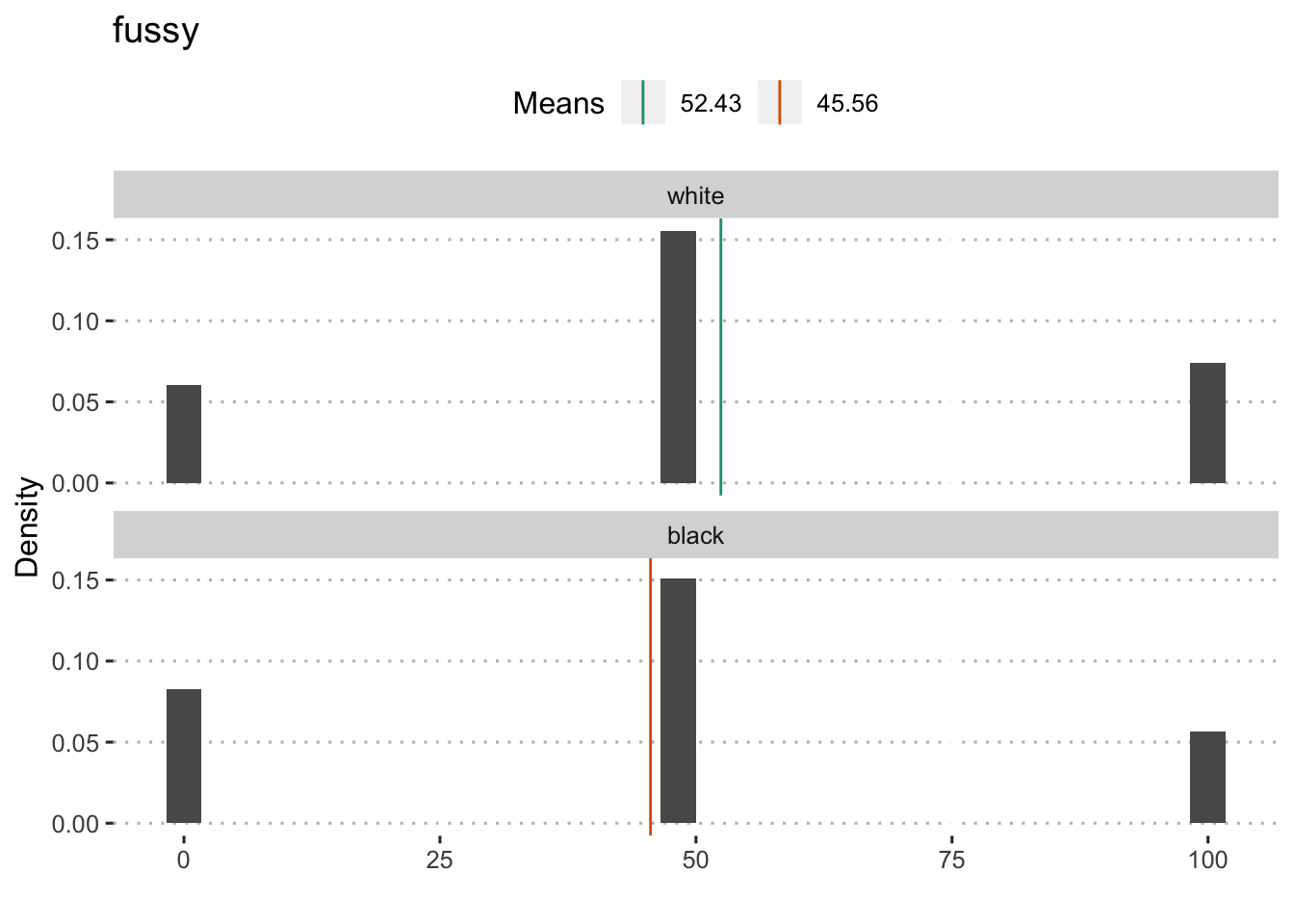
##
## Welch Two Sample t-test
##
## data: fussy by compare1
## t = 5.2345, df = 948.51, p-value = 2.037e-07
## alternative hypothesis: true difference in means is not equal to 0
## 95 percent confidence interval:
## 4.292275 9.441015
## sample estimates:
## mean in group 0 mean in group 1
## 52.42800 45.56136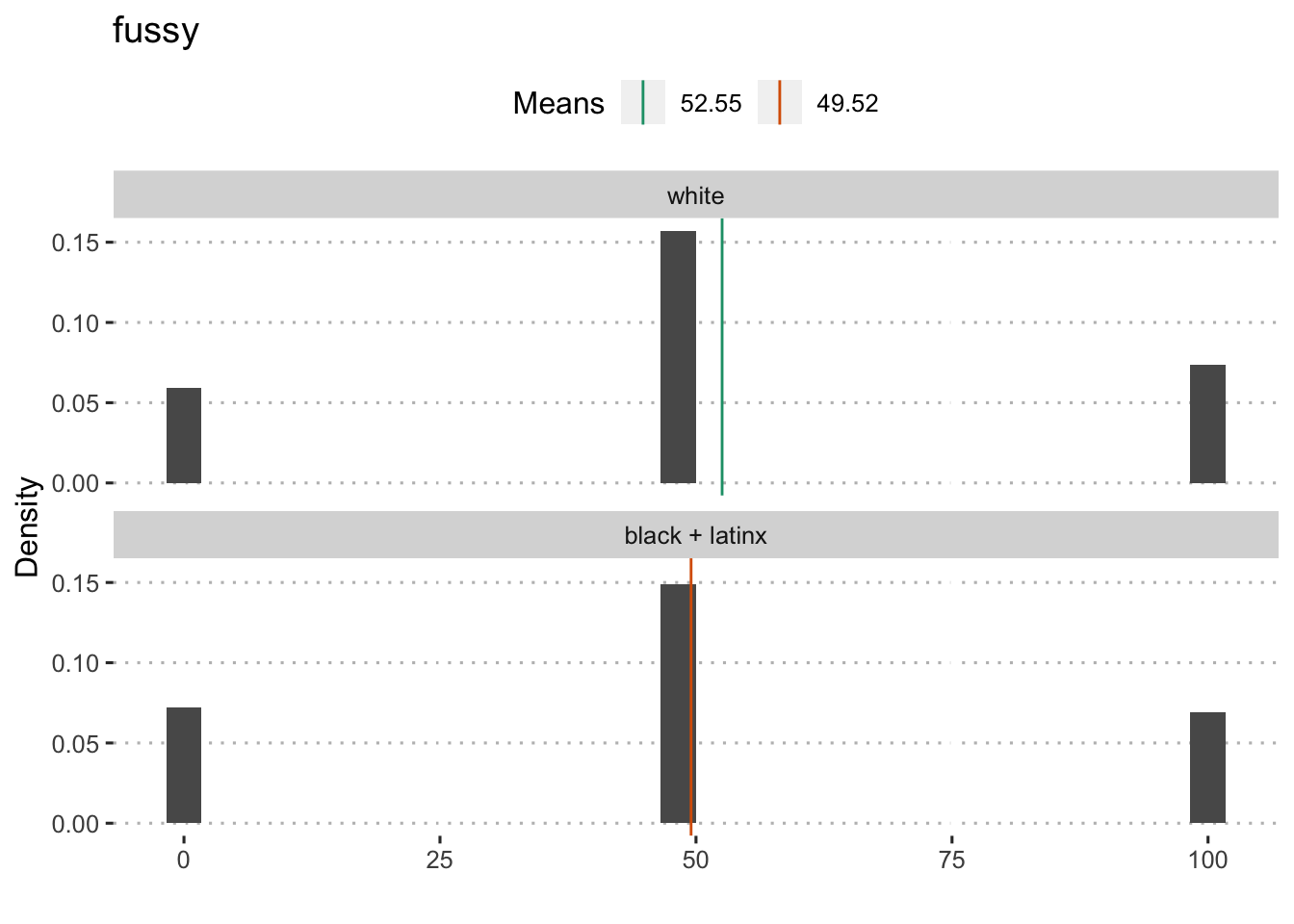
##
## Welch Two Sample t-test
##
## data: fussy by compare2
## t = 3.4869, df = 3797.6, p-value = 0.0004943
## alternative hypothesis: true difference in means is not equal to 0
## 95 percent confidence interval:
## 1.327078 4.736509
## sample estimates:
## mean in group 0 mean in group 1
## 52.54926 49.51746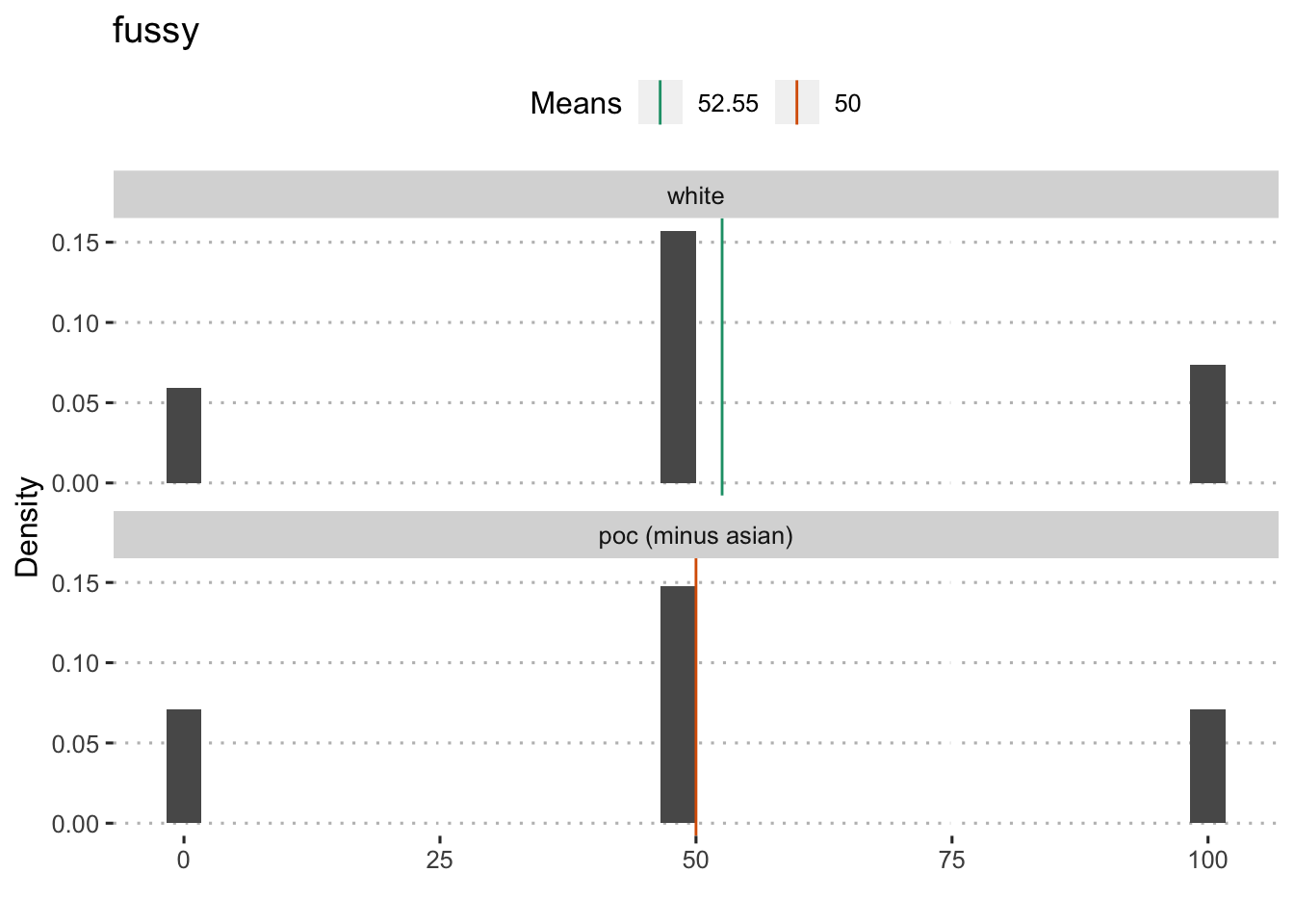
##
## Welch Two Sample t-test
##
## data: fussy by compare3
## t = 3.0938, df = 4690.5, p-value = 0.001988
## alternative hypothesis: true difference in means is not equal to 0
## 95 percent confidence interval:
## 0.9338376 4.1646761
## sample estimates:
## mean in group 0 mean in group 1
## 52.54926 50.00000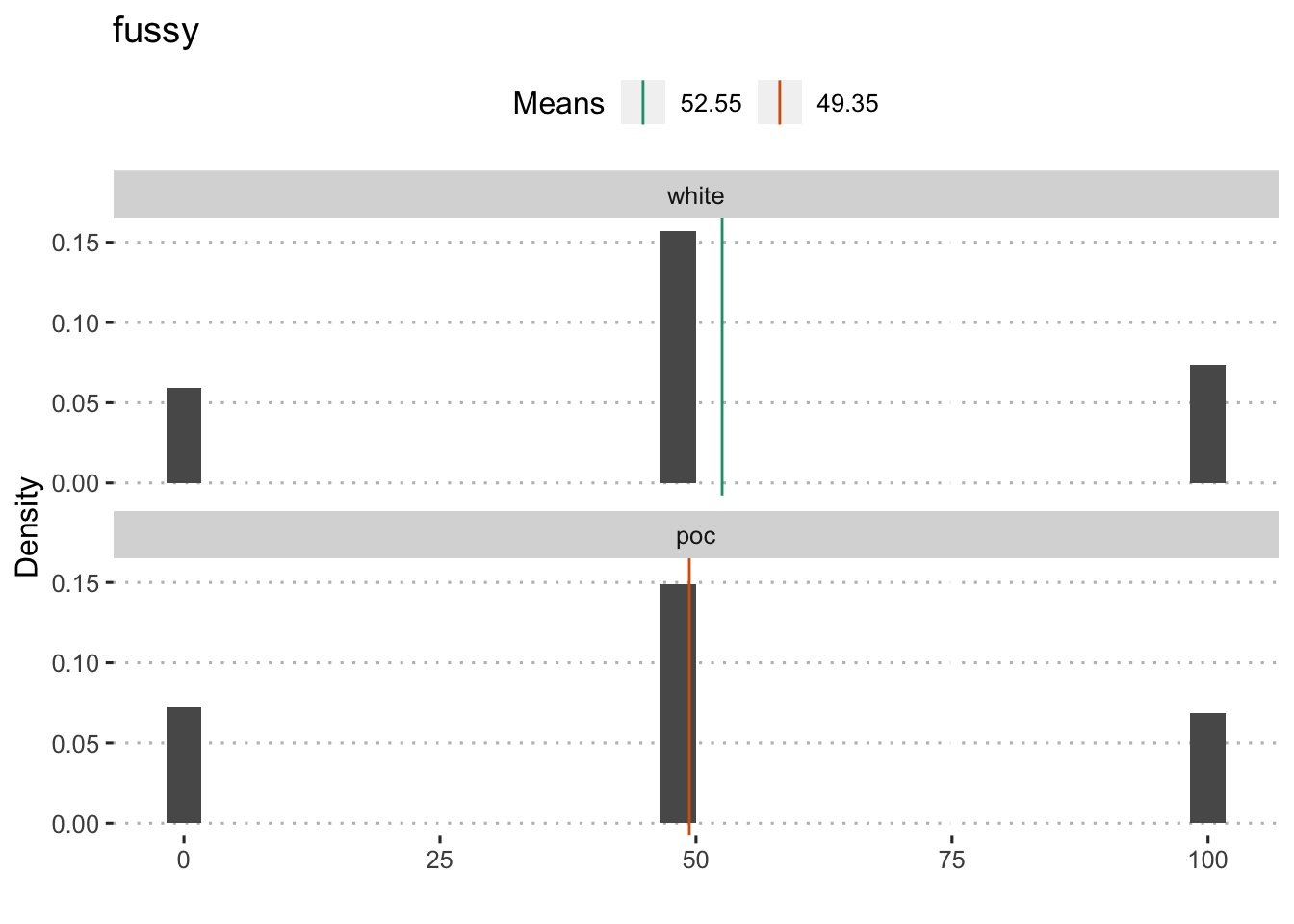
##
## Welch Two Sample t-test
##
## data: fussy by compare4
## t = 4.0536, df = 5528.3, p-value = 5.113e-05
## alternative hypothesis: true difference in means is not equal to 0
## 95 percent confidence interval:
## 1.650638 4.742487
## sample estimates:
## mean in group 0 mean in group 1
## 52.54926 49.35269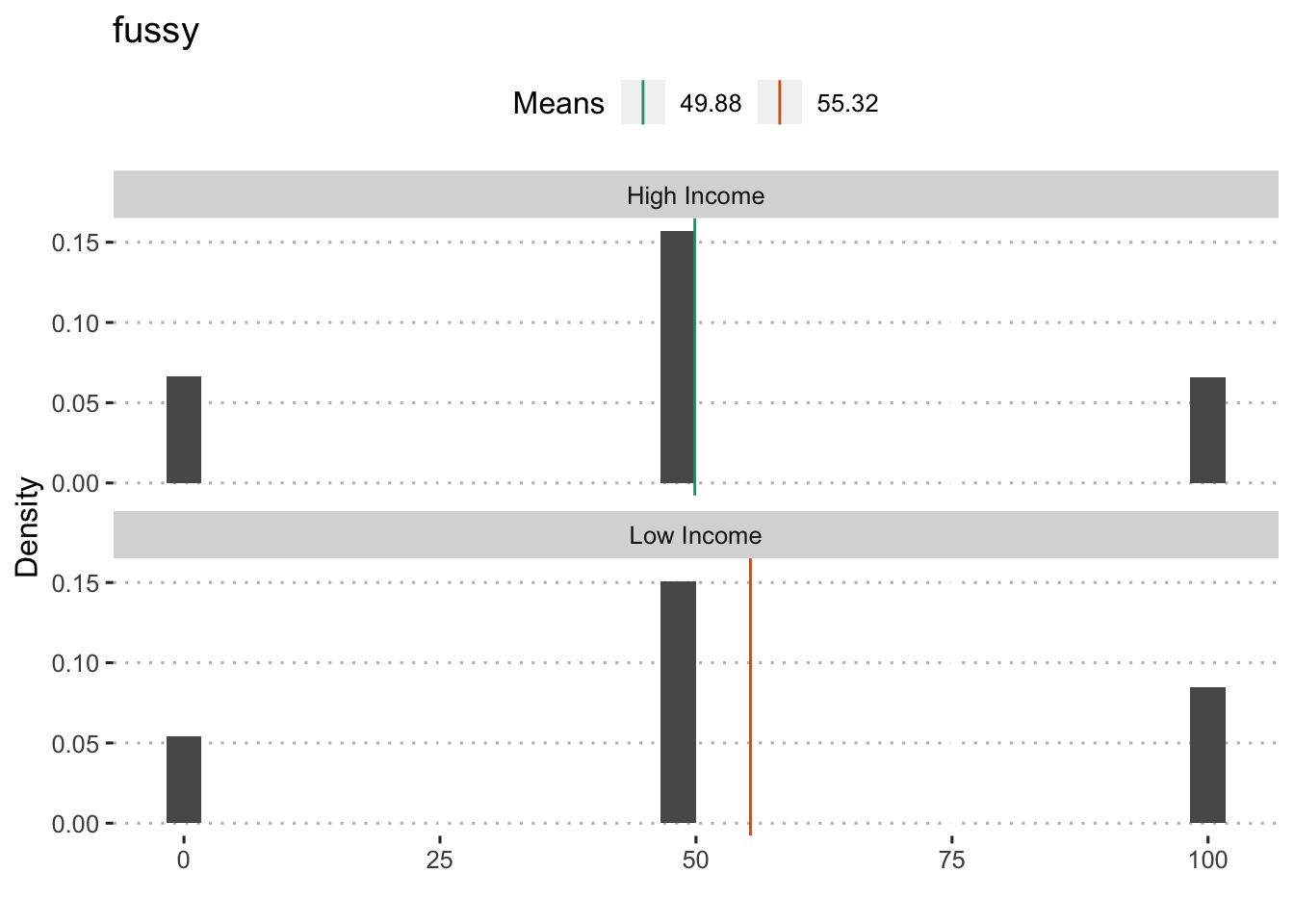
## Analysis of Variance Table
##
## Response: fussy
## Df Sum Sq Mean Sq F value Pr(>F)
## poverty150 1 51018 51018 44.242 3.098e-11 ***
## Residuals 7791 8984293 1153
## ---
## Signif. codes: 0 '***' 0.001 '**' 0.01 '*' 0.05 '.' 0.1 ' ' 1
## Analysis of Variance Table
##
## Response: fussy
## Df Sum Sq Mean Sq F value Pr(>F)
## poverty150 1 51018 51018 44.242 3.098e-11 ***
## Residuals 7791 8984293 1153
## ---
## Signif. codes: 0 '***' 0.001 '**' 0.01 '*' 0.05 '.' 0.1 ' ' 1
##
## Welch Two Sample t-test
##
## data: fussy by rural
## t = 1.8004, df = 3739.7, p-value = 0.07188
## alternative hypothesis: true difference in means is not equal to 0
## 95 percent confidence interval:
## -0.1562683 3.6689042
## sample estimates:
## mean in group rural mean in group urban
## 53.13024 51.37392Child Internalizing
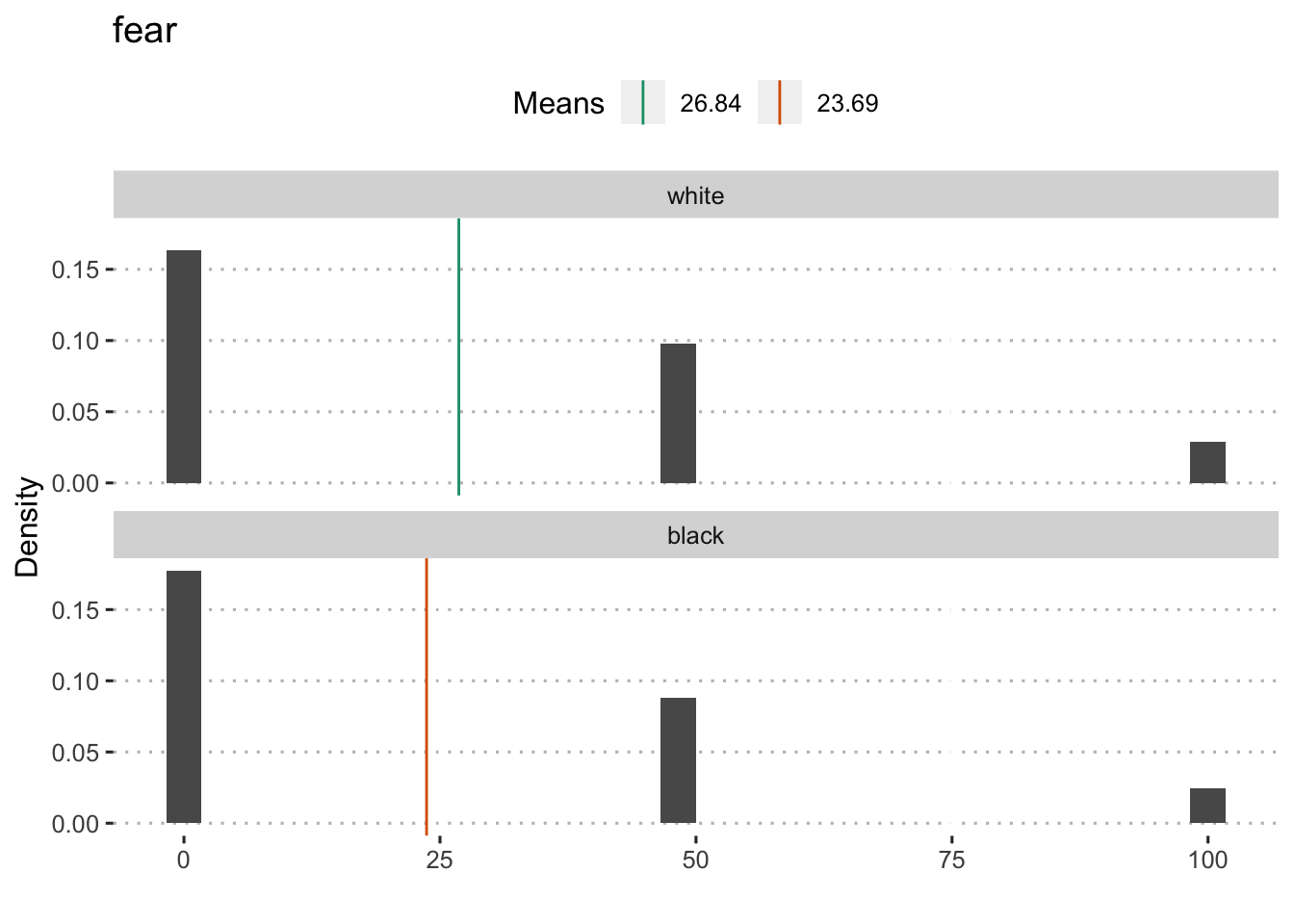
##
## Welch Two Sample t-test
##
## data: fear by compare1
## t = 2.5303, df = 967.79, p-value = 0.01155
## alternative hypothesis: true difference in means is not equal to 0
## 95 percent confidence interval:
## 0.7050749 5.5782944
## sample estimates:
## mean in group 0 mean in group 1
## 26.83620 23.69452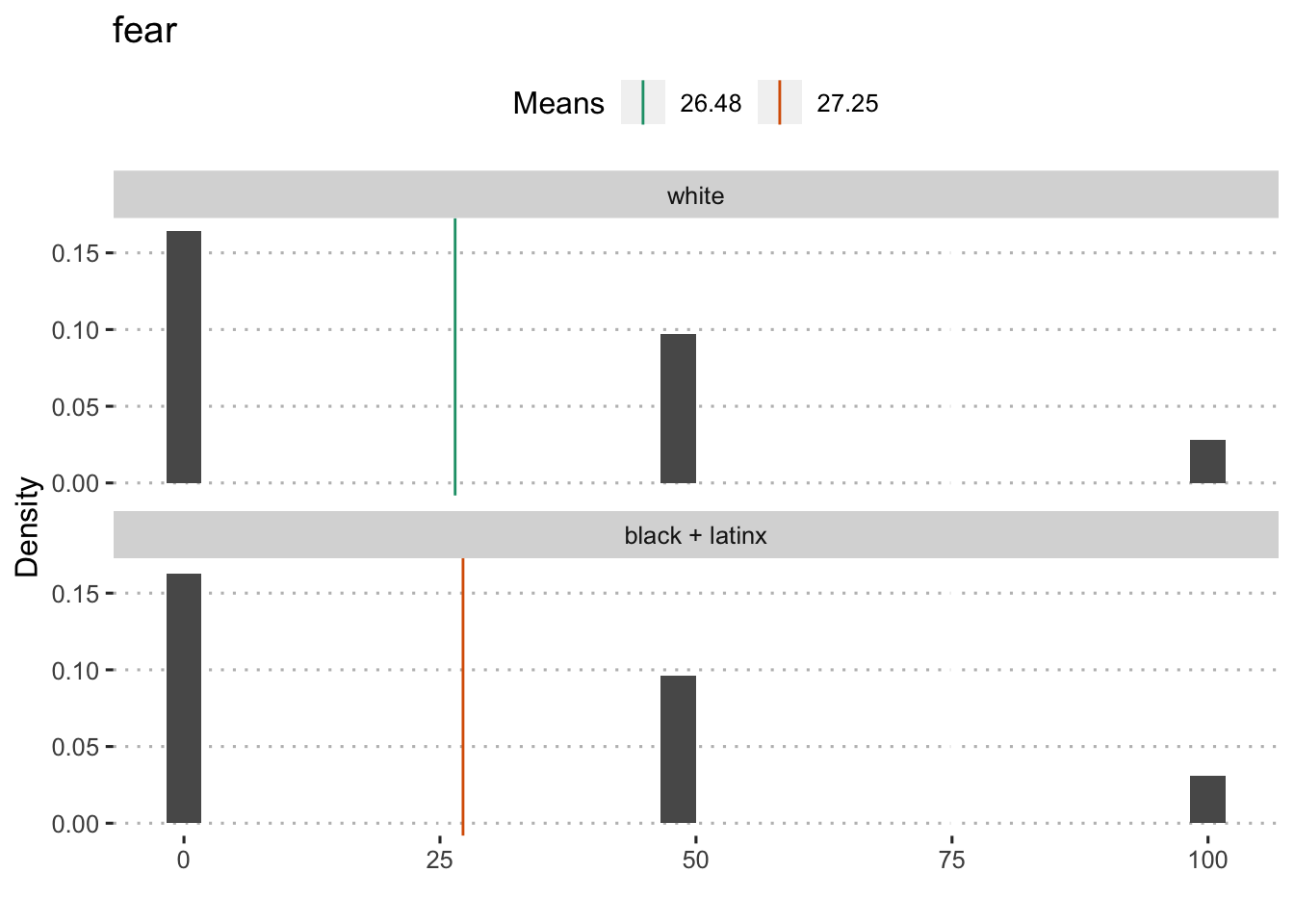
##
## Welch Two Sample t-test
##
## data: fear by compare2
## t = -0.90295, df = 3822.2, p-value = 0.3666
## alternative hypothesis: true difference in means is not equal to 0
## 95 percent confidence interval:
## -2.436724 0.899994
## sample estimates:
## mean in group 0 mean in group 1
## 26.48129 27.24965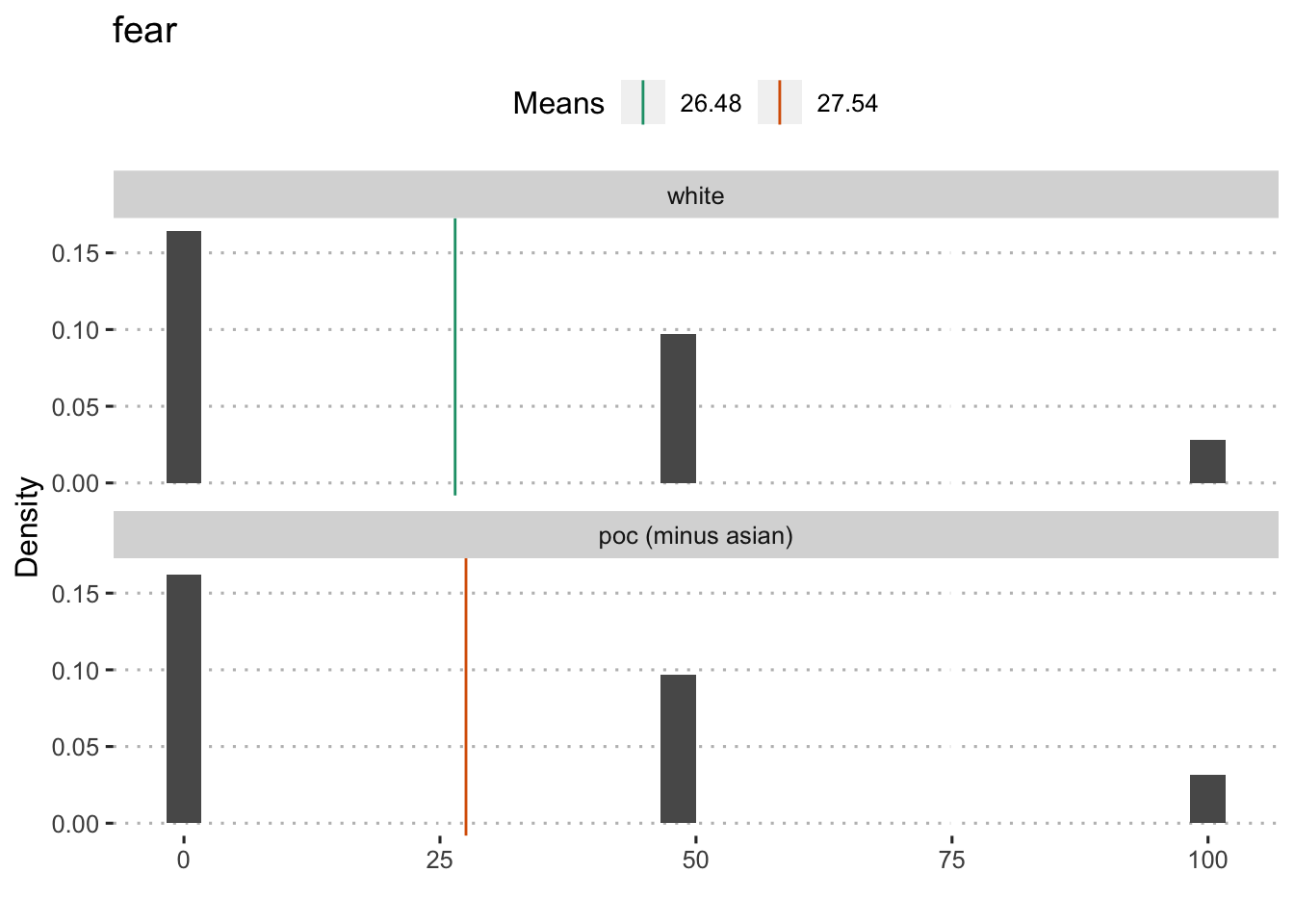
##
## Welch Two Sample t-test
##
## data: fear by compare3
## t = -1.3103, df = 4723.8, p-value = 0.1902
## alternative hypothesis: true difference in means is not equal to 0
## 95 percent confidence interval:
## -2.6390822 0.5246155
## sample estimates:
## mean in group 0 mean in group 1
## 26.48129 27.53852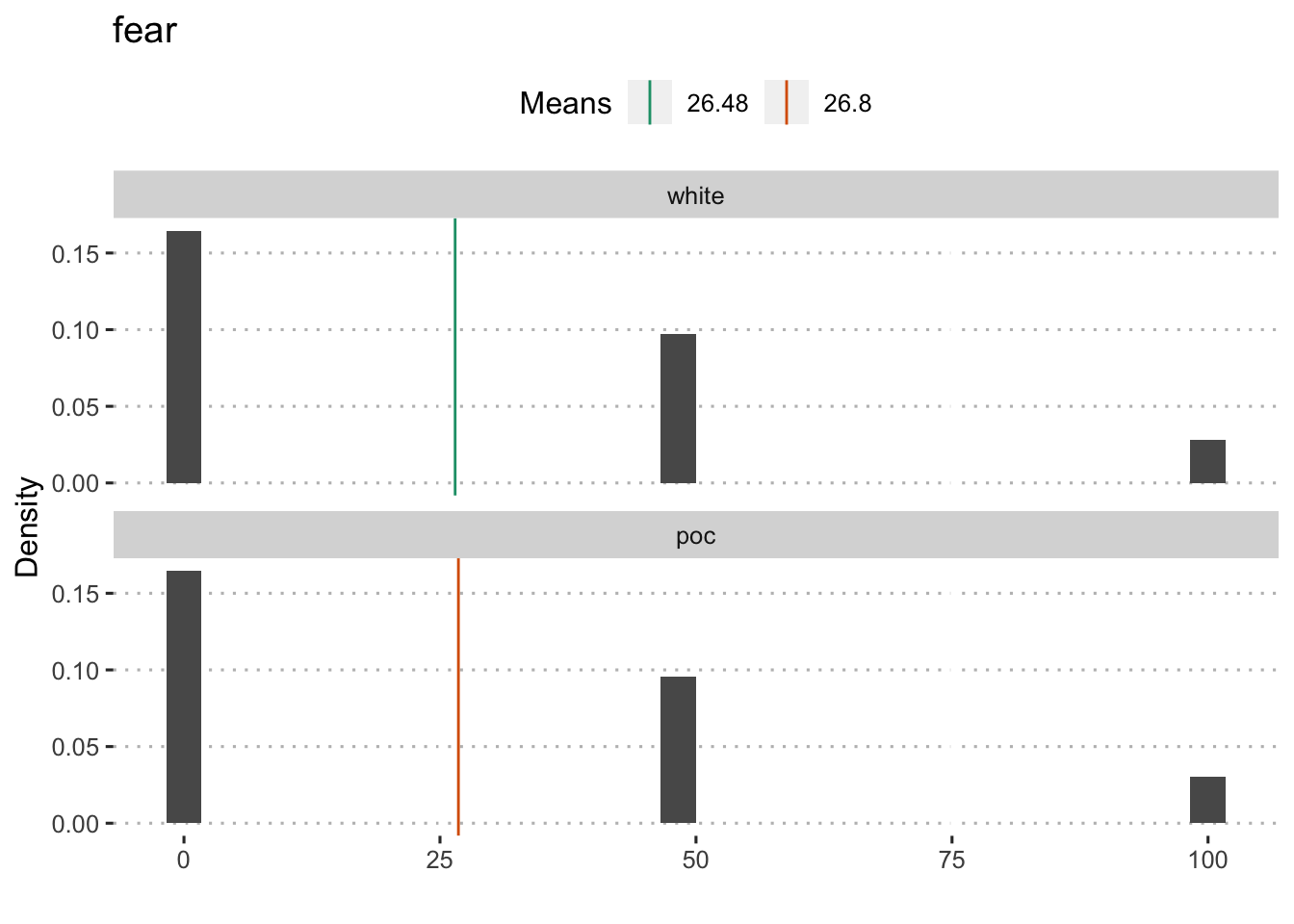
##
## Welch Two Sample t-test
##
## data: fear by compare4
## t = -0.41279, df = 5598.5, p-value = 0.6798
## alternative hypothesis: true difference in means is not equal to 0
## 95 percent confidence interval:
## -1.825851 1.190675
## sample estimates:
## mean in group 0 mean in group 1
## 26.48129 26.79888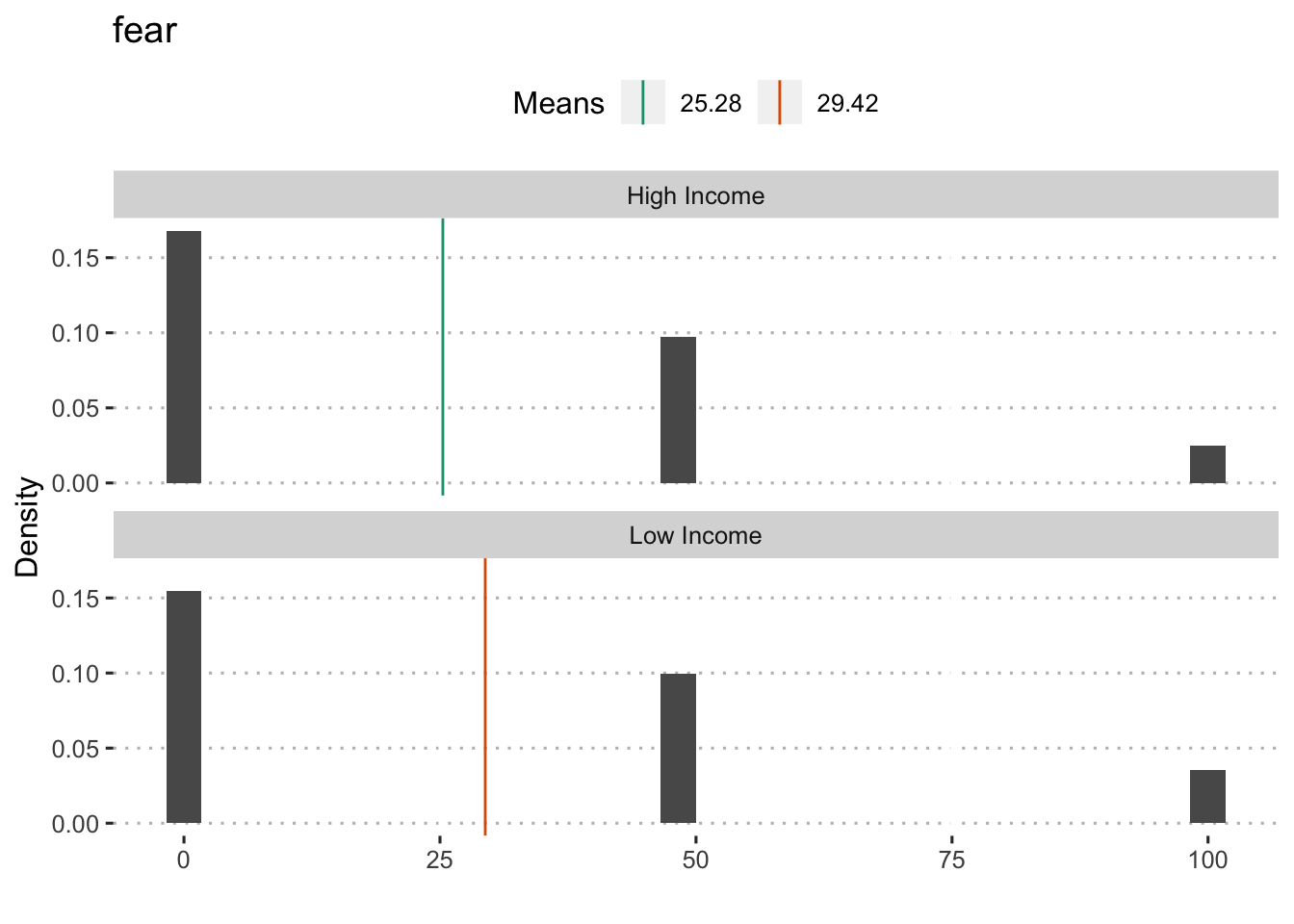
## Analysis of Variance Table
##
## Response: fear
## Df Sum Sq Mean Sq F value Pr(>F)
## poverty150 1 29558 29557.7 26.73 2.398e-07 ***
## Residuals 7780 8602974 1105.8
## ---
## Signif. codes: 0 '***' 0.001 '**' 0.01 '*' 0.05 '.' 0.1 ' ' 1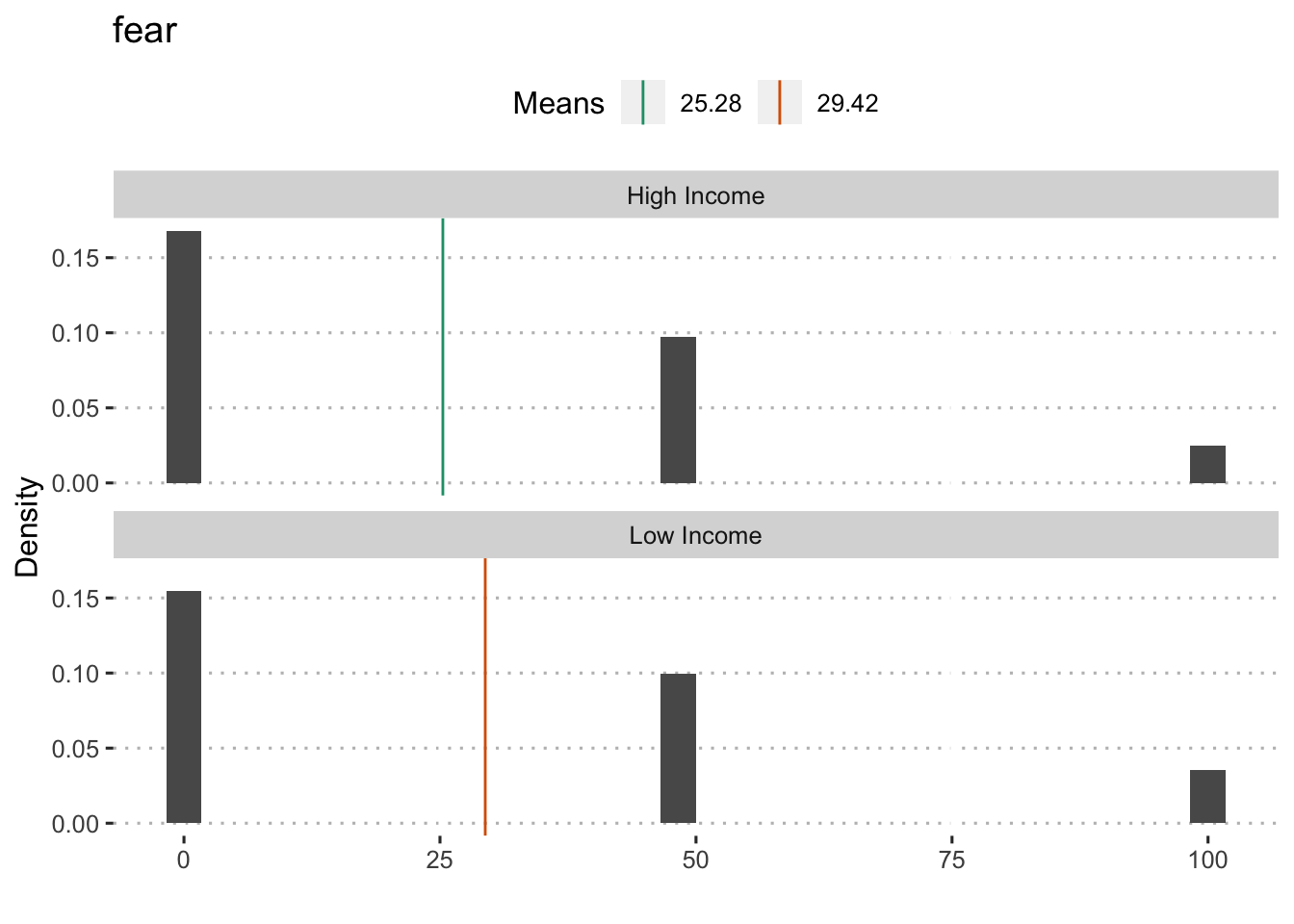
## Analysis of Variance Table
##
## Response: fear
## Df Sum Sq Mean Sq F value Pr(>F)
## poverty150 1 29558 29557.7 26.73 2.398e-07 ***
## Residuals 7780 8602974 1105.8
## ---
## Signif. codes: 0 '***' 0.001 '**' 0.01 '*' 0.05 '.' 0.1 ' ' 1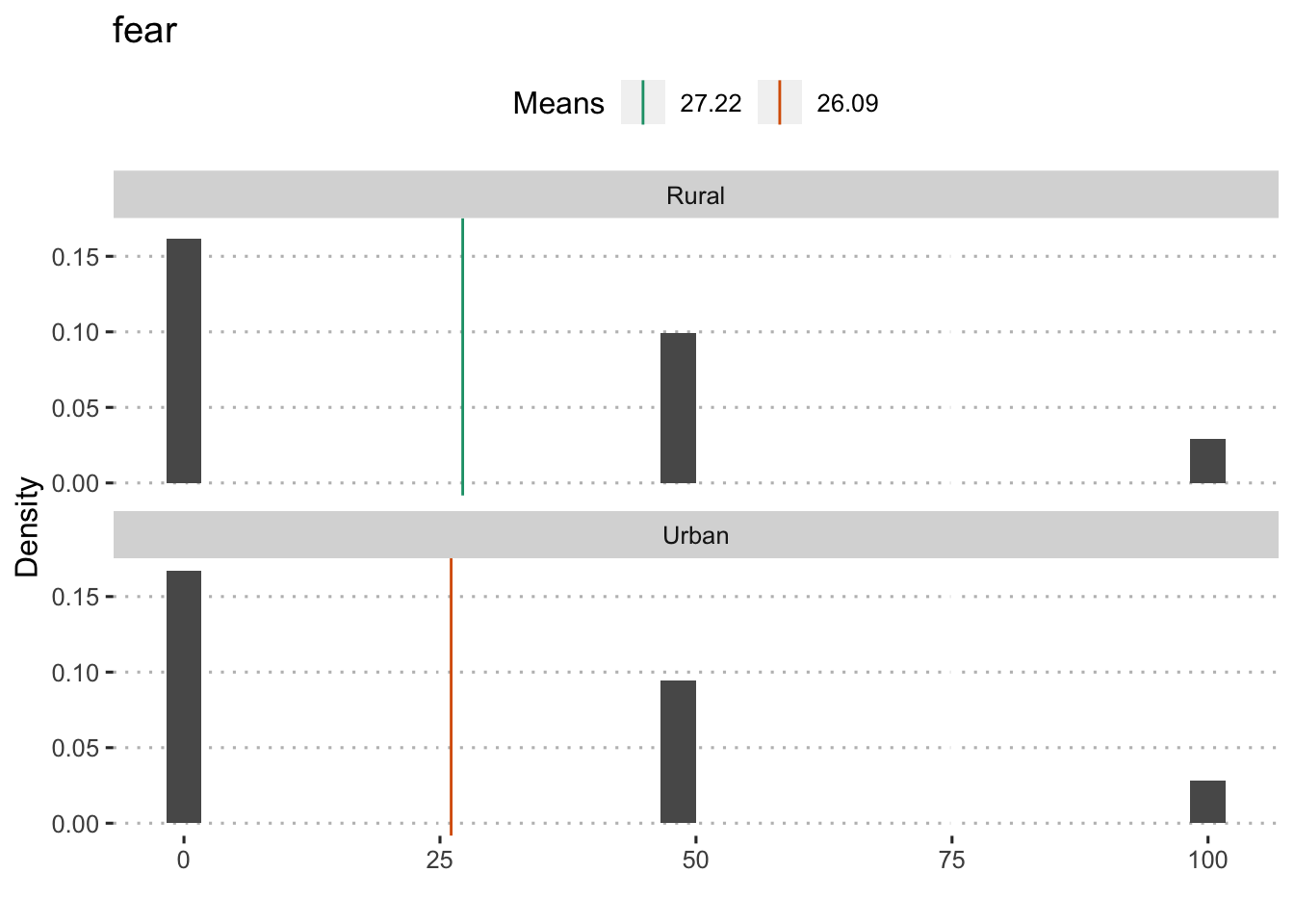
##
## Welch Two Sample t-test
##
## data: fear by rural
## t = 1.1802, df = 3773.5, p-value = 0.238
## alternative hypothesis: true difference in means is not equal to 0
## 95 percent confidence interval:
## -0.7472624 3.0076203
## sample estimates:
## mean in group rural mean in group urban
## 27.22300 26.09282Work benefits
Income
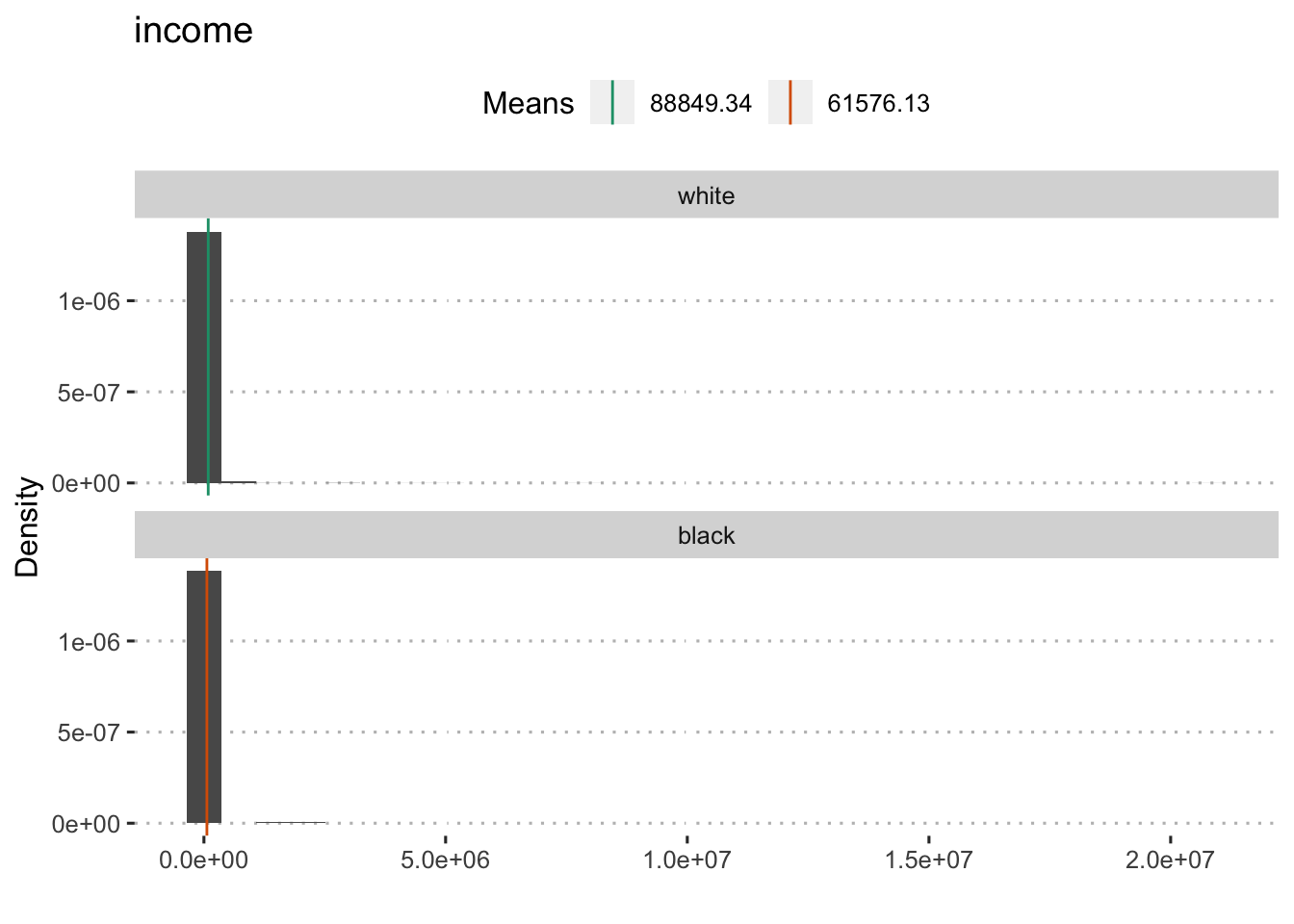
##
## Welch Two Sample t-test
##
## data: income by compare1
## t = 2.4216, df = 755.97, p-value = 0.01569
## alternative hypothesis: true difference in means is not equal to 0
## 95 percent confidence interval:
## 5164.122 49382.310
## sample estimates:
## mean in group 0 mean in group 1
## 88849.34 61576.13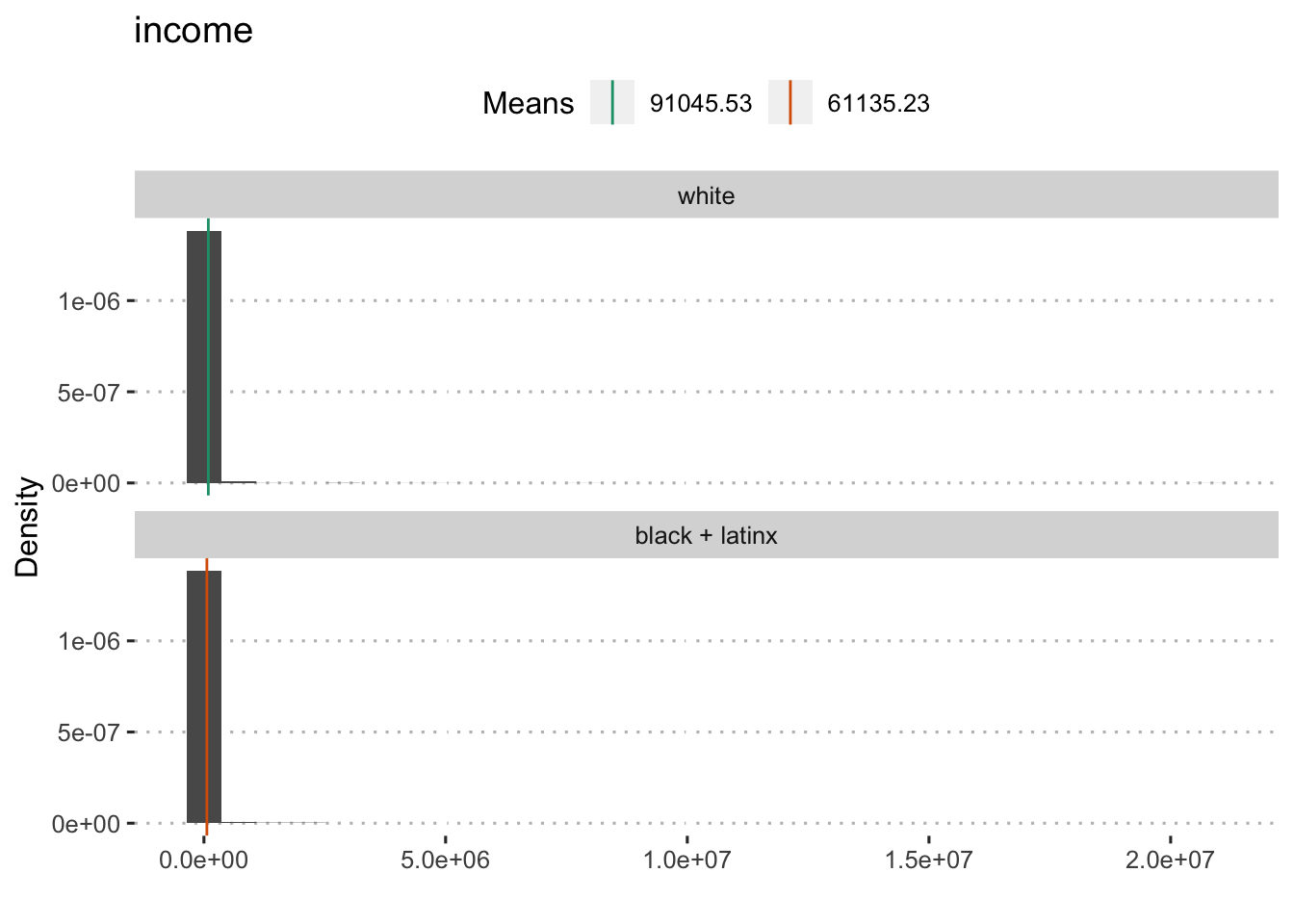
##
## Welch Two Sample t-test
##
## data: income by compare2
## t = 3.4932, df = 3904, p-value = 0.0004827
## alternative hypothesis: true difference in means is not equal to 0
## 95 percent confidence interval:
## 13122.79 46697.80
## sample estimates:
## mean in group 0 mean in group 1
## 91045.53 61135.23
##
## Welch Two Sample t-test
##
## data: income by compare3
## t = 3.7733, df = 3904.6, p-value = 0.0001635
## alternative hypothesis: true difference in means is not equal to 0
## 95 percent confidence interval:
## 15161.87 47959.16
## sample estimates:
## mean in group 0 mean in group 1
## 91045.53 59485.01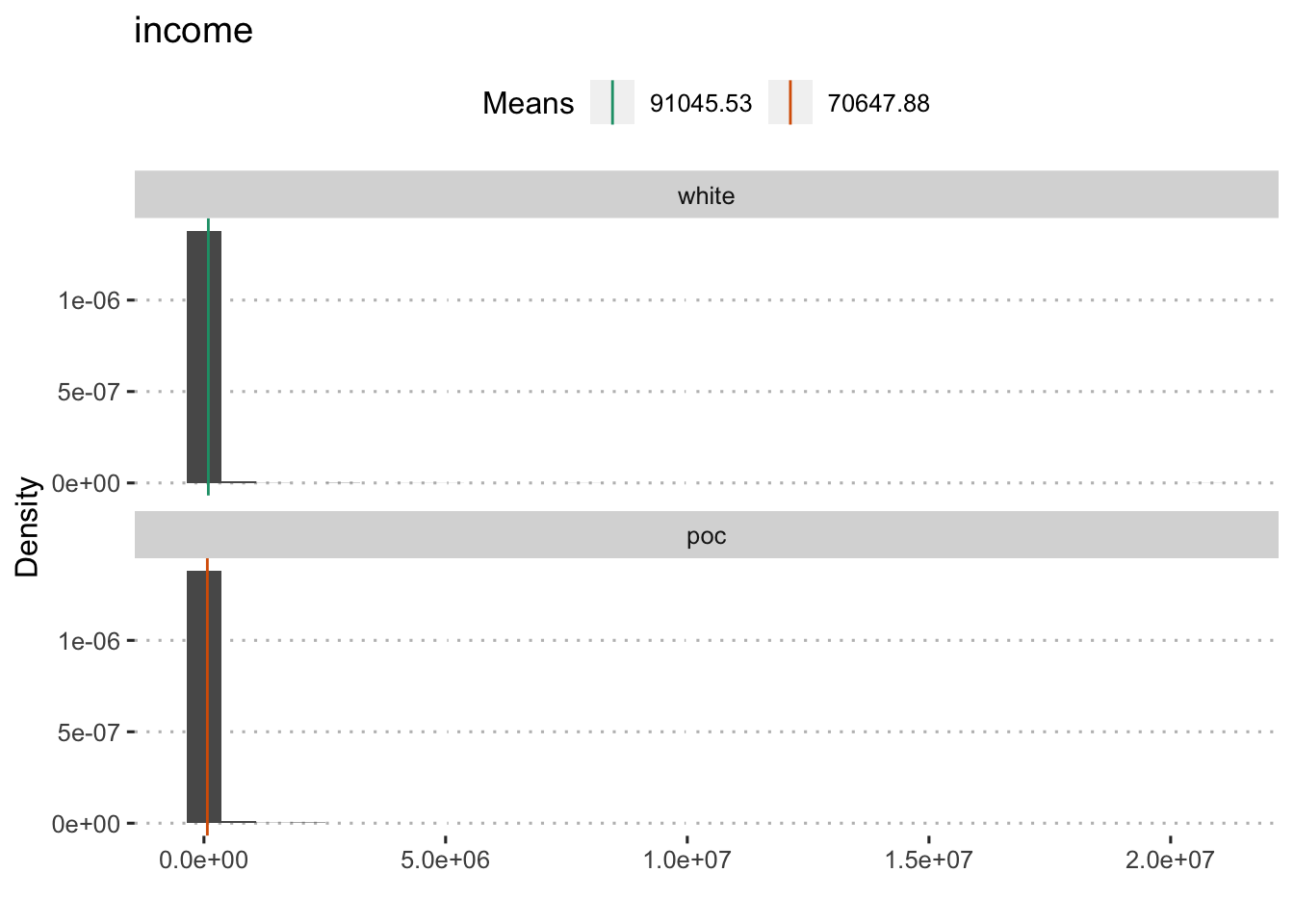
##
## Welch Two Sample t-test
##
## data: income by compare4
## t = 2.3625, df = 4131, p-value = 0.0182
## alternative hypothesis: true difference in means is not equal to 0
## 95 percent confidence interval:
## 3470.649 37324.641
## sample estimates:
## mean in group 0 mean in group 1
## 91045.53 70647.88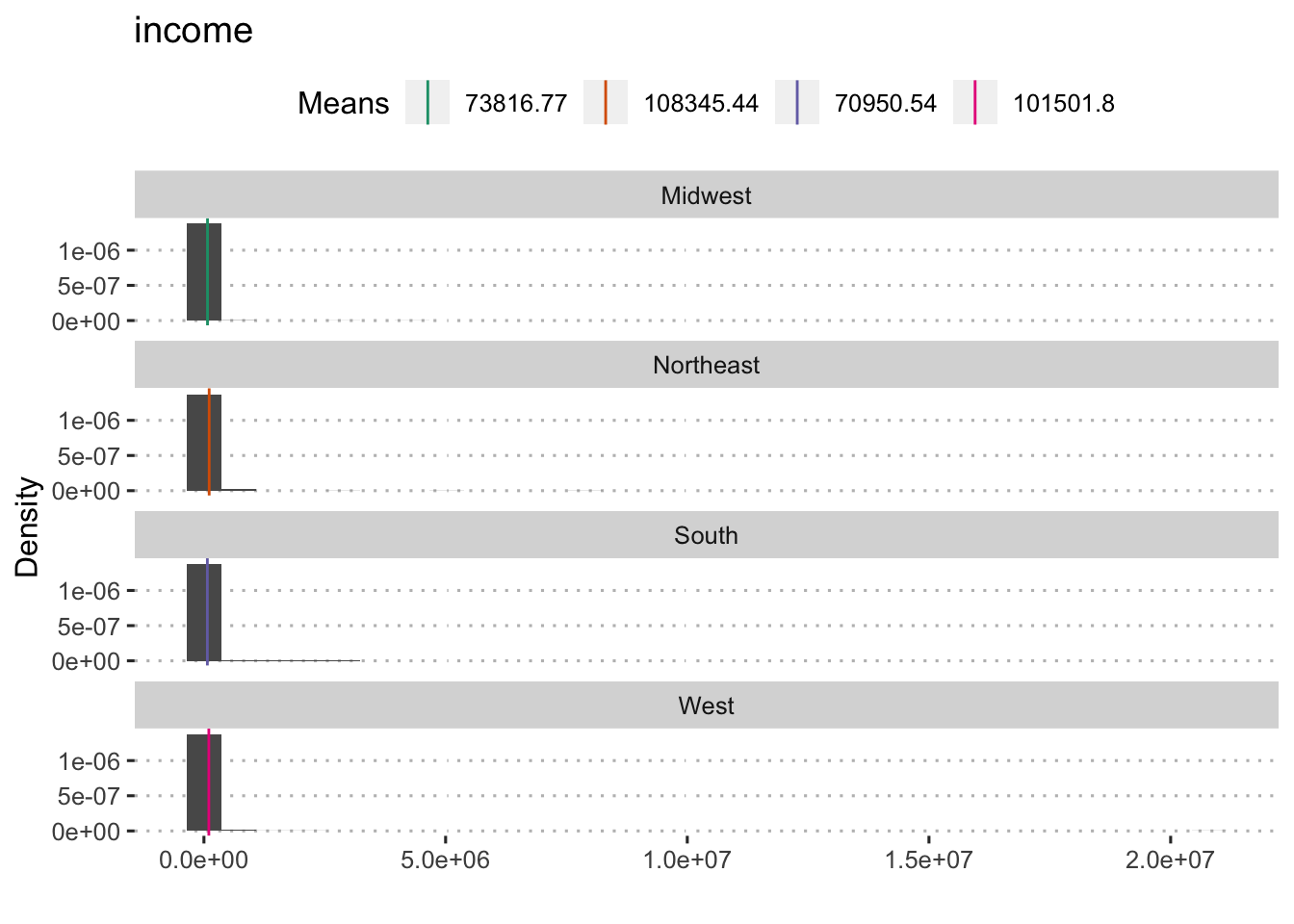
## Analysis of Variance Table
##
## Response: income
## Df Sum Sq Mean Sq F value Pr(>F)
## region 3 1.0970e+12 3.6567e+11 2.6299 0.04848 *
## Residuals 4273 5.9412e+14 1.3904e+11
## ---
## Signif. codes: 0 '***' 0.001 '**' 0.01 '*' 0.05 '.' 0.1 ' ' 1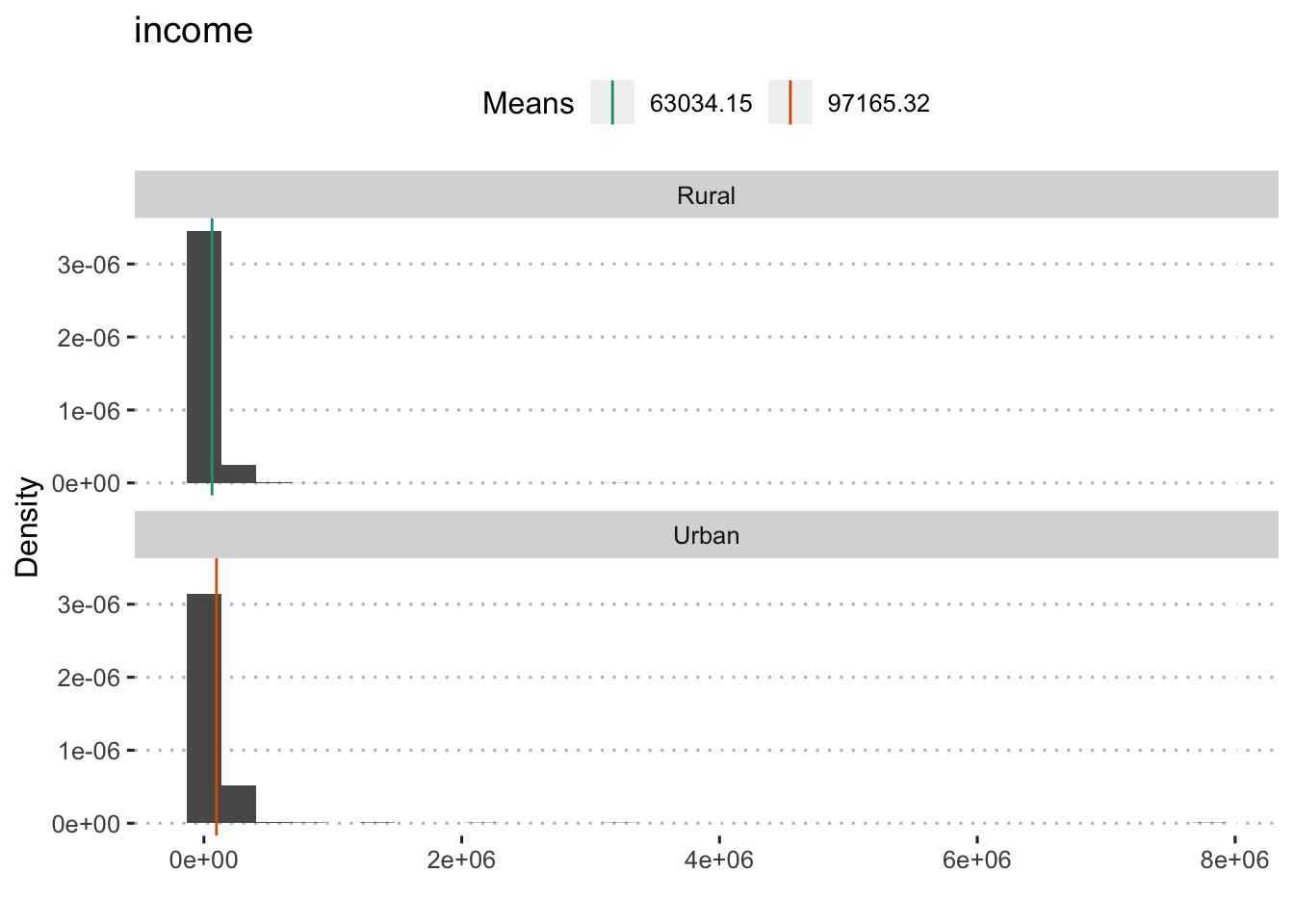
##
## Welch Two Sample t-test
##
## data: income by rural
## t = -3.2647, df = 952.12, p-value = 0.001135
## alternative hypothesis: true difference in means is not equal to 0
## 95 percent confidence interval:
## -54647.98 -13614.37
## sample estimates:
## mean in group rural mean in group urban
## 63034.15 97165.32Sick Leave
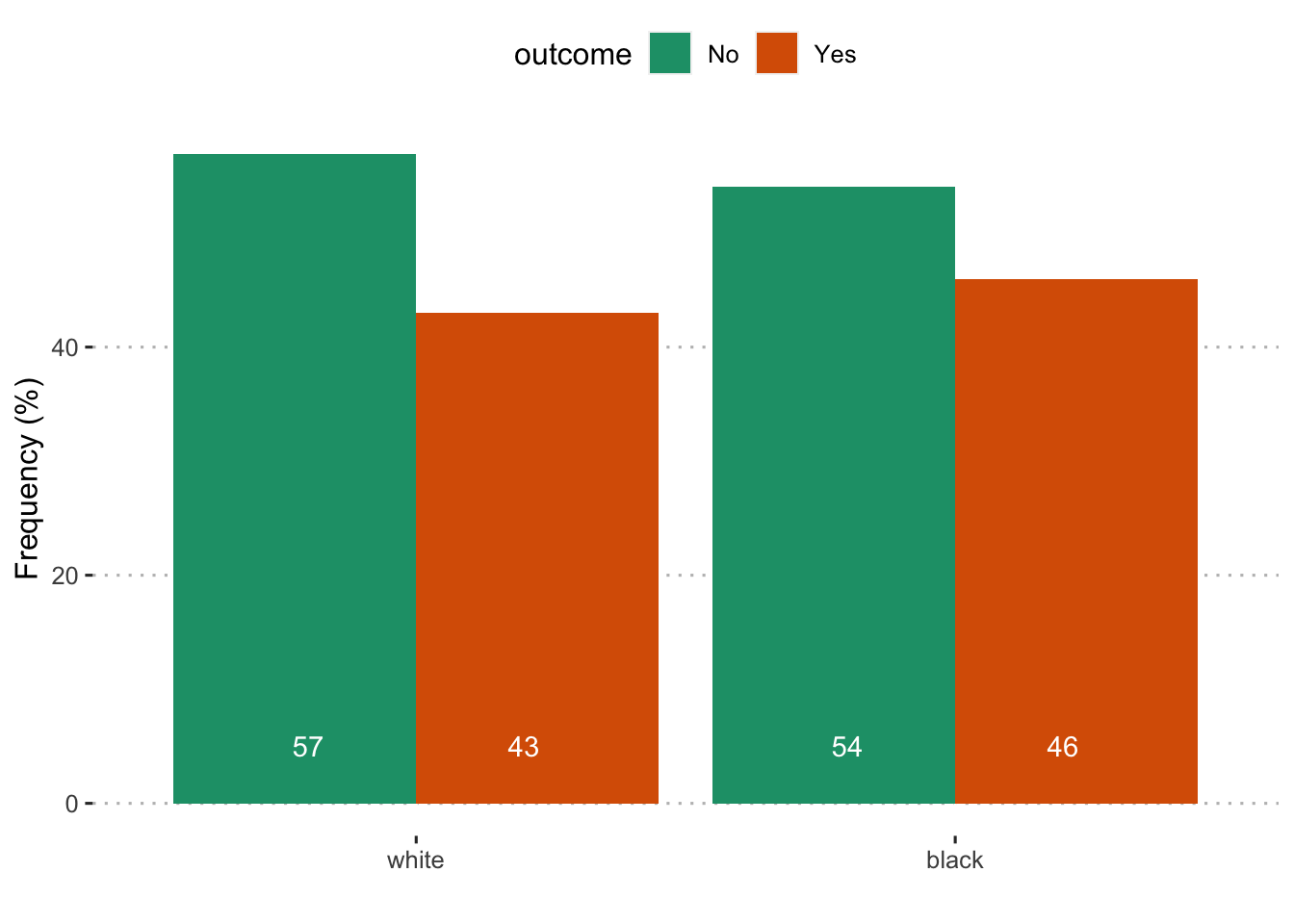
##
## Pearson's Chi-squared test with Yates' continuity correction
##
## data: scored$sick_leave and scored$compare1
## X-squared = 1.4212, df = 1, p-value = 0.2332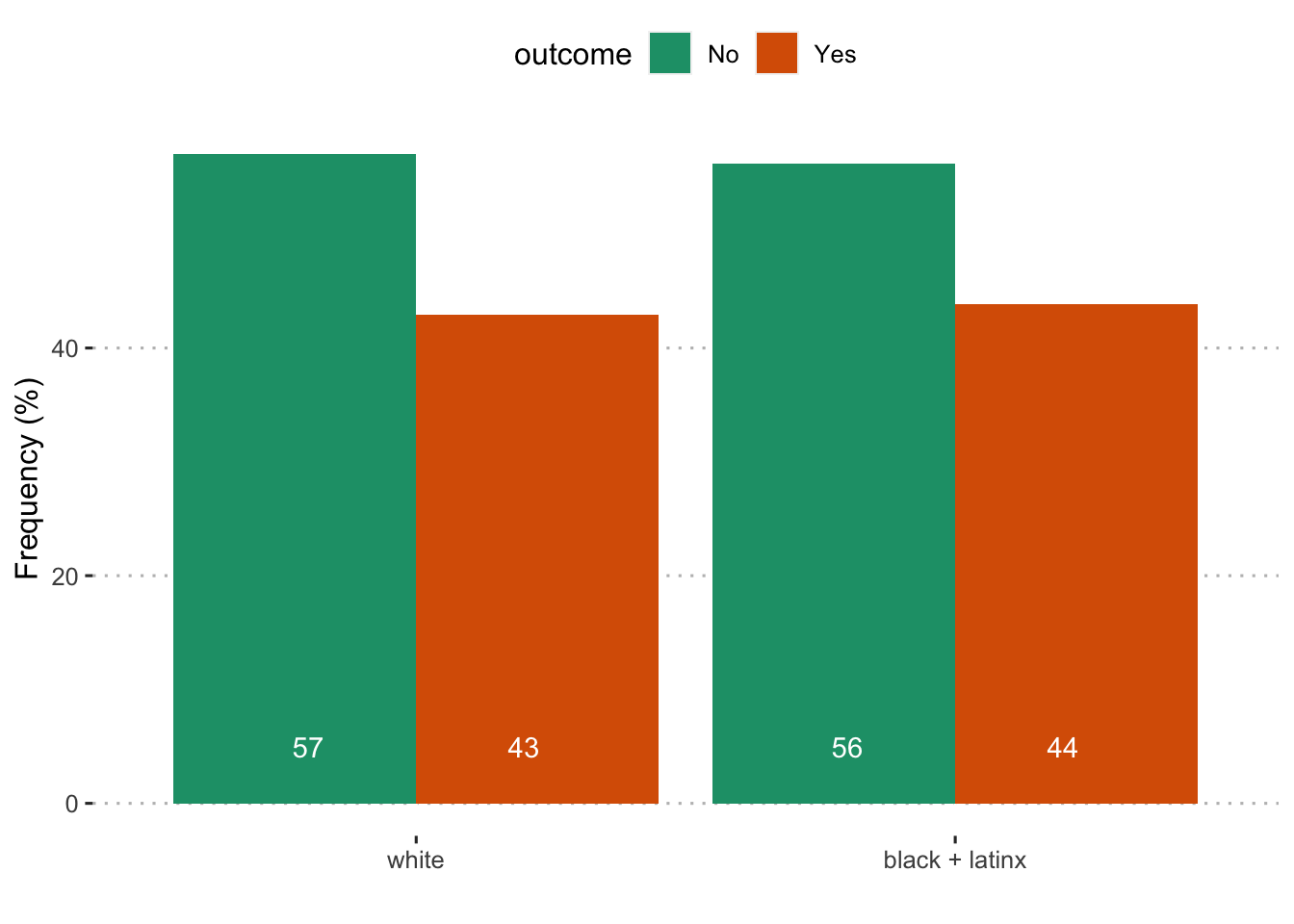
##
## Pearson's Chi-squared test with Yates' continuity correction
##
## data: scored$sick_leave and scored$compare2
## X-squared = 0.27466, df = 1, p-value = 0.6002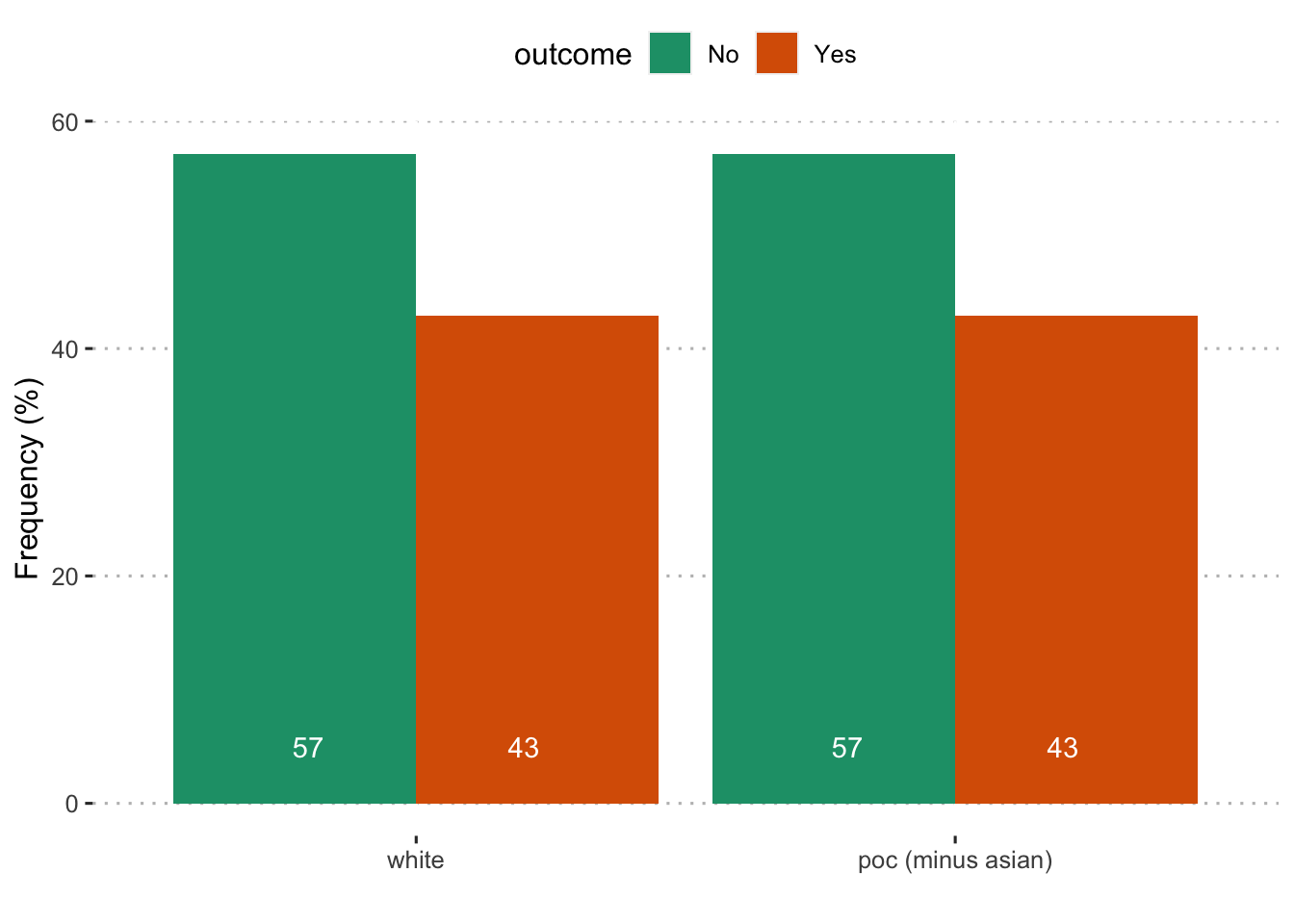
##
## Pearson's Chi-squared test with Yates' continuity correction
##
## data: scored$sick_leave and scored$compare3
## X-squared = 0.00024085, df = 1, p-value = 0.9876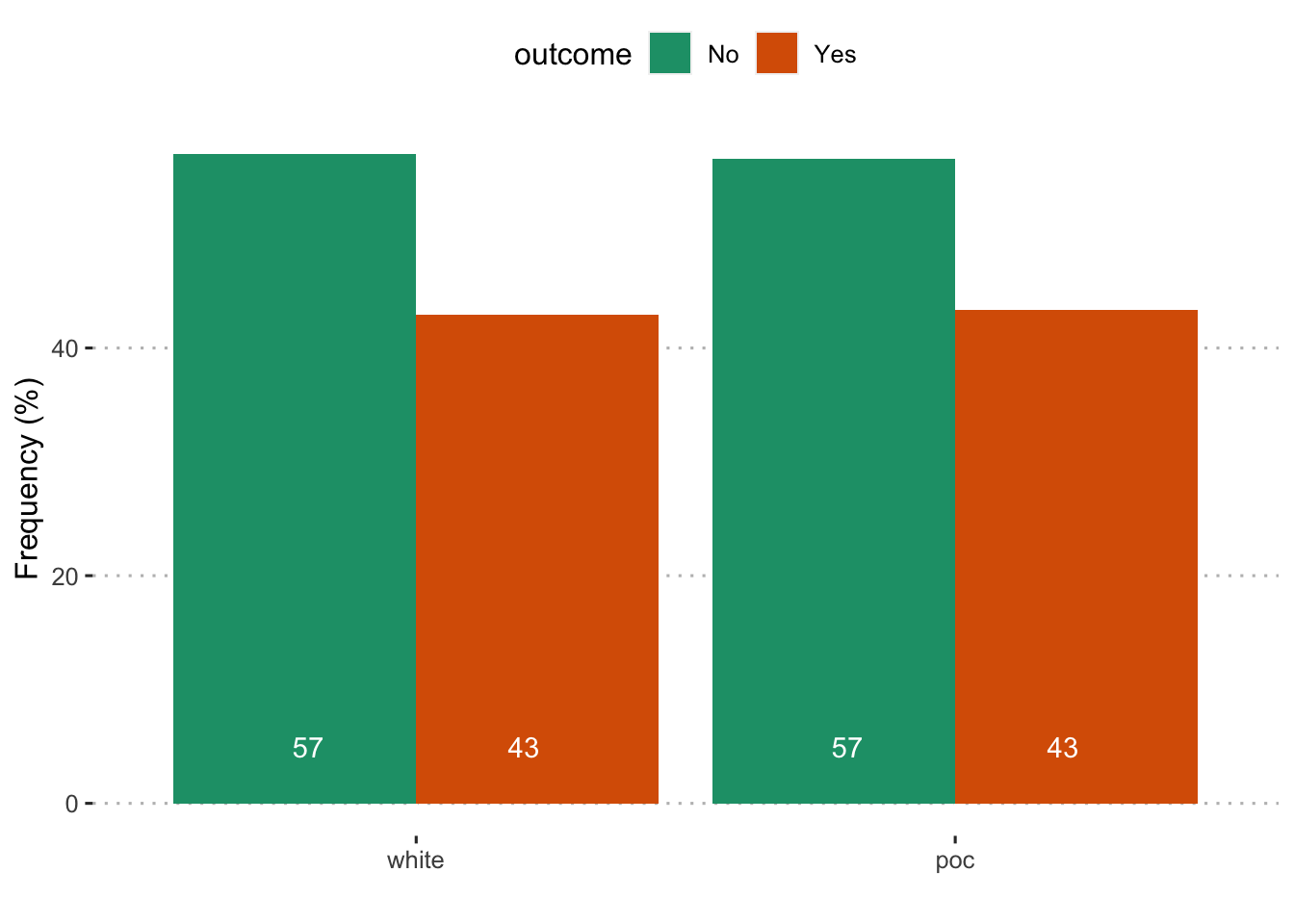
##
## Pearson's Chi-squared test with Yates' continuity correction
##
## data: scored$sick_leave and scored$compare4
## X-squared = 0.074761, df = 1, p-value = 0.7845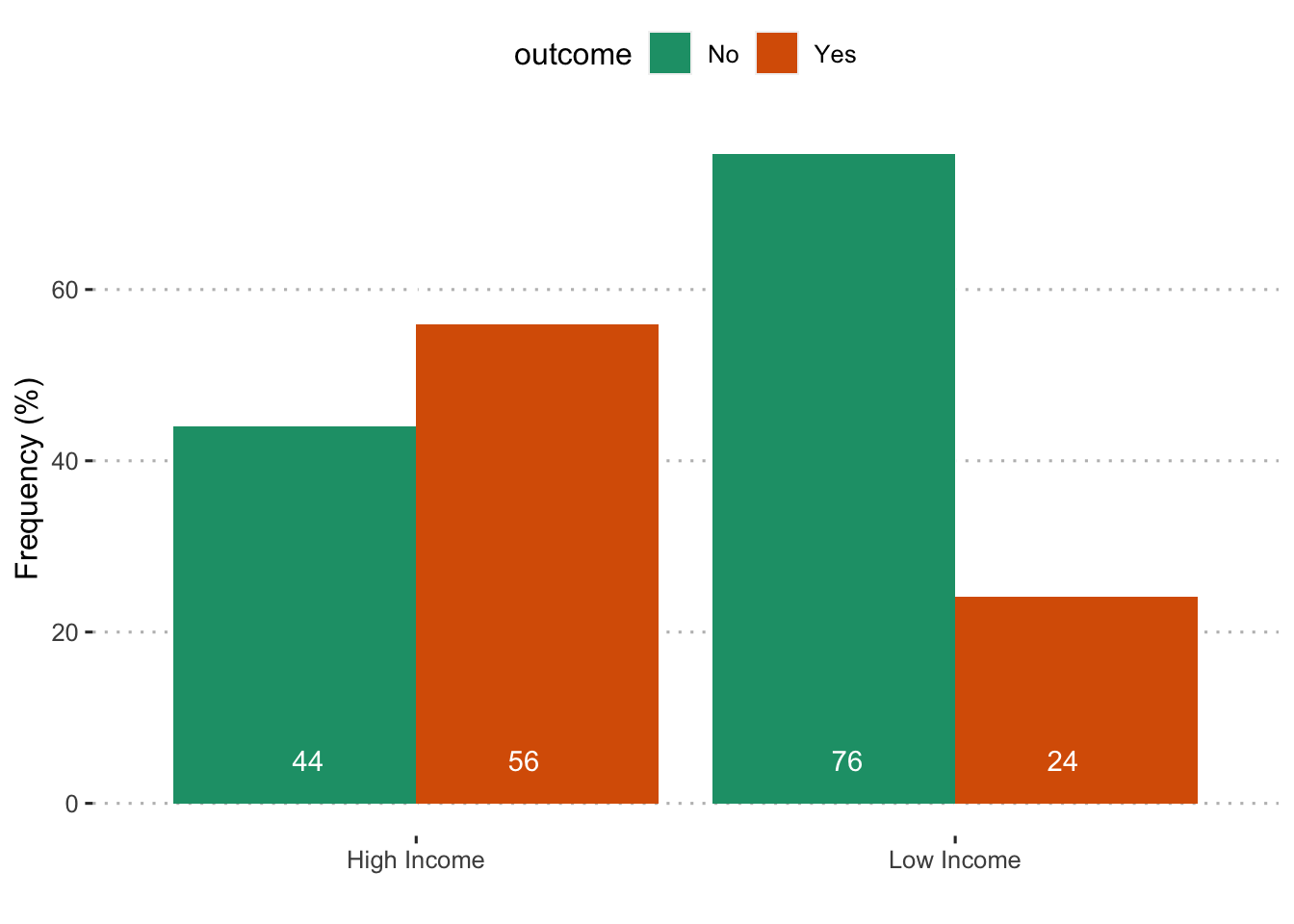
##
## Pearson's Chi-squared test with Yates' continuity correction
##
## data: scored$sick_leave and scored$poverty150
## X-squared = 407.09, df = 1, p-value < 2.2e-16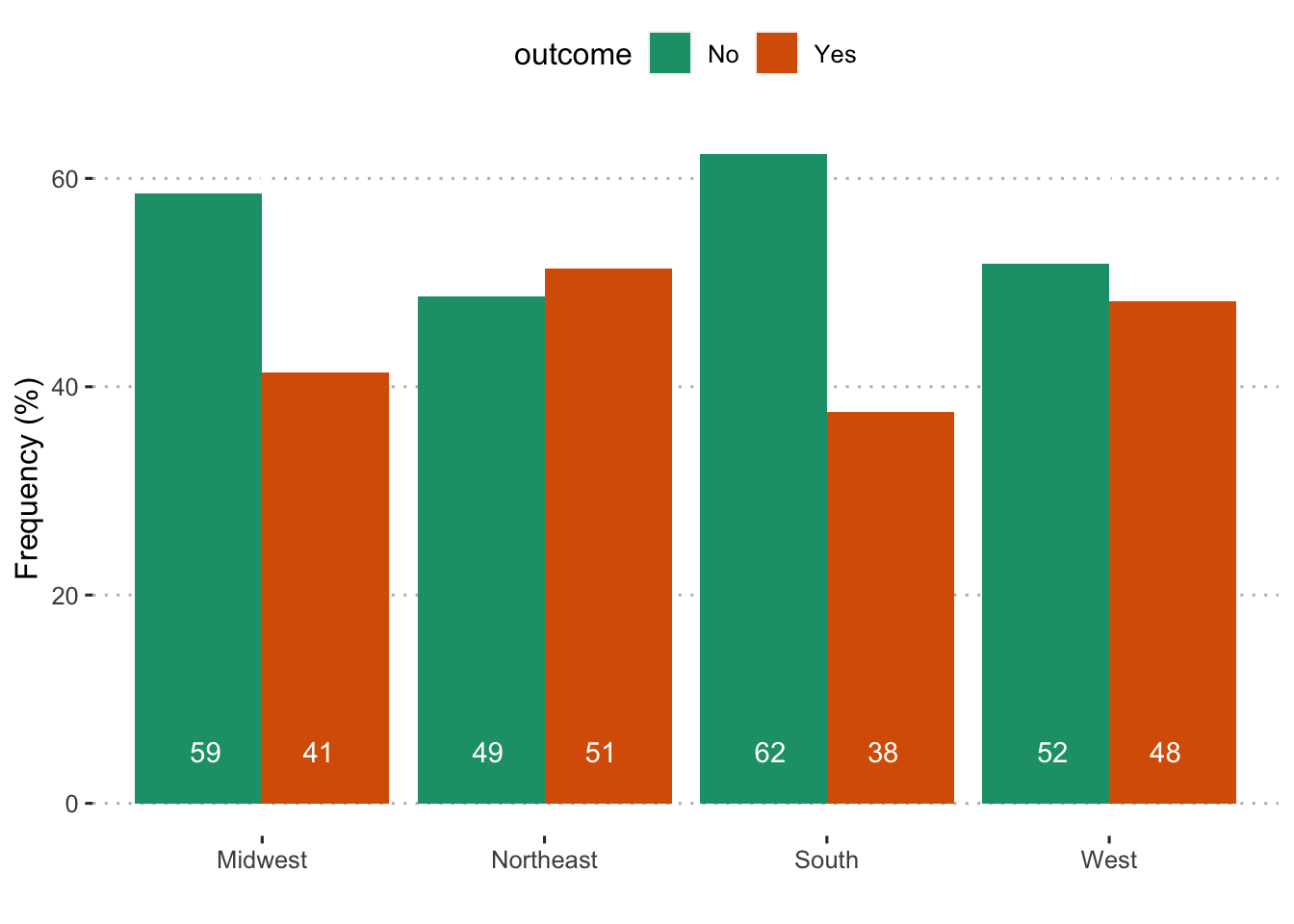
##
## Pearson's Chi-squared test
##
## data: scored$sick_leave and scored$region
## X-squared = 58.52, df = 3, p-value = 1.217e-12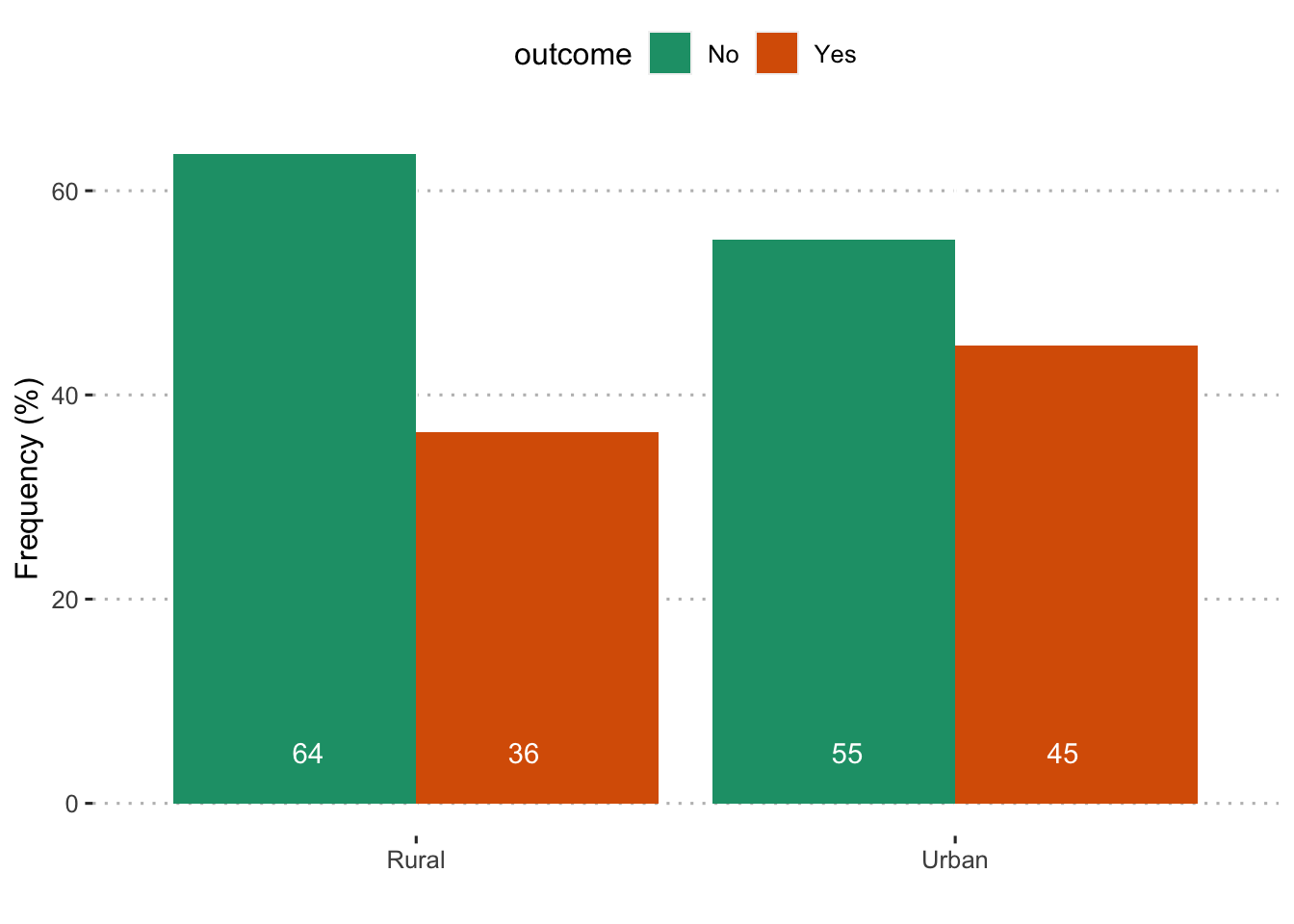
##
## Pearson's Chi-squared test with Yates' continuity correction
##
## data: scored$sick_leave and scored$rural
## X-squared = 21.556, df = 1, p-value = 3.436e-06Employment
Unemployed
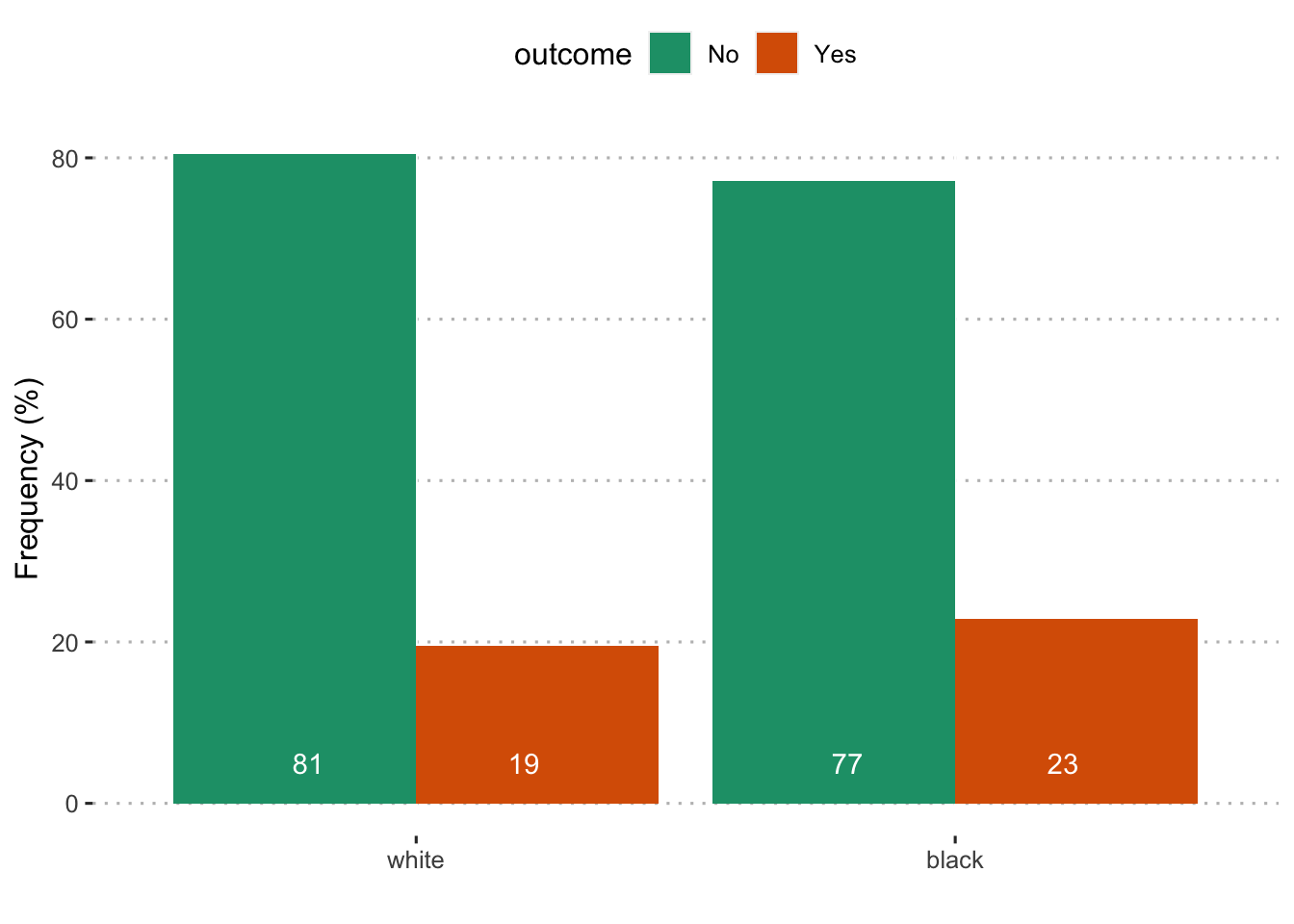
##
## Pearson's Chi-squared test with Yates' continuity correction
##
## data: scored$unemployed and scored$compare1
## X-squared = 4.8389, df = 1, p-value = 0.02783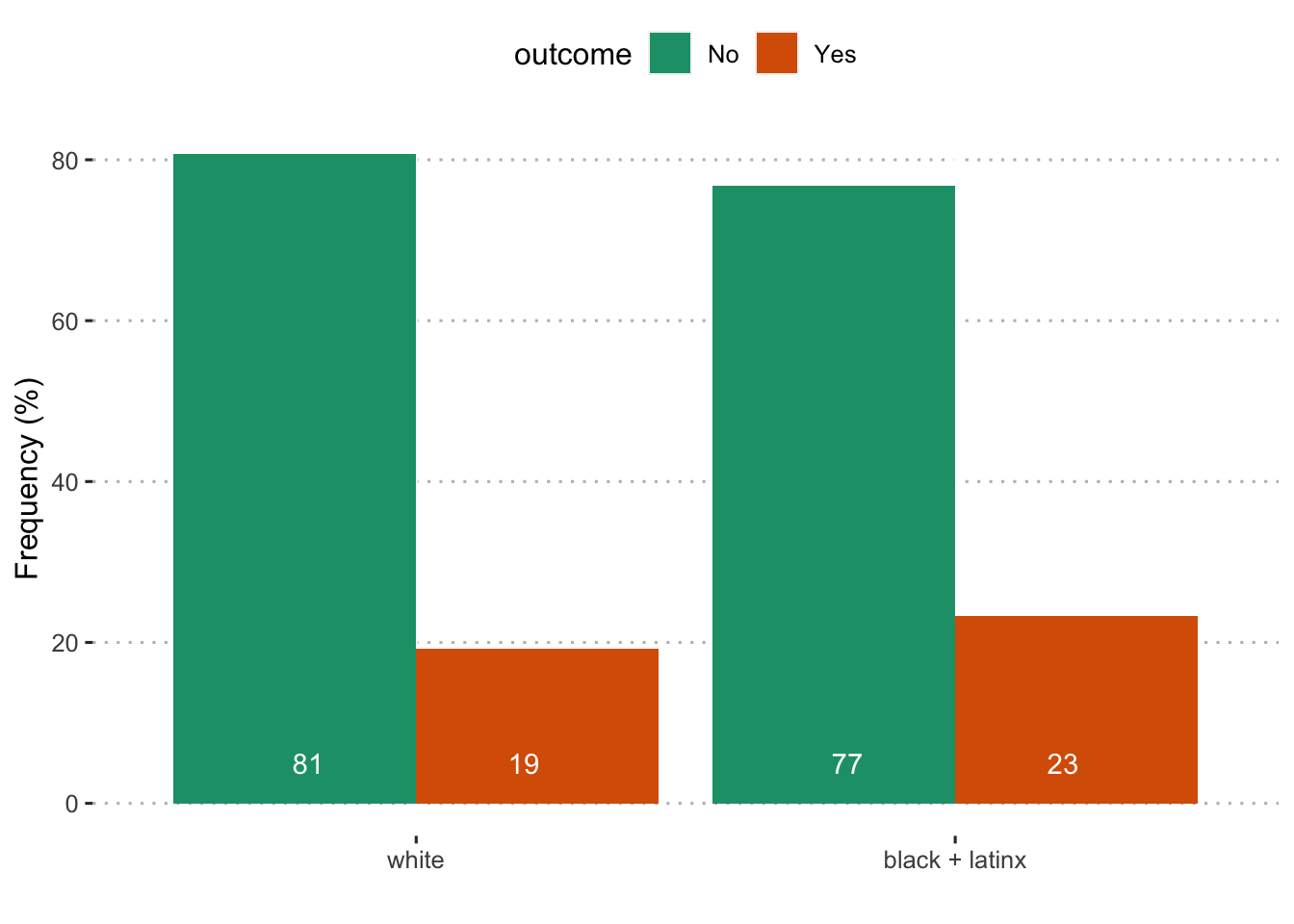
##
## Pearson's Chi-squared test with Yates' continuity correction
##
## data: scored$unemployed and scored$compare2
## X-squared = 15.485, df = 1, p-value = 8.315e-05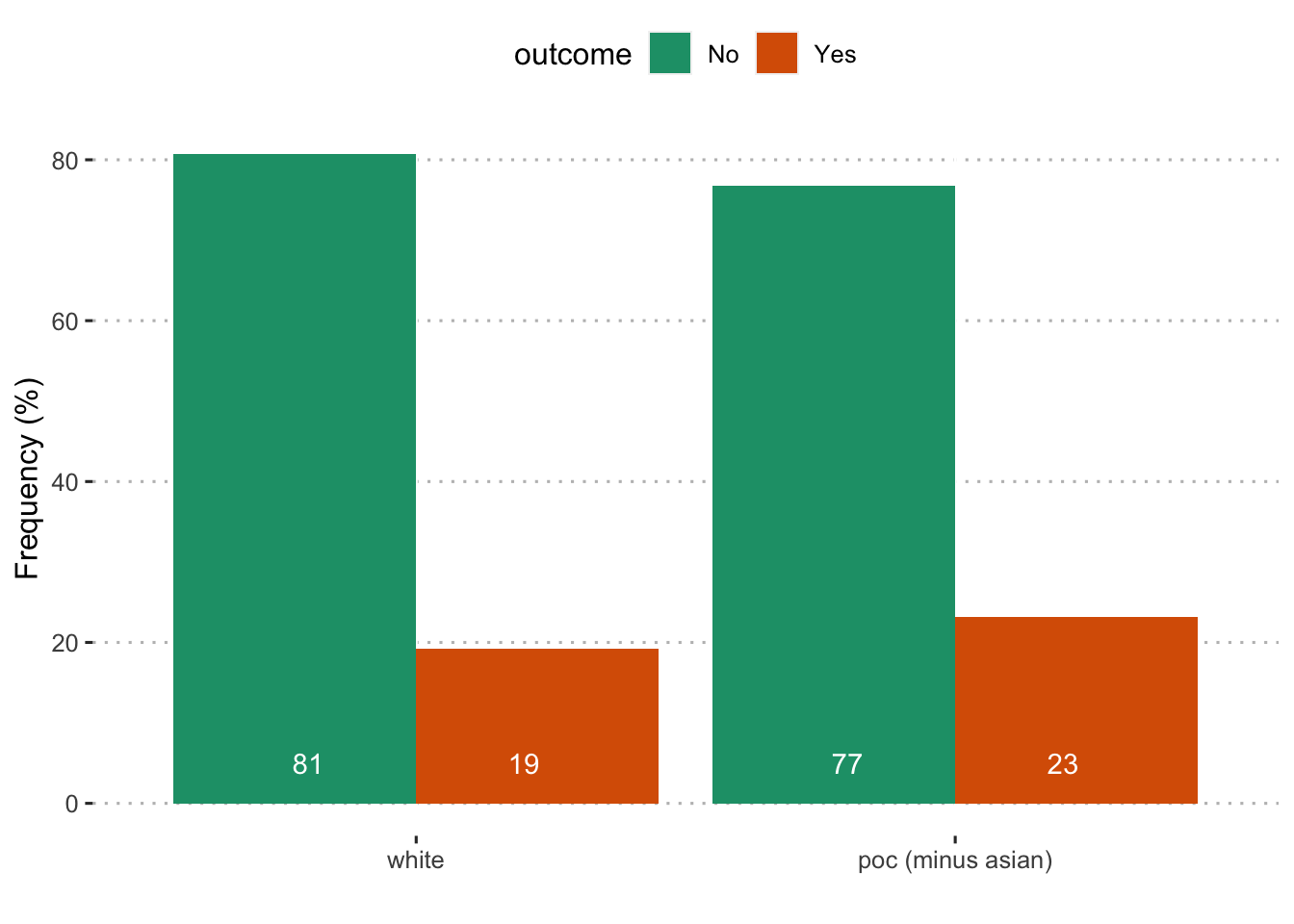
##
## Pearson's Chi-squared test with Yates' continuity correction
##
## data: scored$unemployed and scored$compare3
## X-squared = 17.15, df = 1, p-value = 3.453e-05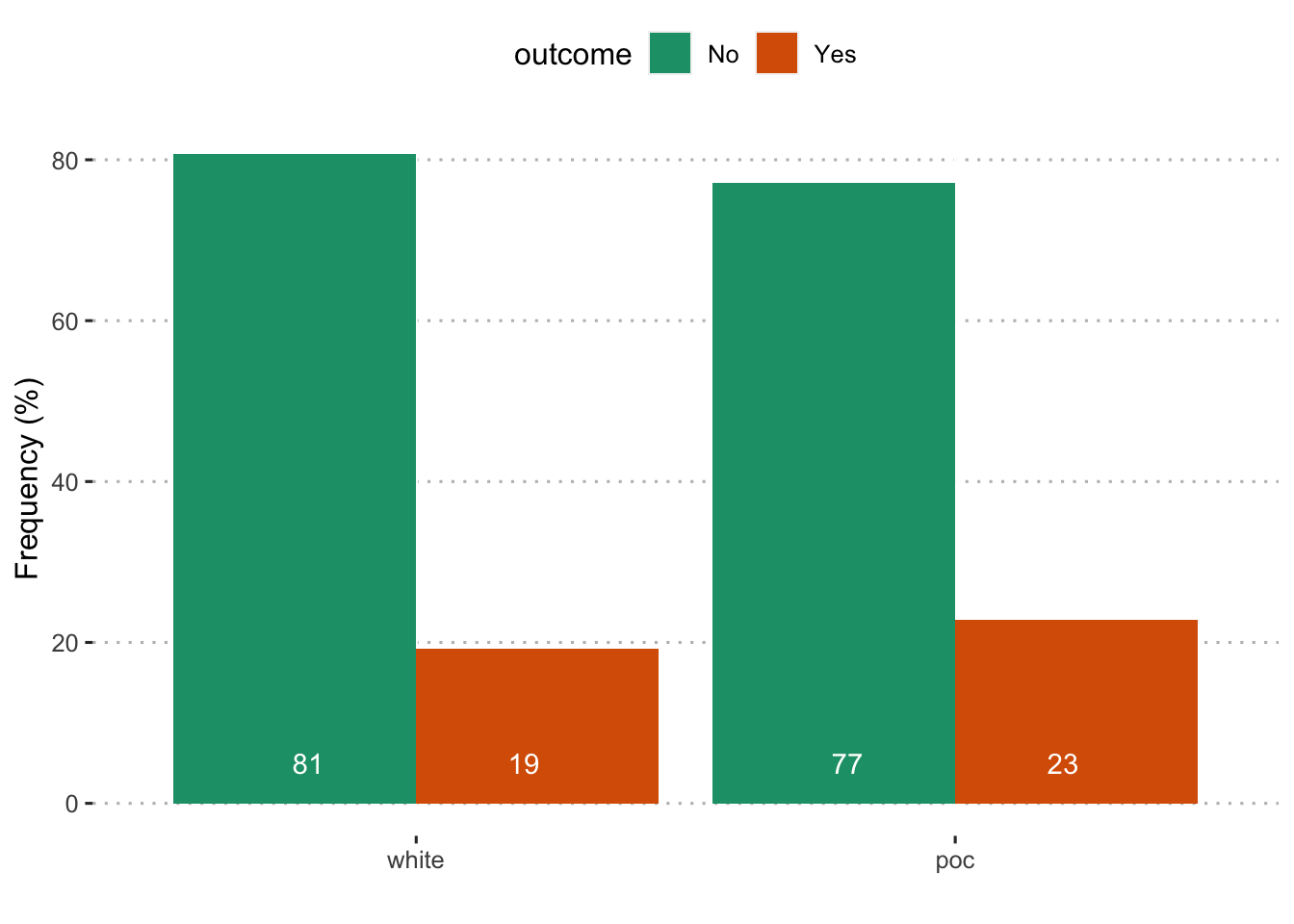
##
## Pearson's Chi-squared test with Yates' continuity correction
##
## data: scored$unemployed and scored$compare4
## X-squared = 14.95, df = 1, p-value = 0.0001104
##
## Pearson's Chi-squared test with Yates' continuity correction
##
## data: scored$unemployed and scored$poverty150
## X-squared = 219.93, df = 1, p-value < 2.2e-16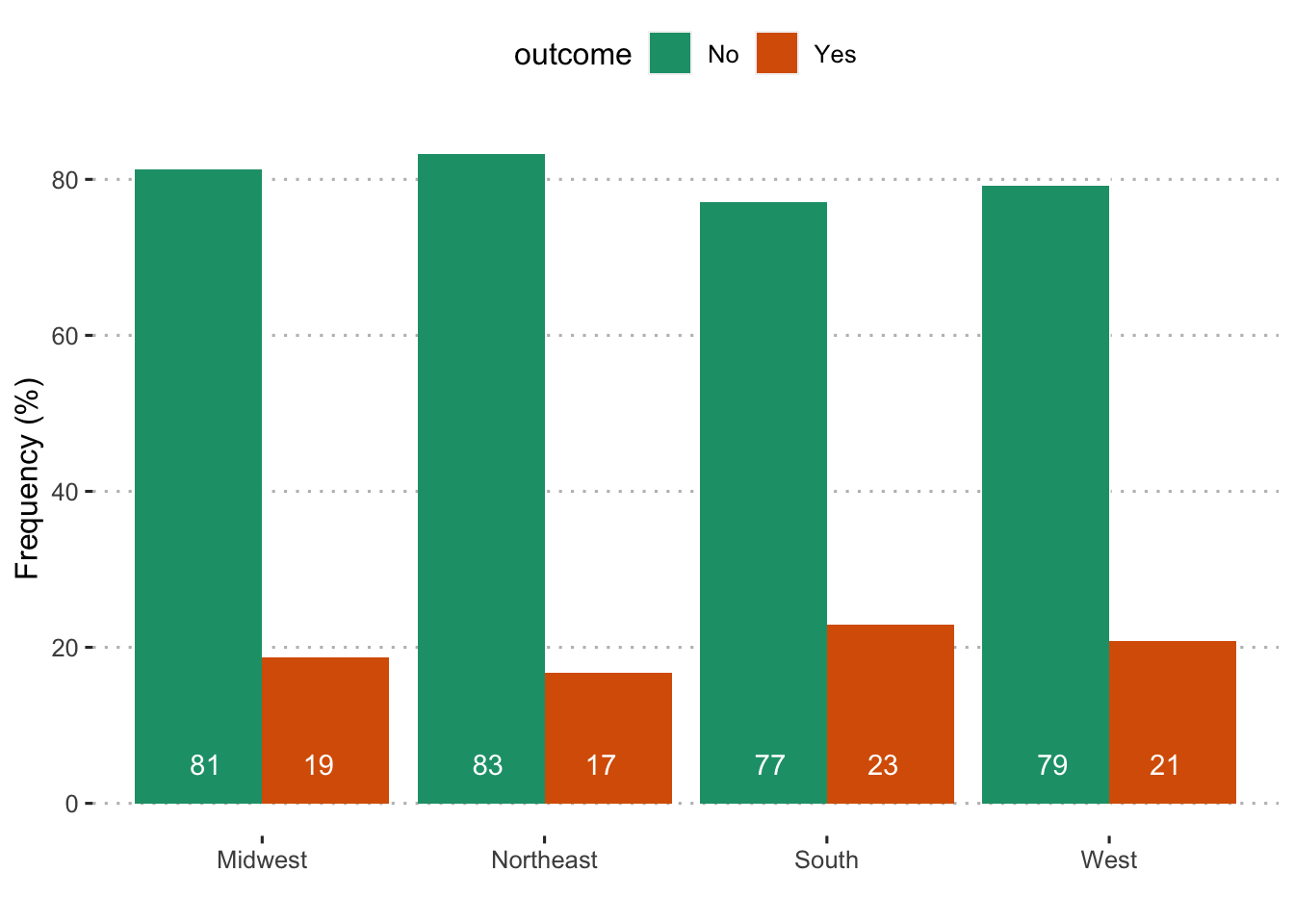
##
## Pearson's Chi-squared test
##
## data: scored$unemployed and scored$region
## X-squared = 27.241, df = 3, p-value = 5.241e-06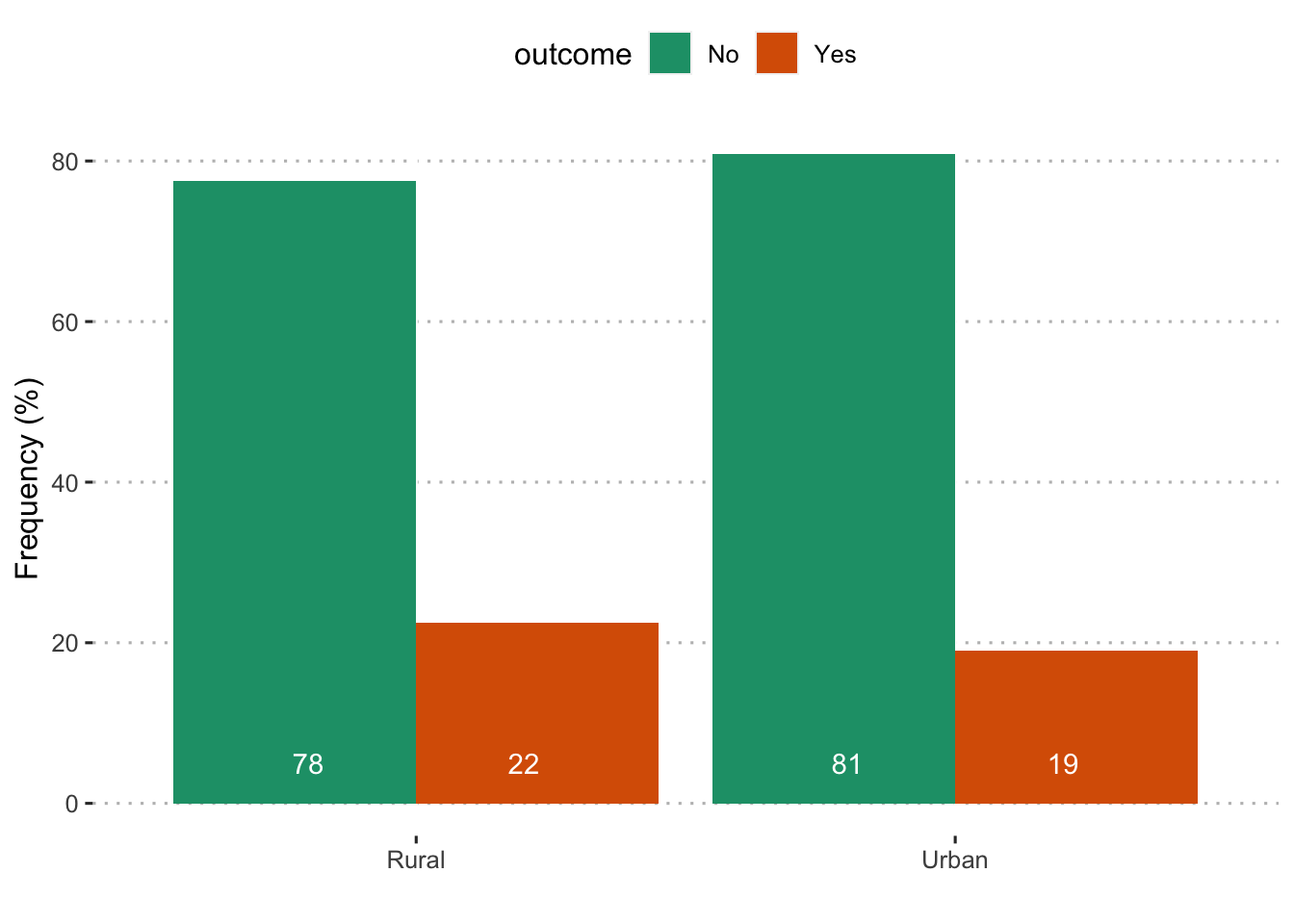
##
## Pearson's Chi-squared test with Yates' continuity correction
##
## data: scored$unemployed and scored$rural
## X-squared = 8.2554, df = 1, p-value = 0.004063Lost employment
“Has your level of employment decreased due to the coronavirus (COVID-19) pandemic?”
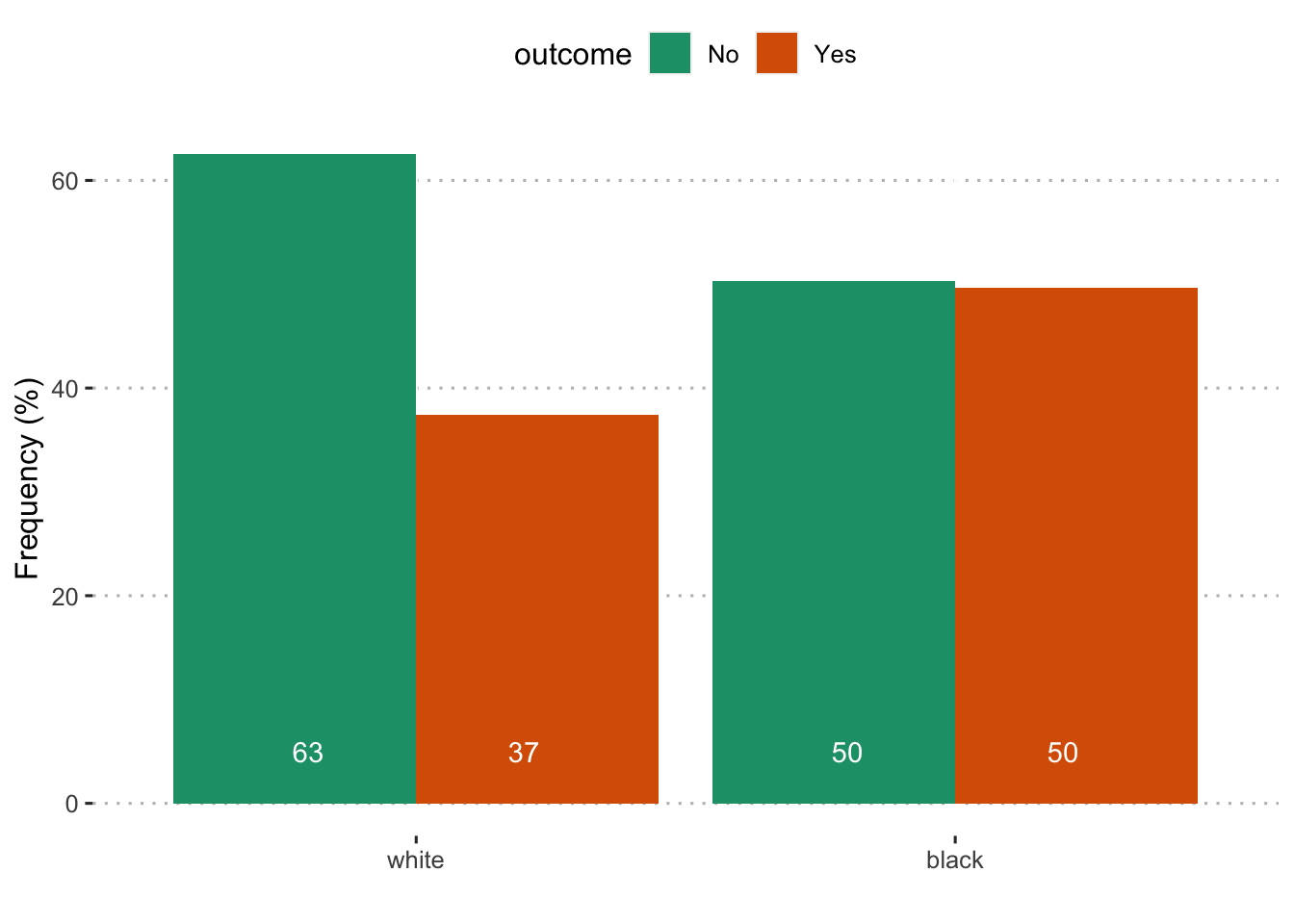
##
## Pearson's Chi-squared test with Yates' continuity correction
##
## data: scored$employment_decreased and scored$compare1
## X-squared = 27.033, df = 1, p-value = 2e-07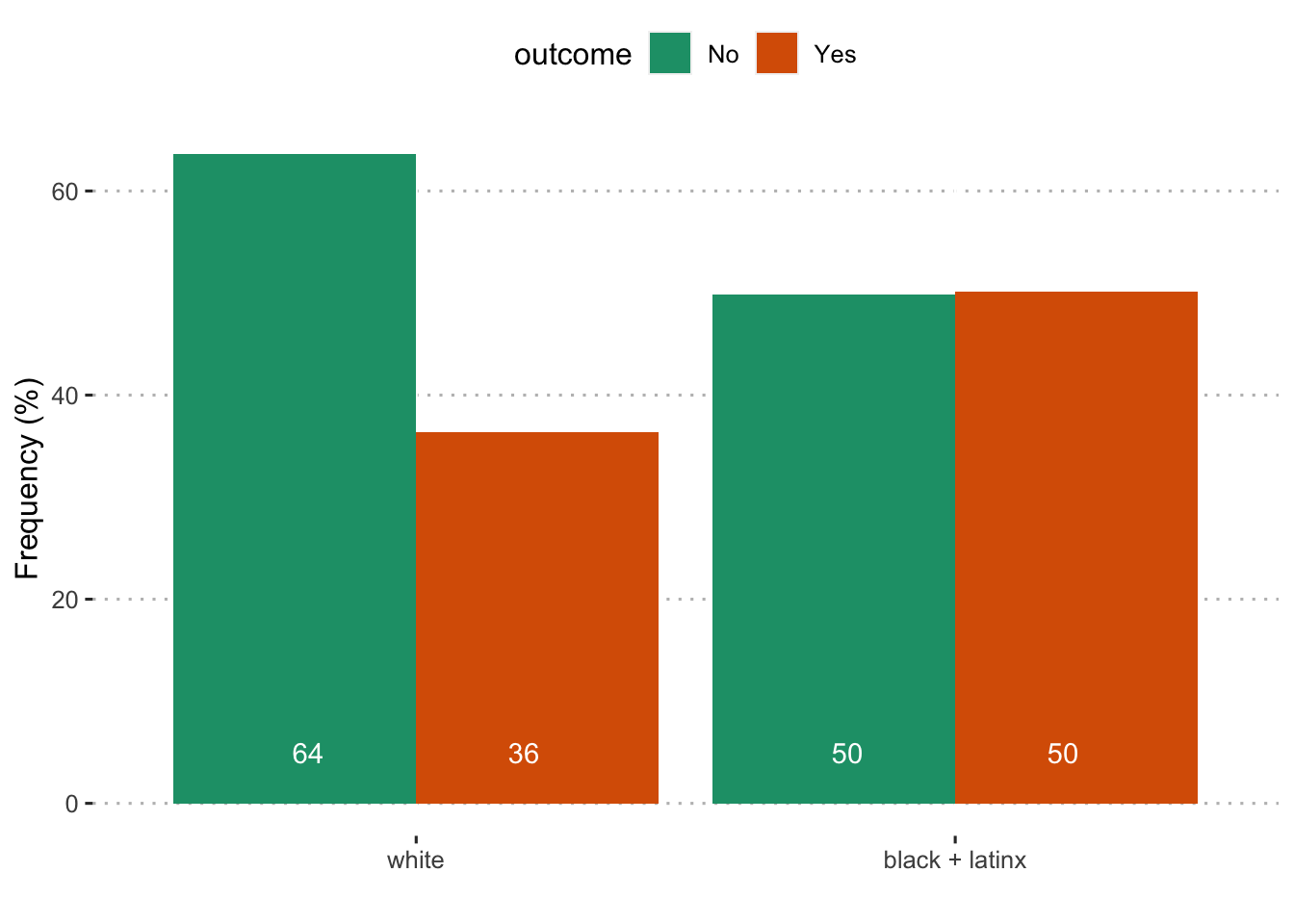
##
## Pearson's Chi-squared test with Yates' continuity correction
##
## data: scored$employment_decreased and scored$compare2
## X-squared = 74.038, df = 1, p-value < 2.2e-16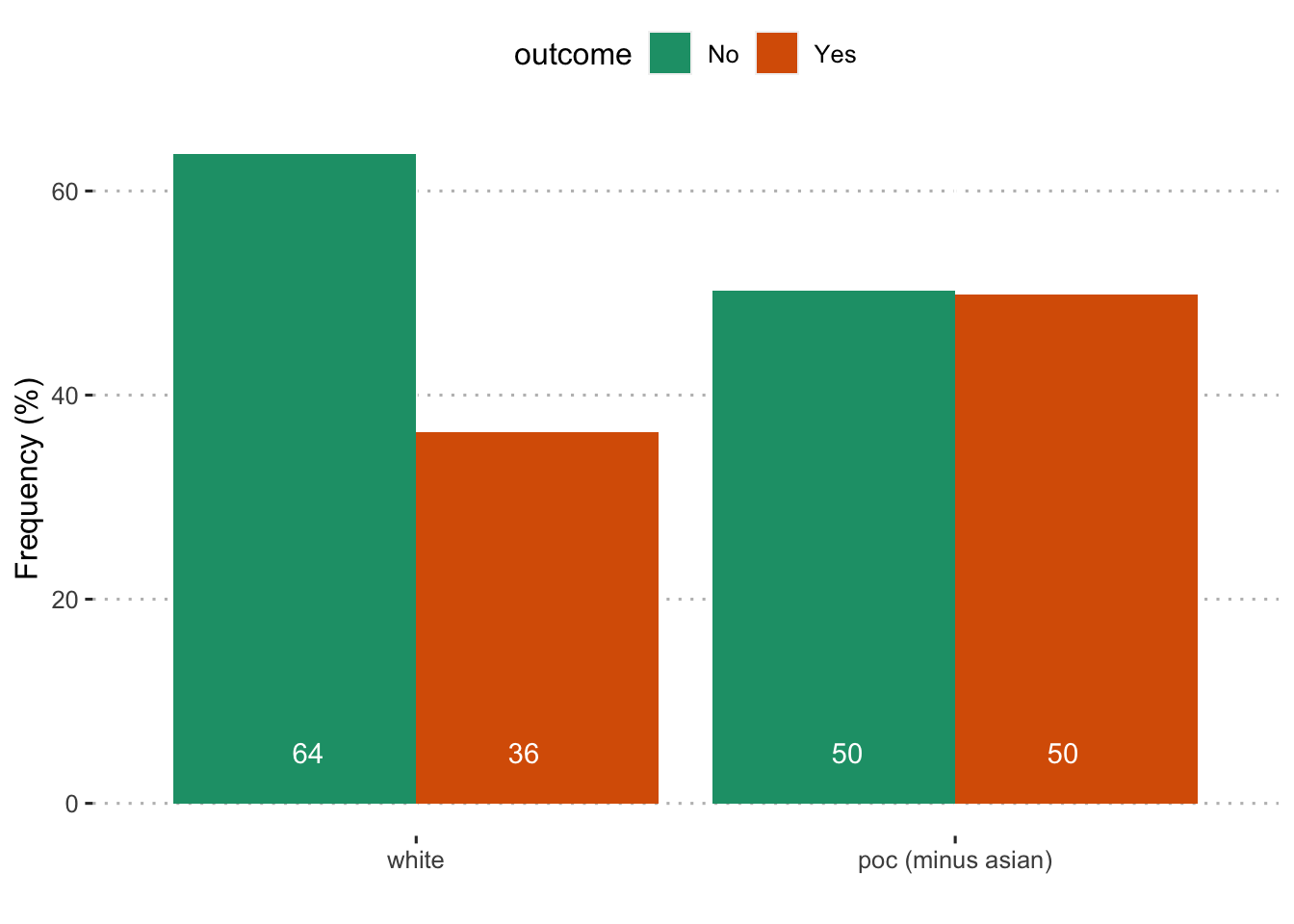
##
## Pearson's Chi-squared test with Yates' continuity correction
##
## data: scored$employment_decreased and scored$compare3
## X-squared = 81.018, df = 1, p-value < 2.2e-16
##
## Pearson's Chi-squared test with Yates' continuity correction
##
## data: scored$employment_decreased and scored$compare4
## X-squared = 72.955, df = 1, p-value < 2.2e-16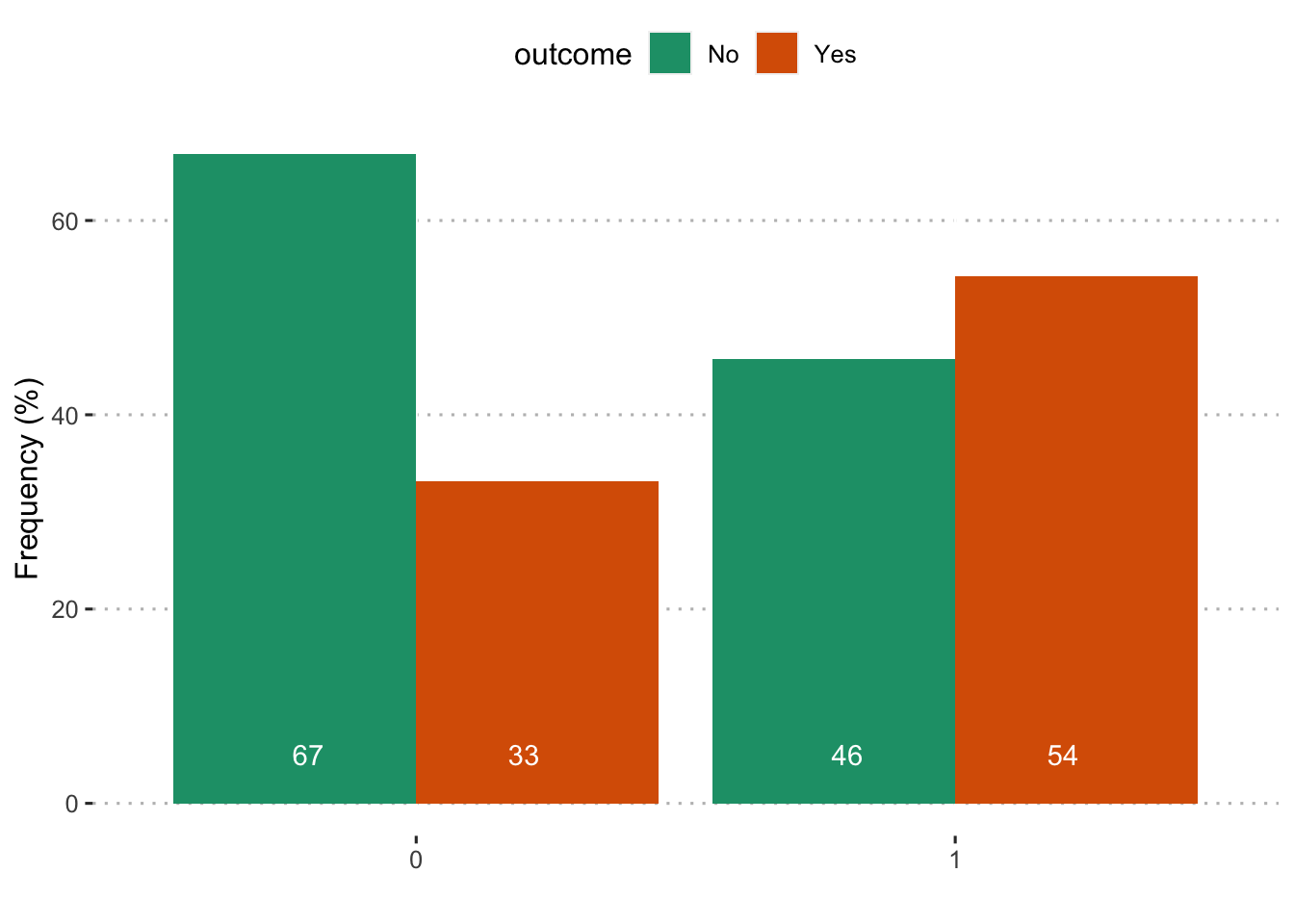
##
## Pearson's Chi-squared test with Yates' continuity correction
##
## data: scored$employment_decreased and scored$poverty150
## X-squared = 181.22, df = 1, p-value < 2.2e-16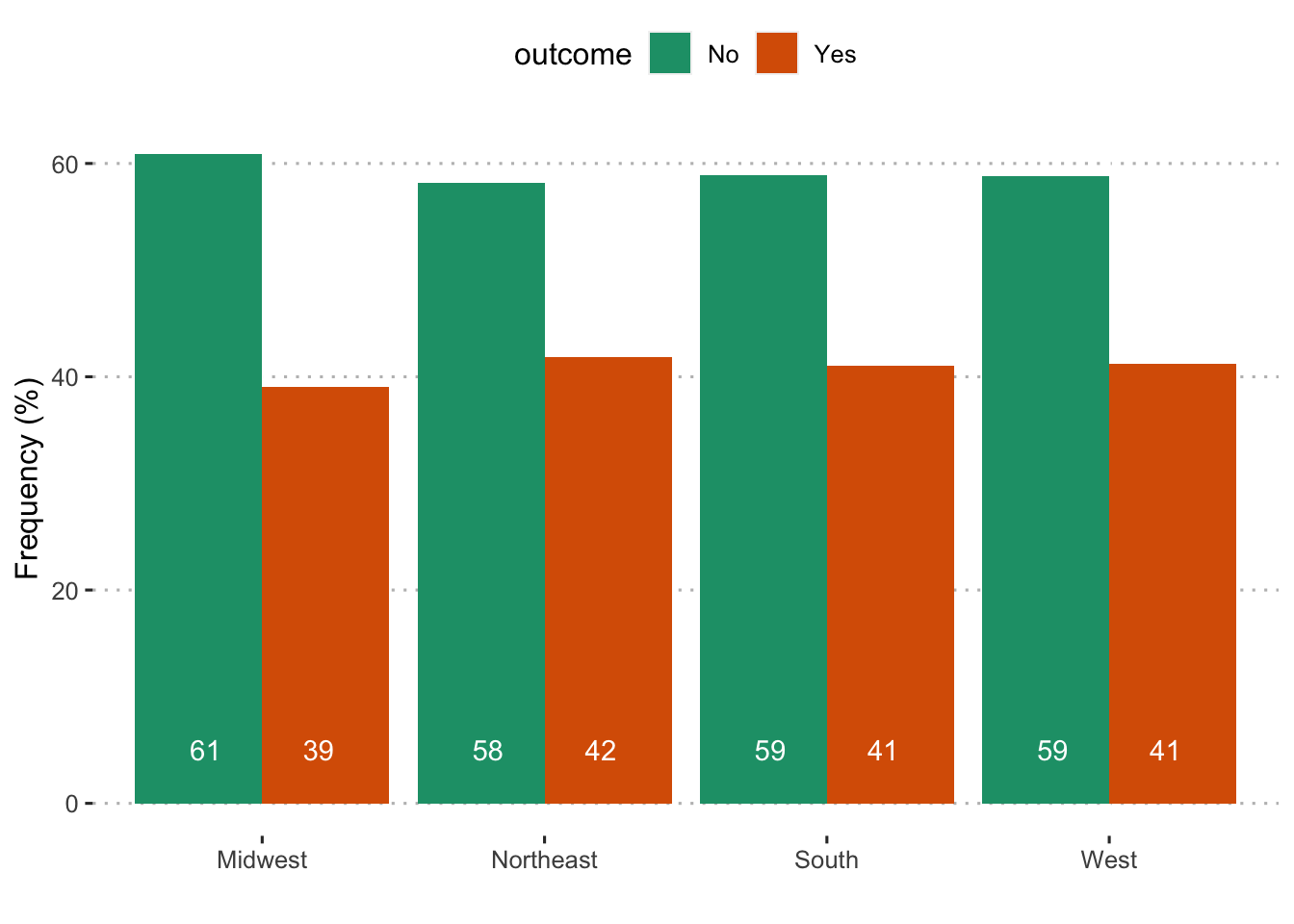
##
## Pearson's Chi-squared test
##
## data: scored$employment_decreased and scored$region
## X-squared = 1.9427, df = 3, p-value = 0.5844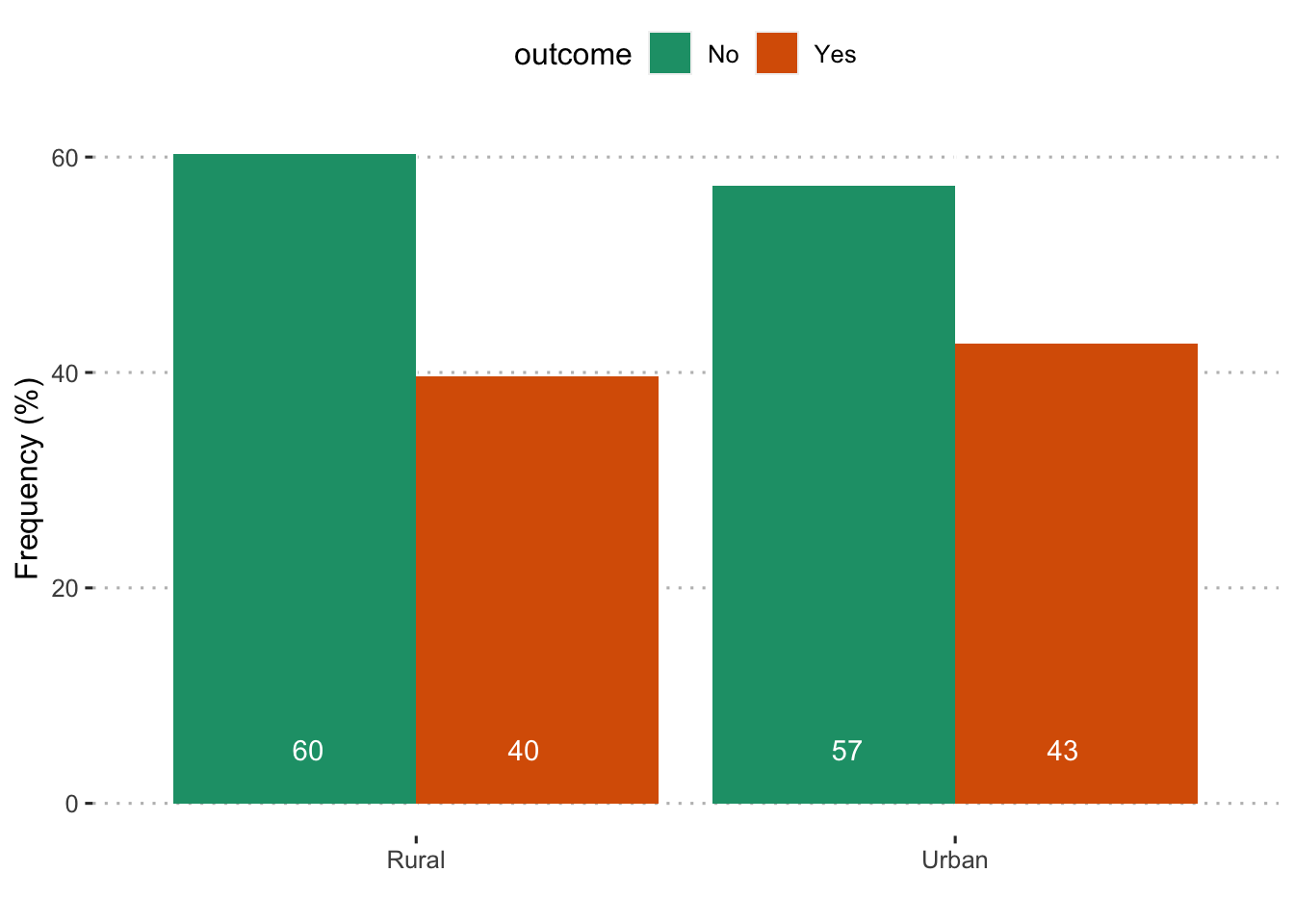
##
## Pearson's Chi-squared test with Yates' continuity correction
##
## data: scored$employment_decreased and scored$rural
## X-squared = 2.5619, df = 1, p-value = 0.1095Among unemployed
| Comparison | Group 1 | Group 2 |
|---|---|---|
| 1 | Black | White |
| 176 | 1272 | |
| 2 | Black + LatinX | White |
| 507 | 1113 | |
| 3 | POC (minus Asian) | White |
| 592 | 1113 | |
| 4 | POC | White |
| 654 | 1113 |
Have access to free food
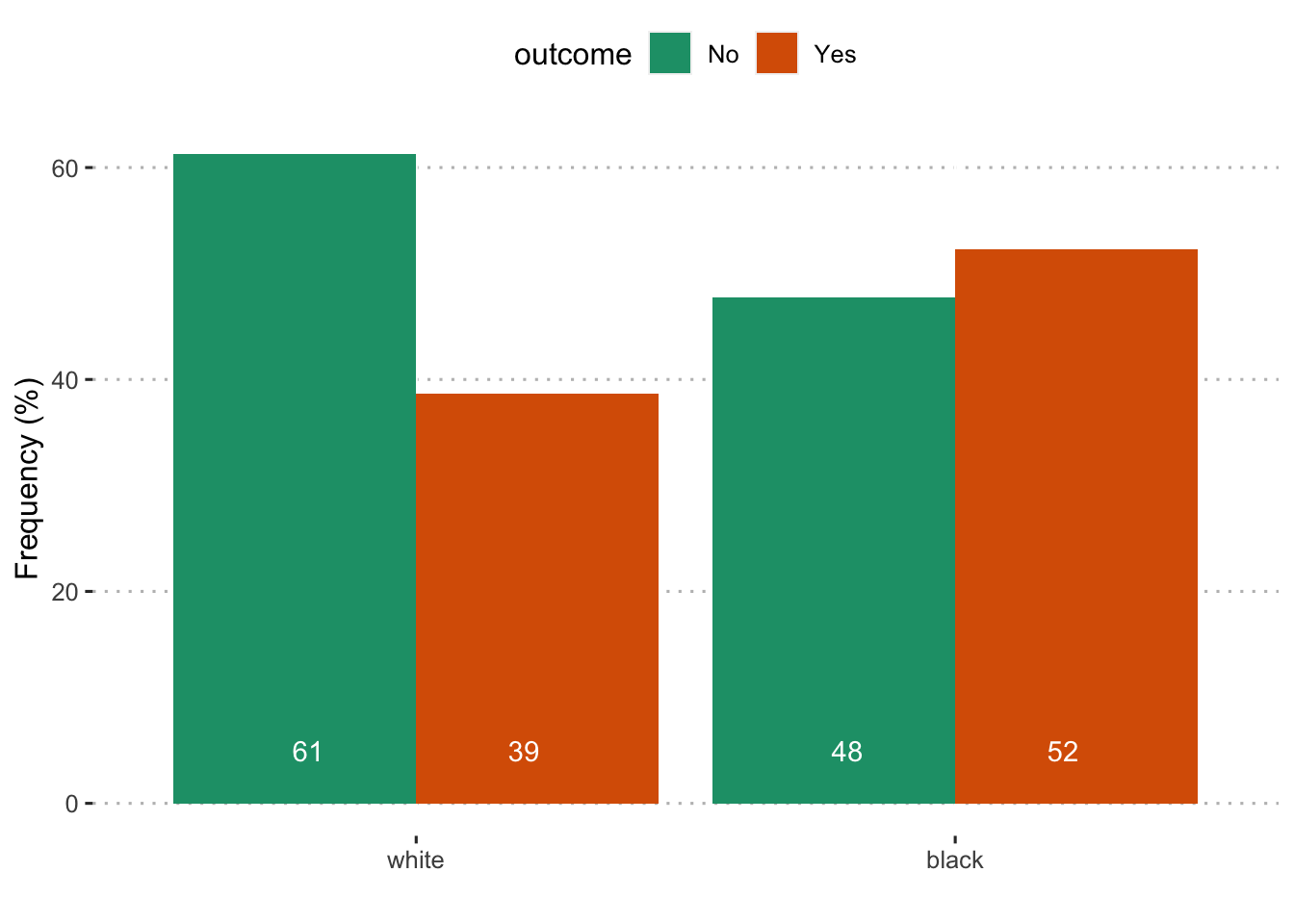
##
## Pearson's Chi-squared test with Yates' continuity correction
##
## data: unemployed$free_food and unemployed$compare1
## X-squared = 11.313, df = 1, p-value = 0.0007695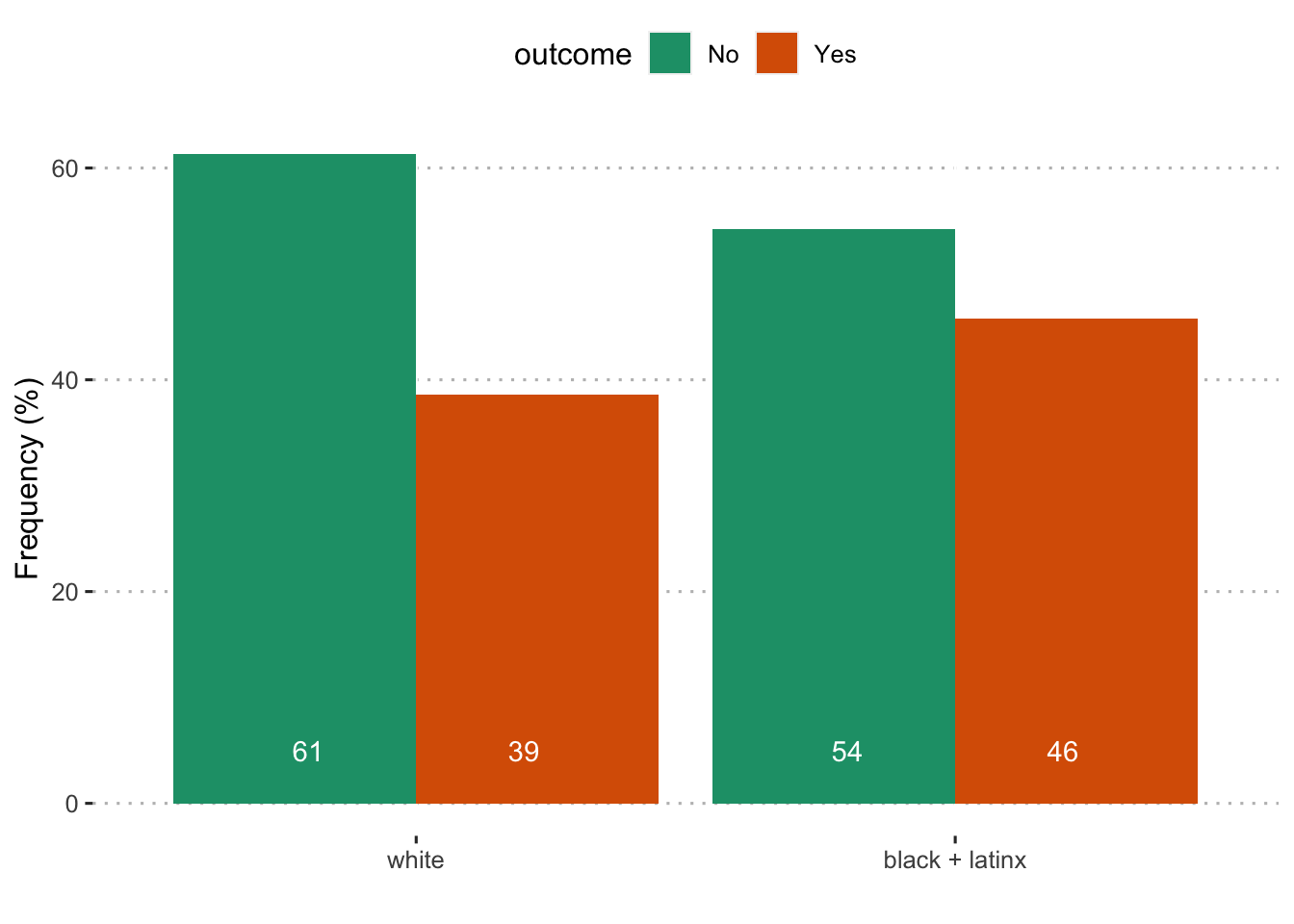
##
## Pearson's Chi-squared test with Yates' continuity correction
##
## data: unemployed$free_food and unemployed$compare2
## X-squared = 7.0257, df = 1, p-value = 0.008035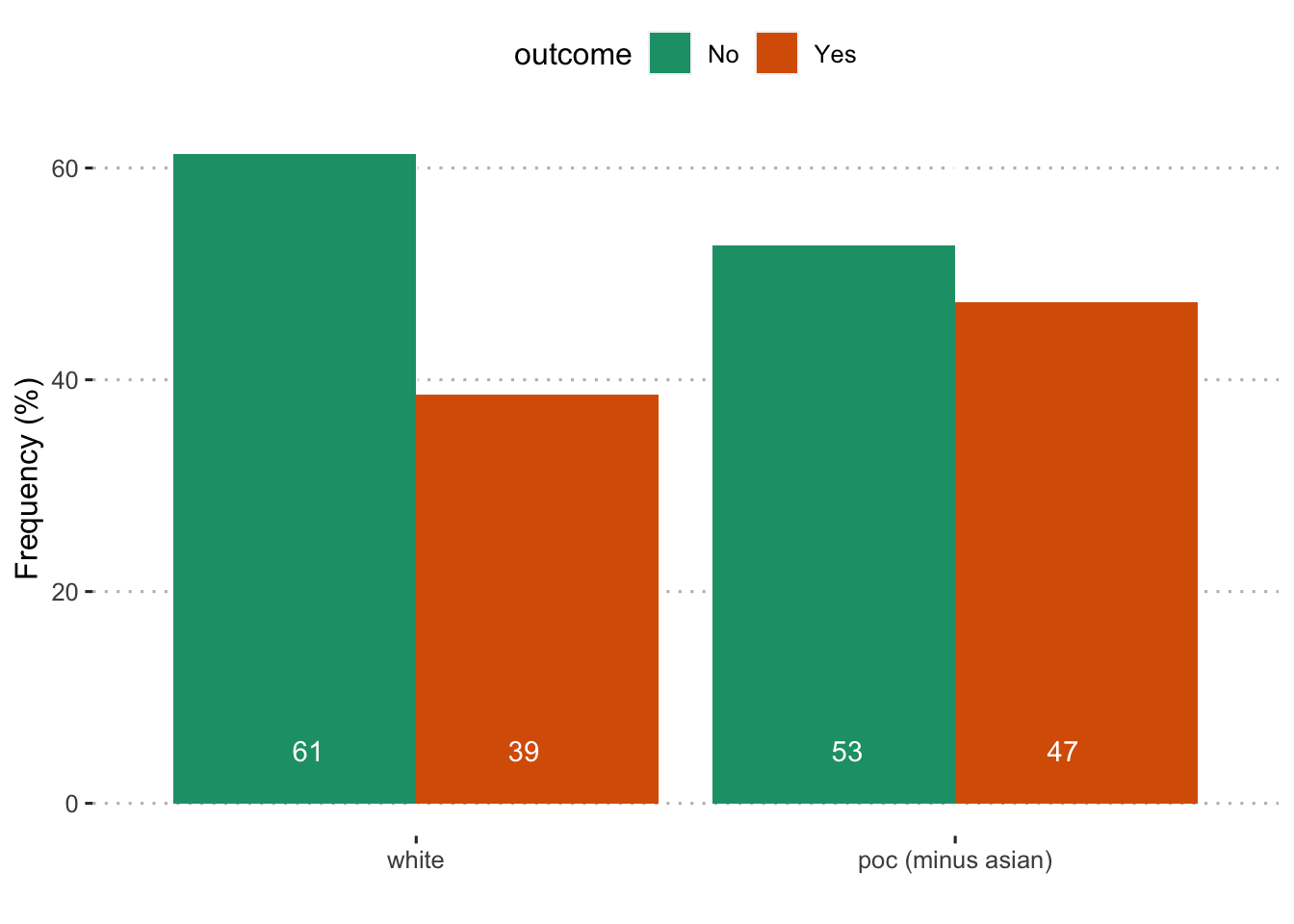
##
## Pearson's Chi-squared test with Yates' continuity correction
##
## data: unemployed$free_food and unemployed$compare3
## X-squared = 11.58, df = 1, p-value = 0.0006665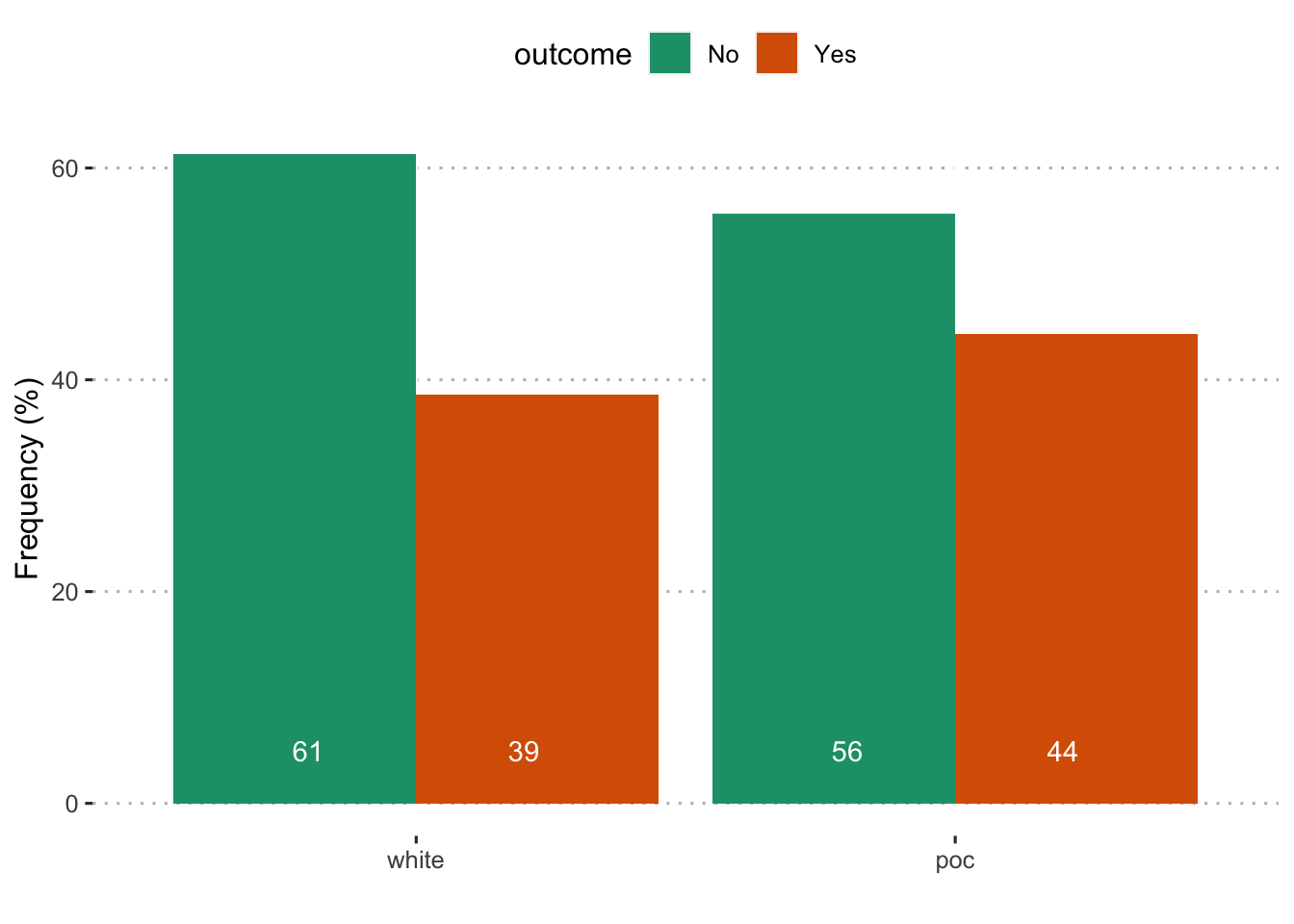
##
## Pearson's Chi-squared test with Yates' continuity correction
##
## data: unemployed$free_food and unemployed$compare4
## X-squared = 5.3255, df = 1, p-value = 0.02102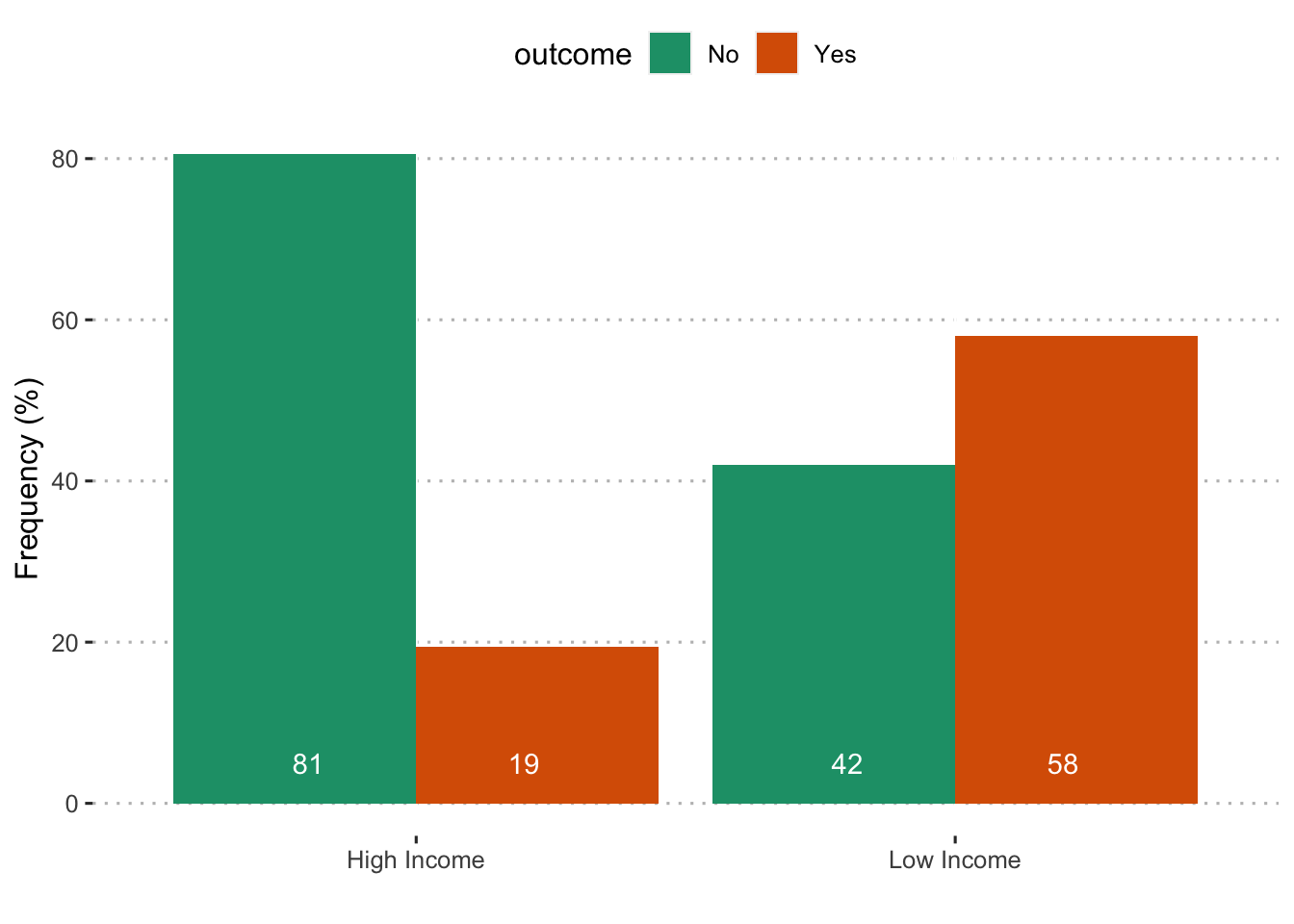
##
## Pearson's Chi-squared test with Yates' continuity correction
##
## data: unemployed$free_food and unemployed$poverty150
## X-squared = 244.22, df = 1, p-value < 2.2e-16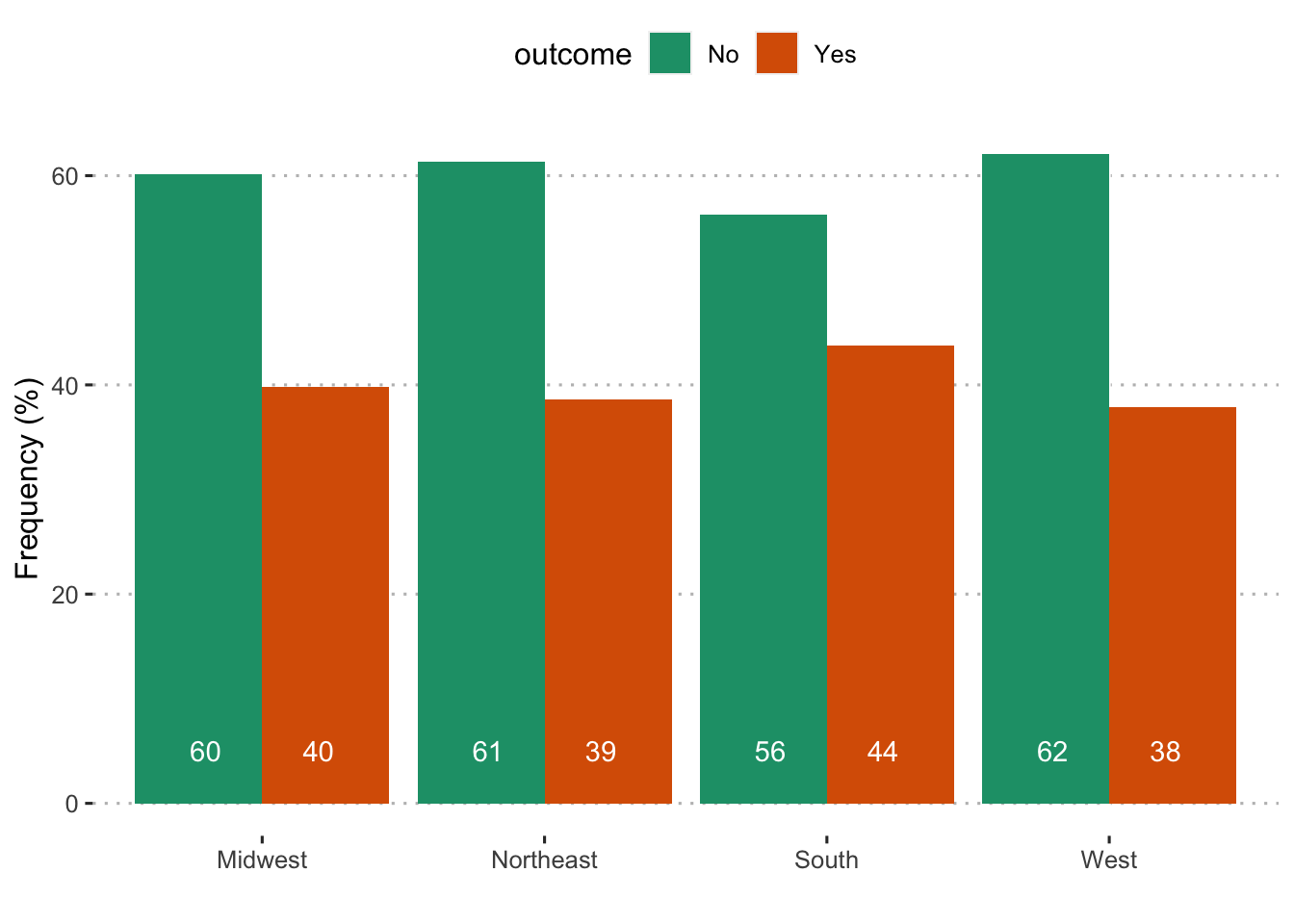
##
## Pearson's Chi-squared test
##
## data: unemployed$free_food and unemployed$region
## X-squared = 4.7261, df = 3, p-value = 0.193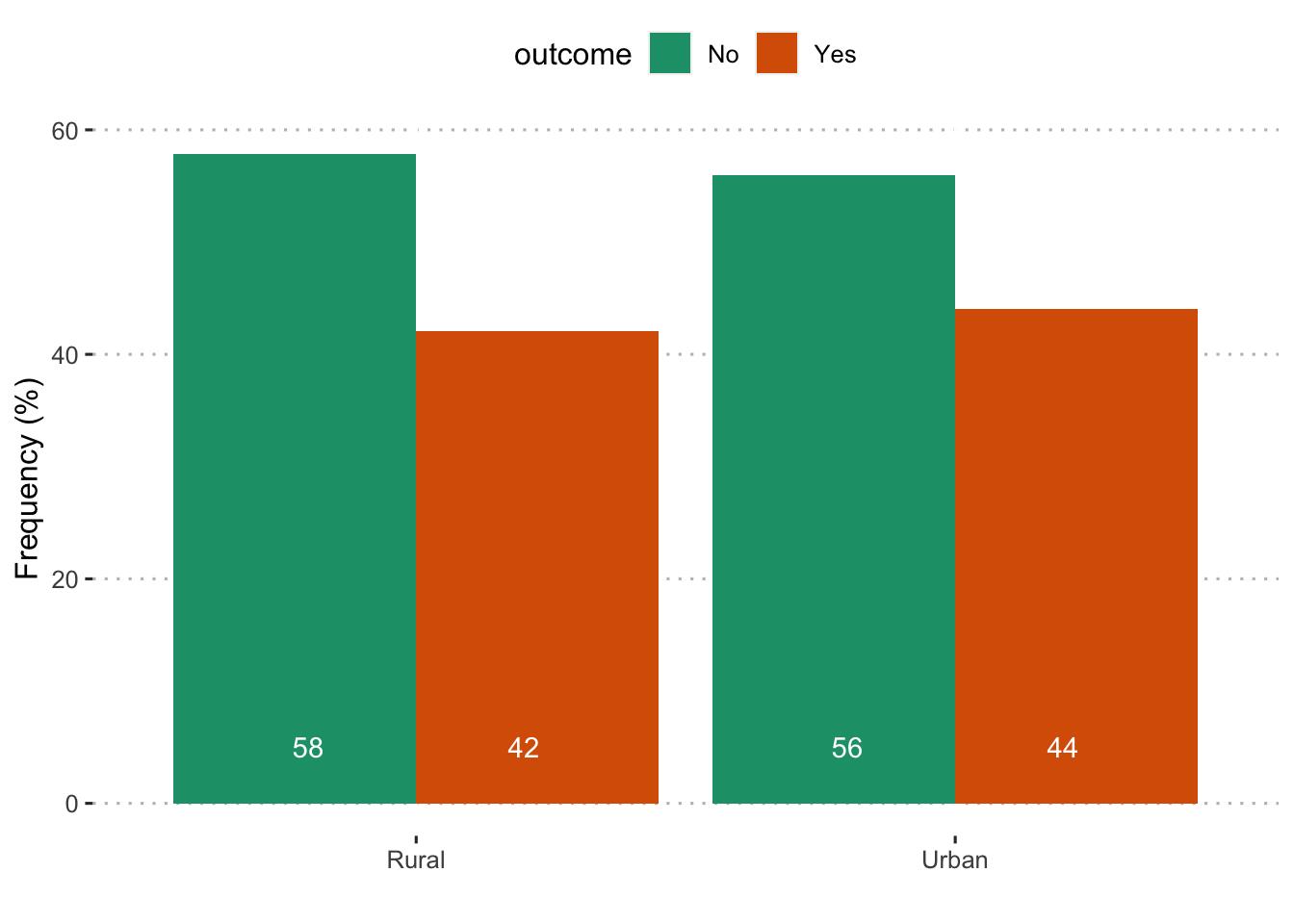
##
## Pearson's Chi-squared test with Yates' continuity correction
##
## data: unemployed$free_food and unemployed$rural
## X-squared = 0.30867, df = 1, p-value = 0.5785Lost free lunch for child(ren)
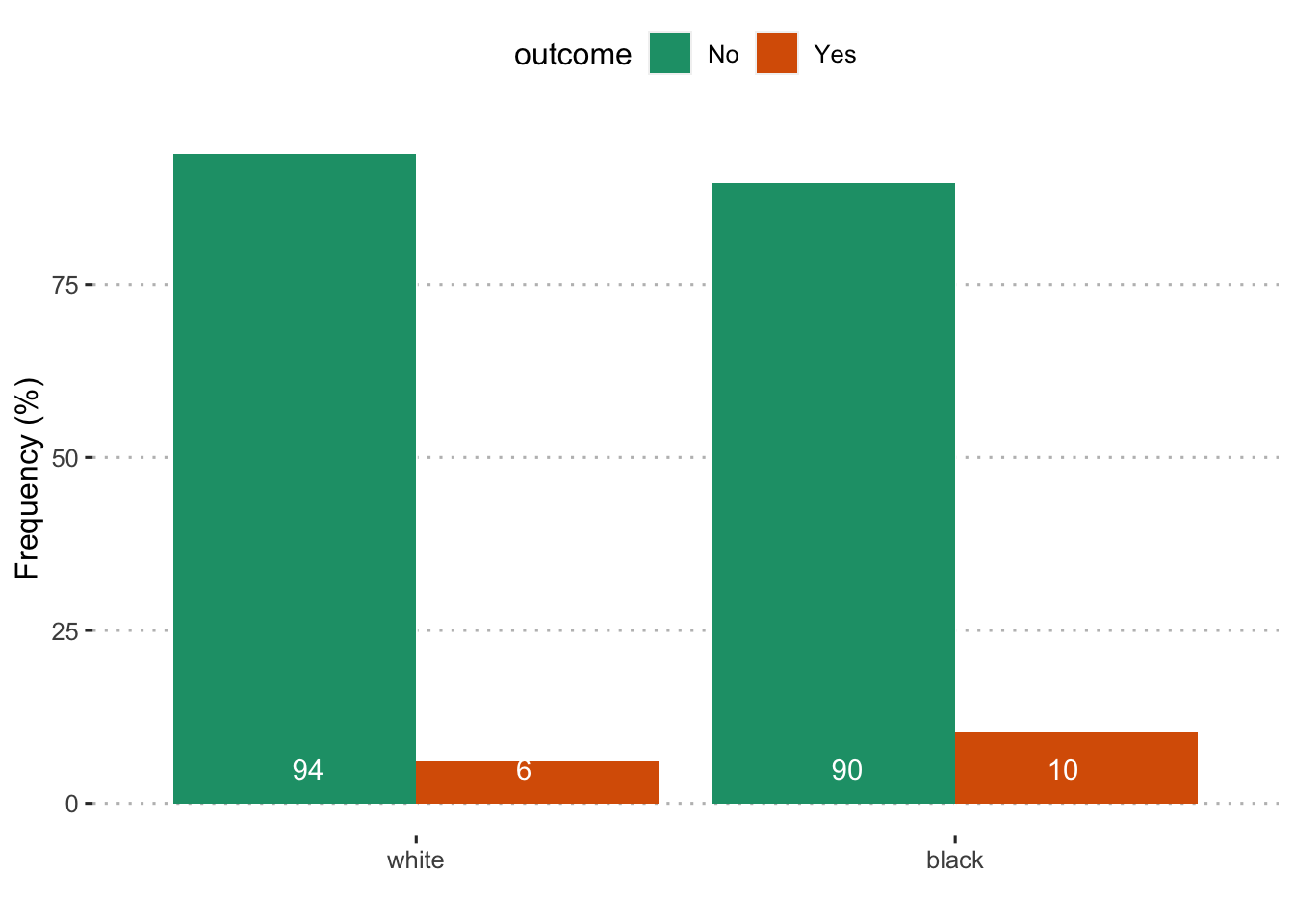
##
## Pearson's Chi-squared test with Yates' continuity correction
##
## data: unemployed$lost_free_lunch and unemployed$compare1
## X-squared = 3.7391, df = 1, p-value = 0.05315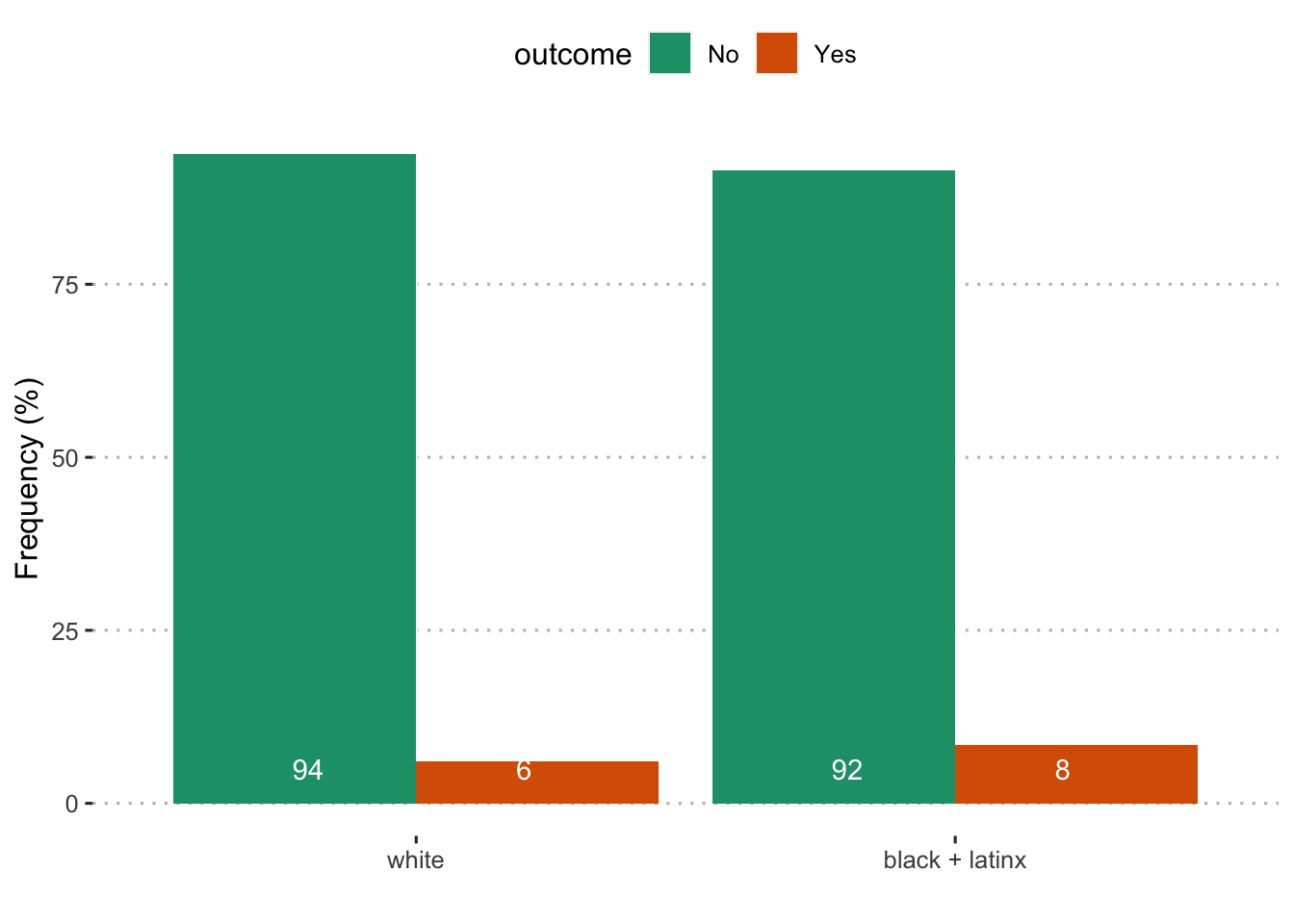
##
## Pearson's Chi-squared test with Yates' continuity correction
##
## data: unemployed$lost_free_lunch and unemployed$compare2
## X-squared = 2.7094, df = 1, p-value = 0.09976
##
## Pearson's Chi-squared test with Yates' continuity correction
##
## data: unemployed$lost_free_lunch and unemployed$compare3
## X-squared = 3.825, df = 1, p-value = 0.05049
##
## Pearson's Chi-squared test with Yates' continuity correction
##
## data: unemployed$lost_free_lunch and unemployed$compare4
## X-squared = 2.2655, df = 1, p-value = 0.1323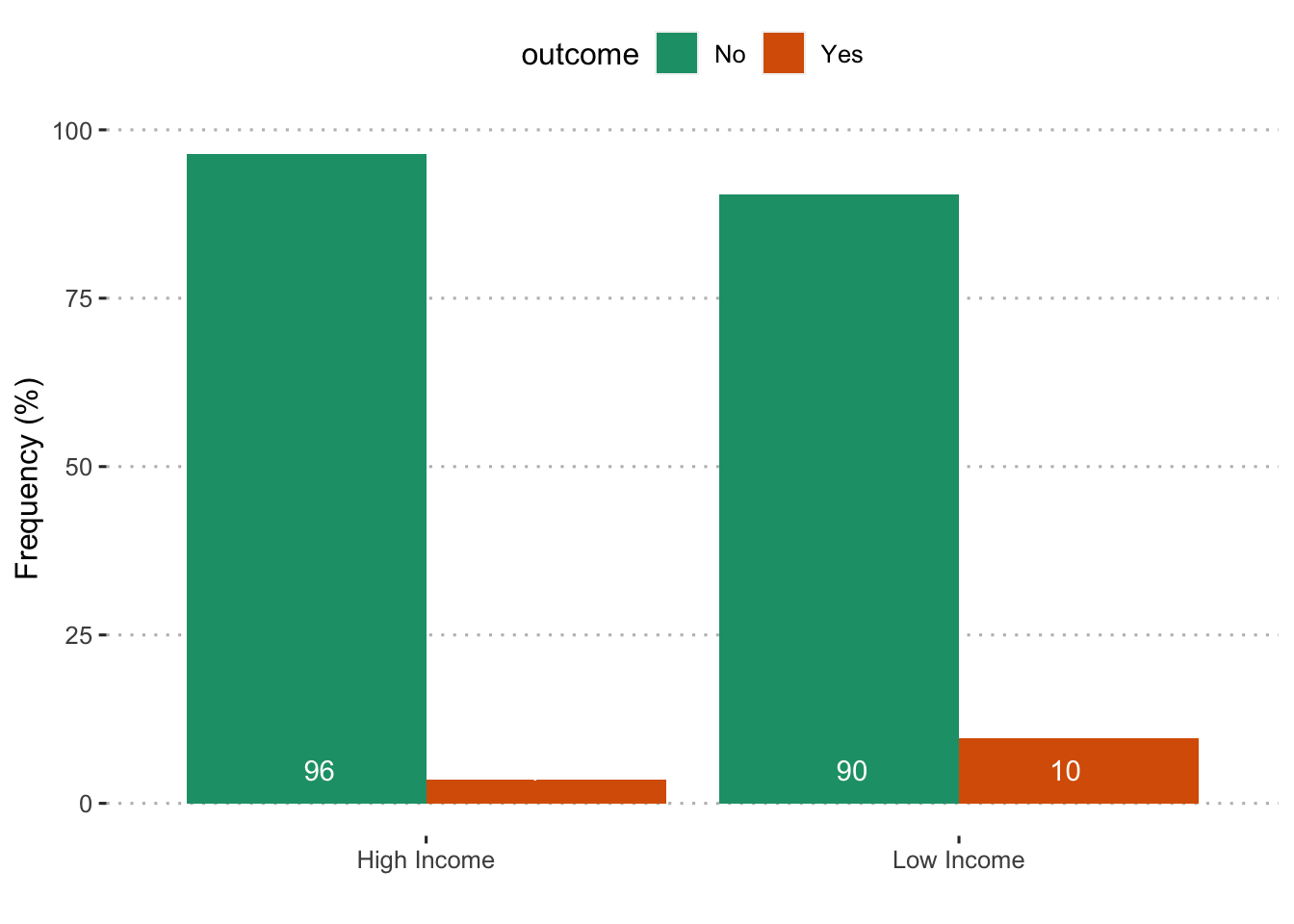
##
## Pearson's Chi-squared test with Yates' continuity correction
##
## data: unemployed$lost_free_lunch and unemployed$poverty150
## X-squared = 23.075, df = 1, p-value = 1.558e-06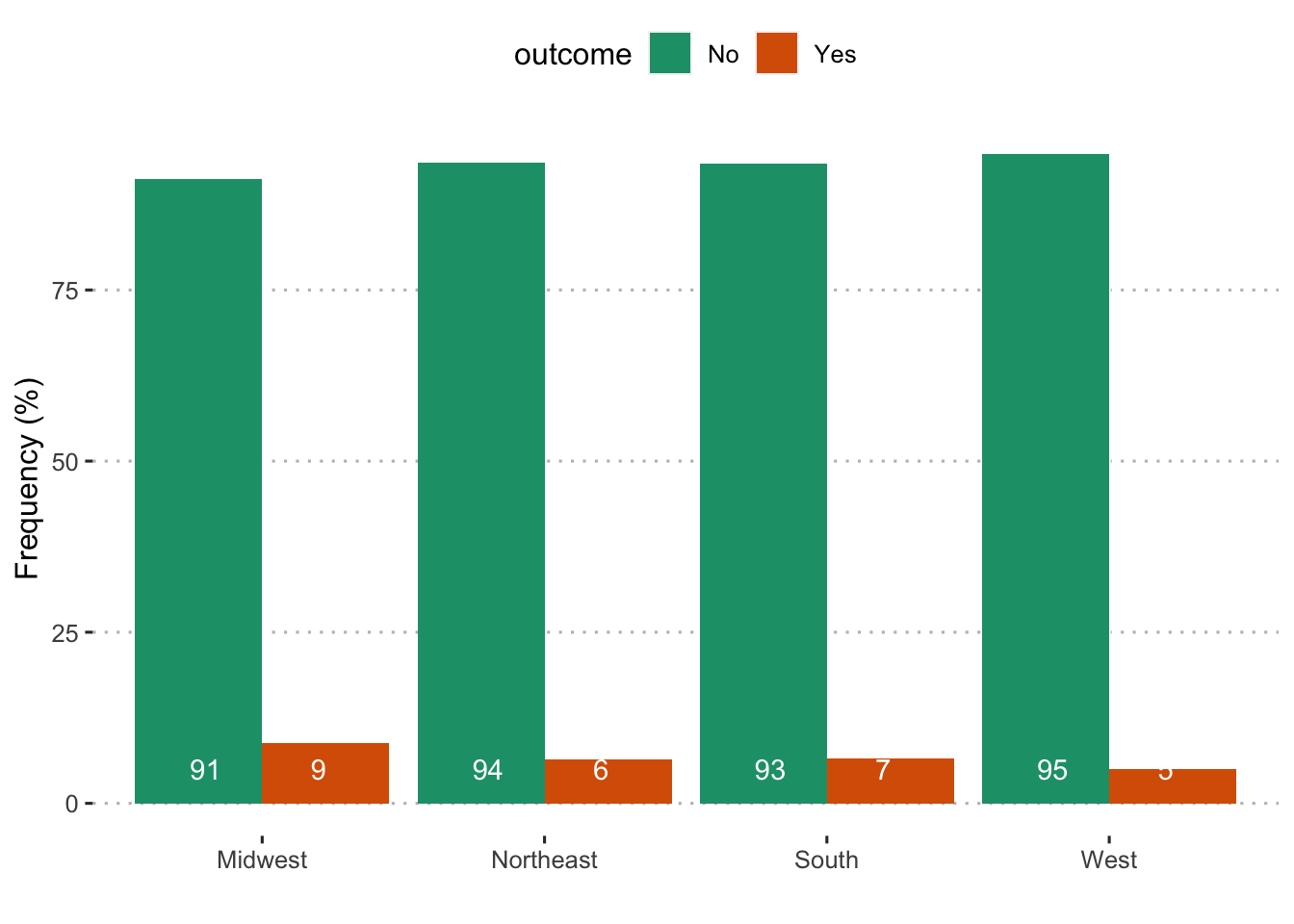
##
## Chi-squared test for given probabilities
##
## data: unemployed$lost_free_lunch
## X-squared = 1686, df = 1806, p-value = 0.9789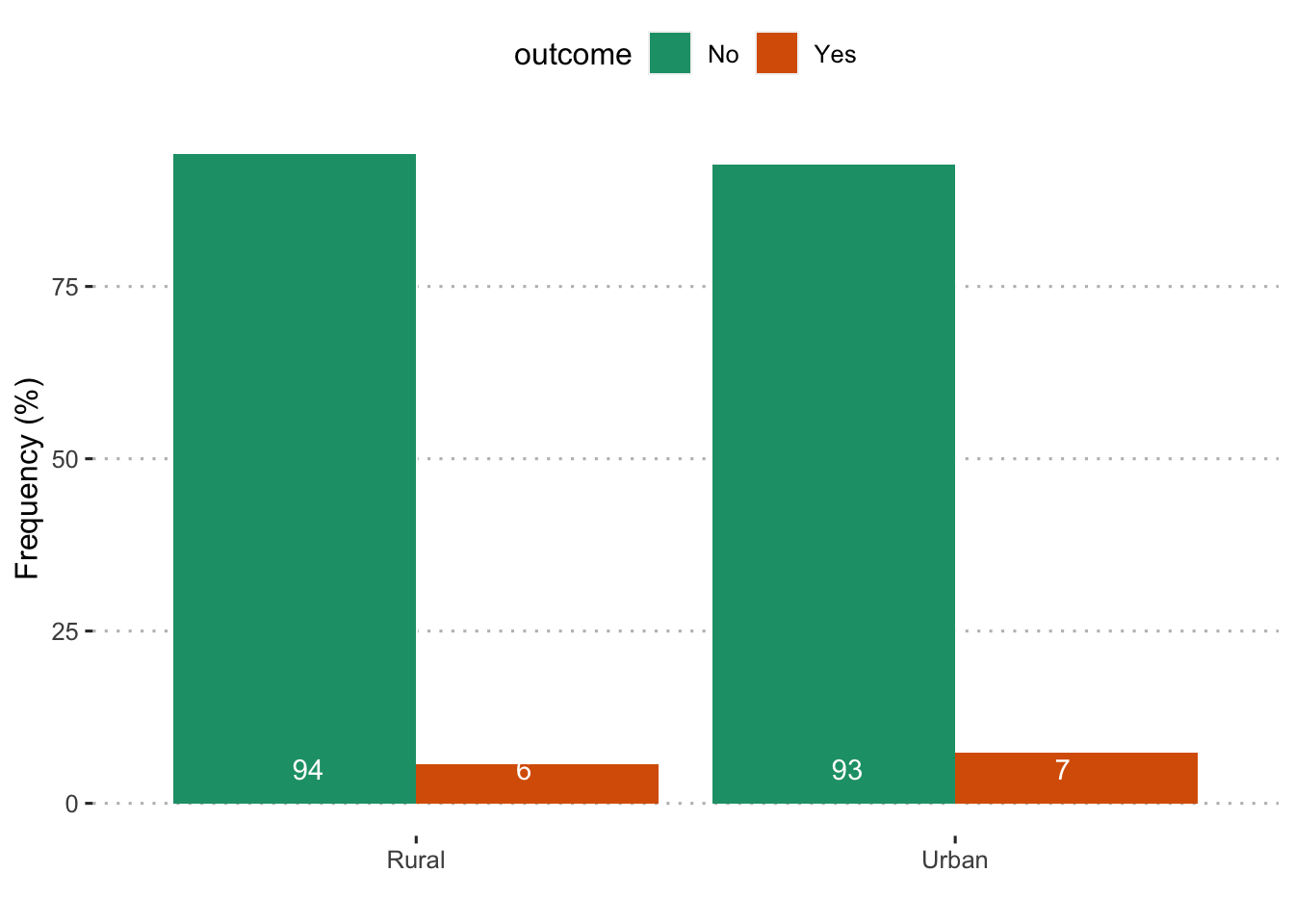
##
## Pearson's Chi-squared test with Yates' continuity correction
##
## data: unemployed$lost_free_lunch and unemployed$rural
## X-squared = 0.85934, df = 1, p-value = 0.3539Childcare
Plans for next month
Same as right now
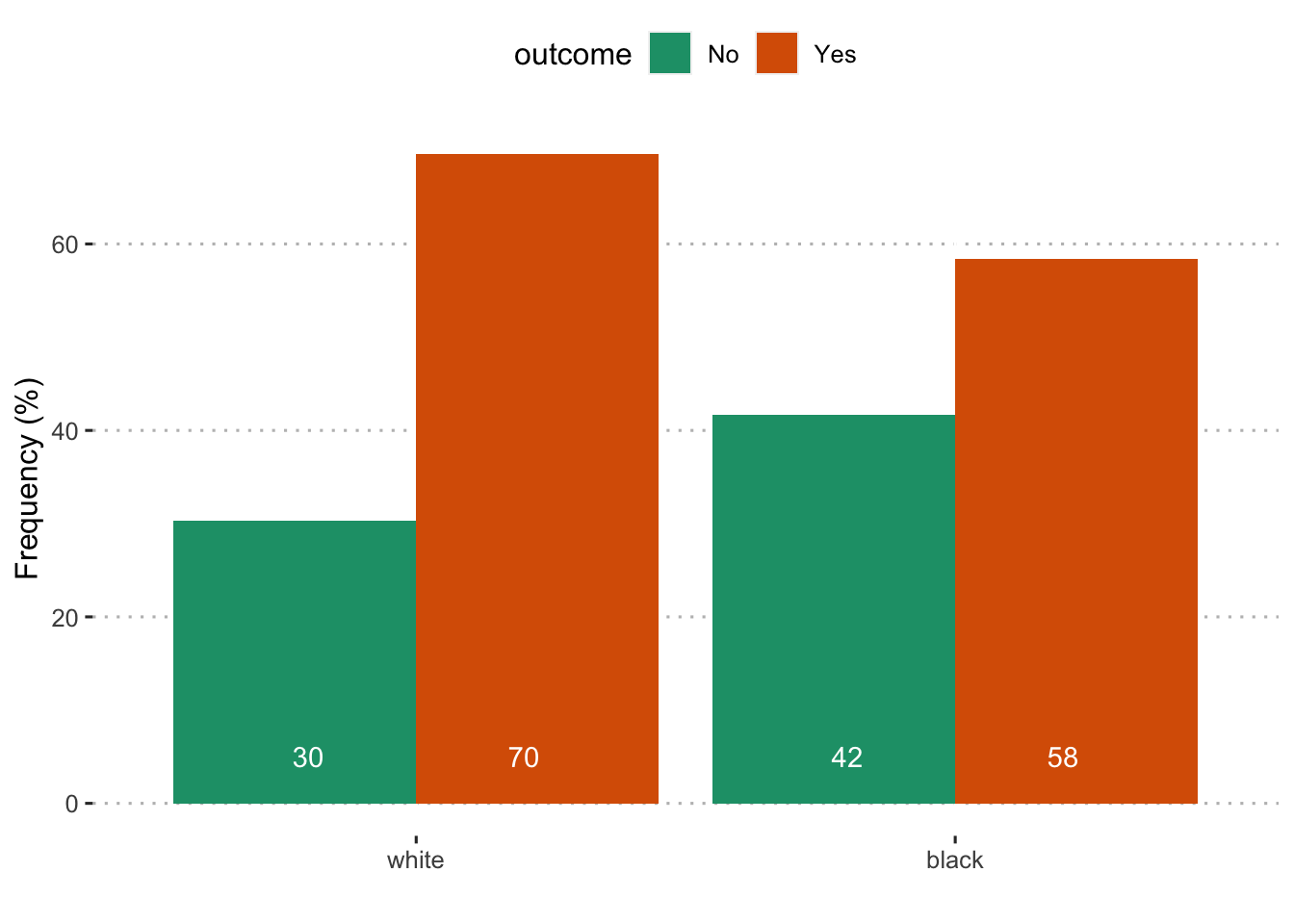
##
## Pearson's Chi-squared test with Yates' continuity correction
##
## data: scored$plan_cc_samenow and scored$compare1
## X-squared = 20.81, df = 1, p-value = 5.073e-06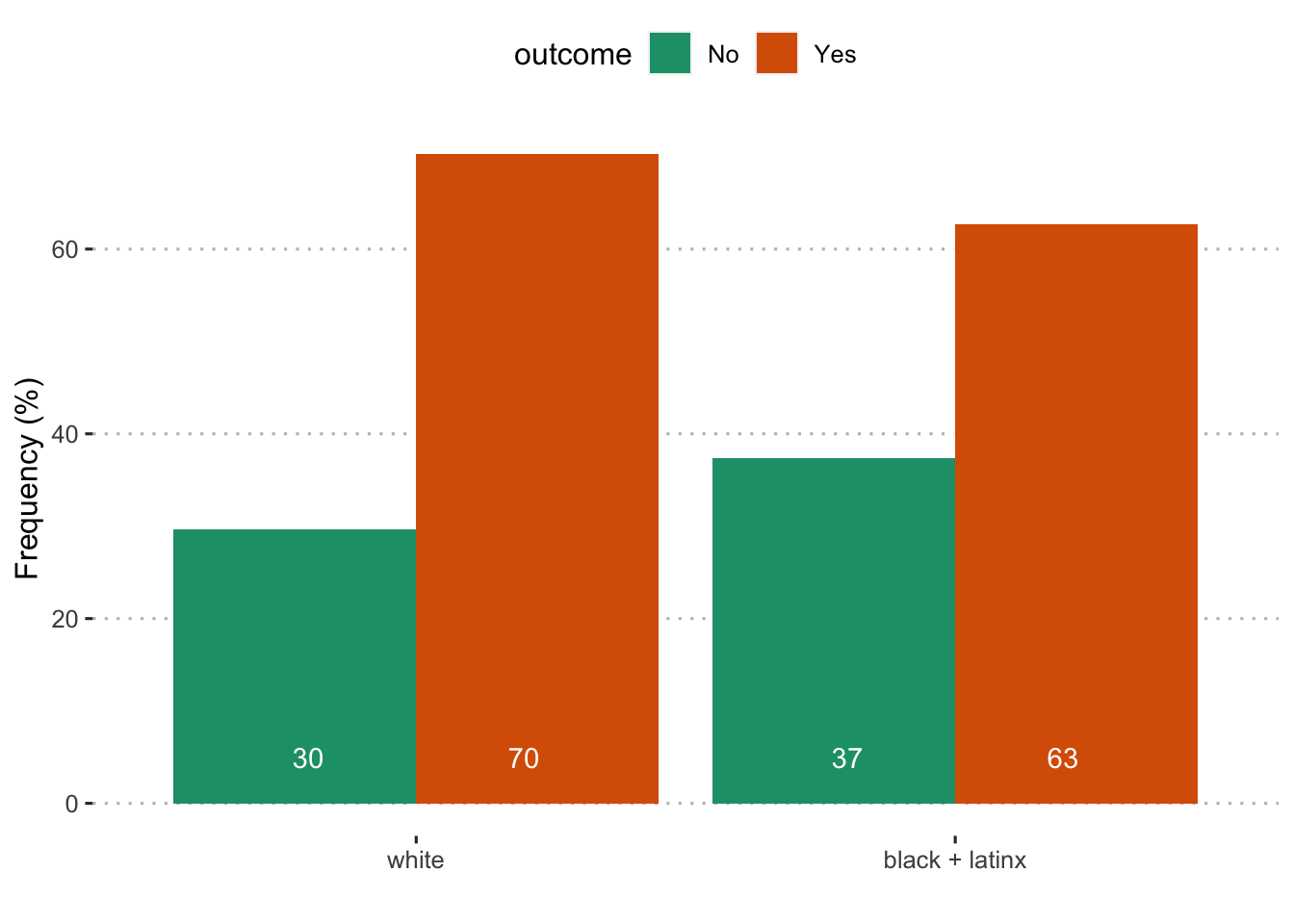
##
## Pearson's Chi-squared test with Yates' continuity correction
##
## data: scored$plan_cc_samenow and scored$compare2
## X-squared = 22.375, df = 1, p-value = 2.243e-06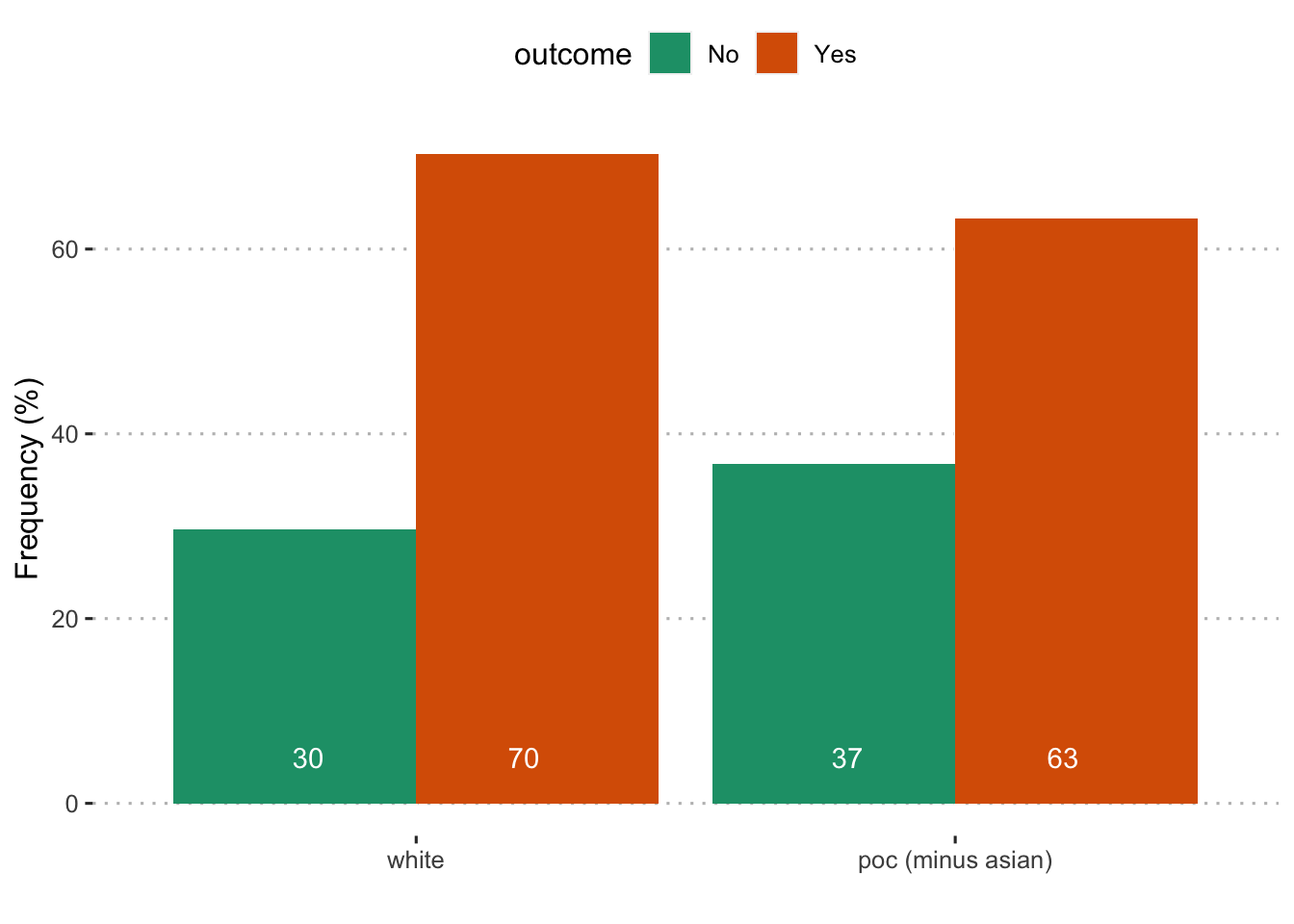
##
## Pearson's Chi-squared test with Yates' continuity correction
##
## data: scored$plan_cc_samenow and scored$compare3
## X-squared = 21.889, df = 1, p-value = 2.888e-06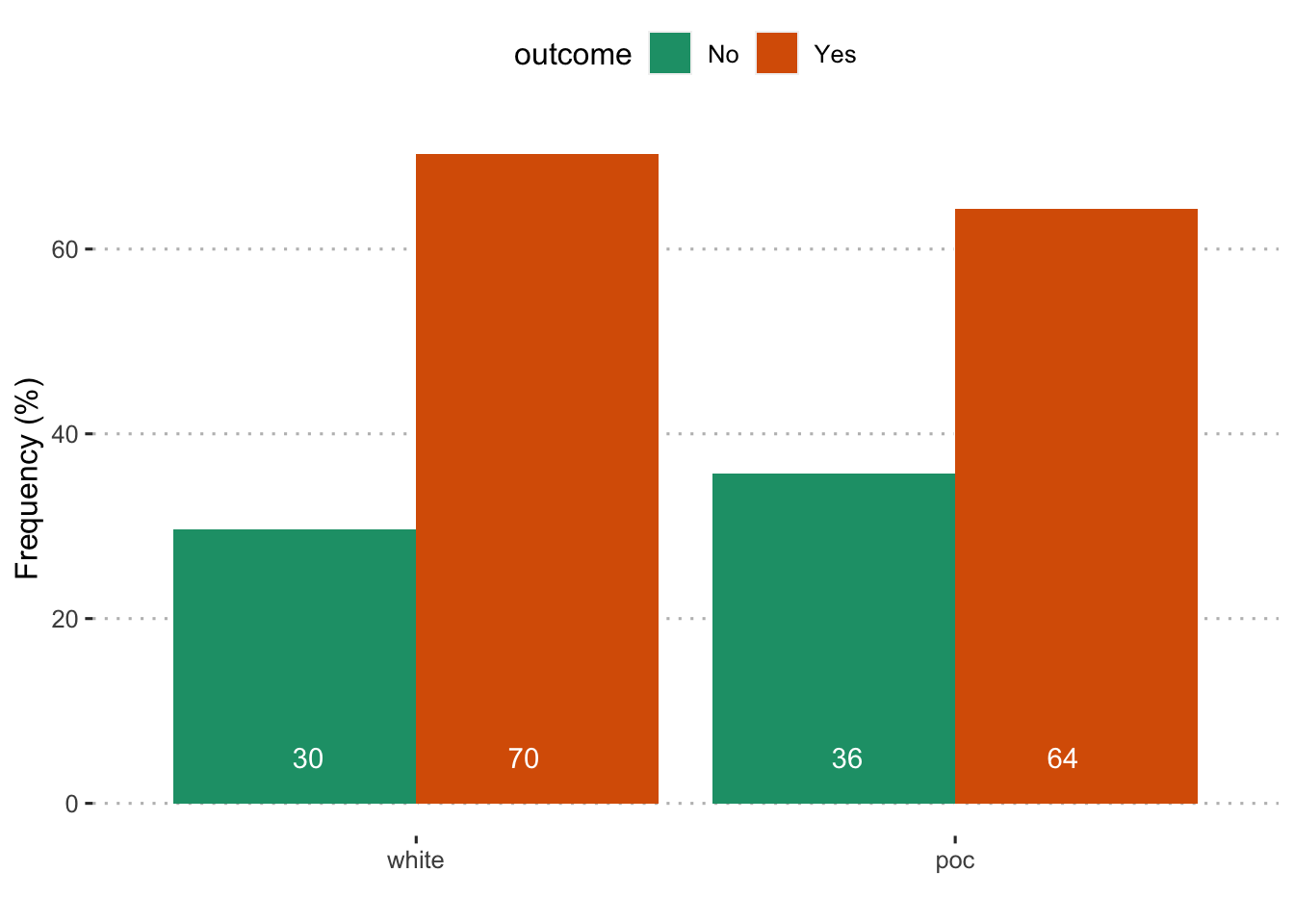
##
## Pearson's Chi-squared test with Yates' continuity correction
##
## data: scored$plan_cc_samenow and scored$compare4
## X-squared = 17.105, df = 1, p-value = 3.536e-05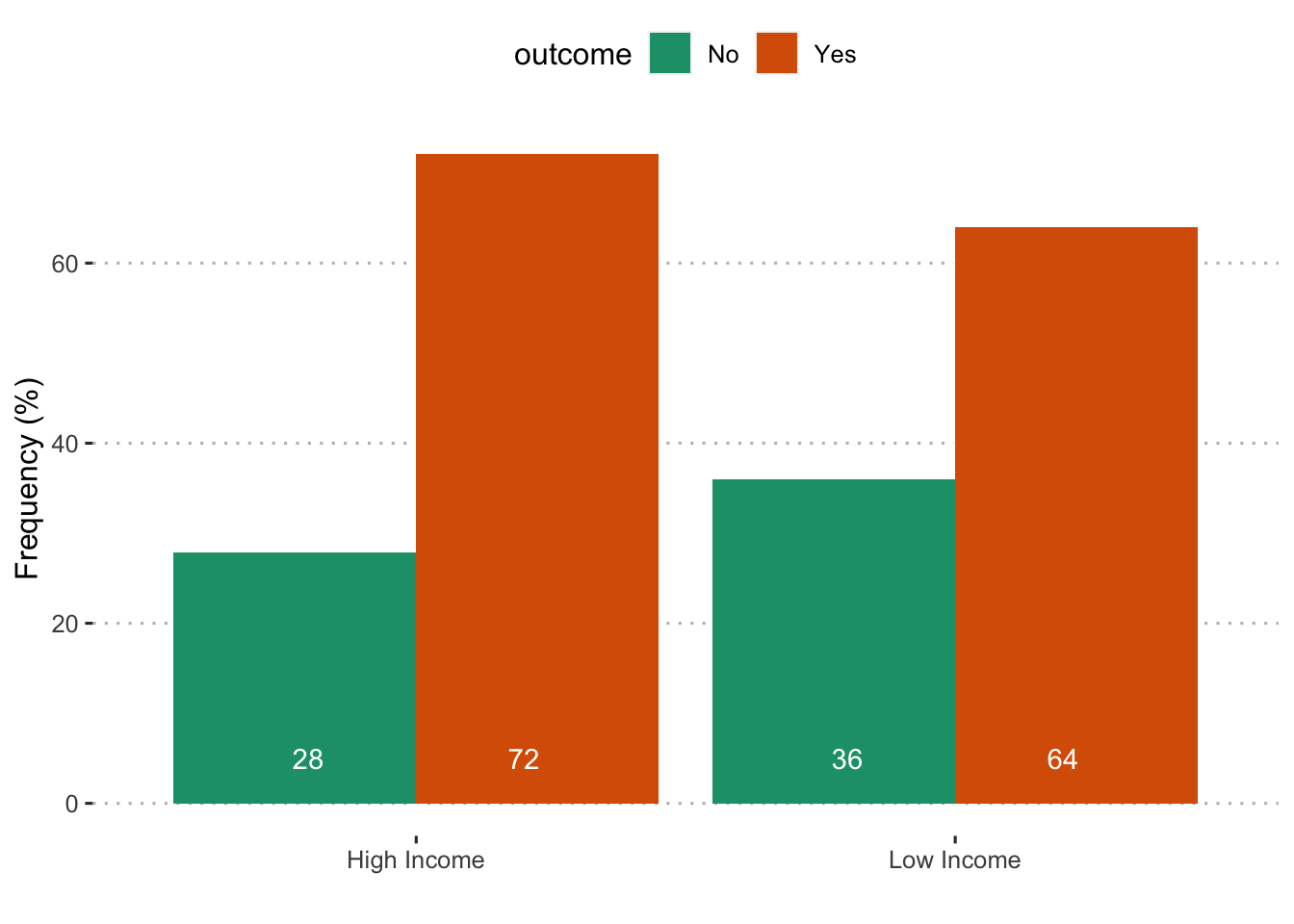
##
## Pearson's Chi-squared test with Yates' continuity correction
##
## data: scored$plan_cc_samenow and scored$poverty150
## X-squared = 28.128, df = 1, p-value = 1.136e-07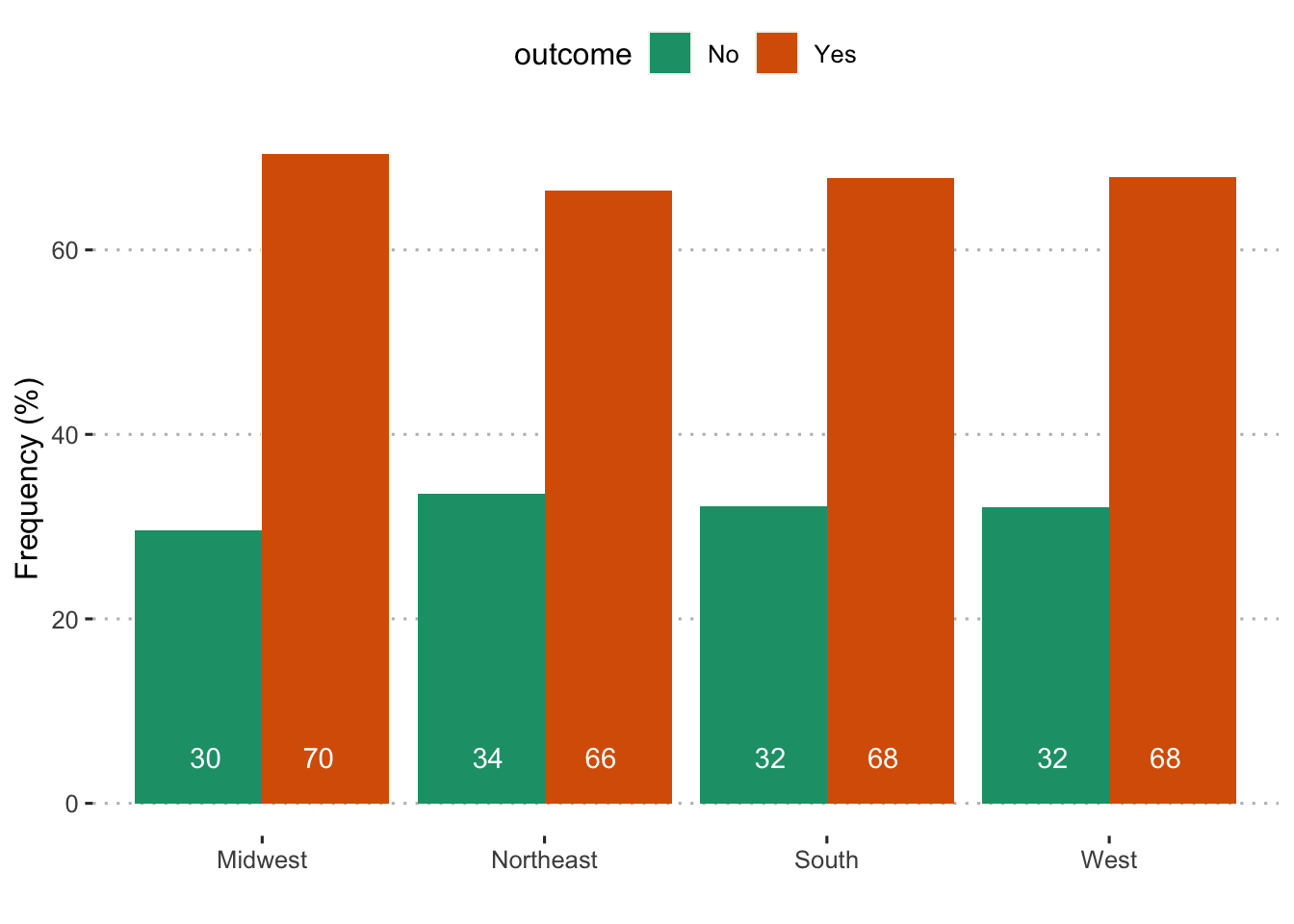
##
## Pearson's Chi-squared test
##
## data: scored$plan_cc_samenow and scored$region
## X-squared = 3.7043, df = 3, p-value = 0.2952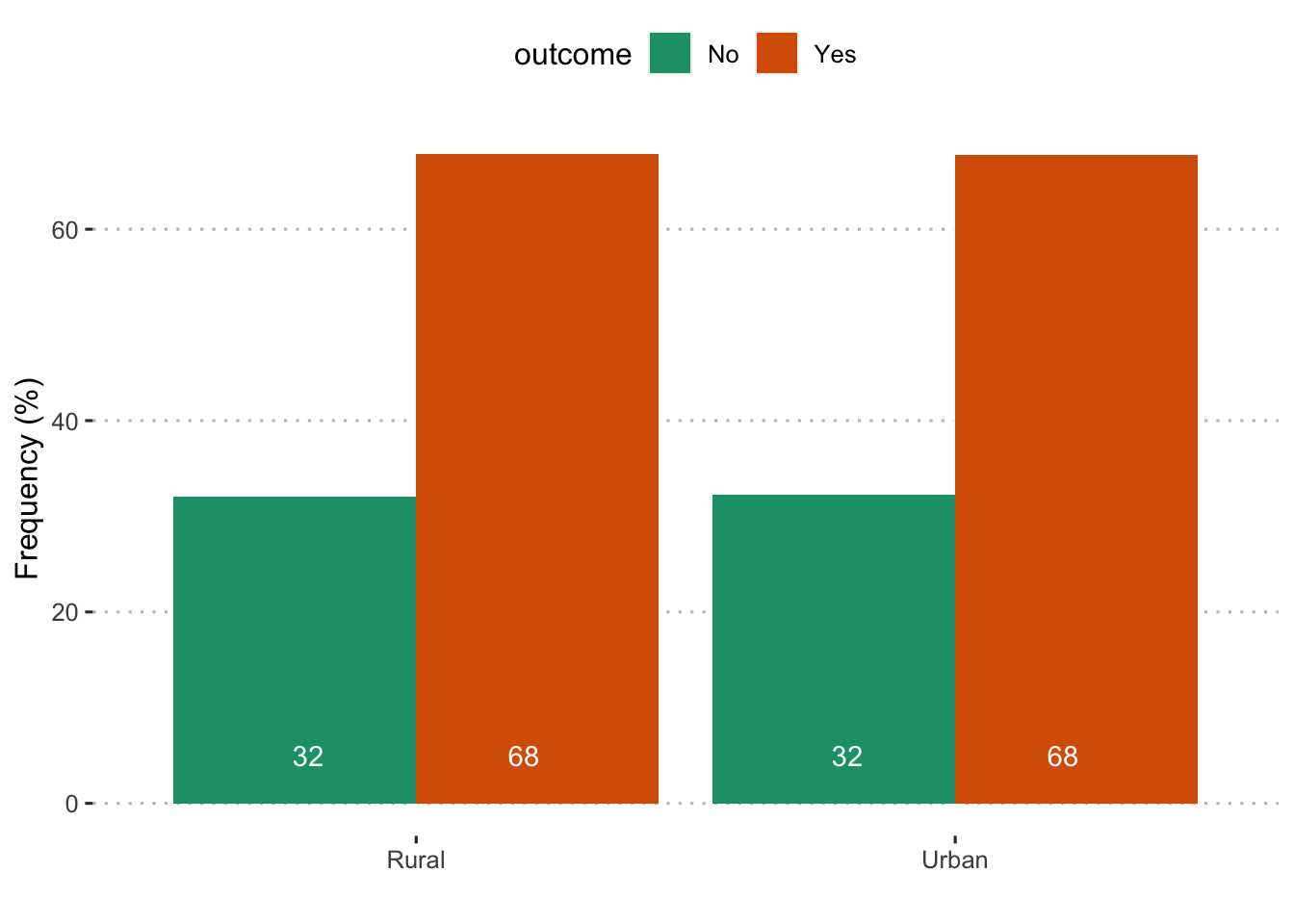
##
## Pearson's Chi-squared test with Yates' continuity correction
##
## data: scored$plan_cc_samenow and scored$rural
## X-squared = 0.0015298, df = 1, p-value = 0.9688Different arrangement
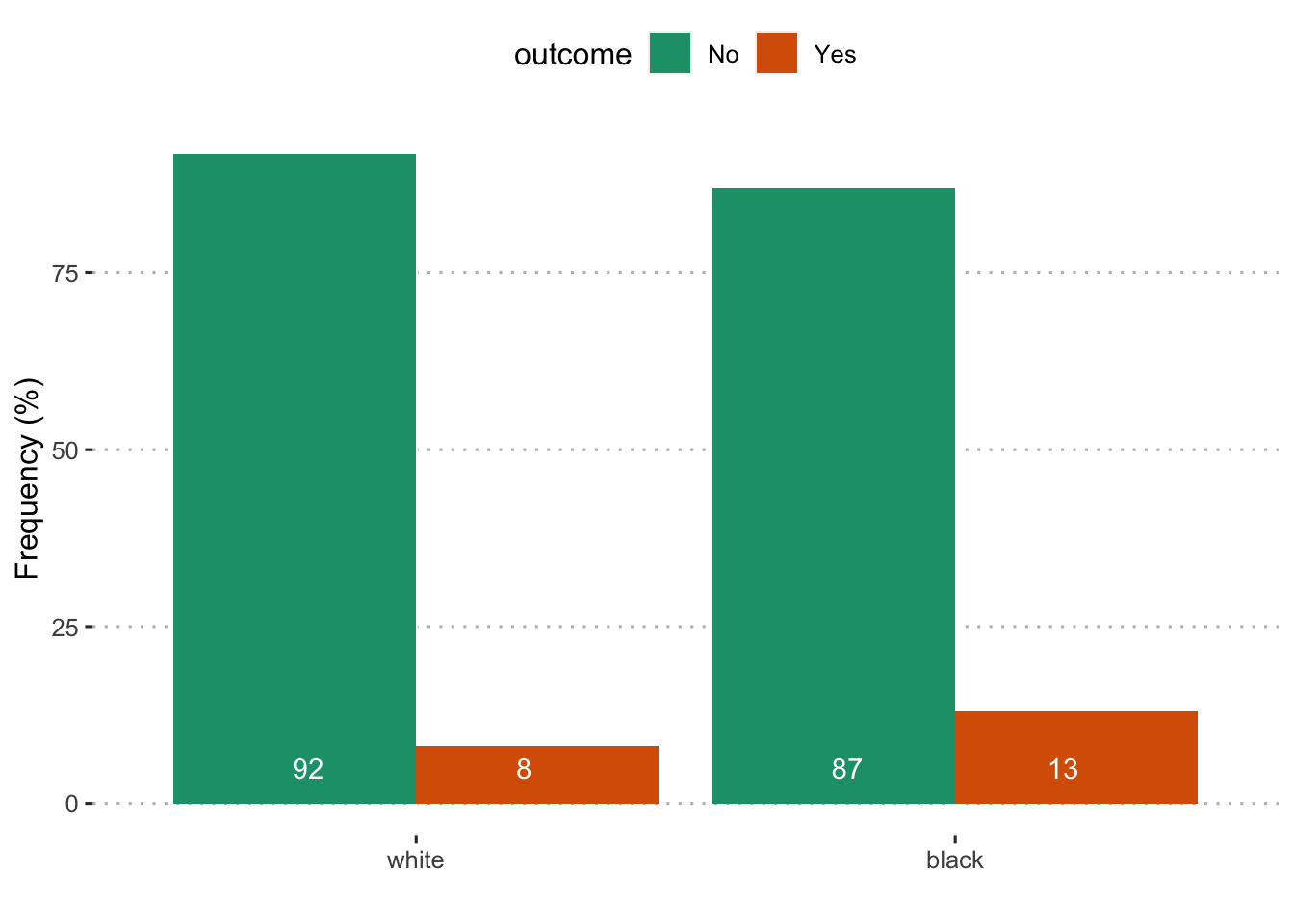
##
## Pearson's Chi-squared test with Yates' continuity correction
##
## data: scored$plan_cc_differ and scored$compare1
## X-squared = 9.9784, df = 1, p-value = 0.001584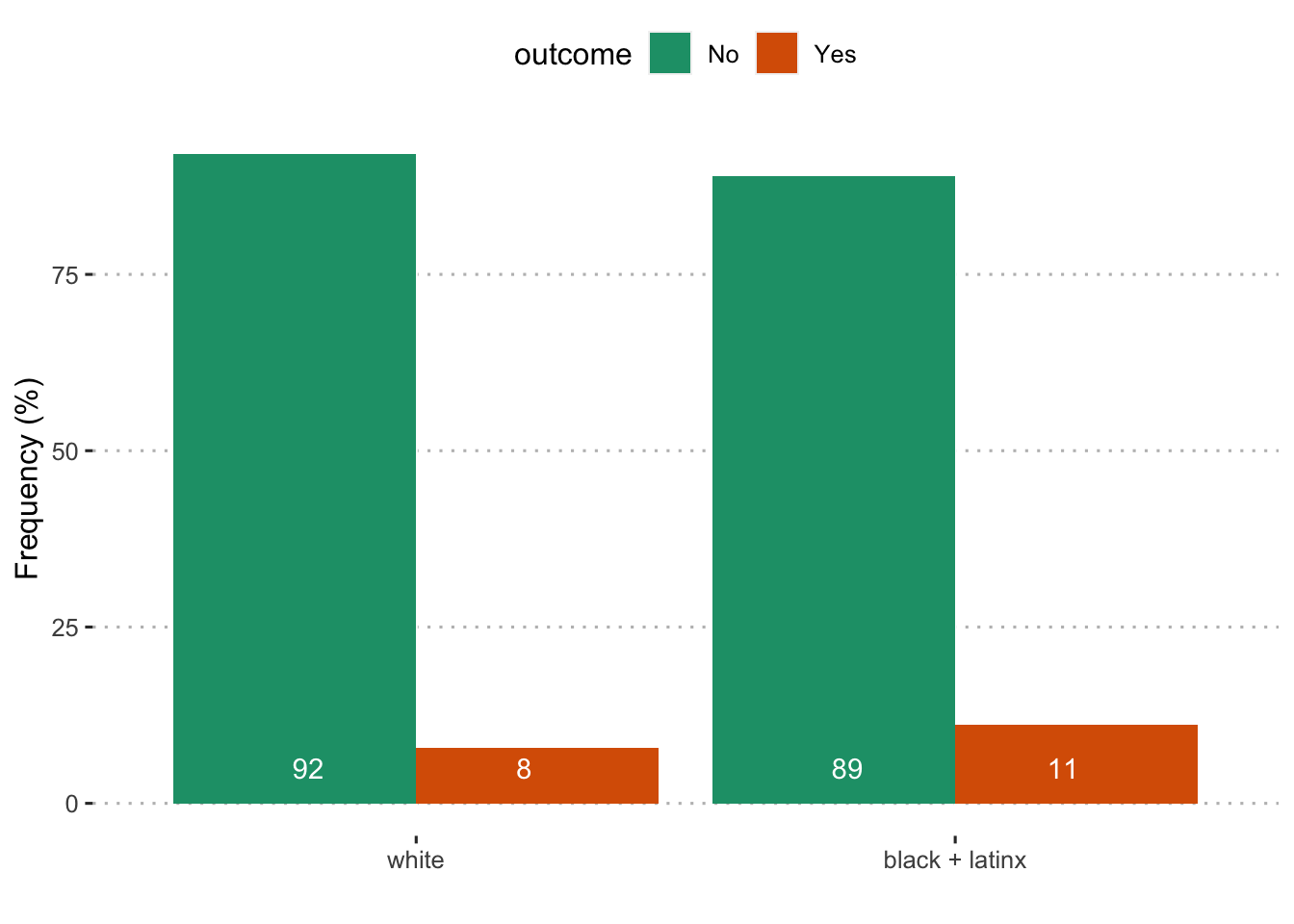
##
## Pearson's Chi-squared test with Yates' continuity correction
##
## data: scored$plan_cc_differ and scored$compare2
## X-squared = 10.671, df = 1, p-value = 0.001088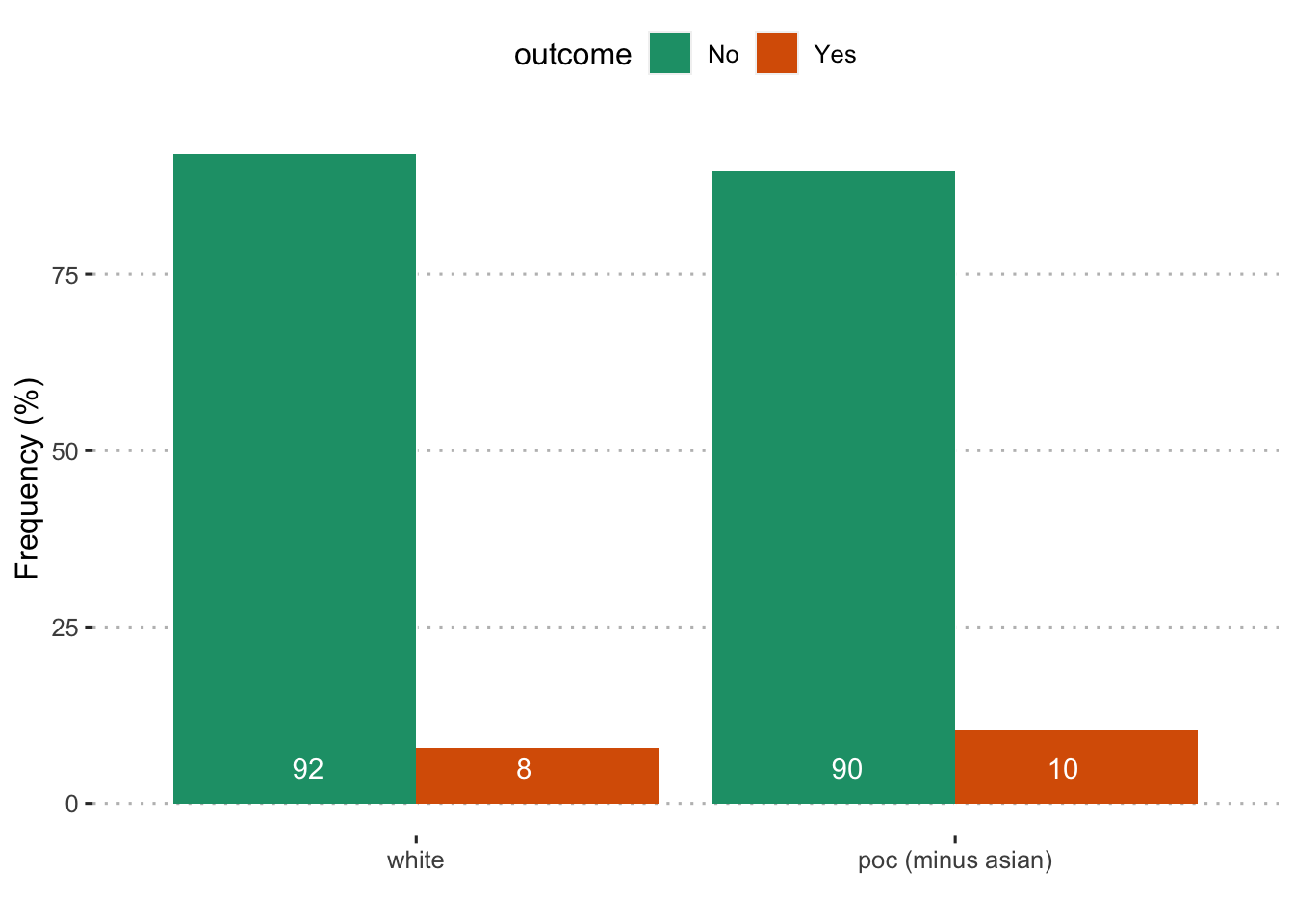
##
## Pearson's Chi-squared test with Yates' continuity correction
##
## data: scored$plan_cc_differ and scored$compare3
## X-squared = 7.5562, df = 1, p-value = 0.00598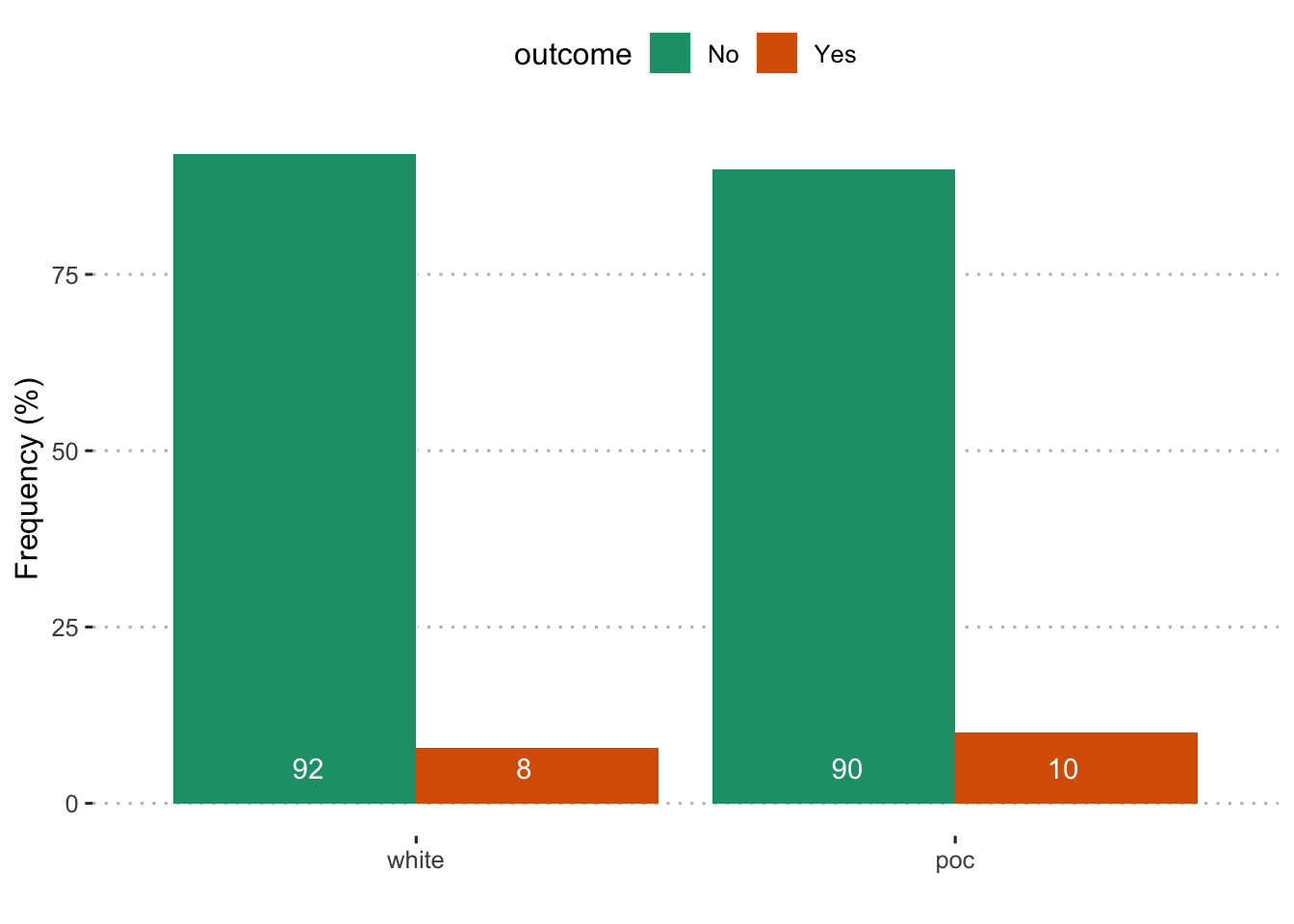
##
## Pearson's Chi-squared test with Yates' continuity correction
##
## data: scored$plan_cc_differ and scored$compare4
## X-squared = 6.1717, df = 1, p-value = 0.01298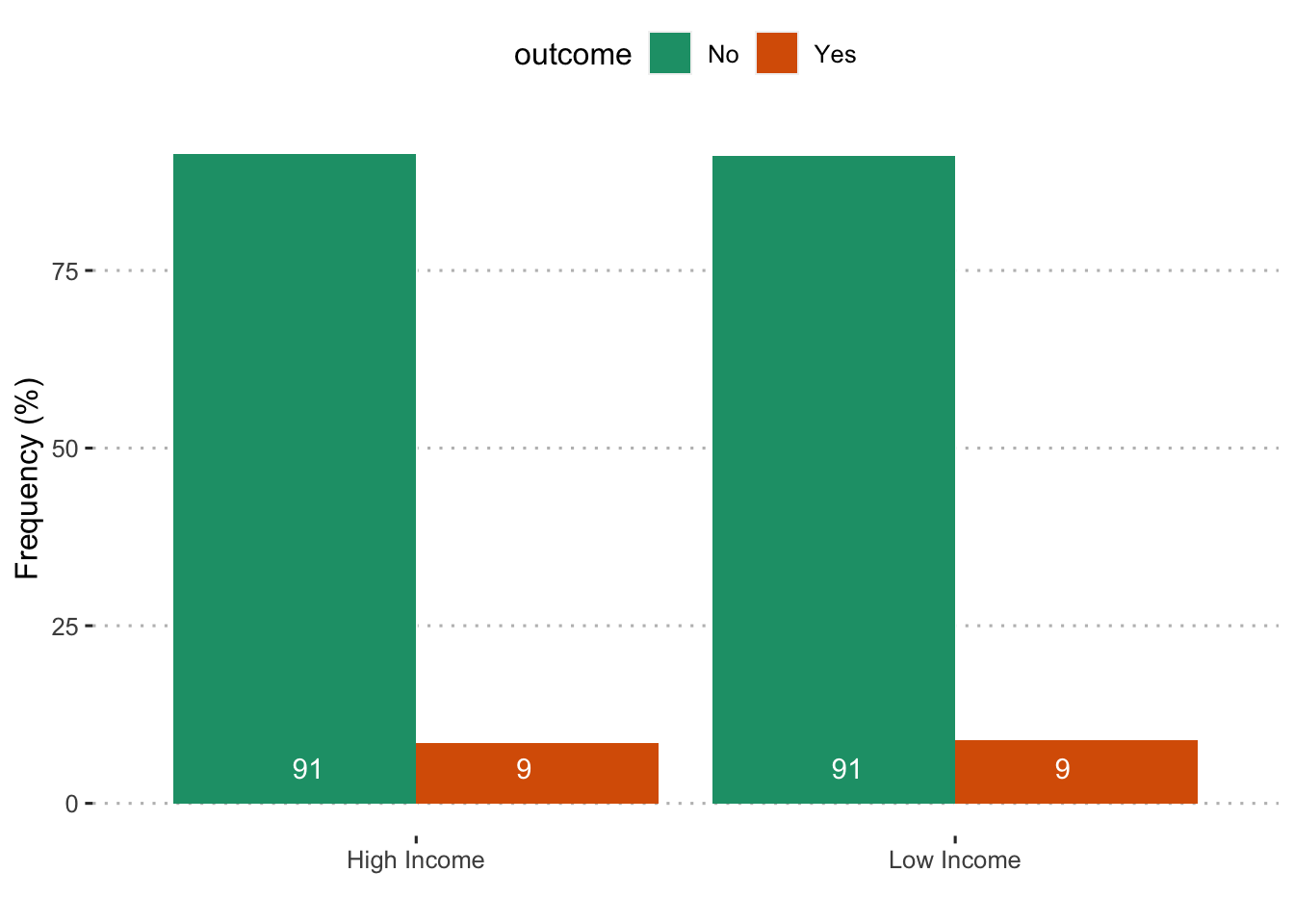
##
## Pearson's Chi-squared test with Yates' continuity correction
##
## data: scored$plan_cc_differ and scored$poverty150
## X-squared = 0.1158, df = 1, p-value = 0.7336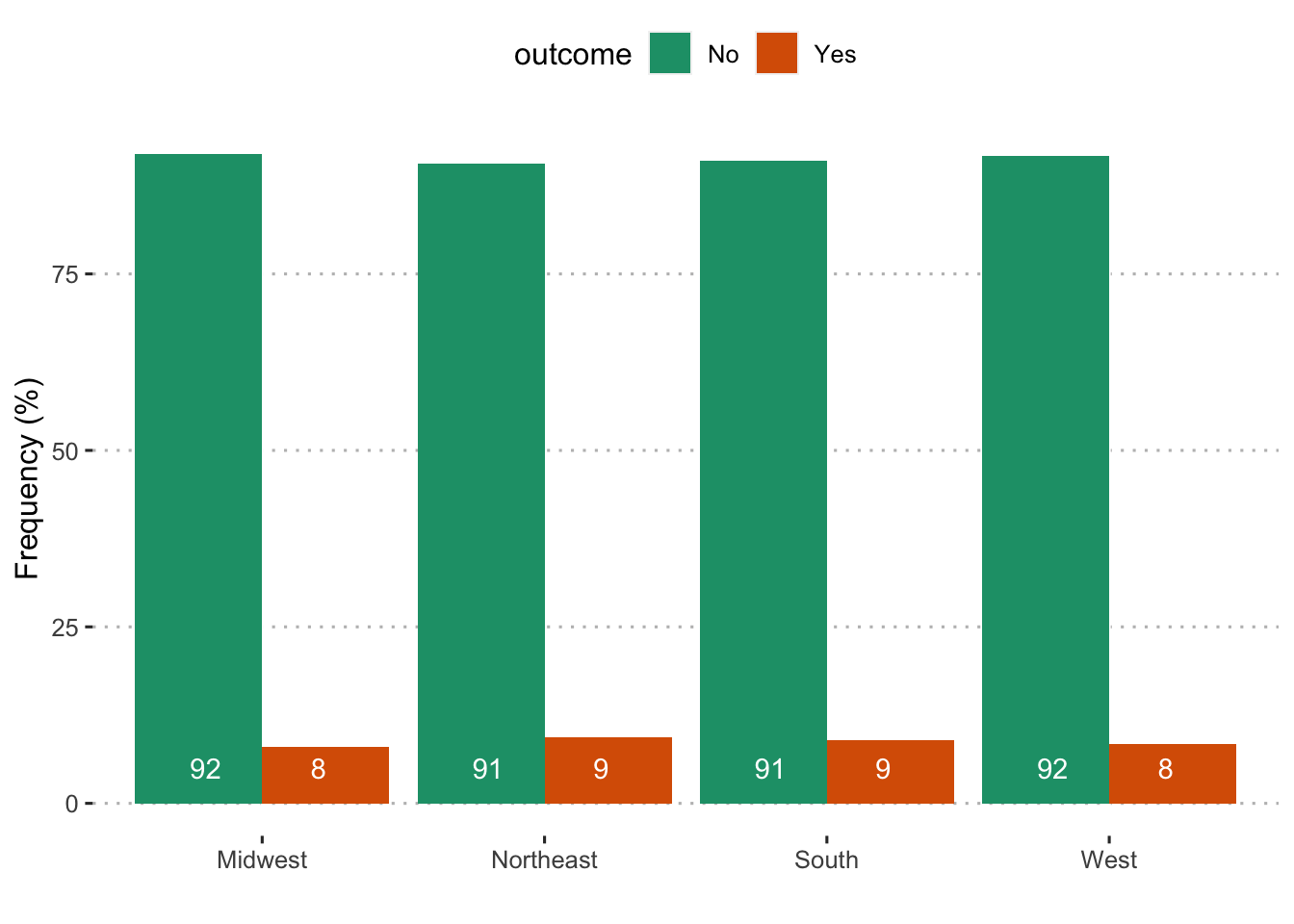
##
## Pearson's Chi-squared test
##
## data: scored$plan_cc_differ and scored$region
## X-squared = 1.4694, df = 3, p-value = 0.6894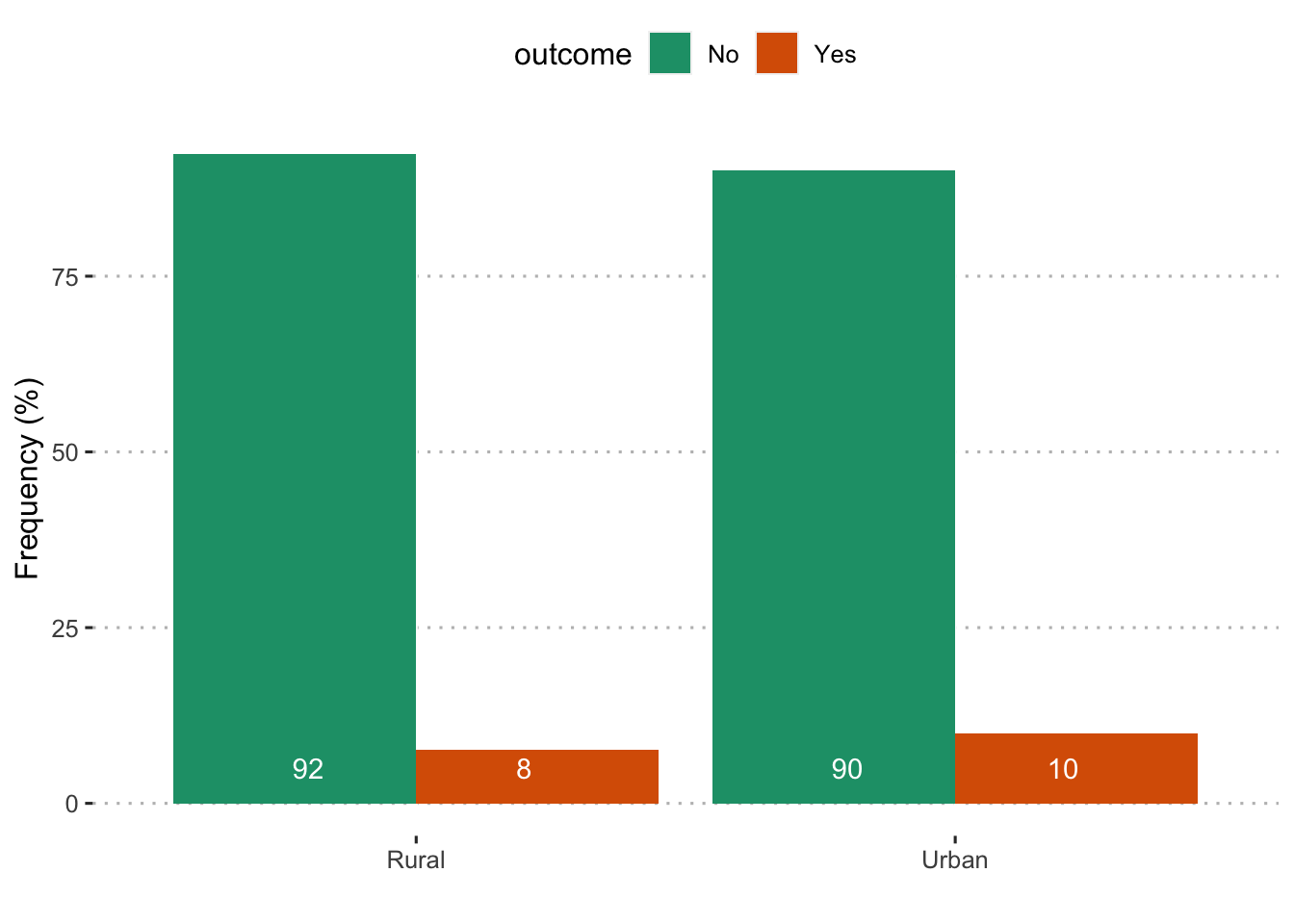
##
## Pearson's Chi-squared test with Yates' continuity correction
##
## data: scored$plan_cc_differ and scored$rural
## X-squared = 4.4619, df = 1, p-value = 0.03466Same as during pandemic
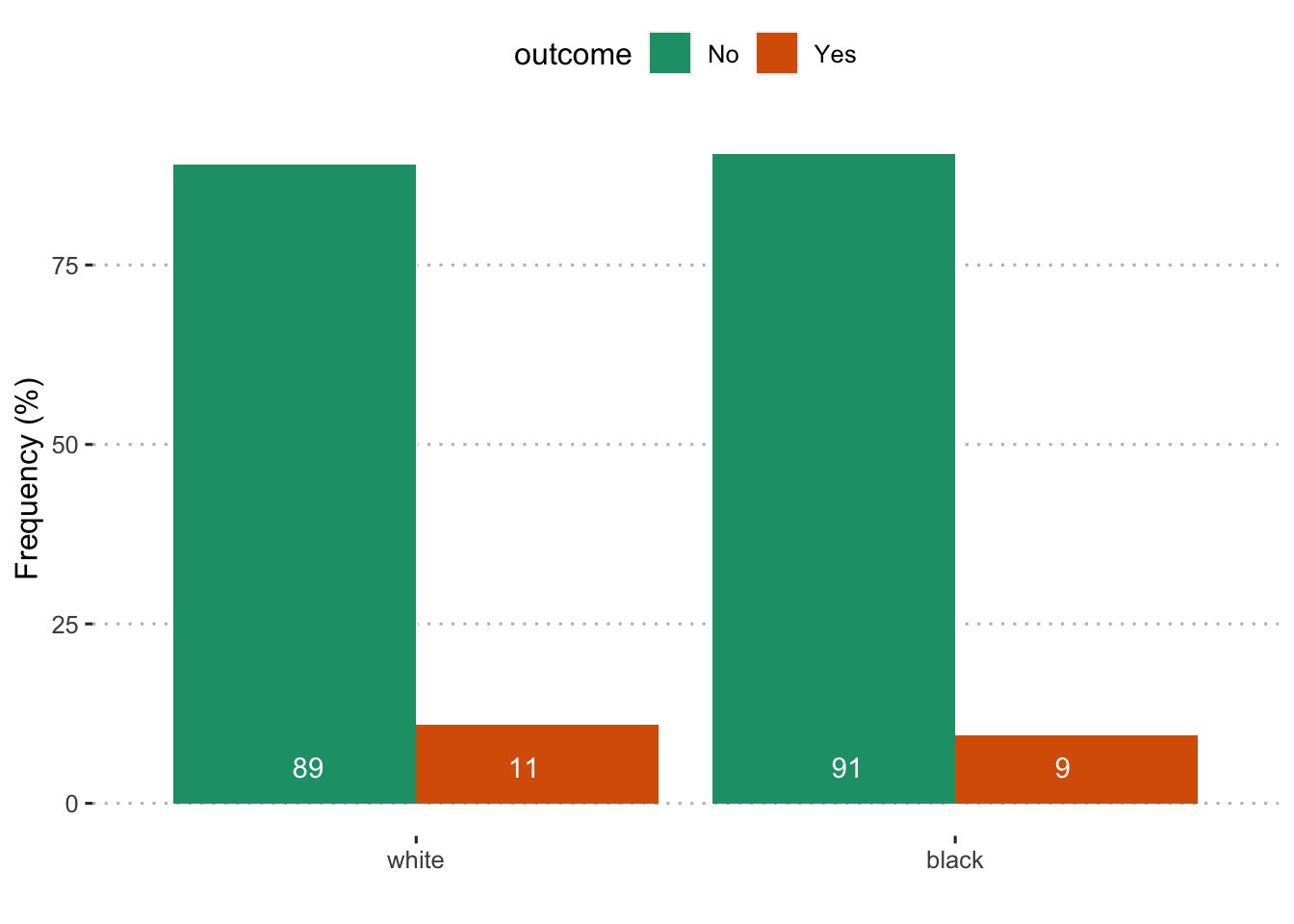
##
## Pearson's Chi-squared test with Yates' continuity correction
##
## data: scored$plan_cc_sameCOVID and scored$compare1
## X-squared = 0.67446, df = 1, p-value = 0.4115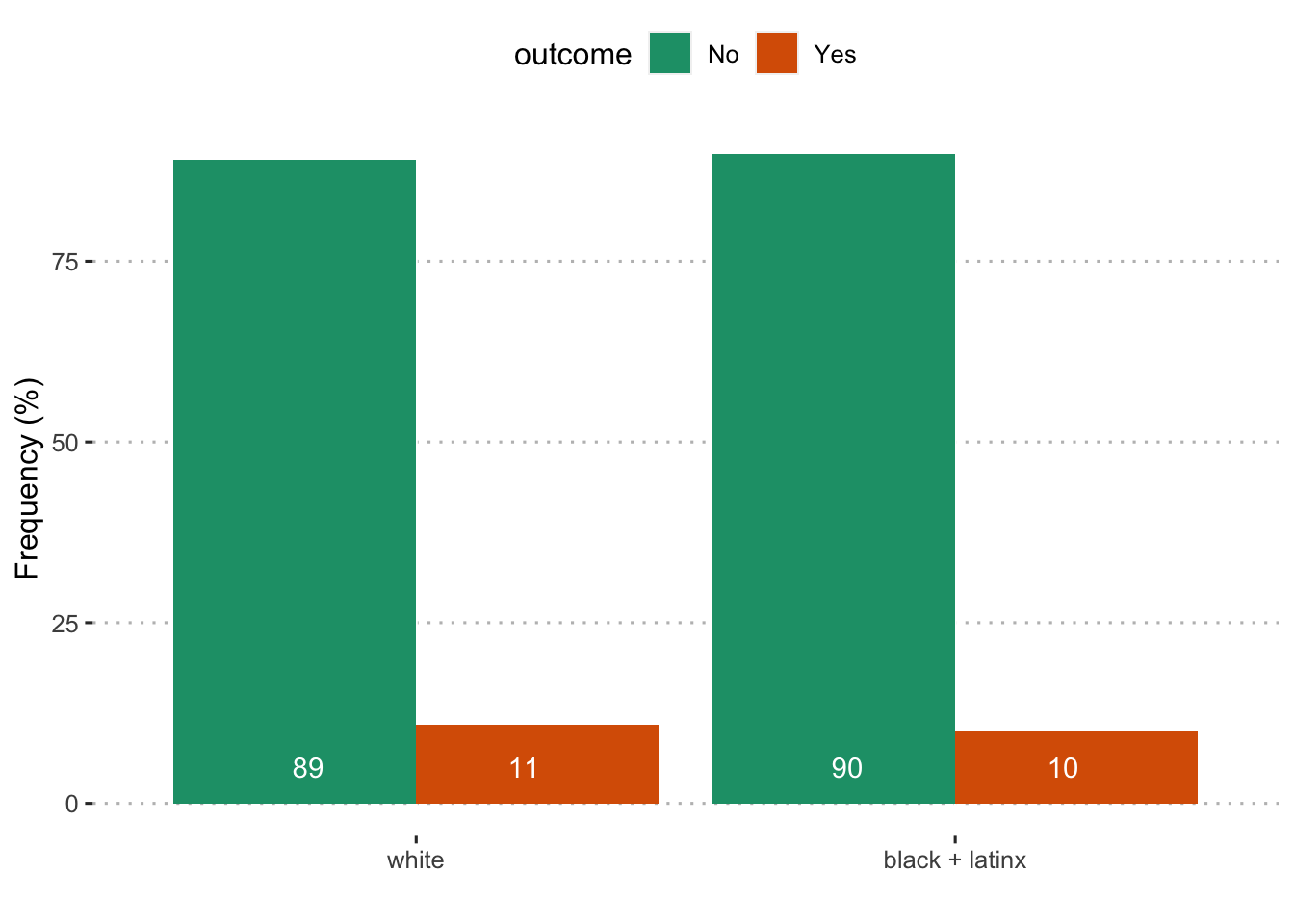
##
## Pearson's Chi-squared test with Yates' continuity correction
##
## data: scored$plan_cc_sameCOVID and scored$compare2
## X-squared = 0.504, df = 1, p-value = 0.4777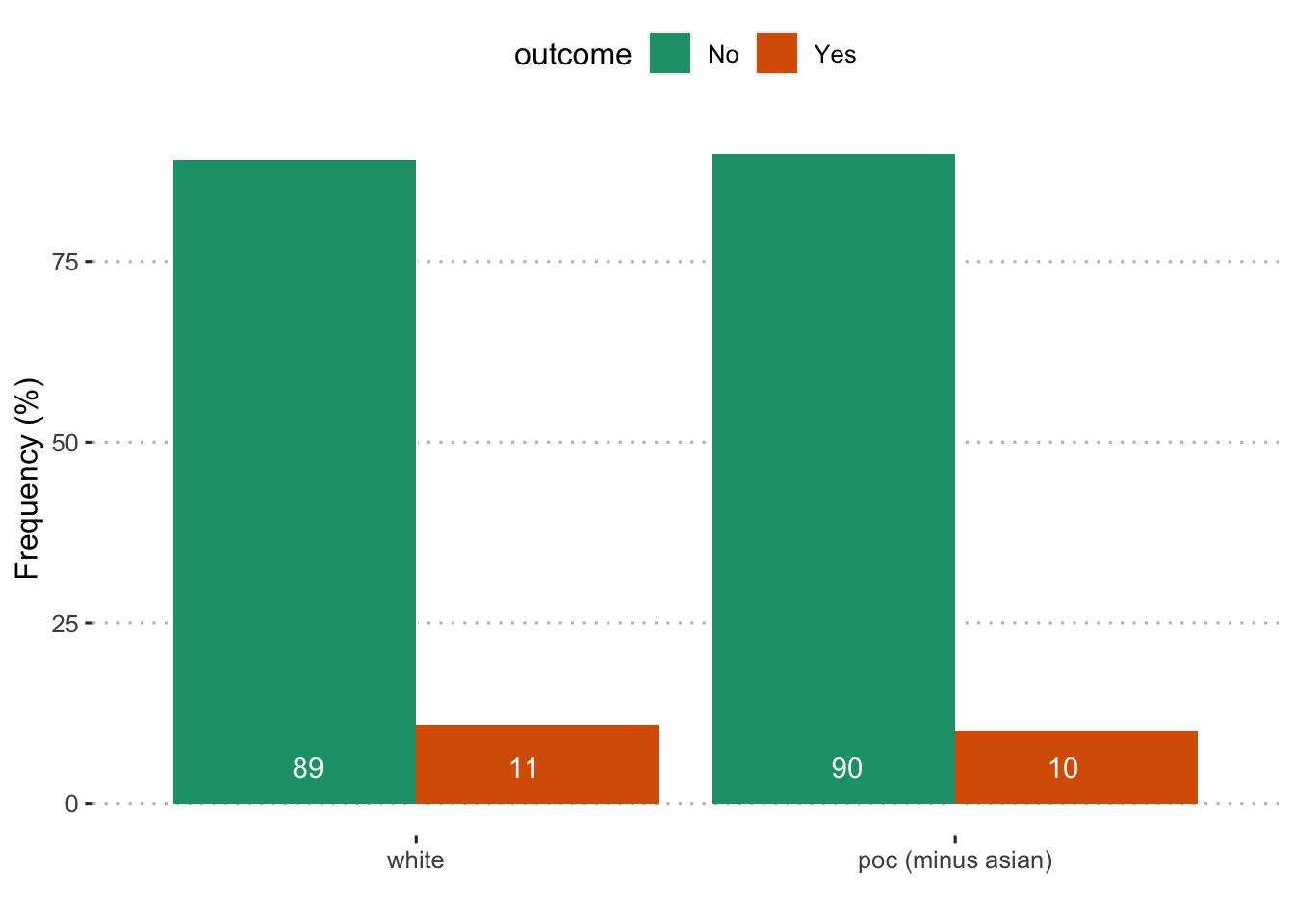
##
## Pearson's Chi-squared test with Yates' continuity correction
##
## data: scored$plan_cc_sameCOVID and scored$compare3
## X-squared = 0.6699, df = 1, p-value = 0.4131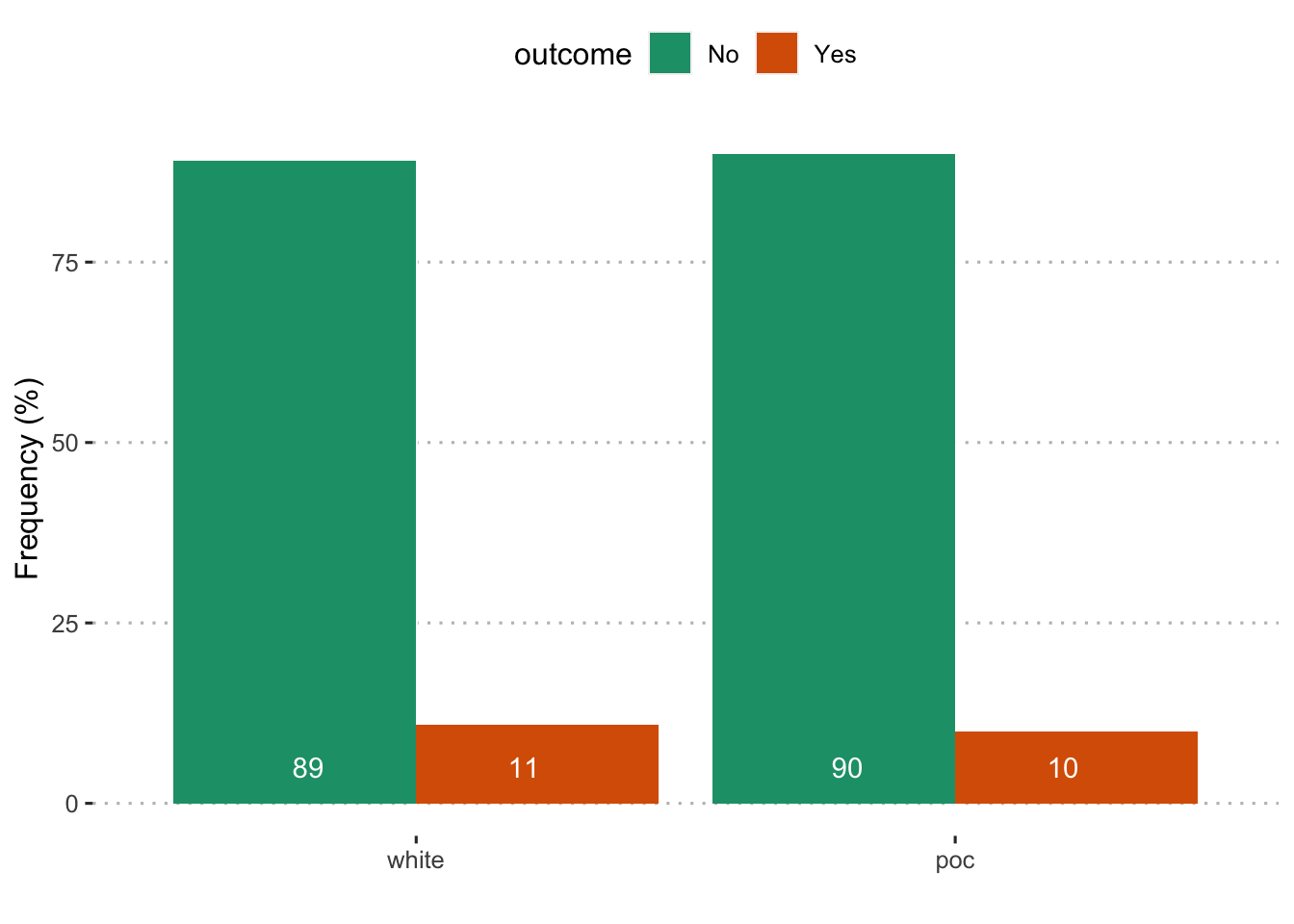
##
## Pearson's Chi-squared test with Yates' continuity correction
##
## data: scored$plan_cc_sameCOVID and scored$compare4
## X-squared = 0.90868, df = 1, p-value = 0.3405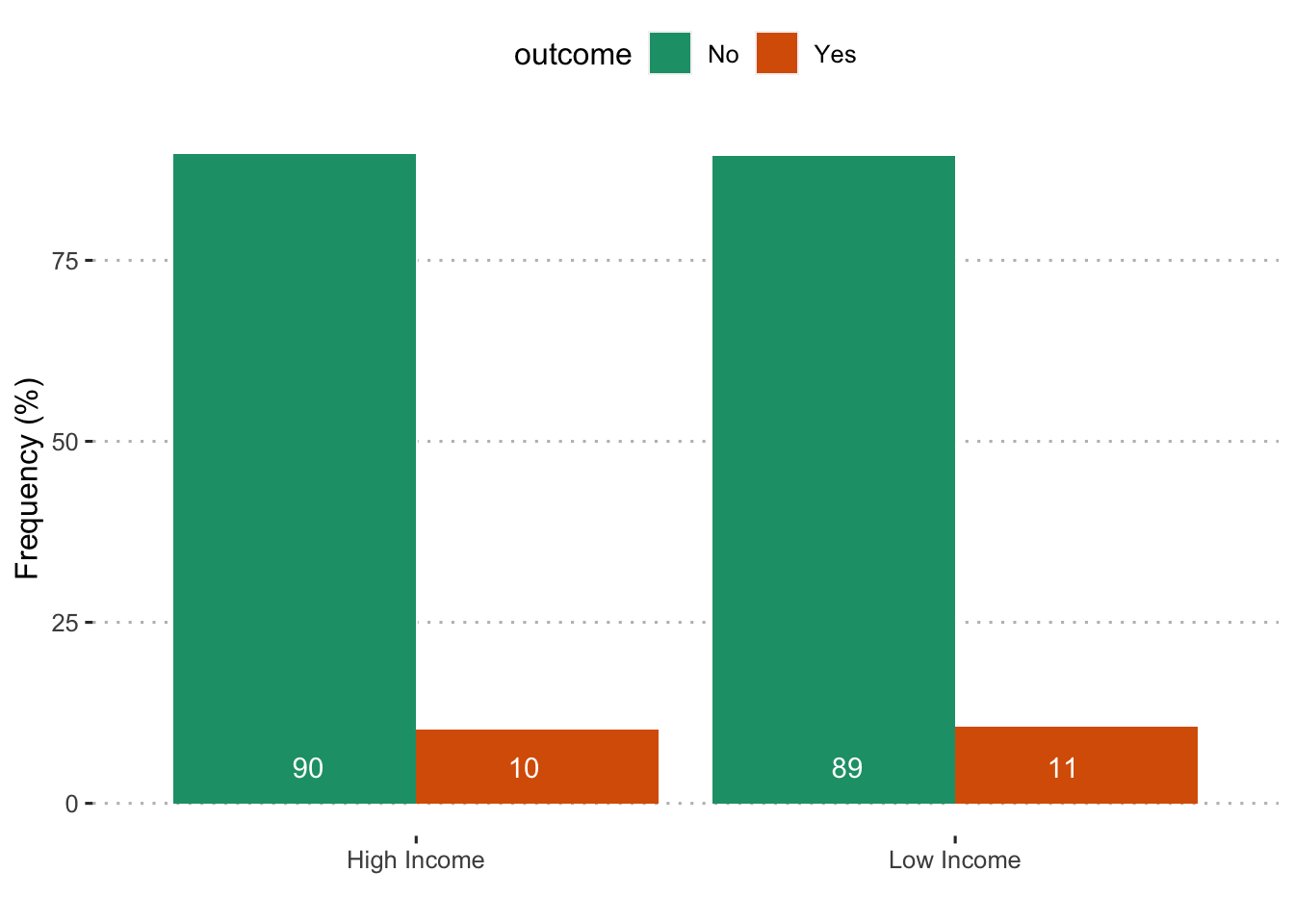
##
## Pearson's Chi-squared test with Yates' continuity correction
##
## data: scored$plan_cc_sameCOVID and scored$poverty150
## X-squared = 0.086435, df = 1, p-value = 0.7688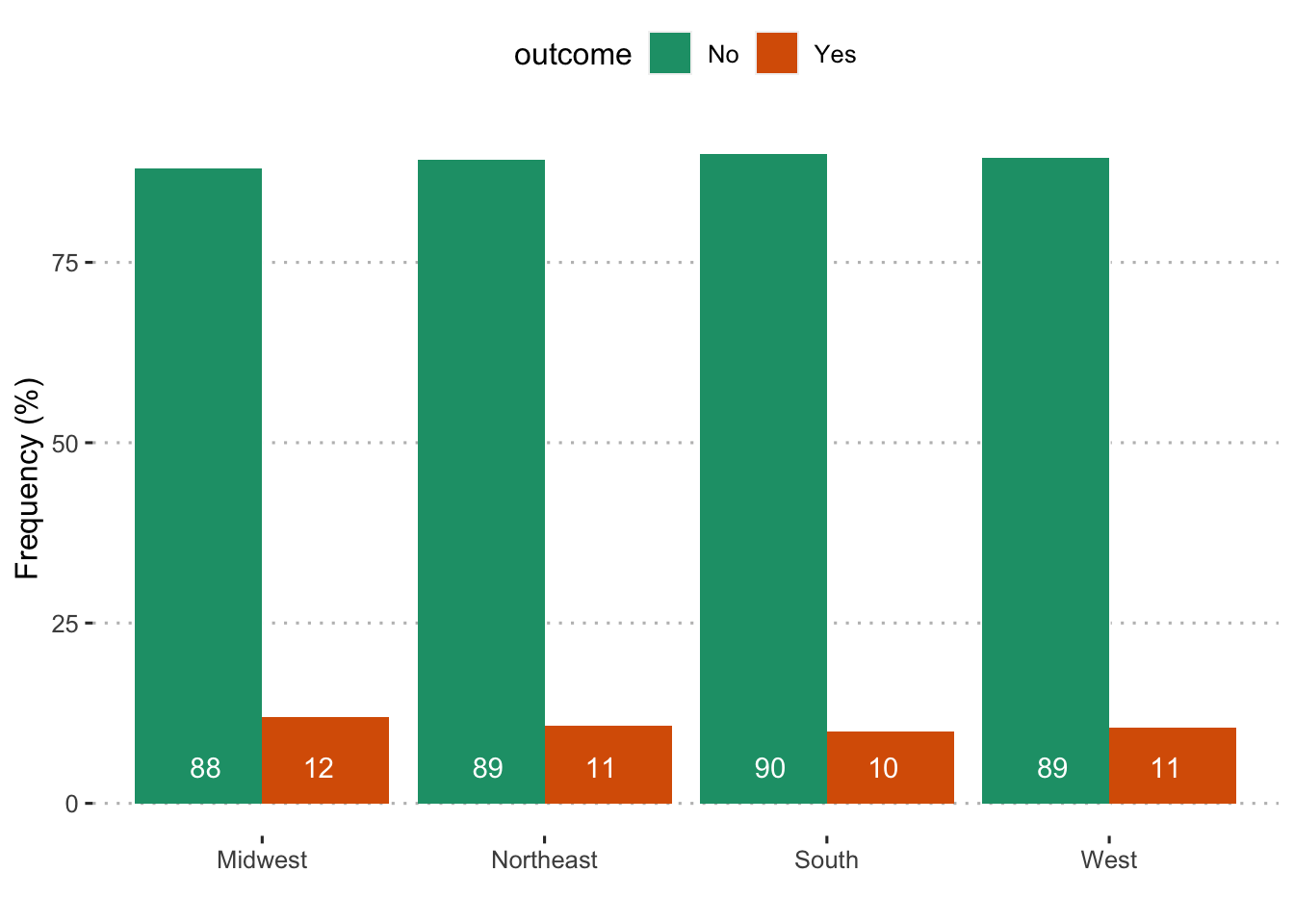
##
## Pearson's Chi-squared test
##
## data: scored$plan_cc_sameCOVID and scored$region
## X-squared = 3.0154, df = 3, p-value = 0.3893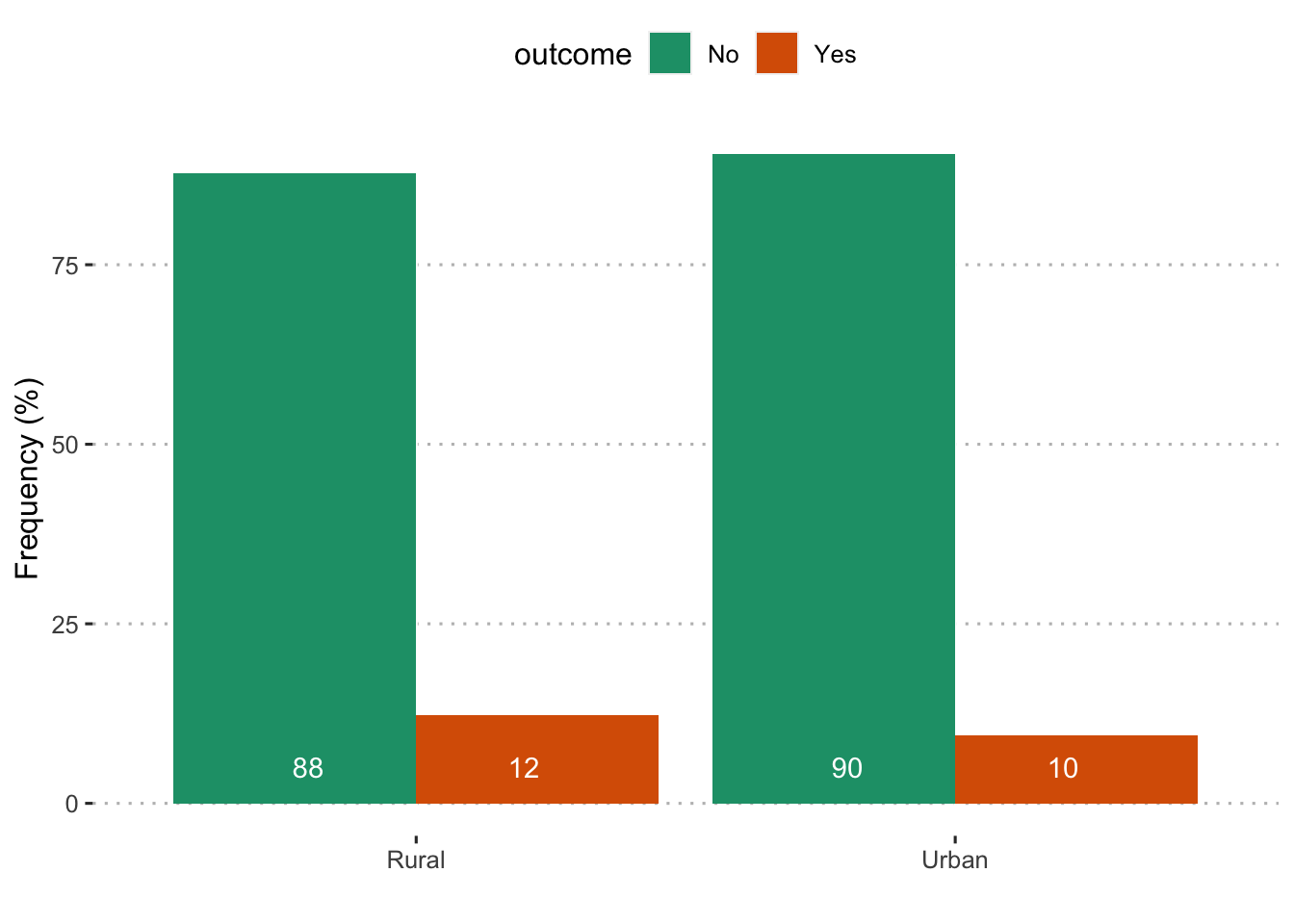
##
## Pearson's Chi-squared test with Yates' continuity correction
##
## data: scored$plan_cc_sameCOVID and scored$rural
## X-squared = 4.5959, df = 1, p-value = 0.03205Don’t know
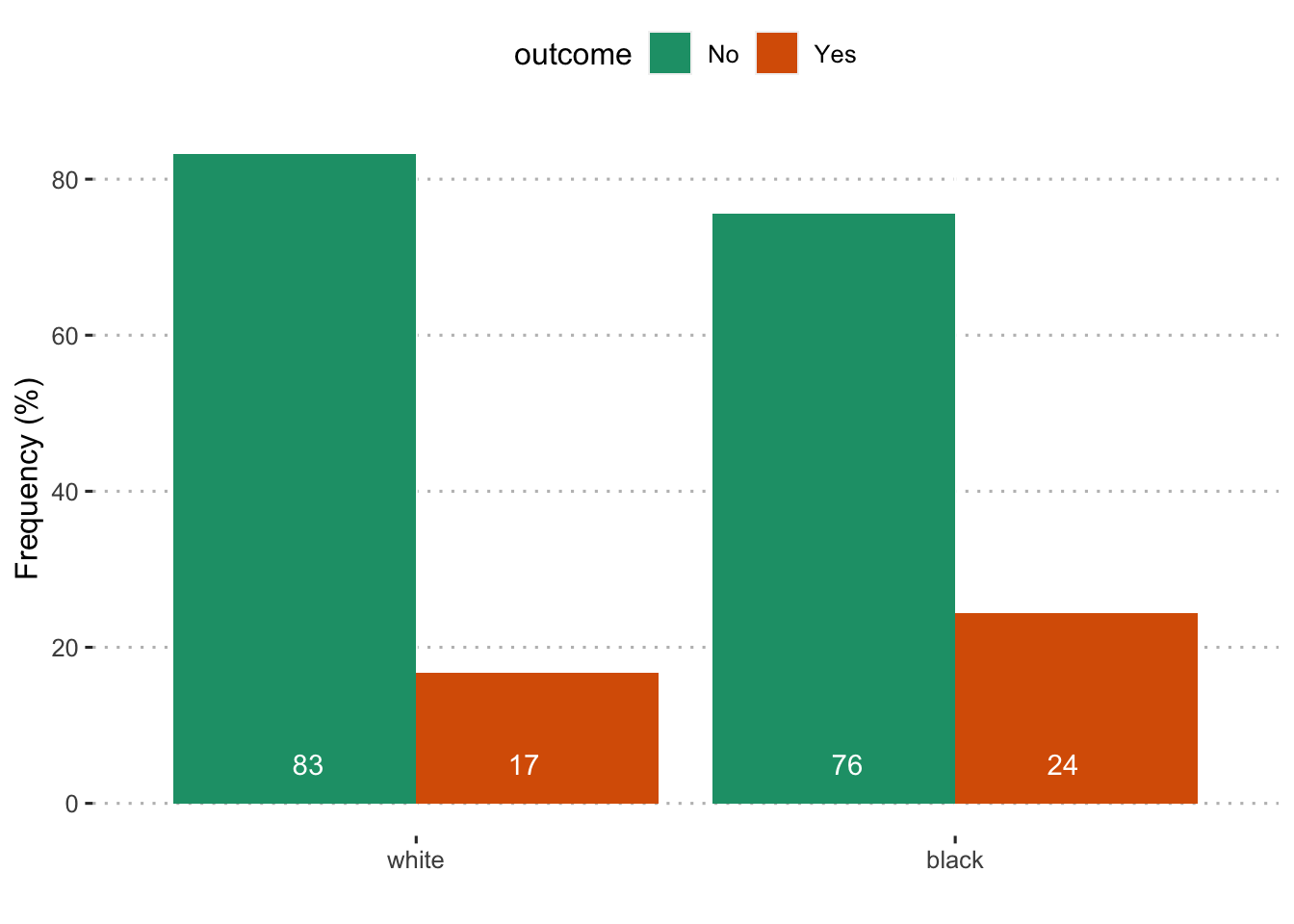
##
## Pearson's Chi-squared test with Yates' continuity correction
##
## data: scored$plan_cc_dontknow and scored$compare1
## X-squared = 14.216, df = 1, p-value = 0.000163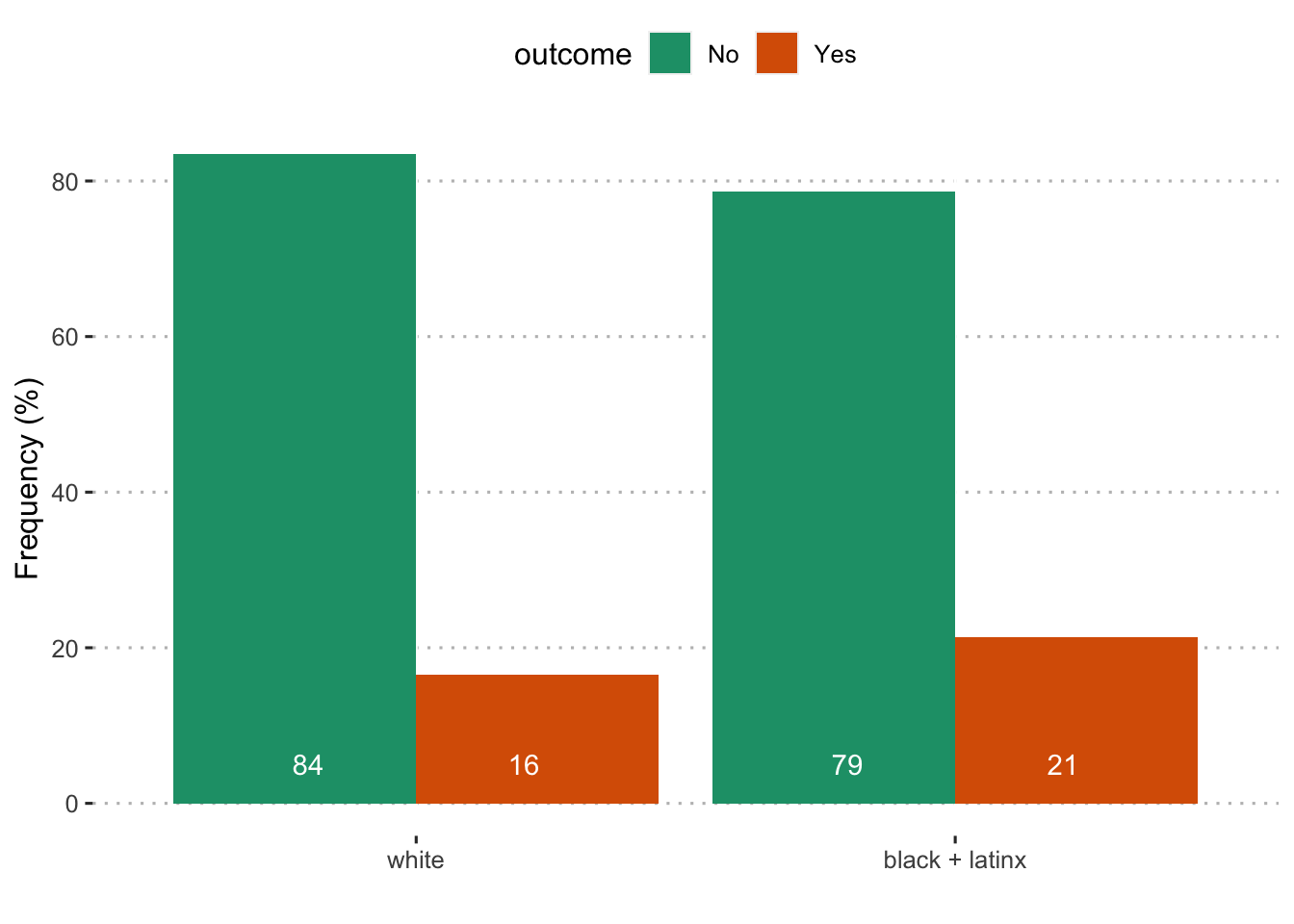
##
## Pearson's Chi-squared test with Yates' continuity correction
##
## data: scored$plan_cc_dontknow and scored$compare2
## X-squared = 13.412, df = 1, p-value = 0.00025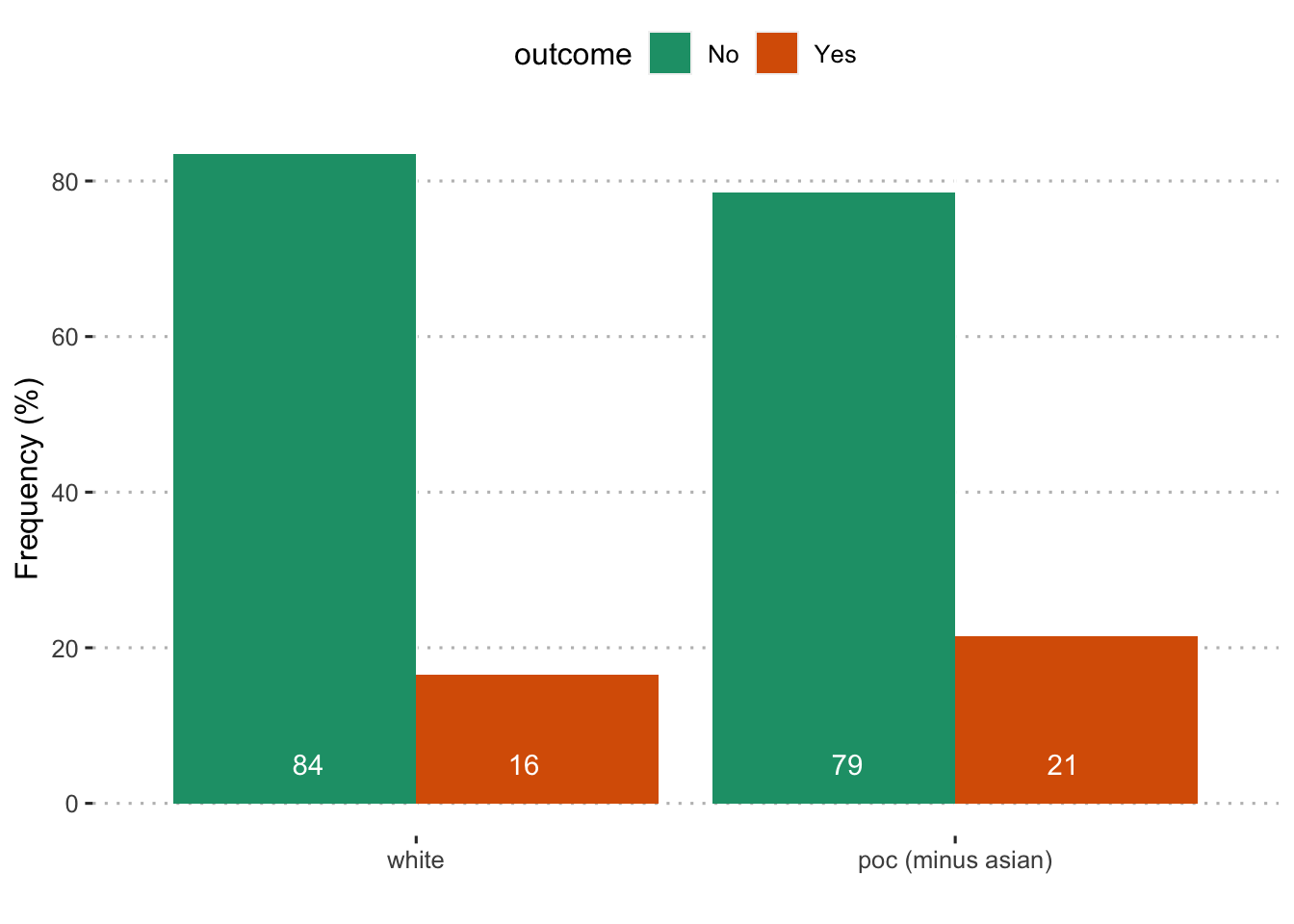
##
## Pearson's Chi-squared test with Yates' continuity correction
##
## data: scored$plan_cc_dontknow and scored$compare3
## X-squared = 16.14, df = 1, p-value = 5.883e-05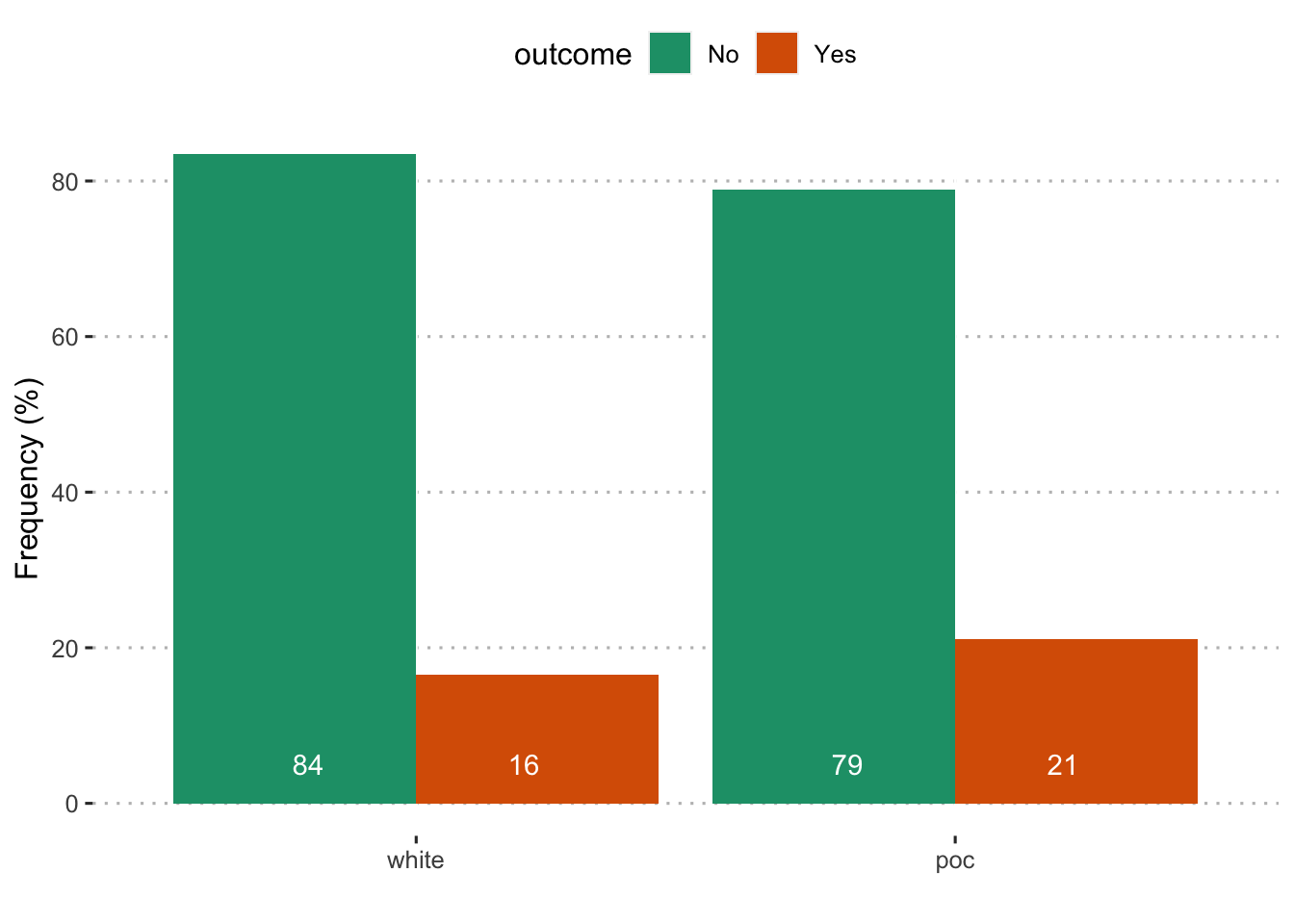
##
## Pearson's Chi-squared test with Yates' continuity correction
##
## data: scored$plan_cc_dontknow and scored$compare4
## X-squared = 14.656, df = 1, p-value = 0.000129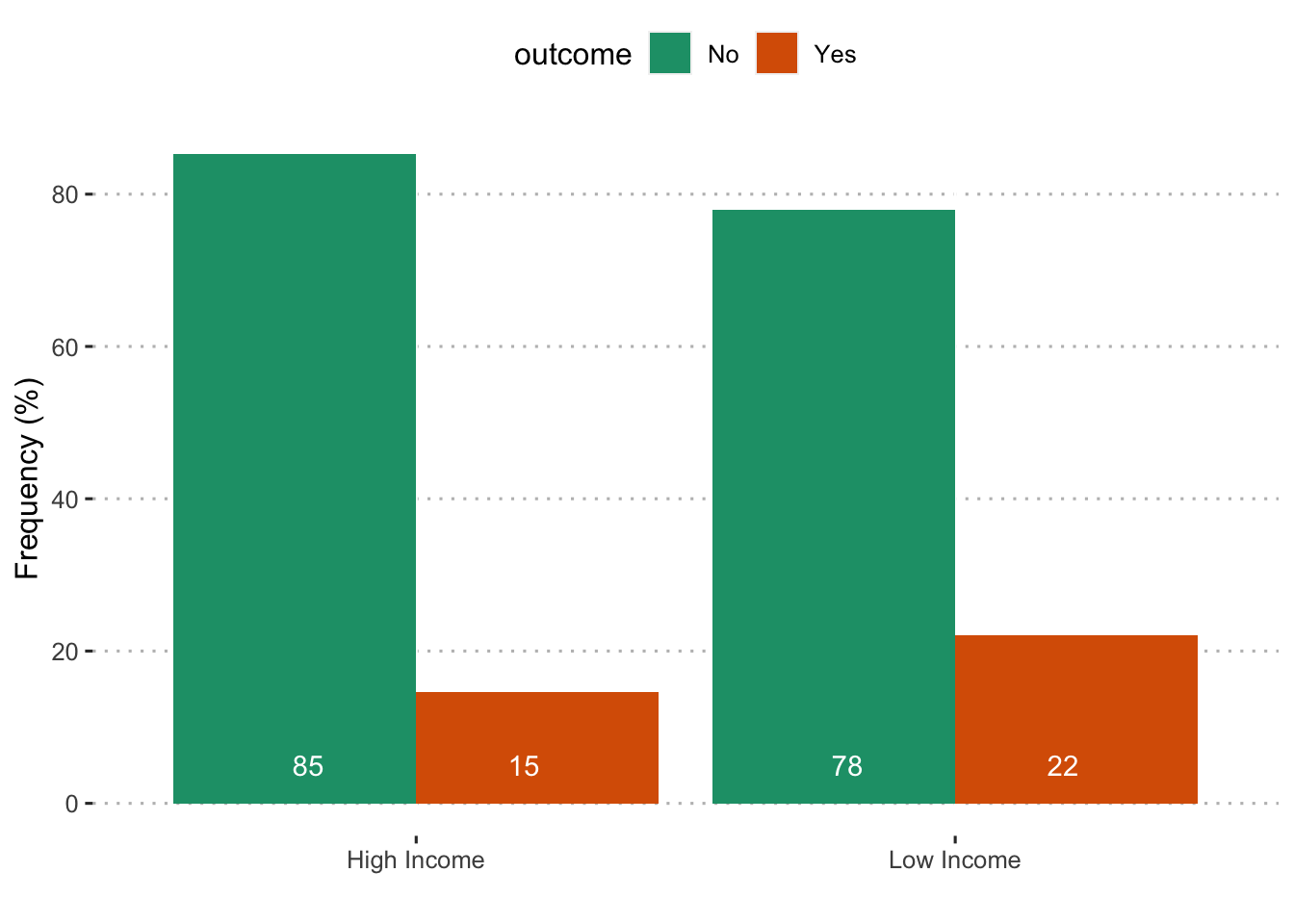
##
## Pearson's Chi-squared test with Yates' continuity correction
##
## data: scored$plan_cc_dontknow and scored$poverty150
## X-squared = 33.766, df = 1, p-value = 6.214e-09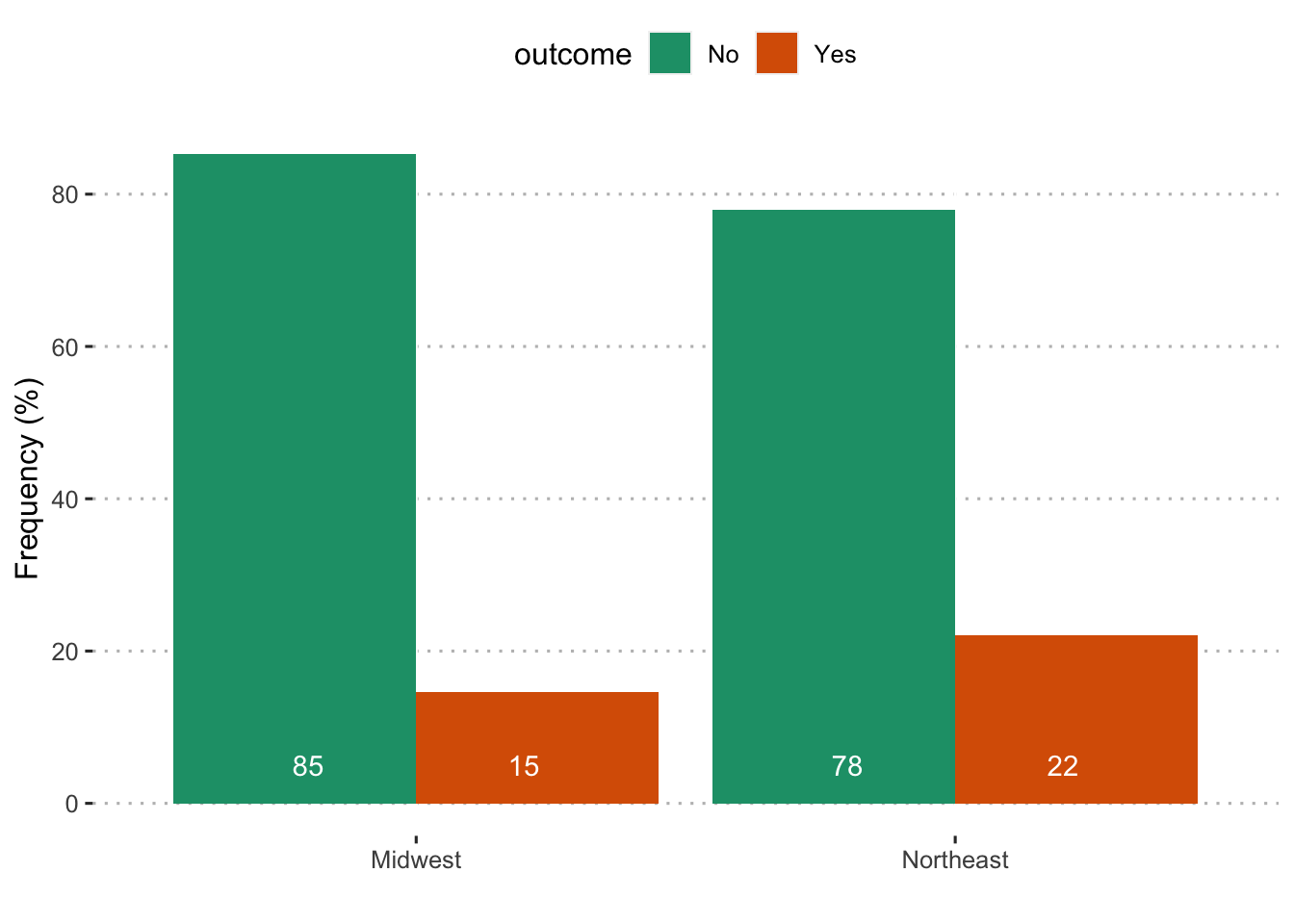
##
## Pearson's Chi-squared test with Yates' continuity correction
##
## data: scored$plan_cc_dontknow and scored$poverty150
## X-squared = 33.766, df = 1, p-value = 6.214e-09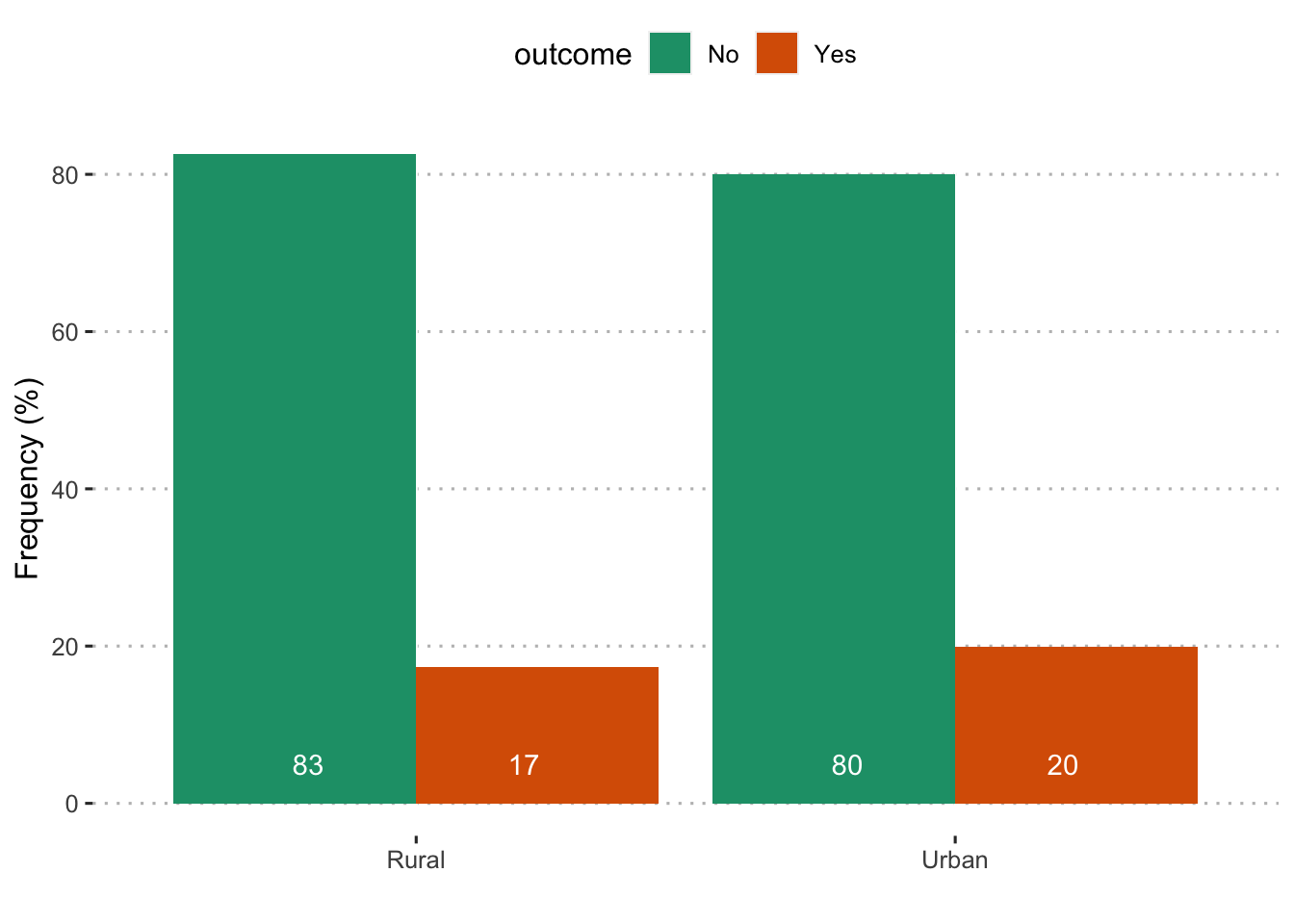
##
## Pearson's Chi-squared test with Yates' continuity correction
##
## data: scored$plan_cc_dontknow and scored$rural
## X-squared = 2.7611, df = 1, p-value = 0.09658Lost type of childcare
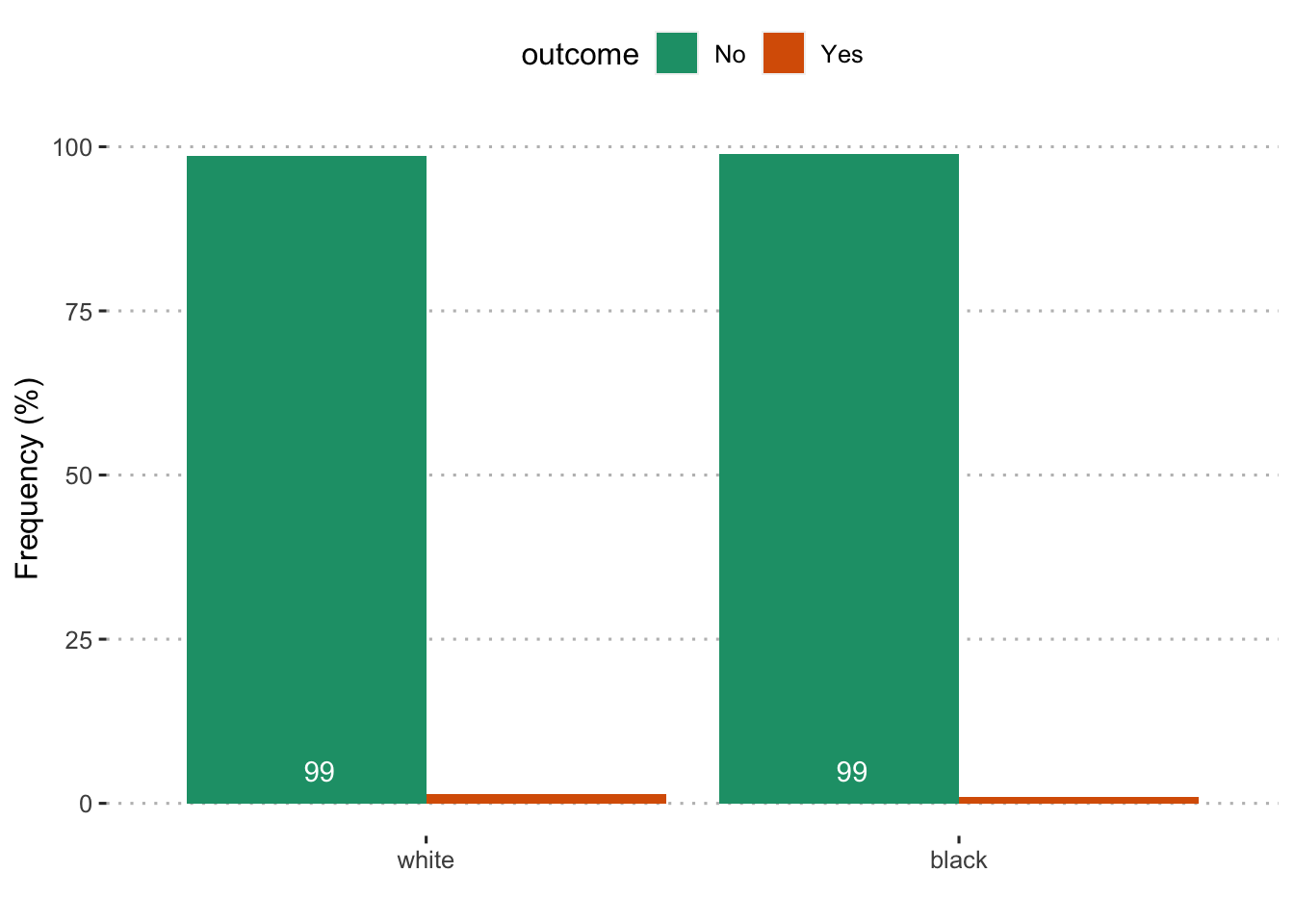
##
## Pearson's Chi-squared test with Yates' continuity correction
##
## data: scored$lostCC and scored$compare1
## X-squared = 0.40809, df = 1, p-value = 0.5229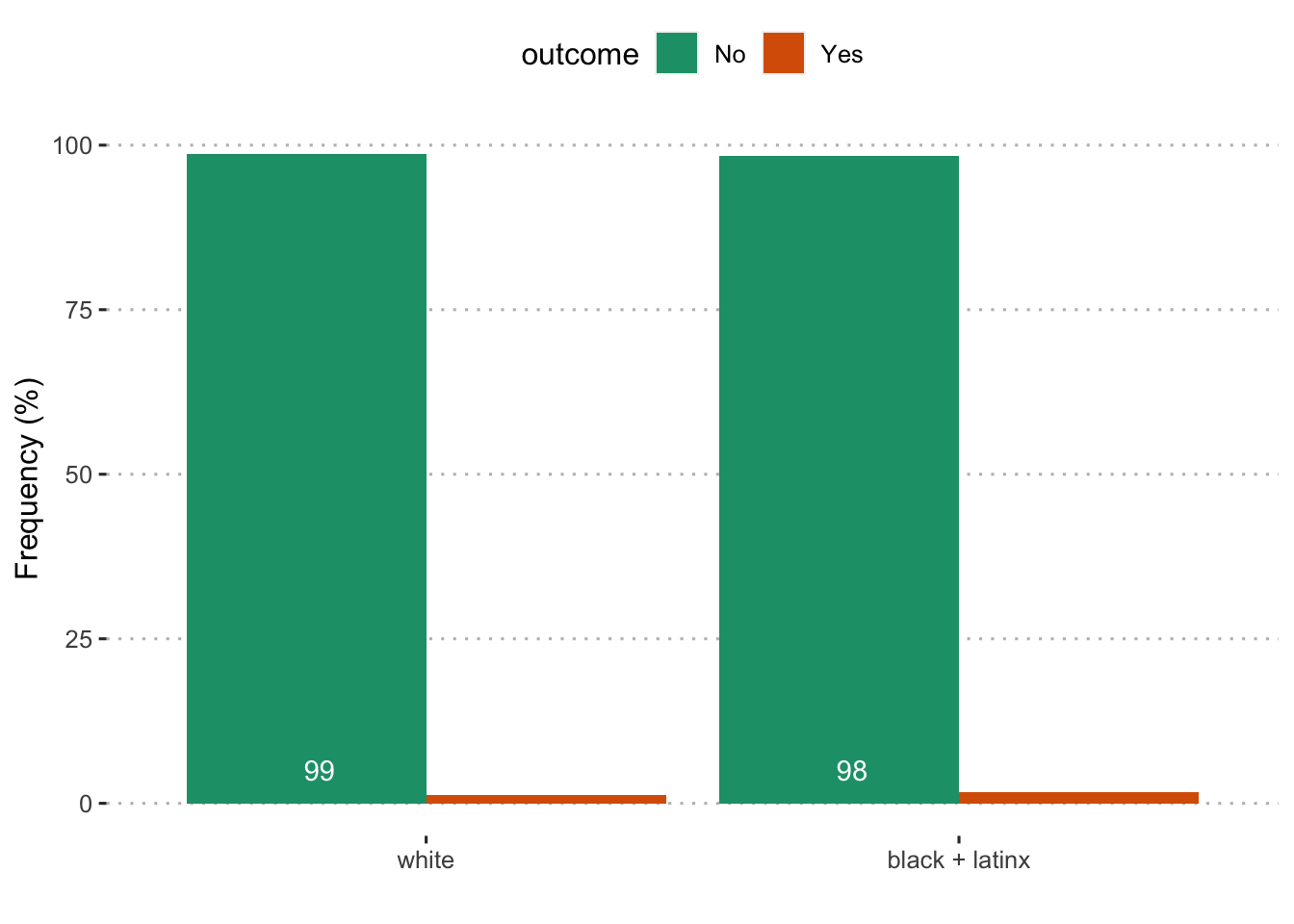
##
## Pearson's Chi-squared test with Yates' continuity correction
##
## data: scored$lostCC and scored$compare2
## X-squared = 1.7122, df = 1, p-value = 0.1907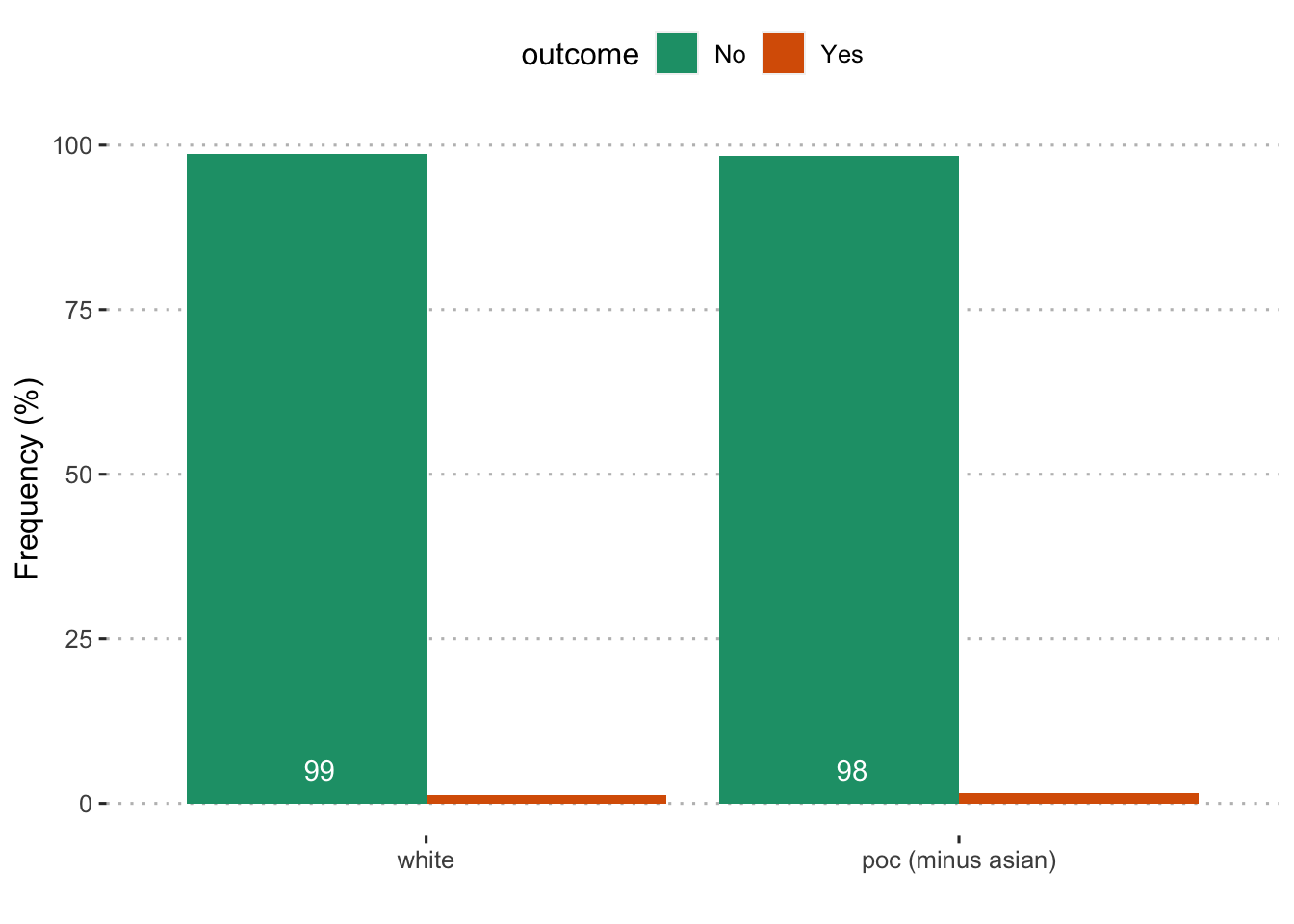
##
## Pearson's Chi-squared test with Yates' continuity correction
##
## data: scored$lostCC and scored$compare3
## X-squared = 1.1796, df = 1, p-value = 0.2774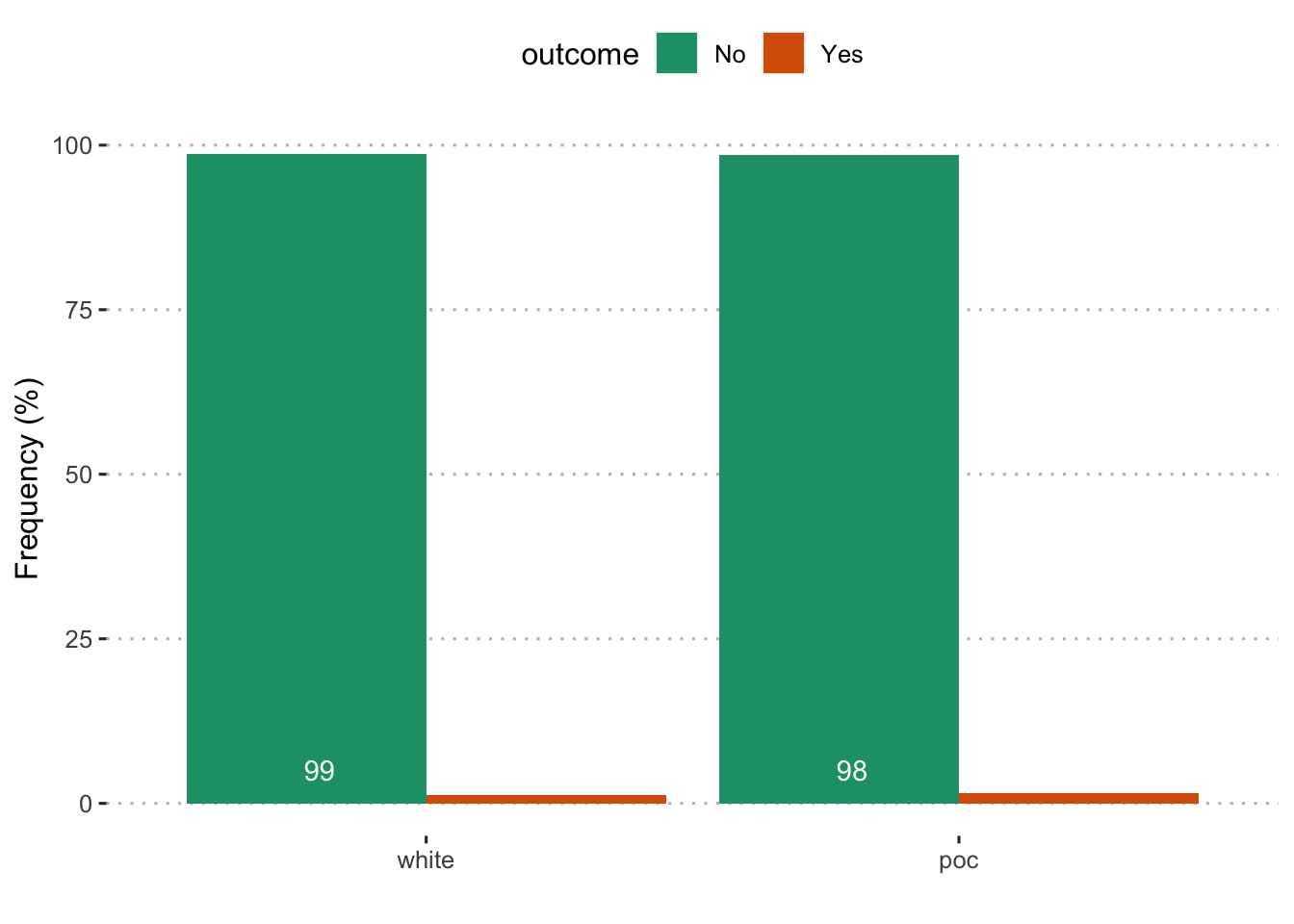
##
## Pearson's Chi-squared test with Yates' continuity correction
##
## data: scored$lostCC and scored$compare4
## X-squared = 0.74367, df = 1, p-value = 0.3885
##
## Pearson's Chi-squared test with Yates' continuity correction
##
## data: scored$plan_cc_dontknow and scored$poverty150
## X-squared = 33.766, df = 1, p-value = 6.214e-09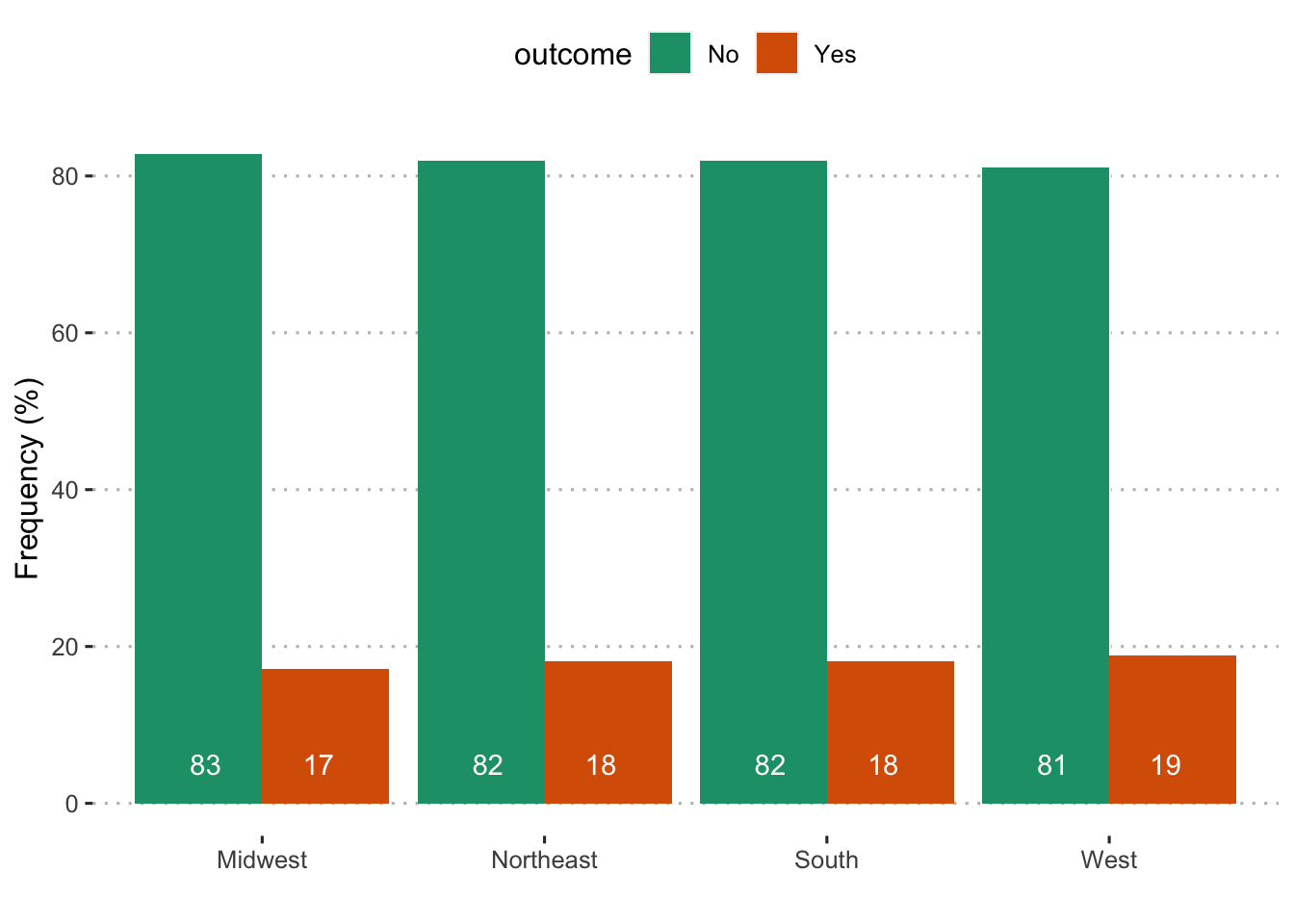
##
## Pearson's Chi-squared test
##
## data: scored$plan_cc_dontknow and scored$region
## X-squared = 1.1743, df = 3, p-value = 0.7592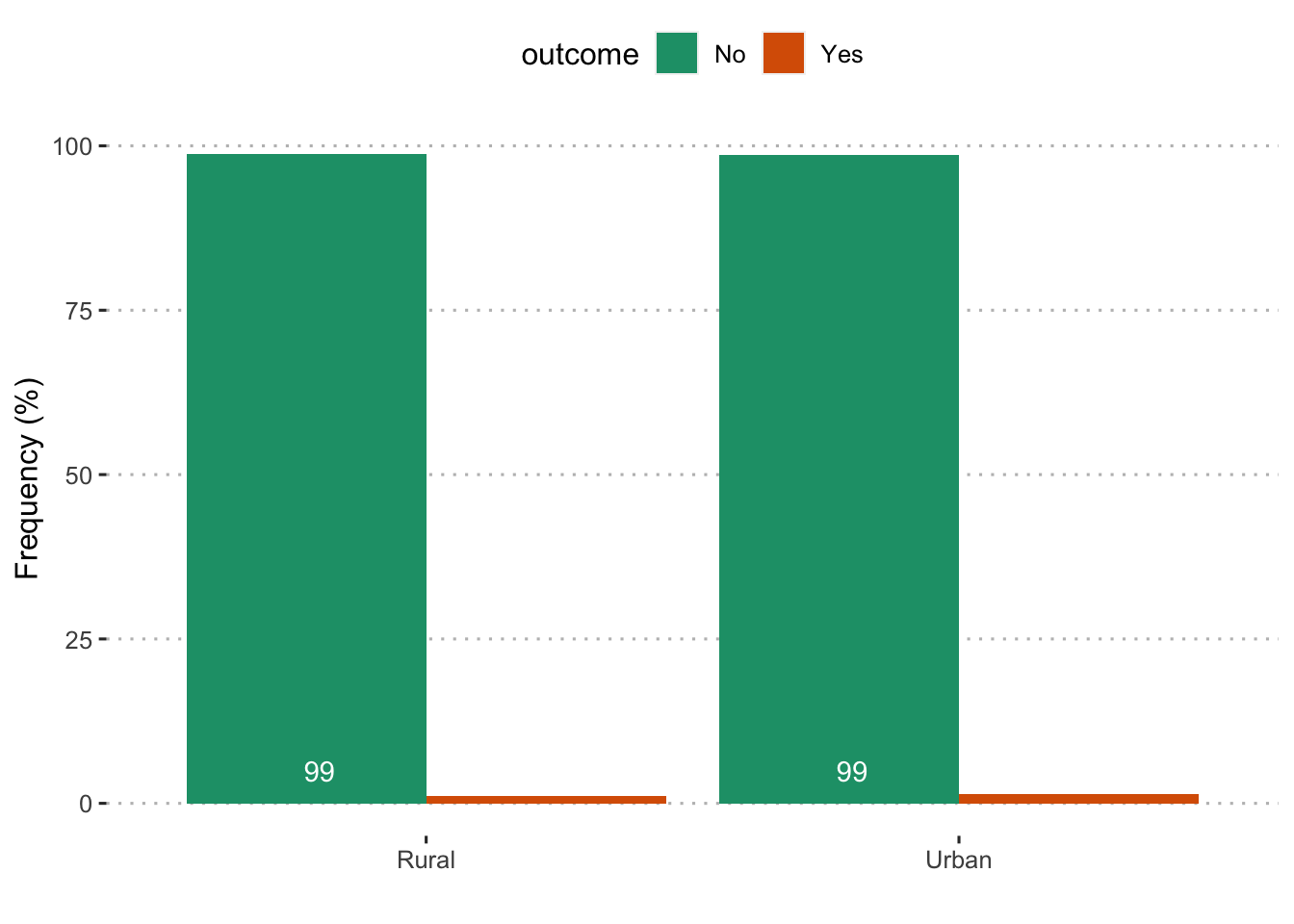
##
## Pearson's Chi-squared test with Yates' continuity correction
##
## data: scored$lostCC and scored$rural
## X-squared = 0.56361, df = 1, p-value = 0.4528Type of care for the next month
Center-based
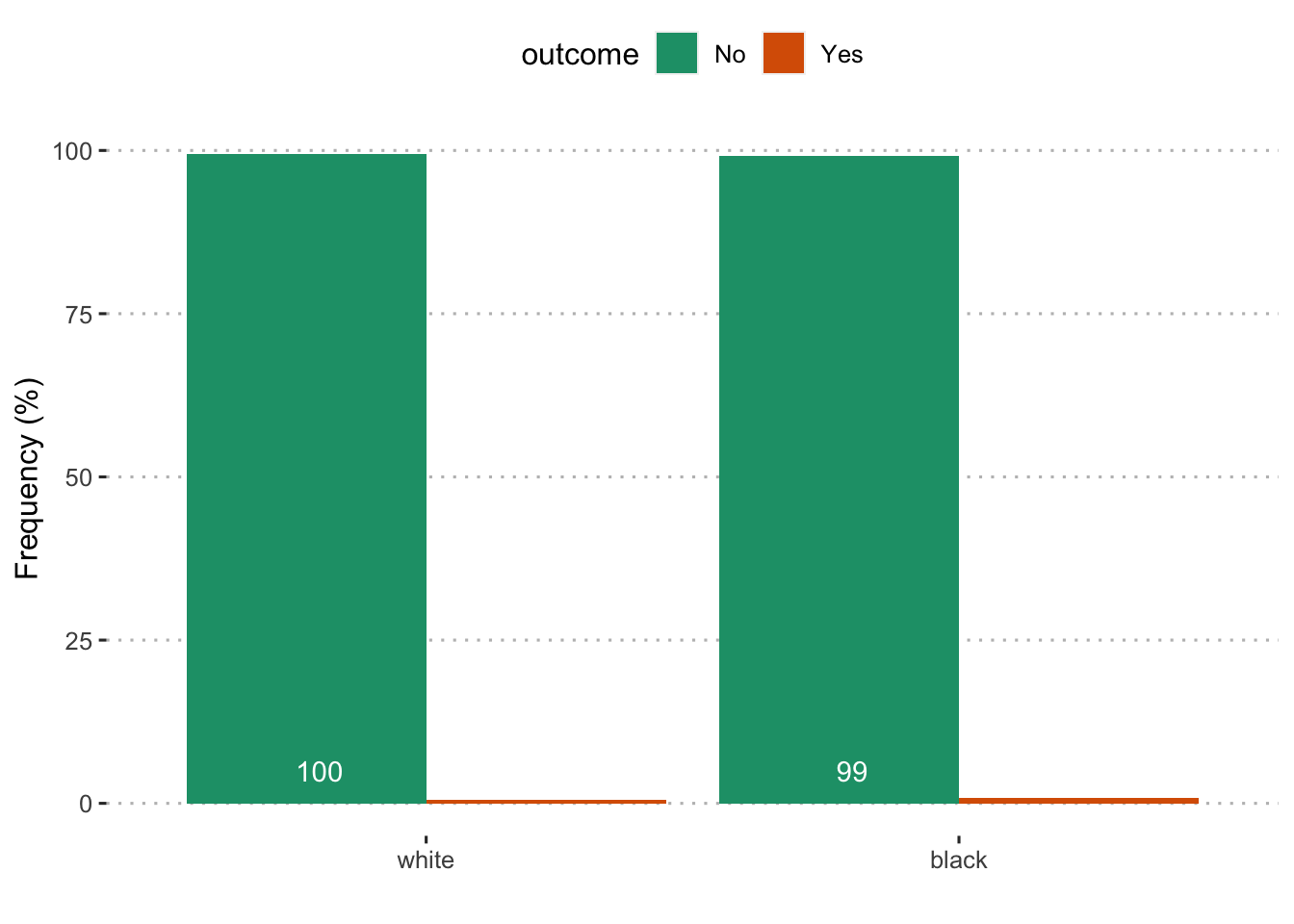
##
## Pearson's Chi-squared test with Yates' continuity correction
##
## data: scored$expect_center and scored$compare1
## X-squared = 0.73597, df = 1, p-value = 0.391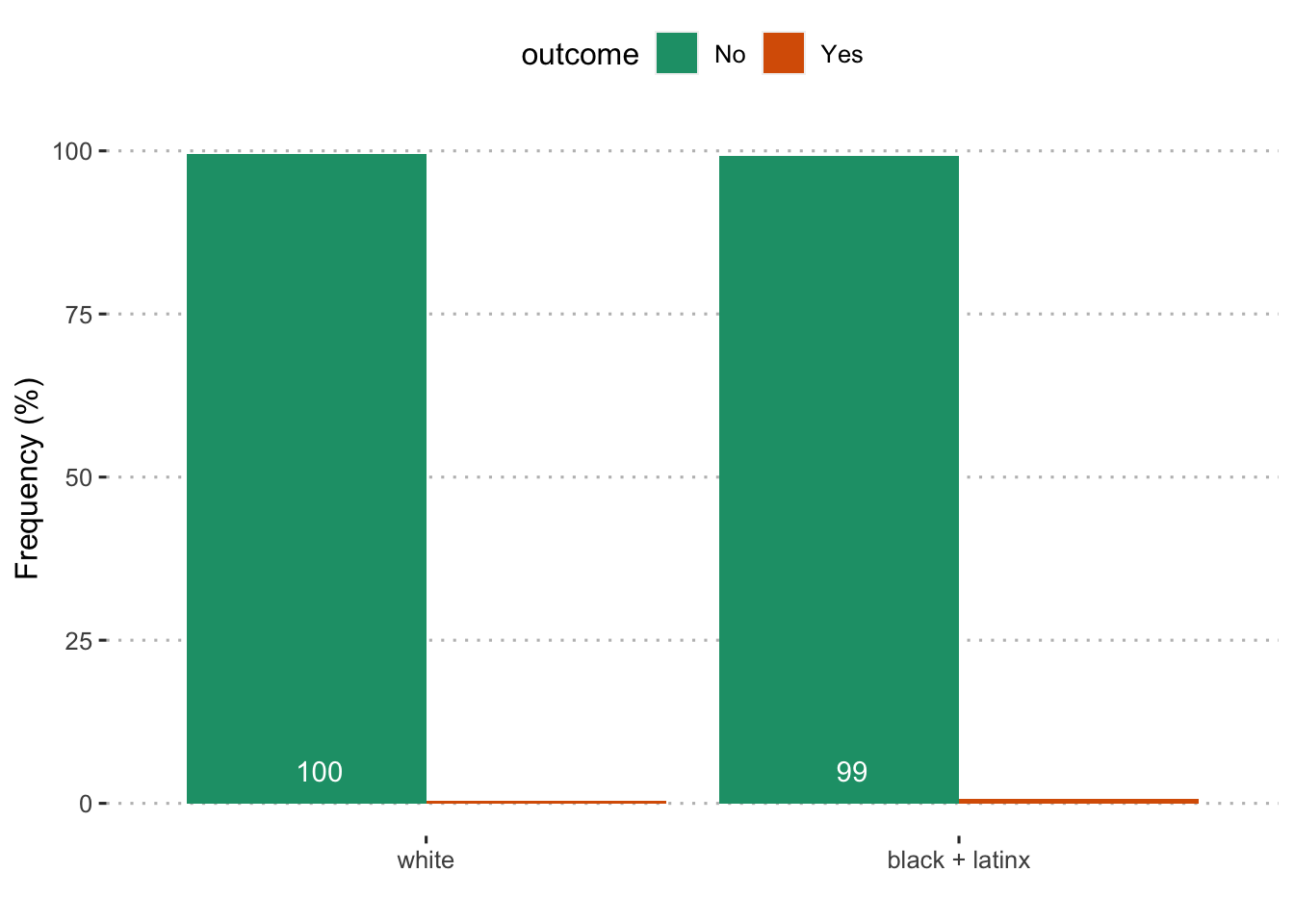
##
## Pearson's Chi-squared test with Yates' continuity correction
##
## data: scored$expect_center and scored$compare2
## X-squared = 2.6121, df = 1, p-value = 0.106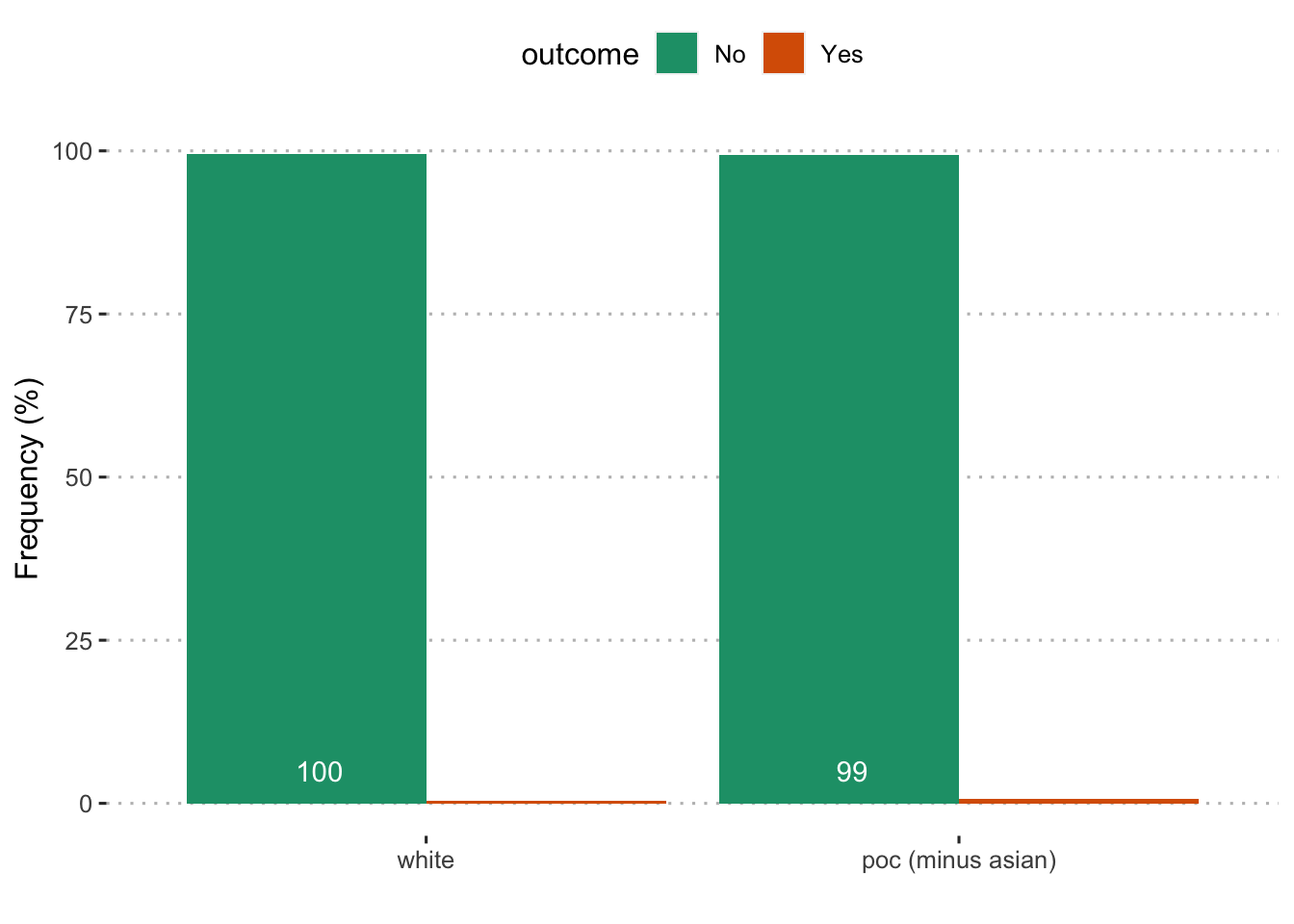
##
## Pearson's Chi-squared test with Yates' continuity correction
##
## data: scored$expect_center and scored$compare3
## X-squared = 1.2627, df = 1, p-value = 0.2611
##
## Pearson's Chi-squared test with Yates' continuity correction
##
## data: scored$expect_center and scored$compare4
## X-squared = 0.93472, df = 1, p-value = 0.3336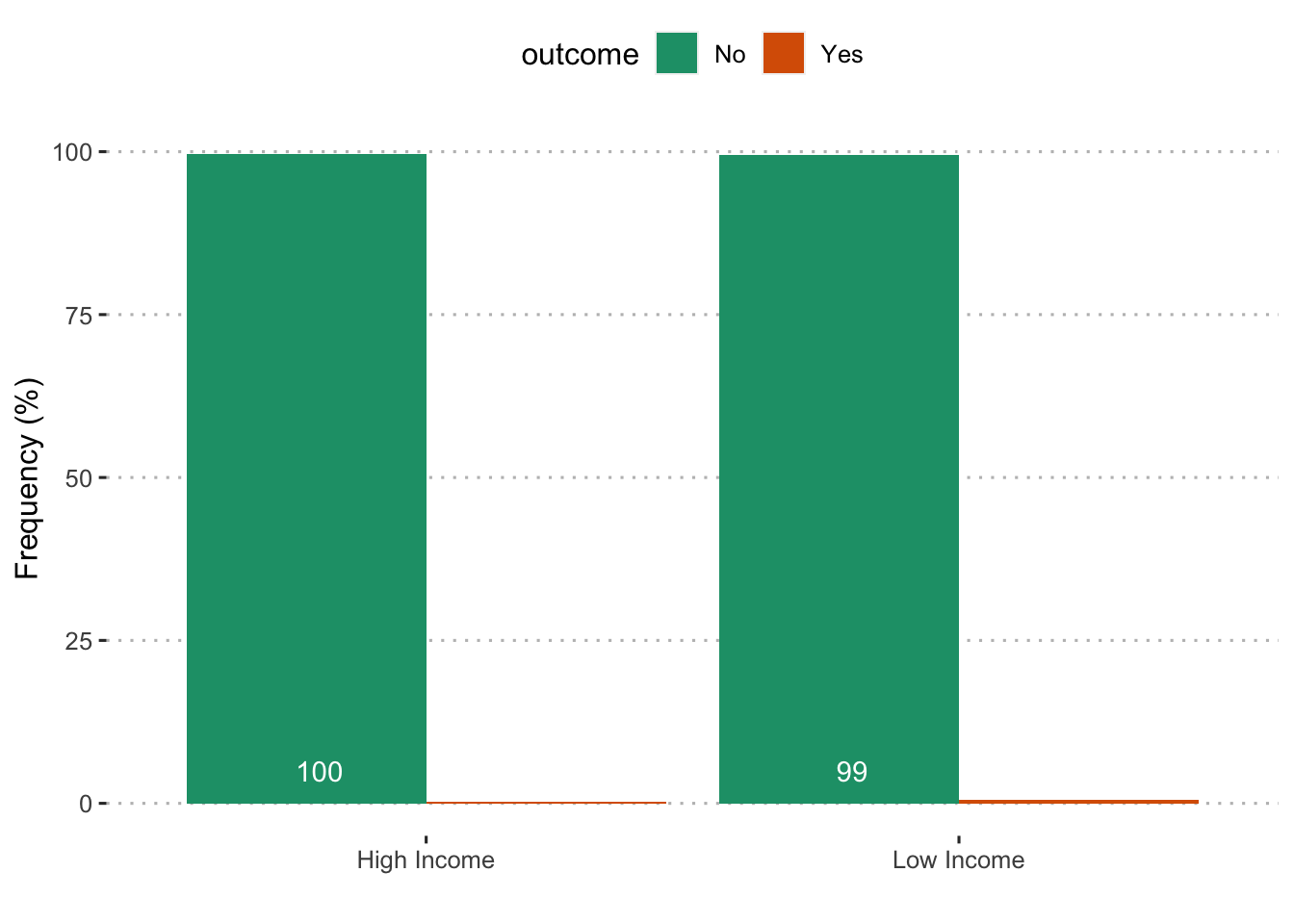
##
## Pearson's Chi-squared test with Yates' continuity correction
##
## data: scored$expect_center and scored$poverty150
## X-squared = 1.6588, df = 1, p-value = 0.1978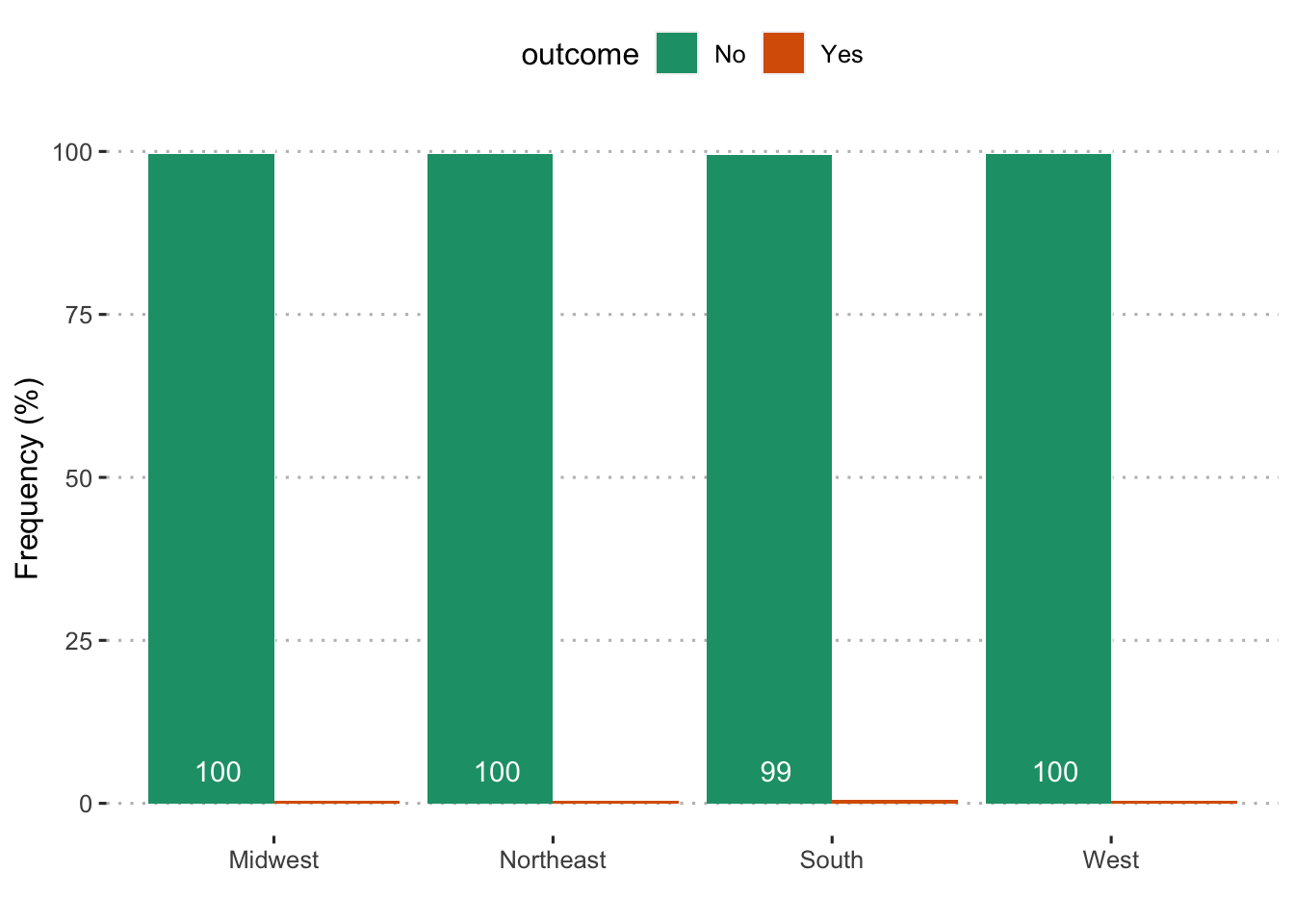
##
## Pearson's Chi-squared test
##
## data: scored$expect_center and scored$region
## X-squared = 2.4723, df = 3, p-value = 0.4803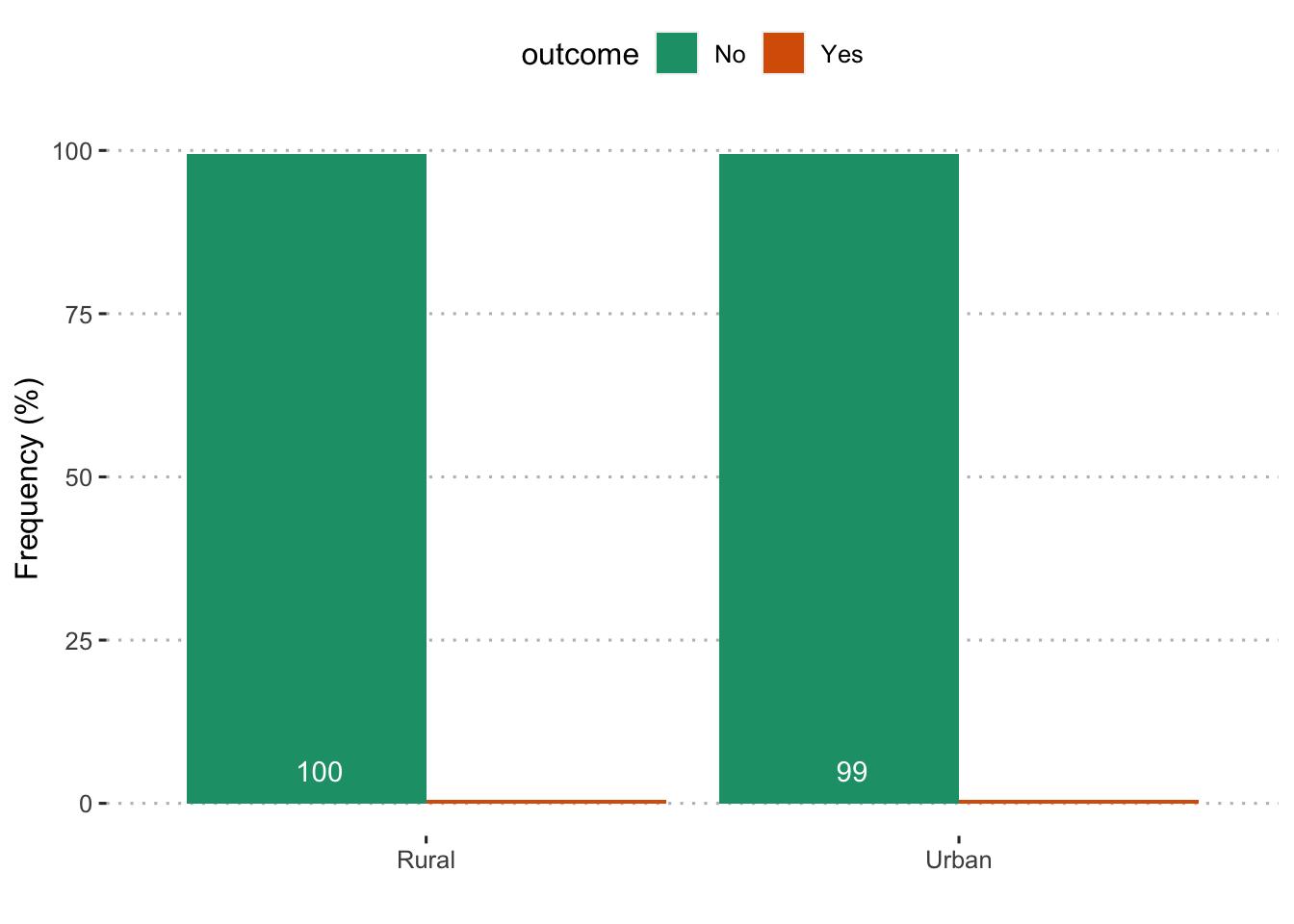
##
## Pearson's Chi-squared test with Yates' continuity correction
##
## data: scored$expect_center and scored$rural
## X-squared = 0.013, df = 1, p-value = 0.9092Care by relatives

##
## Pearson's Chi-squared test with Yates' continuity correction
##
## data: scored$expect_relative and scored$compare1
## X-squared = 0.028474, df = 1, p-value = 0.866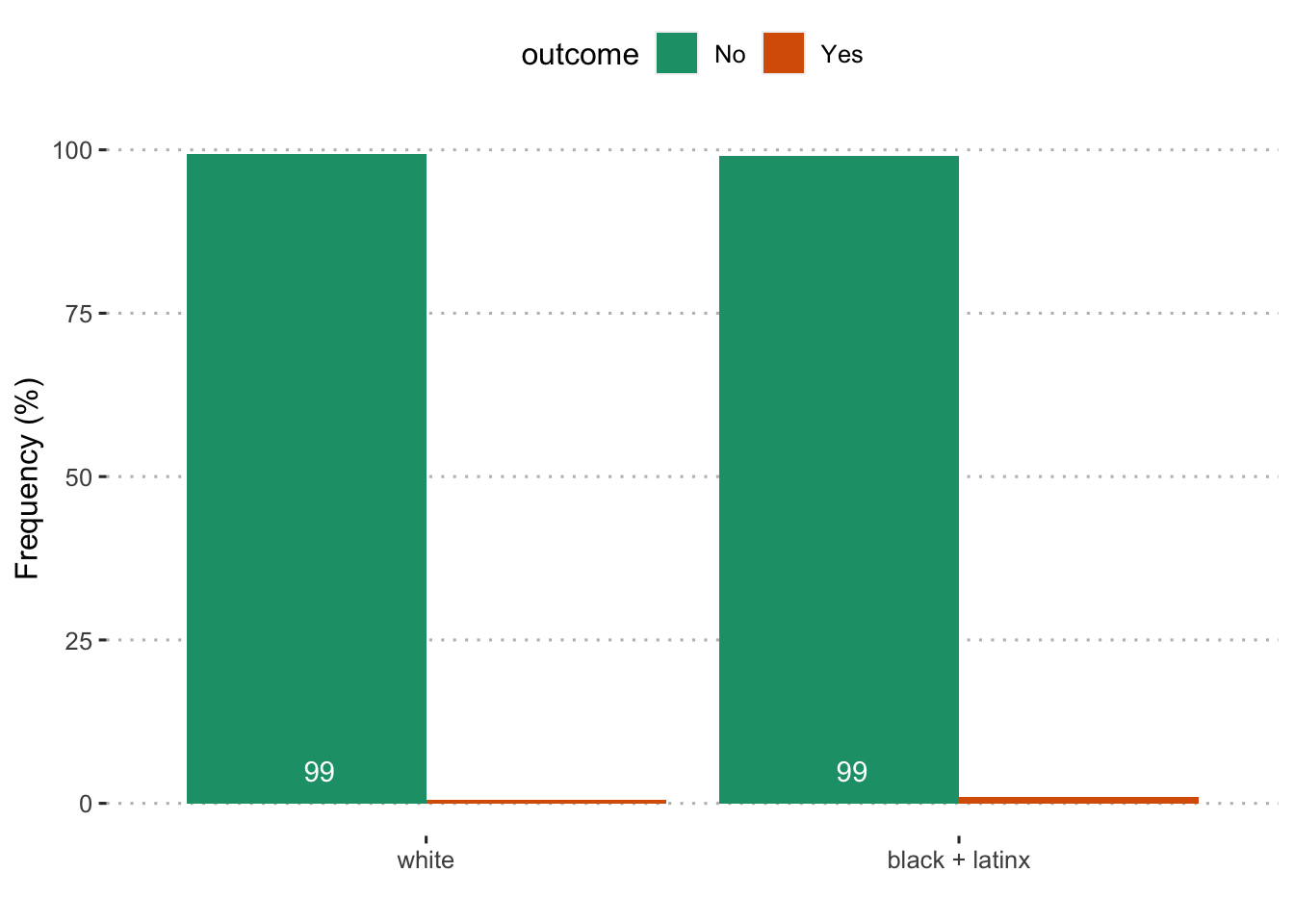
##
## Pearson's Chi-squared test with Yates' continuity correction
##
## data: scored$expect_relative and scored$compare2
## X-squared = 2.3755, df = 1, p-value = 0.1233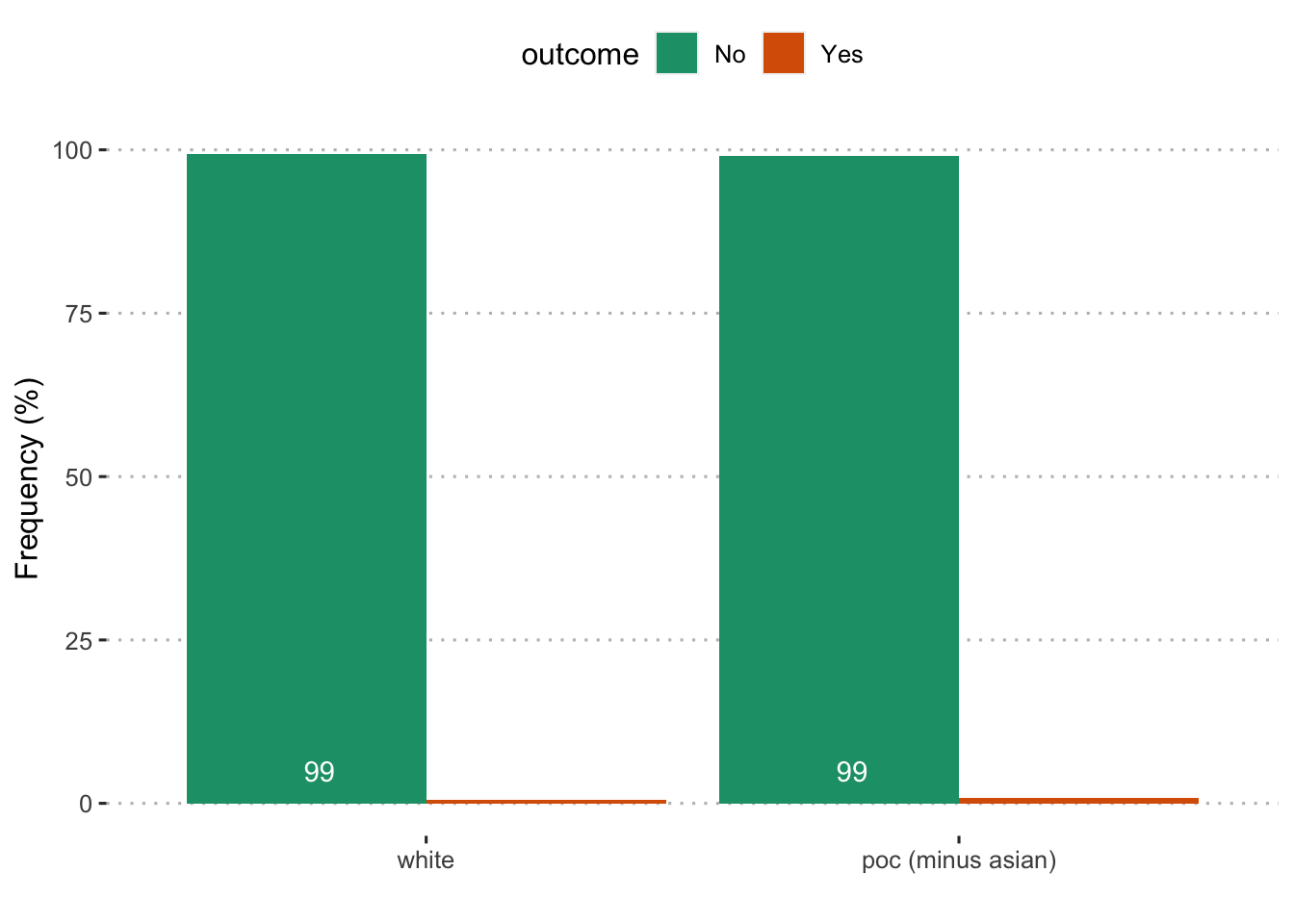
##
## Pearson's Chi-squared test with Yates' continuity correction
##
## data: scored$expect_relative and scored$compare3
## X-squared = 2.4451, df = 1, p-value = 0.1179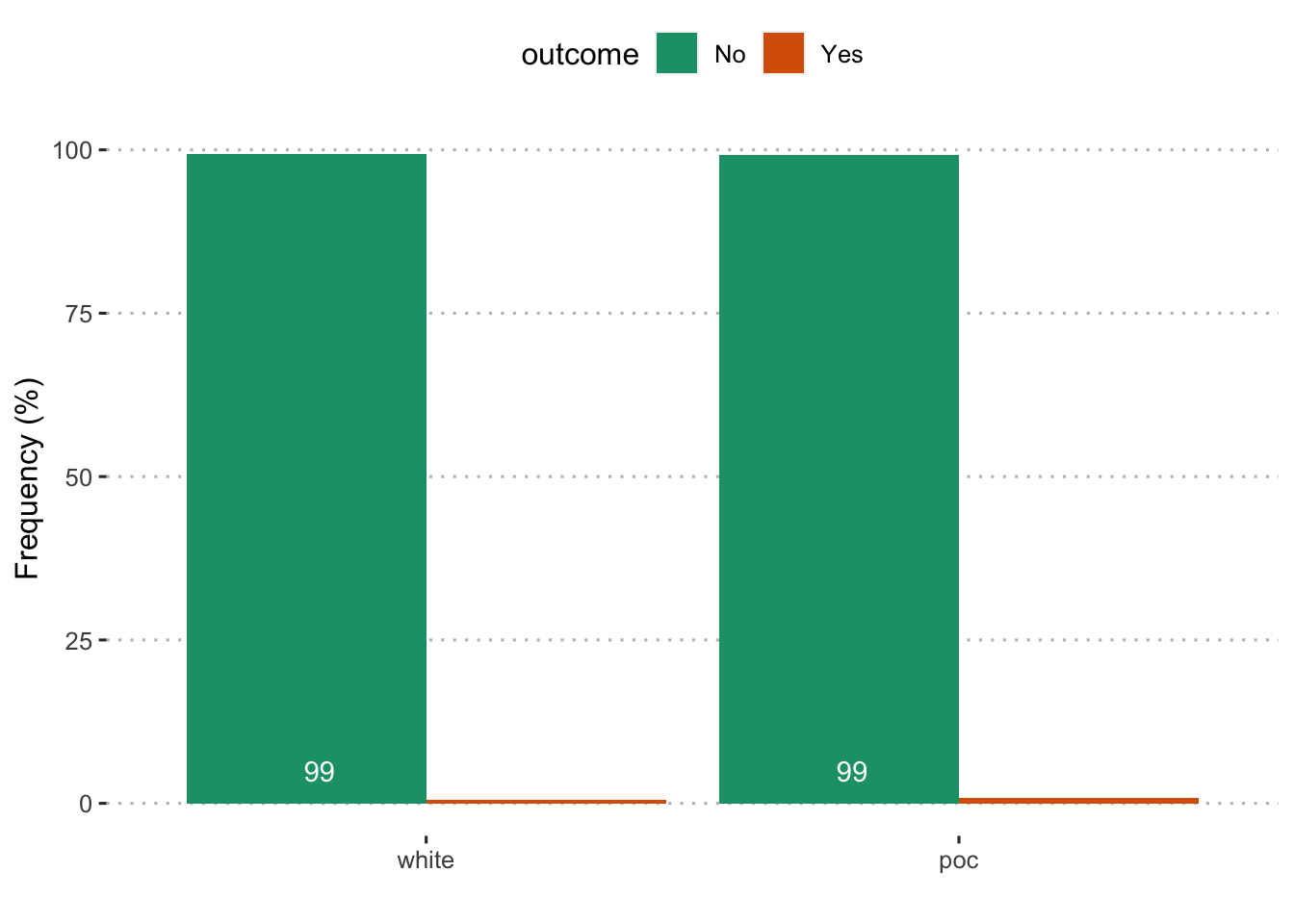
##
## Pearson's Chi-squared test with Yates' continuity correction
##
## data: scored$expect_relative and scored$compare4
## X-squared = 1.6884, df = 1, p-value = 0.1938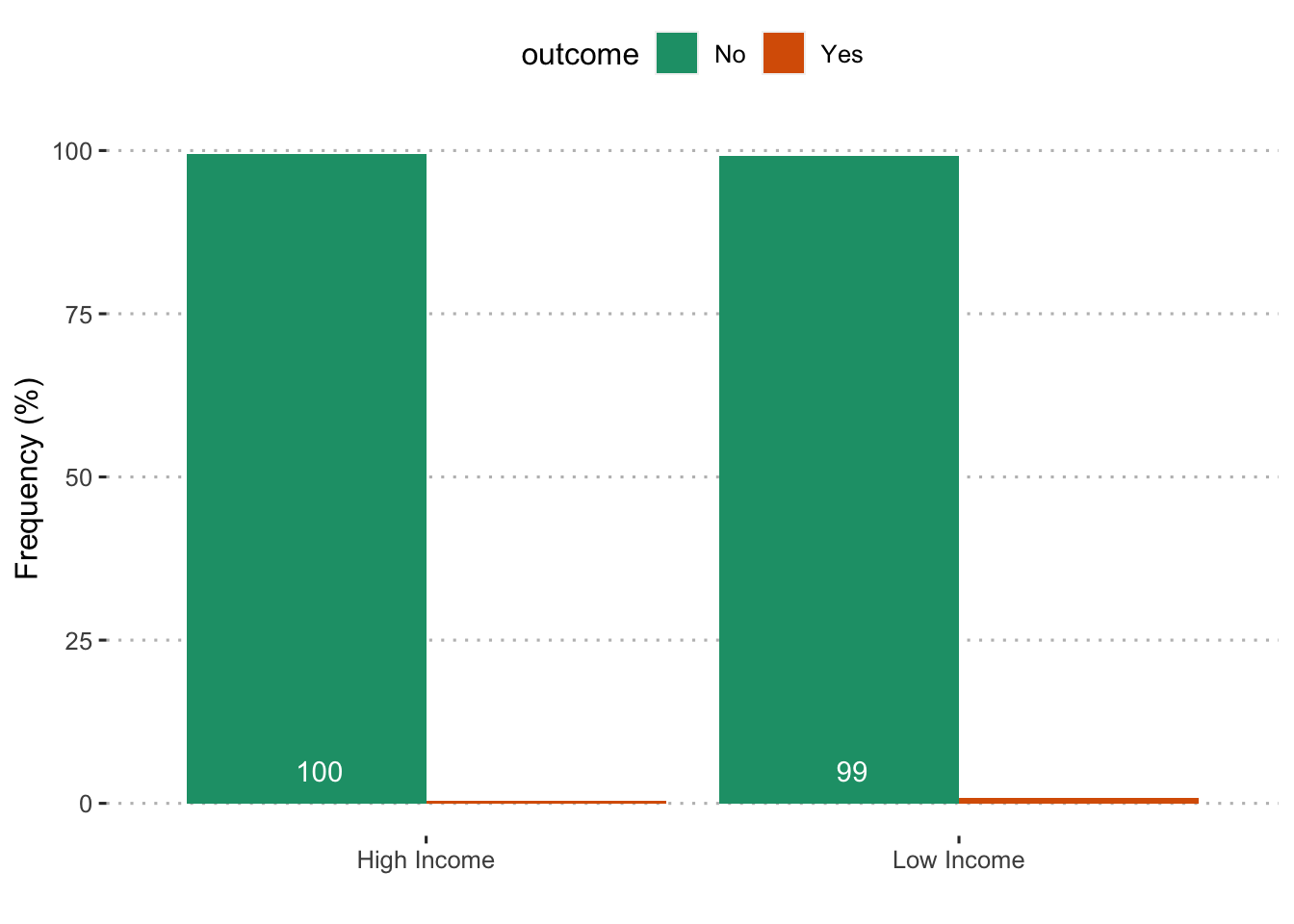
##
## Pearson's Chi-squared test with Yates' continuity correction
##
## data: scored$expect_relative and scored$poverty150
## X-squared = 3.1149, df = 1, p-value = 0.07758
##
## Pearson's Chi-squared test
##
## data: scored$expect_relative and scored$region
## X-squared = 0.51307, df = 3, p-value = 0.916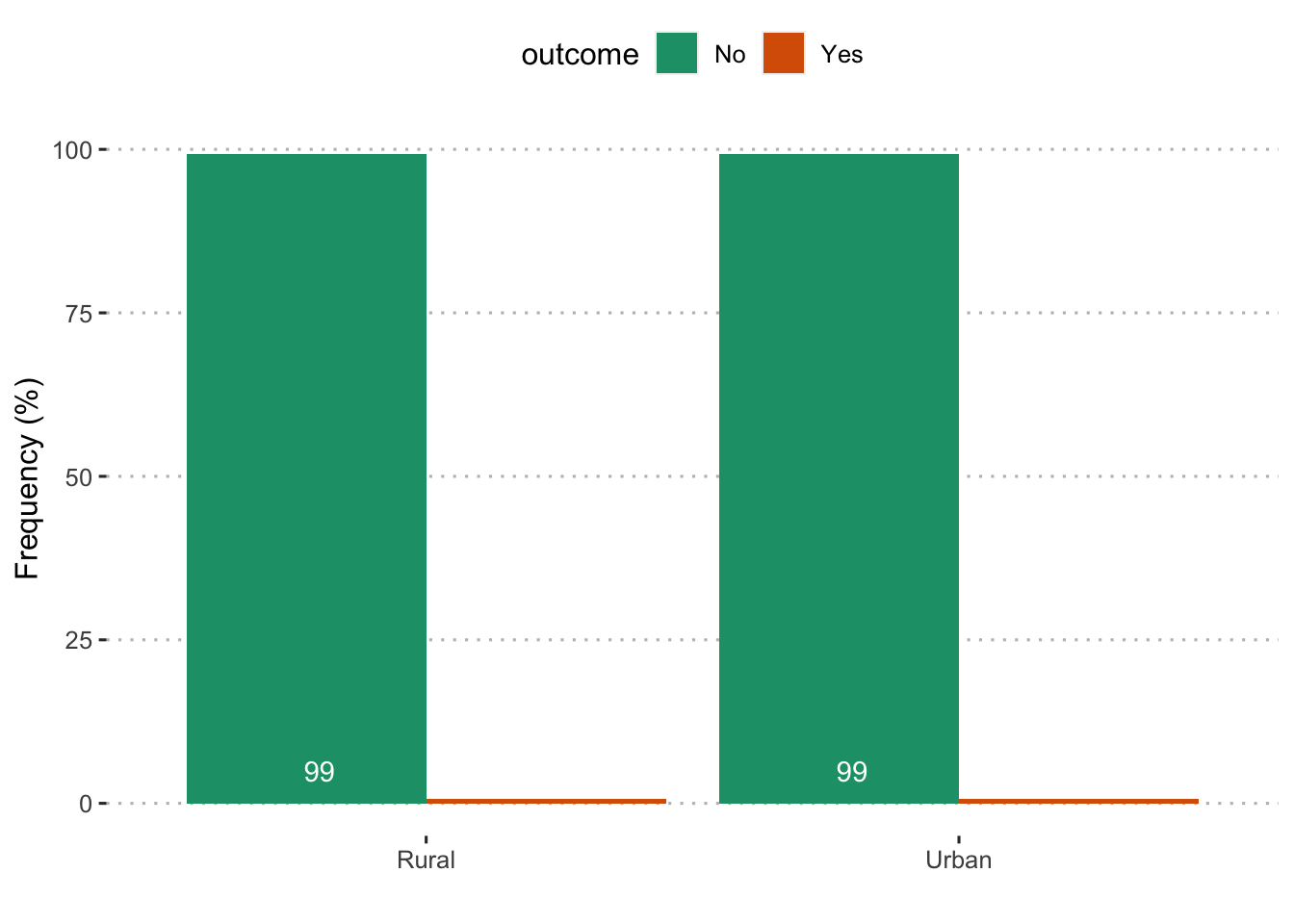
##
## Pearson's Chi-squared test with Yates' continuity correction
##
## data: scored$expect_relative and scored$rural
## X-squared = 0.005328, df = 1, p-value = 0.9418Professional (non-centerbased)
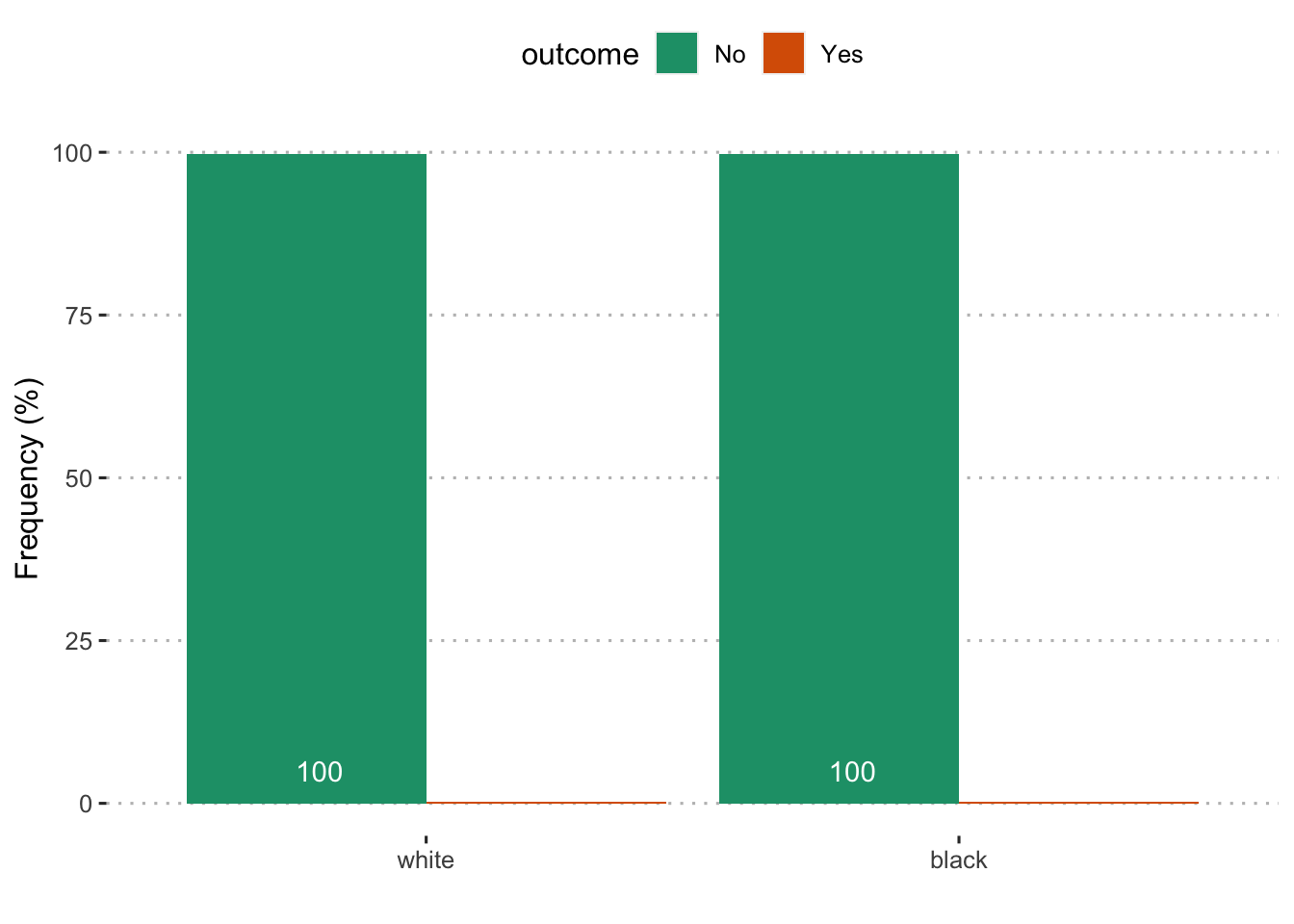
##
## Pearson's Chi-squared test with Yates' continuity correction
##
## data: scored$expect_pro and scored$compare1
## X-squared = 3.448e-27, df = 1, p-value = 1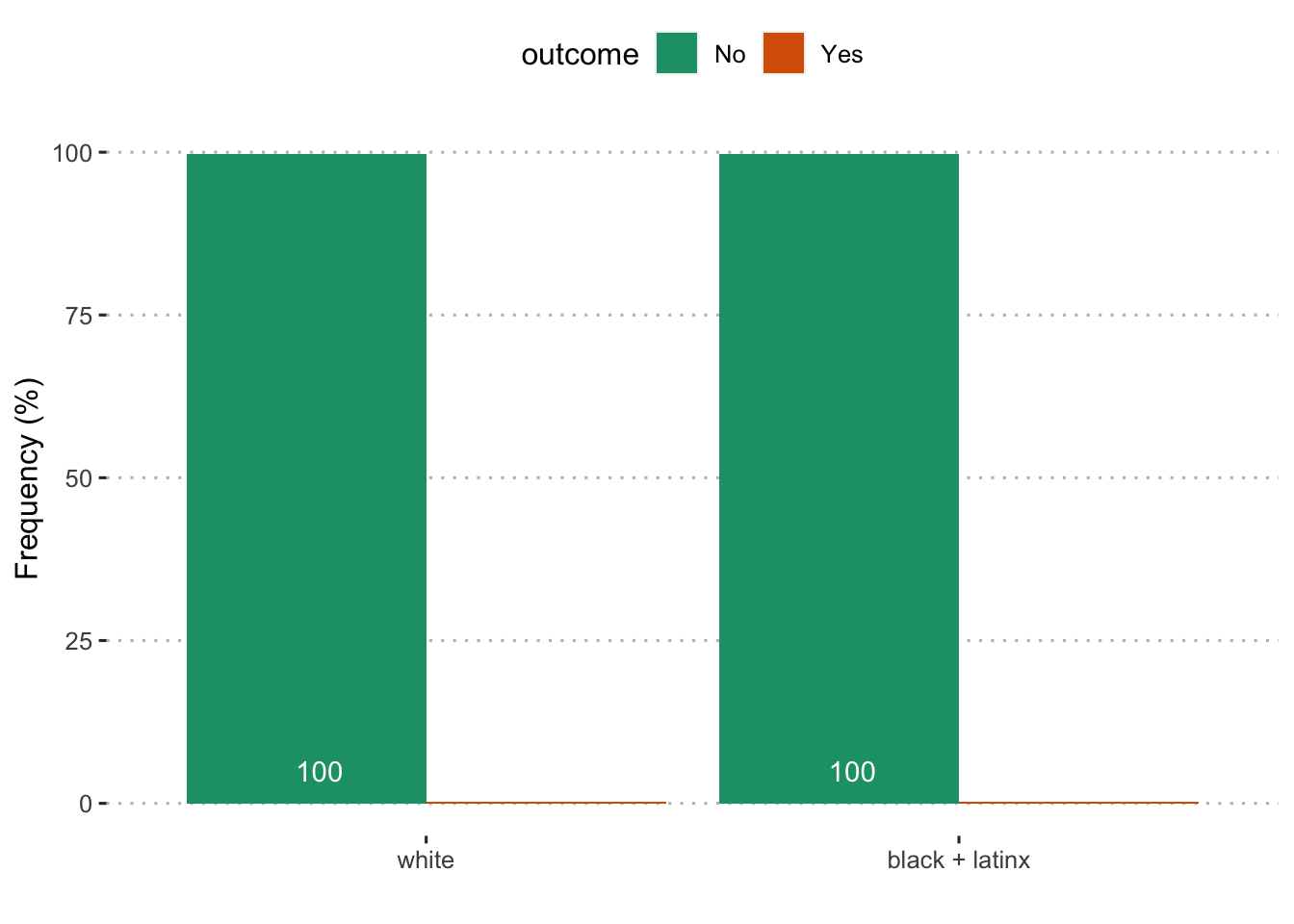
##
## Pearson's Chi-squared test with Yates' continuity correction
##
## data: scored$expect_pro and scored$compare2
## X-squared = 0.091306, df = 1, p-value = 0.7625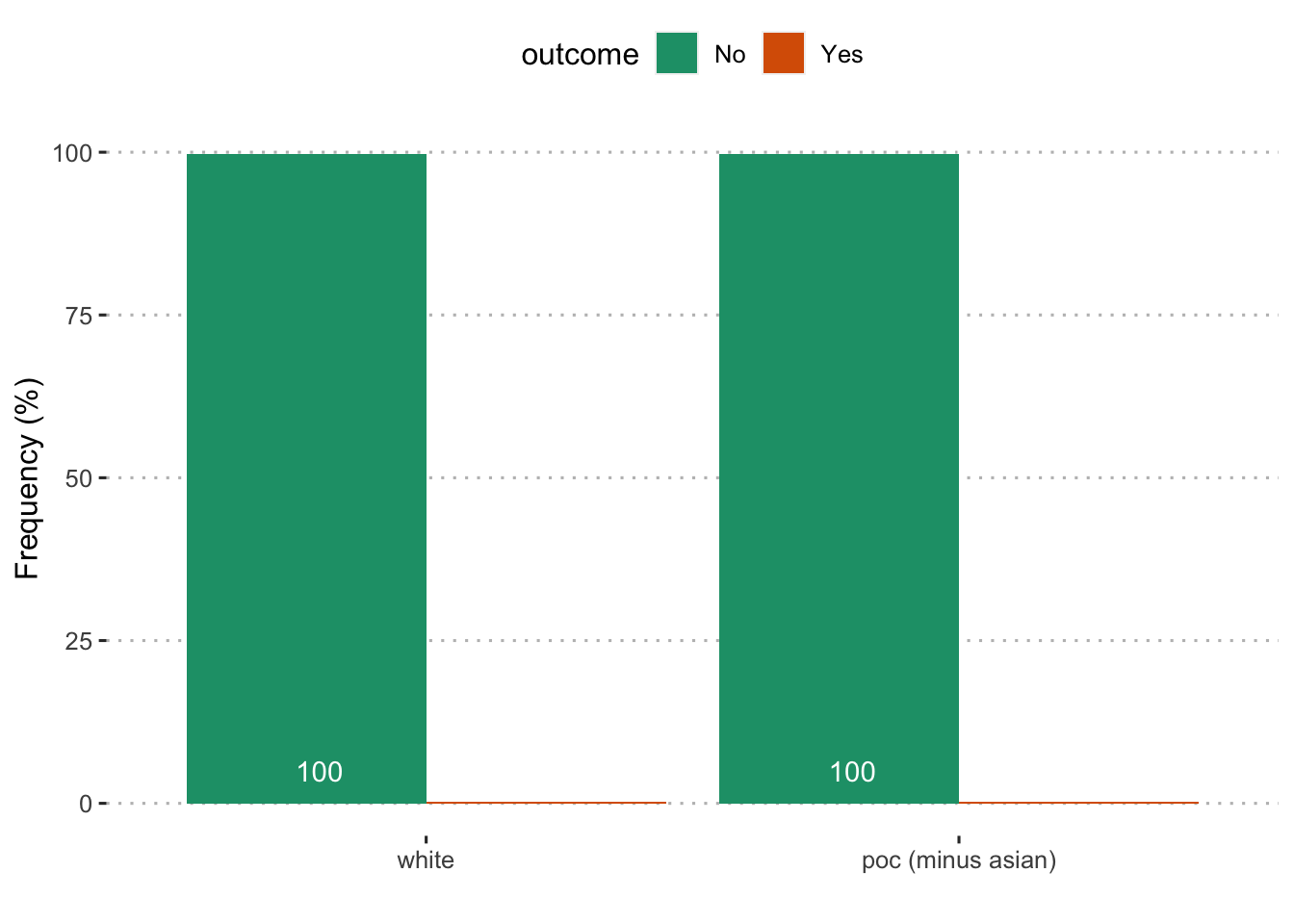
##
## Pearson's Chi-squared test with Yates' continuity correction
##
## data: scored$expect_pro and scored$compare3
## X-squared = 2.0345e-26, df = 1, p-value = 1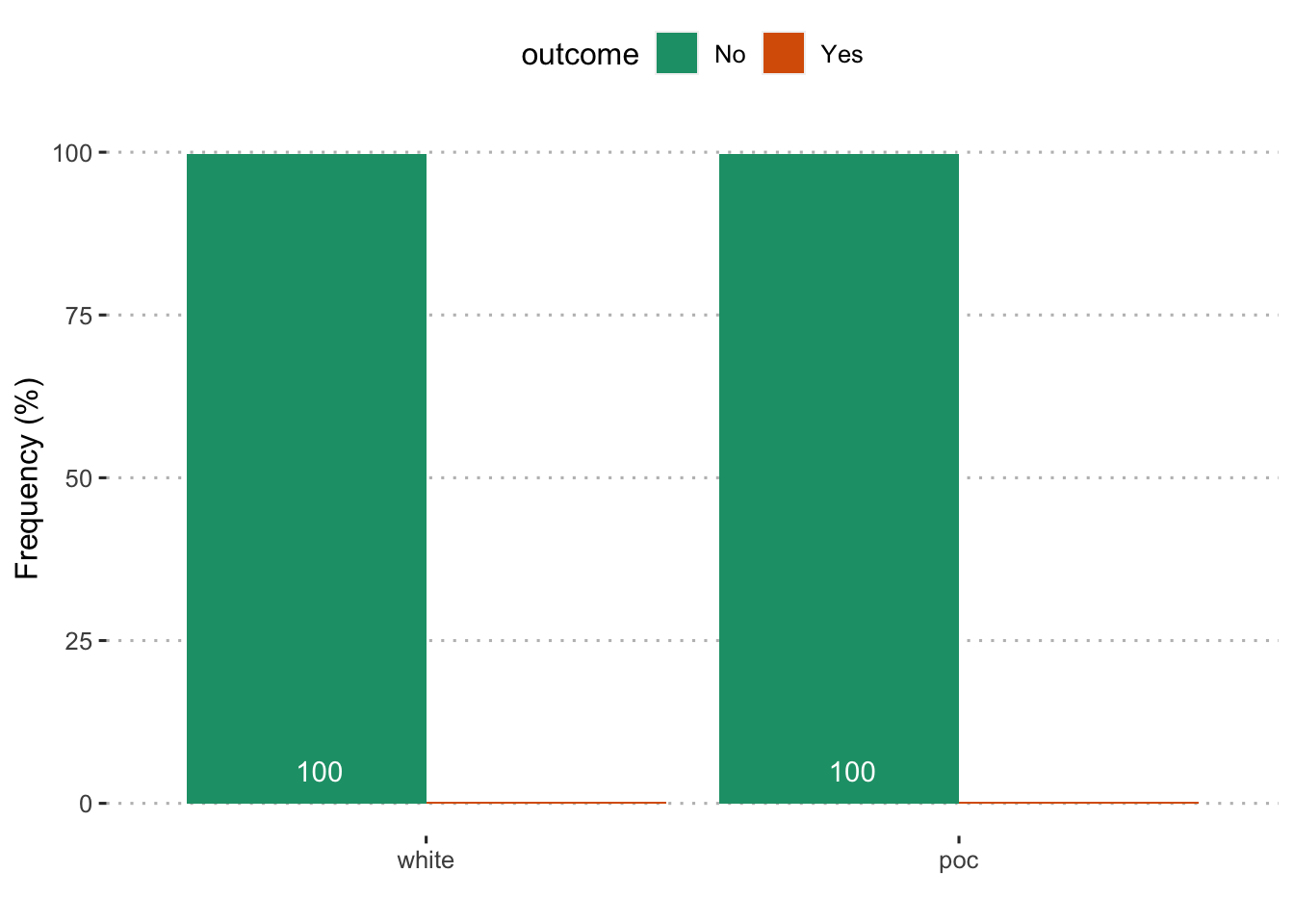
##
## Pearson's Chi-squared test with Yates' continuity correction
##
## data: scored$expect_pro and scored$compare4
## X-squared = 2.7225e-27, df = 1, p-value = 1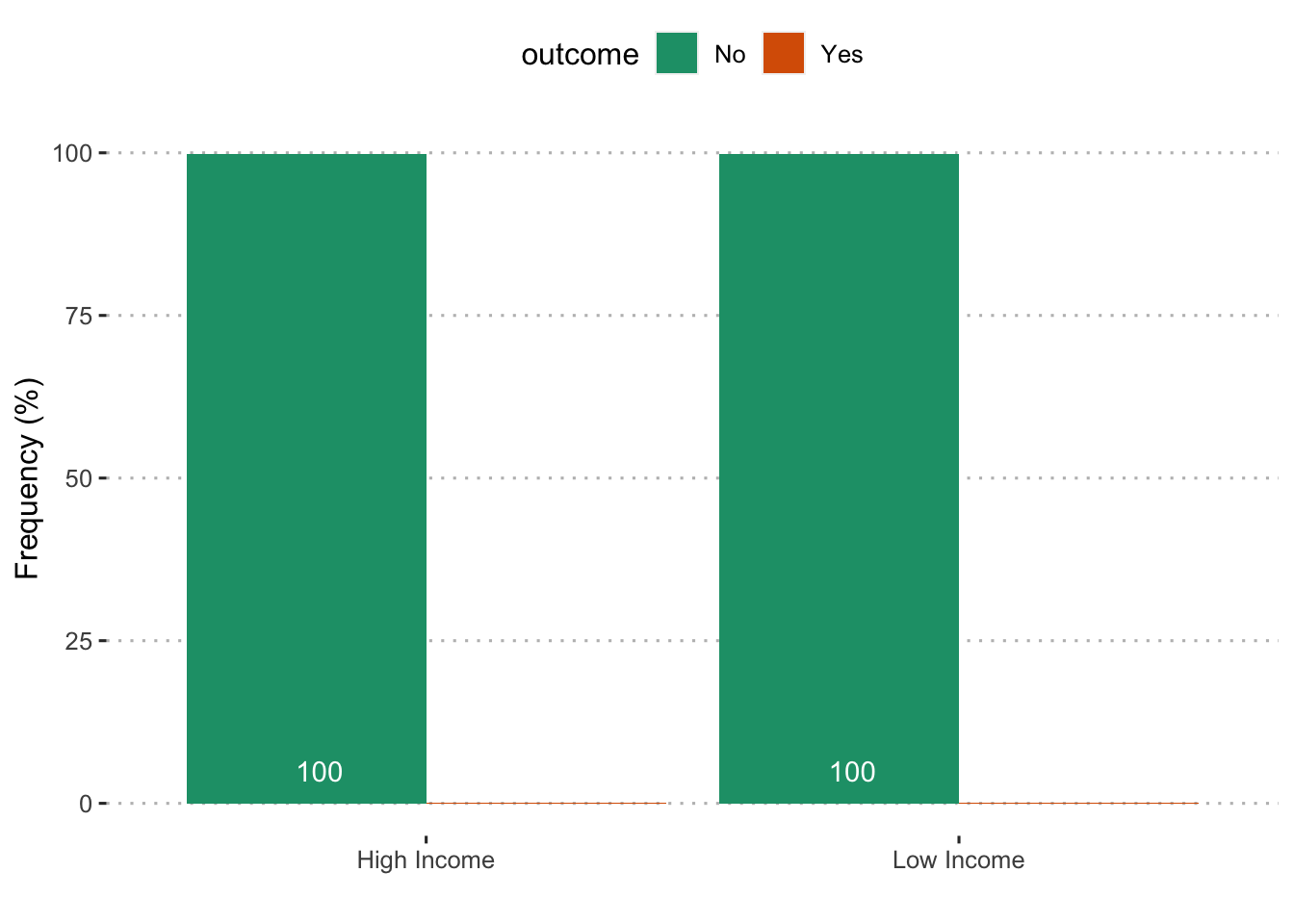
##
## Pearson's Chi-squared test with Yates' continuity correction
##
## data: scored$expect_pro and scored$poverty150
## X-squared = 6.1753e-27, df = 1, p-value = 1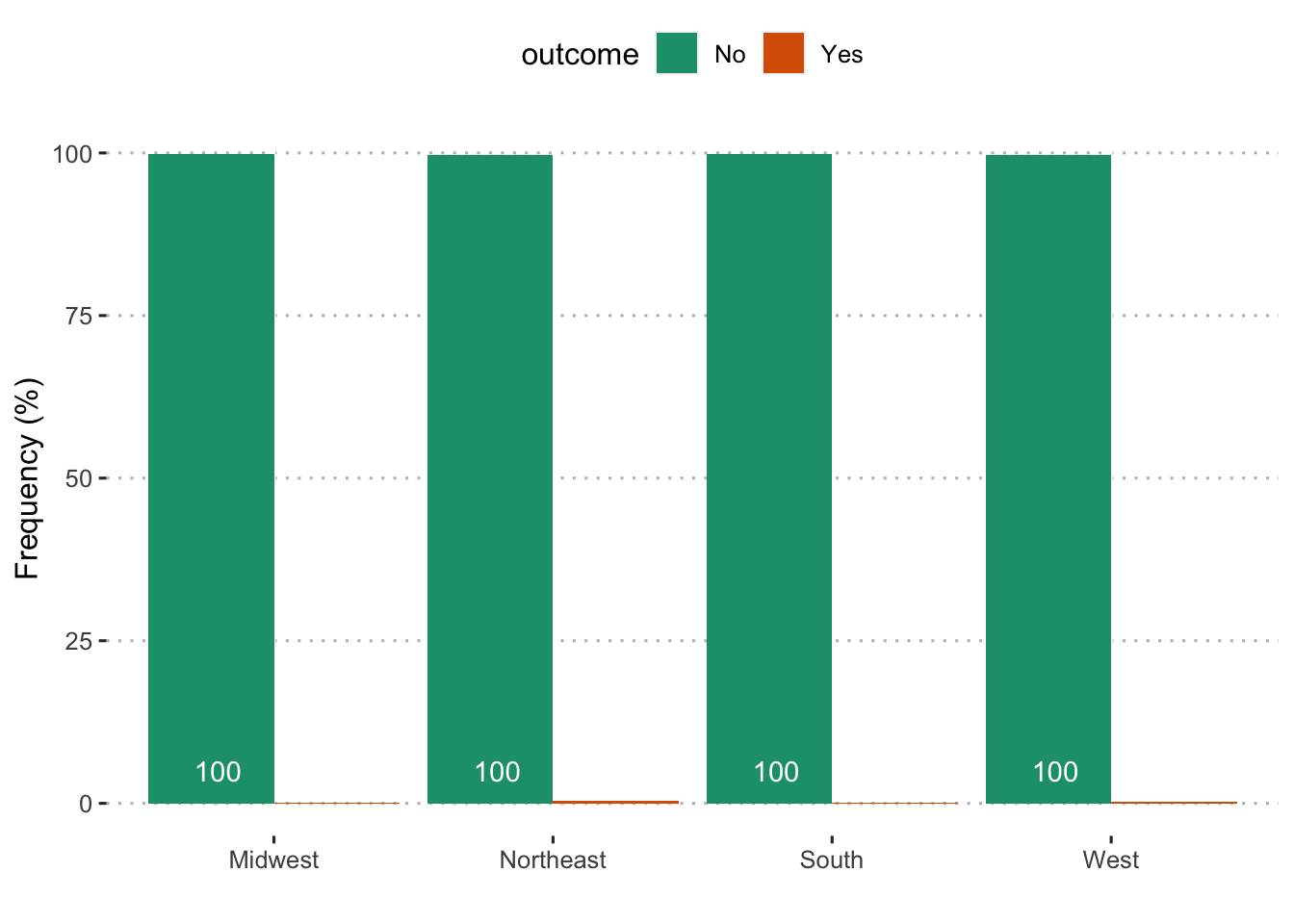
##
## Pearson's Chi-squared test
##
## data: scored$expect_pro and scored$region
## X-squared = 3.631, df = 3, p-value = 0.3042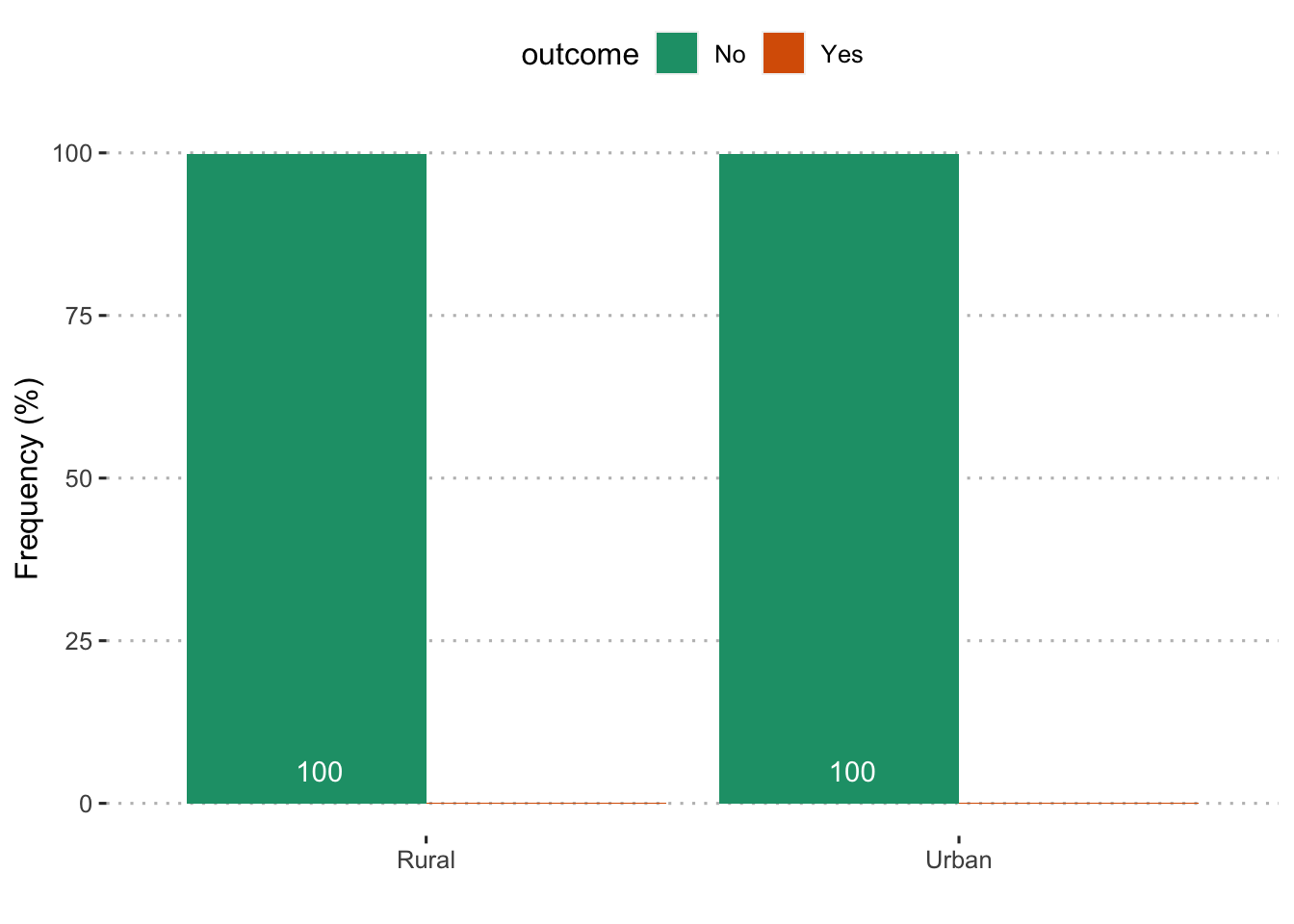
##
## Pearson's Chi-squared test with Yates' continuity correction
##
## data: scored$expect_pro and scored$rural
## X-squared = 0.029907, df = 1, p-value = 0.8627